agricultural Revolution
description: transition from hunting and gathering to settled agriculture
245 results
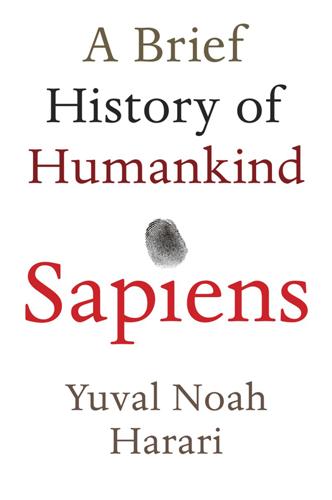
Sapiens: A Brief History of Humankind
by
Yuval Noah Harari
Published 1 Jan 2011
As soon as this happened, they cheerfully abandoned the gruelling, dangerous, and often spartan life of hunter-gatherers, settling down to enjoy the pleasant, satiated life of farmers. Map 2. Locations and dates of agricultural revolutions. The data is contentious, and the map is constantly being redrawn to incorporate the latest archaeological discoveries.1 That tale is a fantasy. There is no evidence that people became more intelligent with time. Foragers knew the secrets of nature long before the Agricultural Revolution, since their survival depended on an intimate knowledge of the animals they hunted and the plants they gathered. Rather than heralding a new era of easy living, the Agricultural Revolution left farmers with lives generally more difficult and less satisfying than those of foragers.
…
At the time of the Cognitive Revolution, the planet was home to about 200 genera of large terrestrial mammals weighing over fifty kilograms. At the time of the Agricultural Revolution, only about a hundred remained. Homo sapiens drove to extinction about half of the planet’s big beasts long before humans invented the wheel, writing, or iron tools. This ecological tragedy was restaged in miniature countless times after the Agricultural Revolution. The archaeological record of island after island tells the same sad story. The tragedy opens with a scene showing a rich and varied population of large animals, without any trace of humans.
…
Unlike their terrestrial counterparts, the large sea animals suffered relatively little from the Cognitive and Agricultural Revolutions. But many of them are on the brink of extinction now as a result of industrial pollution and human overuse of oceanic resources. If things continue at the present pace, it is likely that whales, sharks, tuna and dolphins will follow the diprotodons, ground sloths and mammoths to oblivion. Among all the world’s large creatures, the only survivors of the human flood will be humans themselves, and the farmyard animals that serve as galley slaves in Noah’s Ark. Part Two The Agricultural Revolution 11. A wall painting from an Egyptian grave, dated to about 3,500 years ago, depicting typical agricultural scenes. 5 History’s Biggest Fraud FOR 2.5 MILLION YEARS HUMANS FED themselves by gathering plants and hunting animals that lived and bred without their intervention.

The Autonomous Revolution: Reclaiming the Future We’ve Sold to Machines
by
William Davidow
and
Michael Malone
Published 18 Feb 2020
CHAPTER TWO A BRIEF HISTORY OF SOCIAL PHASE CHANGES Why This Time Things Are Different HUMAN PROGRESS is the product of a host of structural transformations that have culminated in a few big societal phase changes. Once set into motion, those societal phase changes are continual and overlapping. The Agricultural Revolution has been going on for twelve thousand years, the Industrial Revolution for more than two hundred. The Autonomous Revolution has only just begun. This chapter will take a closer look at the dynamics of societal phase change, focusing especially on the onset of the Agricultural Revolution, the Renaissance, and three different epochs of the Industrial Revolution. It is a mistake to assume that structural transformations are synonymous with technological change.
…
PAST PATTERNS One is always tempted to declare the most recent wave of new technologies, from atomic power and genomic medicine to powered flight and artificial intelligence, as the most important ever experienced by humankind. But an objective observer would also stand in awe of the technologies that gave rise to and propelled the Agricultural Revolution. The structural transformations that led to the Agricultural Revolution began to accumulate in the Levant around 10,000 BCE, when people first began planting cereals and legumes, and spread throughout the Fertile Crescent over the next two thousand years. Agriculture was also discovered independently in other parts of the world—in China in 6000 BCE, in South America between 7000 and 8000 BCE, in sub-Saharan Africa around 5000 BCE, and so on.
…
The heavy plow was invented as well, and improved versions of the harness made it possible for draft animals to pull them.12 The Second Agricultural Revolution coincided roughly with the beginning of the Industrial Revolution, around the 1700s. It was powered by new crops like corn and potatoes from the New World; new forms of organization, such as large single-owner holdings; mechanical equipment that replaced muscle power; and, later, railroads, which transported harvests.13 The so-called green revolution that began in the middle of the twentieth century (also called the Third Agricultural Revolution) used genetic science, pesticides, and new methods of cultivation to vastly increase yields.
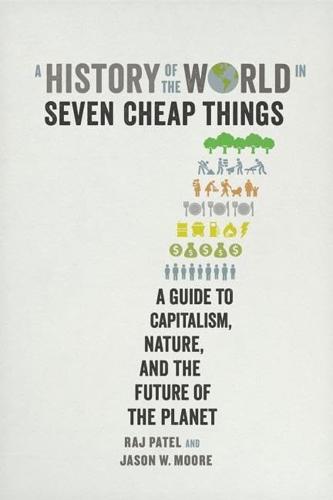
A History of the World in Seven Cheap Things: A Guide to Capitalism, Nature, and the Future of the Planet
by
Raj Patel
and
Jason W. Moore
Published 16 Oct 2017
To be sure, the gamut of human food systems extends well beyond the “plants of civilizations,” to pastoralism, swidden agriculture, fisher communities, and nomadism. 9. Patel and McMichael 2009; Bruins and Bu 2006. 10. Maddison 2007, 43. 11. Excellent surveys of the English agricultural revolution include Thirsk 1987 and Overton 1996. 12. Calculated from G. Clark 2002. England wasn’t home to the first modern agricultural revolution—the Dutch were first, and the English learned capitalist agriculture from them. But England’s more expansive demography and size, coupled with sharply rising coal use, make its agricultural revolution a useful point of discussion. 13. Ormrod 2003, 213–18; calculations based on R. Davis 1954, 302. 14. Ormrod 2003, 214. 15.
…
Index Aboriginal Australians, 99, 200 accumulation: as capitalism’s driving force, 38, 87–88; and cheap food, 144; financial engineering and, 88–89; and remaking of nature, 26; wars and, 69 Afonso de Albuquerque, 17 Africa: cultural interventions in, 231n97; Europe, Supported by Africa and America (Blake), 112 fig. 1; extinction in, 213n7; Green Revolution, 150, 157–58 Africans: in domain of Nature, 109; expulsions of, 39; New World production system and, 46; social death for, 30; transatlantic enslavement of women, 129–130. See also slaves/slavery Agricola, Georgius, 73 agricultural revolutions: climate change and, 159–160; in Europe, 232n12; Green Revolution, 149–152; inorganic fertilizer, 147, 172–74 agricultural sector: agricultural revolutions, 103; of Brazil, 143; of British empire, 141–43; communal ownership, 220n51; of Europe, 142–43; of France, 142–43; of Mexico, 142; of Poland, 142; and productivity, 48; swidden agriculture, 231n8; work and, 103.
…
See also deforestation Cheap Work: overview, 91–95; global factories/global farms, 101–7; temporal ecology of wage labor, 95–101; worker control, 107–10 China, xiv–xv map 1; 15th century fleet, 215n41; agricultural revolutions, 151; animal food industry, 156; capitalism and, 220n50; charcoal industry in, 237n93; deforestation in, 164; food consumption, 33; food price changes, 154 fig. 5; forest management in, 162, 164; global power/production shifts and, 46; global silver trade and, 85; Great Chines Famine, 108; Little Ice Age, 71; nationalism, 238n20; opium trade, 146–47; silver shortage, 71; supremacism in, 41; worker control in, 108; workplaces in, 106 Clement VI, pope, 183–84 climate change: activists and, 42; agricultural revolutions and, 159–160; cheap energy and, 35, 177–78; cheap nature and, 62–63; China and, 71; feudalism and, 49; flooding, 221n58; flooding and, 221n58; green-house emissions, 174; labor effects of, 13; Little Ice Age, 48; Medieval Warm Period, 9, 11, 48; peat and, 167–68; renewable energy, 179; responsibility for, 24 colonialism: African slaves and, 92; anticolonial resistance, 197–98; early colonialism, 48–51; encomienda system, 36–37; mineral depletion and, 158; rise of, 81 colonization: control mechanisms, 61; by Europe, 6–7 map 2; gold standard and, 146; India’s taxation and, 146; by mapping and domination, 54; in Nigeria, 128–29; Valladolid controversy and, 92–94 Columbus, Christopher: birth of, 74; Centurione family and, 35, 65; cheap money strategy and, 65, 77; cheap nature strategy and, 49–50; finances of, 221n1, 228n3; food consumption, 138–39; Indigenous Peoples and, 111, 130, 180–81; New World sighting, 219n19; Rai on, 239n27; sexuality and, 113–14, 130; slave trade and, 91; Spanish empire and, 65; voyage of, 66; wife of, 111, 228n4, 228n4 commons/commoning, 59–60, 74, 143, 163, 164–65 communism: and capitalism, 227n63; McCarthyism and, 109; Rockefeller Foundation on, 149; worker control and, 108 Congo, 106–7, 110, 179 cotton industry, 103, 105–6 Coulthard, Glen Sean, 200, 208 Cowan, Ruth Schwartz, 133 crises: agroecological crisis, 167–68; Black Death, 11–13, 70, 183–85, 238n9; climate change as, 62–63; control mechanisms, 29; ecological crisis origin, 213n2; feudal, 49; fuel crisis, 178; global conquest and, 49; planetary crisis, 26; for profit strategies and, 18, 21–22; resistance and, 29; world-ecology perspective and, 38–39 Crusades, 8–9, 92, 183 Cuneo, Michele do, 130 Davis, Angela, 135 Davis, Mike, 95, 145 Day, John, 70 debt bondage/peonage, 93, 100, 168.
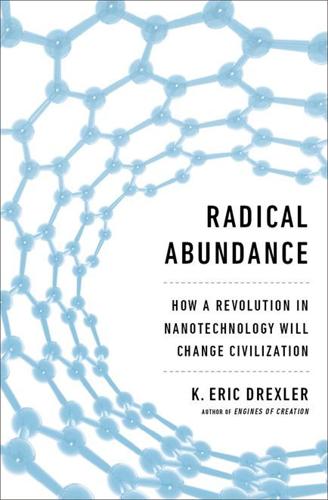
Radical Abundance: How a Revolution in Nanotechnology Will Change Civilization
by
K. Eric Drexler
Published 6 May 2013
It should be no surprise, then, that each revolution holds lessons for understanding the APM Revolution and why its advent will mark a divide in human history. As Winston Churchill once said, “The farther backward you can look, the farther forward you are likely to see.” Here, we can begin with the Neolithic era. THE FIRST AGRICULTURAL REVOLUTION The first agricultural revolution—the Agricultural Revolution—defines the dawn of the Neolithic era, more than ten thousand years in our past. The Agricultural Revolution gave human beings a new way to exploit the productive capabilities of the nanoscale machines found in living organisms, the molecular metabolic machinery that makes complex structures out of nothing more than water, soil, air, and sunlight.
…
A great deal, as it turns out. Both parallels and contrasts offer insights. The biological machinery of the Agricultural Revolution, the digital nanoelectronics of the Information Revolution, and the innermost mechanisms of APM systems all show ways in which nanoscale devices can be harnessed within macroscale systems to deliver useful results. In other words, three of these four revolutions rely on nanoscale devices, the Industrial Revolution being the only exception. However, although the Agricultural Revolution employs atomically-precise nanoscale devices, these are products neither of human action nor human design.
…
Chapter 18: Changing Our Conversation About the Future 283the first response . . . often sets the direction for the next: This is an example of a “social cascade,” discussed (together with a range of other successes and pathologies of group decision-making) in Cass Sunstein’s brief and readable book, Infotopia: How Many Minds Produce Knowledge (Oxford, UK: Oxford University Press, 2006). INDEX Actin, 69 Additive manufacturing, 76–77 Agriculturalists, hunter-gatherers vs., 41–42 Agricultural Revolution, 39, 40–42 APM Revolution and, 50, 54 Industrial Revolution and, 44 nature and human impacts of, 54 Agriculture, atomically precise manufacturing and, 231–232, 248, 250 American Chemical Society, 181 Angewandte Chemie (journal), 20n APM. See Atomically precise manufacturing (APM) APM Revolution, 39, 40, 50–53, 54 Agricultural Revolution and, 50, 54 consequences, potential, 240, 286 competitive, 243 Information Revolution compared, xii, 256 nanotechnology research and, 202 nature and human impacts of, 54 personal concerns and, 282 threshold of, 193 Apollo program, 18, 20, 111–112 Applications, atomically precise manufacturing, 166–167, 174, 223–239, 281 consumer products, 224–225, 253 security, 263–266 medical, 167, 236–238, 256 military, 35, 236, 259–263, 284 Approximations, exploiting, 123–124 Arms race, military applications of atomically precise manufacturing and, 259, 261–262, 268–269, 284 Armstrong, Neil, 112 Arrhenius equation, 292 Assemblers, 329 Assembly methods, molecular, 190–193 Asteroid mining, 15n Astronautics, 133 Atomically precise fabrication, 177–193 biological examples of, 80–82 biomolecular engineering as, 182–184 chemical synthesis as, 82–84, 179–181, 182 history of, 22–25, 46, 178 materials science and, 184–185 nanotechnology as, 28, 195–196 National Nanotechnology Initiative and, 32, 205, 207 pathway to atomically precise manufacturing, 9, 25–27, 32–33, 84–86, 144, 280–281 scanning probe methods, 185–186 Atomic precision, x, xiii, 7, 10, 22–24, 50 called the essence of nanotechnology, 205 definition of, 7 digital systems compared to, 7, 77–80 feedstock molecules and, 152–153 from small to large scale, 154–155 long history of, 22 nanolithography compared to, 76 nanotechnology and, x, xiii, 32 Richard Feynman and, 24 See also Atomically precise fabrication, Atomically precise manufacturing, Chemistry Atomically precise manufacturing (APM), x–xii agriculture and, 231–232, 248, 250 aligning national interests and, 266–269 applications (see Applications) assembly methods and, 190–192 automated manufacturing as template for, 73–77, 84 biomolecular engineering and, 187–188 biotechnology and, 73, 80–82, 85 carbon dioxide and, 234, 246, 250–252, 255 chemical synthesis and, 73, 82–84, 85 chemistry and, 179–181 civil society and, 262–263, 265–266 collaboration in, 271–272, 312 consumer products from, 224–225, 253 costs and, 52, 224, 227 digital information systems and, 73, 77–80, 84 digital media as cost model for, 172–173 digital revolution/digital technology and, 7–8, 50–51, 53, 277–278 domestic security applications, 263–266 economic implications of, 34–35, 256–257 energy and, 226, 229–230 environmental restoration and, 33–34, 233–234, 250–252, 255 exploratory engineering and, 143–144, 279–280 framework for thinking about, 274–287 fundamental principles of, 10, 24, 289–293 improvement in product performance and, 162–166 information technology and, 226–227 materials processing and, 184–185 medicine and, 236–238, 256 military applications, 35, 236, 259–263, 284 molecular biology and, 24–27 pace and direction of development, 241–245, 309–311 pathways to (see Pathways to atomically precise manufacturing) potential solutions/disruptions created by, 34–35, 240–241, 245–255 precursors, 279, 303–306 productivity of, 276–277 progress towards, 32–33, 177–179, 278 raw materials and, 230–231 relationship to nanotechnology, 32, 196–199, 205–207 reducing complexity of, 303–304 resource scarcity and, 33–34, 169, 230–231, 248 roadmapping for progress in, 216–220 scanning-probe methods and, 185–186 security technologies and, 235–236 supply chains and, 34–35, 51, 225–226, 244–245 surveillance networks and, 263, 264–266 transformation of infrastructure and, 228–229 uncertainties and, 258, 269–272 See also Atomically precise manufacturing systems, Pathways to atomically precise manufacturing Atomically precise manufacturing (APM) research carbon-based supermaterials and, 158 fostering collaborative strategies for, 271–272, 312 government funding and, 32, 194–195, 198–199, 204–207, 208, 243 repression of, 209–210 Atomically precise manufacturing (APM) systems energy requirements of, 155–156 as factories, 276 microblocks, 152–155 ordinariness of, 70–71 process of, 148–151 products of, 147–149, 159–174, 224–225, 253 (see also Applications) radical cost reduction and, 168–173 Automated manufacturing, APM and, 72–77, 84 Avco Everett Research Laboratory, 17–18 Battelle Memorial Institute, 211 Becquerel, Henri, 134 Bell Telephone/Bell Labs, 46–47 Biomolecular engineering, 9, 187–188 machine engineering, 24–25 systems, atomically precise manufacturing and, 73, 80–82, 85 Boltzmann factor, 292n Brownian motion, 23, 50 Bush, Vannevar, 5 CAD (computer-aided design) software, 189 CAMD (computer-aided molecular design) software, 189–190 Cancer, atomically precise manufacturing and attack on, 237–238 Carbon-based materials, 137, 153, 158, 162–163 Carbon dioxide emission reduction, 171, 250–252, 255 problem, 246, 250–252 removal from atmosphere, 234, 252, 255 See also Greenhouse gases Carbon nanotubes, 161, 164, 185, 188 Carroll, Sean, 96, 100 Carson, Rachel, 12 Casimir forces, 64 Catalysts (as products), 302 Cells, molecular machinery of, 25, 50, 61–62, 182 CERN, 95 Chemical synthesis atomically precise manufacturing and, 73, 82–84, 85 organic synthesis, 23–24, 32, 179–181, 187 Chemical reactions click chemistry/click reaction, 180n equilibria of, 292 free energy change, 291–292 in chemical synthesis, 23, 83, 84, 180, 293 kinetics of, 277, 292 machine-guided motion, 73, 292 methods for blocking, 84, 281, 290–292, 300 stereotactic, 290–293 thermal motion and, 68 thermal motion timescale, 68 thermodynamic control of, 277, 292 transition states of, 291, 292 yield, 84, 113, 292 See also Chemical synthesis, Chemistry Chemistry atomically precision and, 7, 22–23, 82–84 computational, 33, 56, 98–100, 179, 189–190, 218 discovery of atoms and, 23, 29 organic synthesis and, 179–181 as pathway technology, 32, 84–85, 179–181, 188, 242 as a production method, 92–84 research scope, 178–181 thermal motion and, 68–70 China conflict with United States, 268–269 economic rise of, 246 government funding of nanotechnology research, 194, 210, 243 Churchill, Winston, 40 Civil society, atomically precise manufacturing and, 262–263, 265–266 Clausewitz, Carl von, 262 Climate change, atomically precise manufacturing and, 234, 246, 250–252, 255.
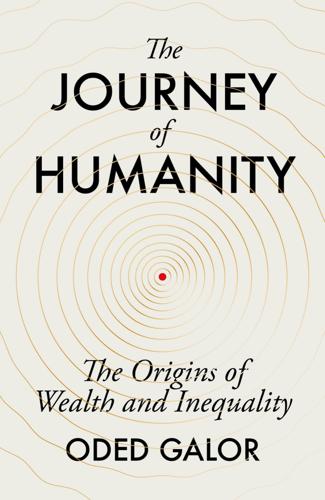
The Journey of Humanity: The Origins of Wealth and Inequality
by
Oded Galor
Published 22 Mar 2022
Roots and Impacts of the Neolithic Revolution Jared Diamond has advanced a powerful thesis that links the uneven development across the globe to regional variation in the timing of the onset of the Agricultural Revolution. In particular, he provides an intriguing resolution to the question why historically the most powerful civilisations on Earth arose on the Eurasian land mass, rather than in sub-Saharan Africa, the Americas or Oceania.[2] Diamond has attributed the earlier emergence of the Neolithic Revolution in Eurasia to its biodiversity as well as the orientation of its continents. Specifically, he has argued that the earliest onset of the Agricultural Revolution nearly 12,000 years ago in the Fertile Crescent was due to its abundance in a wide range of domesticable species of plants and animals.
…
pid_prh_6.0_139577568_c0_r0 To Erica Contents Mysteries of the Human Journey I THE HUMAN ODYSSEY 1 First Steps Genesis Exodus from the Cradle of Humankind Early Settlement The Dawn of Civilisation 2 Lost in Stagnation The Malthusian Thesis The Inevitable Onset of Agriculture Population Swings The Economic Ice Age 3 The Storm Beneath the Surface Unified Growth Theory Wheels of Change 4 Full Steam Acceleration of Technological Development Education in the Pre-Industrial Era Industrialisation and Human Capital The Advent of Universal Public Education Child Labour No More 5 Metamorphosis Triggers of the Demographic Transition Family Tales Phase Transition 6 The Promised Land The Twilight of Industry The Age of Growth Growth and Environmental Degradation Coda: Resolving the Mystery of Growth II THE ORIGINS OF WEALTH AND INEQUALITY 7 Splendour and Misery Disparate Factors Rusty Tools Trade, Colonialism and Uneven Development Deep-Rooted Factors 8 The Fingerprints of Institutions Institutional Origins of the British Ascent Institutions and Long-Run Development The Legacy of Colonialism Origins of Institutions 9 The Cultural Factor The Power of Culture A Culture of Growth Cultural Inertia Culture and Prosperity 10 The Shadow of Geography Landscape Fragmentation and the Rise of Europe Origins of Extractive Institutions Geographical Roots of Cultural Traits Roots of Comparative Development 11 The Legacy of the Agricultural Revolution Roots and Impacts of the Neolithic Revolution The Grains of Civilisation Ceding the Head Start Geography’s Decree 12 Out of Africa Origins of Human Diversity Measuring Diversity Diversity and Prosperity The Grip of the Past Coda: Unravelling the Mystery of Inequality Afterword Acknowledgements References Endnotes Index Mysteries of the Human Journey A squirrel scurries along the windowsill of a Venetian Gothic structure at Brown University.
…
But there is an additional factor lurking behind modern-day institutional and cultural characteristics that joins geography as a fundamental driver of economic development – the degree of diversity within each society, its beneficial effects on innovation and its adverse implications for social cohesiveness. Our exploration of the role of geographical characteristics will take us 12,000 years back in time to the dawn of the Agricultural Revolution. The examination of the causes and consequences of diversity will lead us tens of thousands of years further back to the first strides of our species out of Africa. This is not the first attempt to describe the core thrust of human history. Great thinkers such as Plato, Hegel and Marx argued that history unfolds according to inescapable universal laws, often disregarding the role of societies in shaping their own destinies.[8] This book, by contrast, neither posits an inexorable march of humanity towards utopia or dystopia, nor purports to derive moral insights about the desirability of the direction of this journey and its consequences.
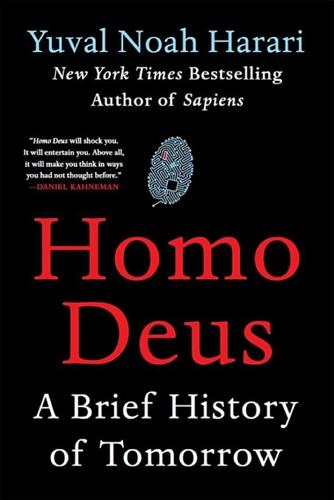
Homo Deus: A Brief History of Tomorrow
by
Yuval Noah Harari
Published 1 Mar 2015
Yet the only time an animal initiates a conversation with a human is when the serpent tempts Eve to eat the forbidden fruit of knowledge (Bil’am’s donkey also speaks a few words, but she is merely conveying to Bil’am a message from God). In the Garden of Eden, Adam and Eve lived as foragers. The expulsion from Eden bears a striking resemblance to the Agricultural Revolution. Instead of allowing Adam to keep gathering wild fruits, an angry God condemns him ‘to eat bread by the sweat of your brow’. It might be no coincidence, then, that biblical animals spoke with humans only in the pre-agricultural era of Eden. What lessons does the Bible draw from the episode?
…
While animists saw humans as just another kind of animal, the Bible argues that humans are a unique creation, and any attempt to acknowledge the animal within us denies God’s power and authority. Indeed, when modern humans discovered that they actually evolved from reptiles, they rebelled against God and stopped listening to Him – or even believing in His existence. Ancestral Needs The Bible, along with its belief in human distinctiveness, was one of the by-products of the Agricultural Revolution, which initiated a new phase in human–animal relations. The advent of farming produced new waves of mass extinctions, but more importantly, it created a completely new life form on earth: domesticated animals. Initially this development was of minor importance, since humans managed to domesticate fewer than twenty species of mammals and birds, compared to the countless thousands of species that remained ‘wild’.
…
Yet with the passing of the centuries, this novel life form became dominant. Today more than 90 per cent of all large animals are domesticated. Alas, domesticated species paid for their unparalleled collective success with unprecedented individual suffering. Although the animal kingdom has known many types of pain and misery for millions of years, the Agricultural Revolution generated completely new kinds of suffering, that only became worse over time. To the casual observer domesticated animals may seem much better off than their wild cousins and ancestors. Wild boars spend their days searching for food, water and shelter, and are constantly threatened by lions, parasites and floods.

The Sovereign Individual: How to Survive and Thrive During the Collapse of the Welfare State
by
James Dale Davidson
and
William Rees-Mogg
Published 3 Feb 1997
We cross our fingers and assume that the major megapolitical variables in the next millennium will be technological rather than microbiological. If luck continues to side with humanity, technology will continue to grow in prominence as the leading megapolitical variable. It was not always such, however, as a review of the first great megapolitical transformation, the Agricultural Revolution, clearly shows. 43 CHAPTER 3 EAST OF EDEN The Agricultural Revolution and the Sophistication of Violence 'And the Lord said unto Cain, Where is Abel, thy brother? And he said, I know not: Am I my brothers' keeper? And he said, What hast thou done? the voice of thy brothers' blood crieth unto me from the ground." GENESIS 4:9-10 Five hundred generations ago, the first phase change in the organization of human society began.1 Our ancestors in several regions reluctantly picked up crude implements, sharpened stakes and makeshift hoes, and went to work.
…
Our desire is to help you to take advantage of the opportunities of the new age and avoid being destroyed by its impact. If only half of what we expect to see happens, you face change of a magnitude with few precedents in history. The transformation of the year 2000 will not only revolutionize the character of the world economy, it will do so more rapidly than any previous phase change. Unlike the Agricultural Revolution, the Information Revolution will not take millennia to do its work. Unlike the Industrial Revolution. its impact will not be spread over centuries. The Information Revolution will happen within a lifetime. What is more, it will happen almost everywhere at once. Technical and economic innovations will no longer be confined to small portions of the globe.
…
L1FE WITHOUT FORESIGHT 32 If we fail to perceive the great transition going on around us, it is partly because we do not desire to see. Our foraging forebears may have been just as obdurate, but they had a better excuse. No one ten thousand years ago could have foreseen the consequences of the Agricultural Revolution. In-deed, no one could have foreseen much of anything beyond where to find the next meal. When farming began, there was no record of past events from which to draw perspective on the future. There was not even a Western sense of time divided into orderly units, like seconds, minutes, hours, days, and so on, to measure out the years.
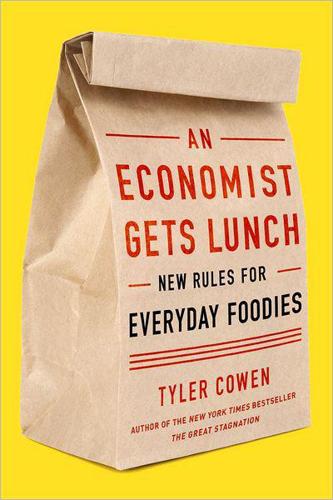
An Economist Gets Lunch: New Rules for Everyday Foodies
by
Tyler Cowen
Published 11 Apr 2012
ALWAYS LEARNING PEARSON It is a hard matter to save a city in which a fish sells for more than an ox. —Cato the Elder Contents 1 On the Eve of the Revolution 2 How American Food Got Bad 3 Revolutionizing the Supermarket Experience 4 The Rules for Finding a Good Place to Eat 5 Barbecue: The Greatest Slow Food of All 6 The Asian Elephant in the Room 7 Another Agricultural Revolution, Now 8 Eating Your Way to a Greener Planet 9 Why Does Mexican Food Taste Different in Mexico? 10 The Finding Great Food Anywhere Encyclopedia 11 The Stuff and Values of Cooking at Home Notes Acknowledgments Index 1 On the Eve of the Revolution American food is in crisis, and rarely has more disruption loomed before us.
…
Rarely is it admitted, much less emphasized, that cheap, quick food—including its embodiment through our sometimes obnoxious agribusiness corporations—is the single most important advance in human history. It is the foundation of modern civilization and the reason why most of us are alive. Before there was an Industrial Revolution, which eventually brought the conveniences of modern life, there was an Agricultural Revolution, which created a large enough social surplus to make further economic development possible. It enabled us to pull people off the farm and employ them as scientists, engineers, inventors, and entrepreneurs. Earlier food worlds were no paradise. If we go back to the middle of the nineteenth century, American consumers were suspicious of the concepts of fresh fruit, vegetables, meat, and milk, unless it came from their farm or a neighbor’s.
…
And when my Ma Po Tofu came out, it was really quite good. It wasn’t “awesome” but it was better than the median Chinese meal in the far more cosmopolitan northern Virginia, or for that matter Manhattan. It was yummy. And so Bridgewater, Virginia, has—if you play your cards right—at least one good Chinese restaurant. 7 Another Agricultural Revolution, Now Juan Camilo Ayala, a Mexican farmer living in the village of San Agustin Oapan, has been a corn farmer for his entire life. He gets up in the morning, walks out to his cornfields, and works those fields with an ox and plow, sometimes a burro. He doesn’t own any other agricultural machines, and in his early sixties he still worries about the harvest and spending the day in the fields.

Jaws
by
Sandra Kahn,Paul R. Ehrlich
Published 15 Jan 2018
We domesticate wolves into being companions, and soon we’re dressing up our dogs in Halloween costumes and buying Pet Rocks. The emergence of modern humans has generated some surprising twists and turns. Kahn and Ehrlich explore one of these unexpected consequences of human culture, sitting at the intersection of the expertise of this unlikely pairing of authors. Who would ever have predicted that the Agricultural Revolution, the Industrial Revolution, and the Westernization of nursing patterns would have led to a distinctive orthodontic profile (in both the metaphorical and literal sense of “profile”)? And who would have predicted that this orthodontic profile winds up being relevant to an array of aspects of child development, health, and disease?
…
Our hunter-gatherer ancestors had spacious jaws, with a continuous smoothly curved arch of teeth in each jaw, including third molars (“wisdom teeth”) at the back ends of the arches. Indeed, Stanford evolutionist Richard Klein, a top expert on our species’ fossil record, has told us that he personally had never seen an early human skull with crooked teeth. Further, the oral-facial epidemic of modern times, although rooted, we believe, in the agricultural revolution, was very slow in starting. Recently a cemetery of common people of the Amarna culture of ancient Egypt, dating to more than 3,000 years ago, was discovered. The skeletons had the tooth wear characteristic of farming peoples, the investigators noted, Except for the occasional slight incisor crowding and rotation, observation of the teeth indicated that they were well-aligned with very-good-to excellent occlusion, in general.
…
Genetic evolution is slow, and the need for a tough “chewing environment” to properly express the genes for oral-facial development persisted even as cultural evolution reduced the need for prolonged chewing to obtain nourishment. Exact chronologies of the softness of diets as the West industrialized have eluded us, but we do have clues. For instance, human beings had long had a sweet tooth, but early after the agricultural revolution it could be satisfied mainly by raiding beehives—a limited resource that had to be acquired over the objections of the bees. The rich among the ancient Romans used honey extensively in their very varied diet. Poor Romans had much simpler diets, featuring especially bread and thick stews.11 In the Middle Ages honey was used, especially by the wealthy, in a great variety of cakes, custards, tarts, fritters, and the like—soft foods all.12 Sadly we have not found any accounts of rates of malocclusion among rich and poor in medieval or Roman times.

The Precipice: Existential Risk and the Future of Humanity
by
Toby Ord
Published 24 Mar 2020
For an explanation of just how important social learning was to our success see, for example, Henrich (2015). 8 It is, of course, somewhat arbitrary how many to include and how to individuate each one. If I were to count just two, I’d say the Agricultural Revolution and the Industrial Revolution (perhaps defining the latter more broadly to include the time of the Scientific Revolution). If I were to include four, I’d probably break the Agricultural Revolution into two parts: the beginning of farming and the rise of civilization (which I’d then date to the appearance of cities, about 5,000 years ago). For a rigorous exploration of the big picture of humanity’s development, I recommend Maps of Time by David Christian (2004). 9 In some ways the term “Revolution” is misleading: it was neither rapid nor universal.
…
See note 97 to Chapter 4. 8 OUR POTENTIAL 1 Wells (1913), p. 60. 2 I use the term “civilization”—as I have done throughout this book—to refer to humanity since the Agricultural Revolution (which I round to 10,000 years, reflecting our imprecise knowledge of its beginning). This is a broader definition than the more commonly used 5,000 years since the time of the first city states. I use this longer time as I believe the Agricultural Revolution was the more important transition and that many of the things we associate with civilization will have been gradually accumulating during this time of villages and towns preceding the first cities. 3 Using the fossil record, estimates of median species lifetime for mammals range from 0.6 million years (Barnosky et al., 2011) to 1.7 million years (Foote & Raup, 1996).
…
Little by little, our knowledge and our culture grew.7 At several points in the long history of humanity there has been a great transition: a change in human affairs that accelerated our accumulation of power and shaped everything that would follow. I will focus on three.8 The first was the Agricultural Revolution.9 Around 10,000 years ago the people of the Fertile Crescent, in the Middle East, began planting wild wheat, barley, lentils and peas to supplement their foraging. By preferentially replanting the seeds from the best plants, they harnessed the power of evolution, creating new domesticated varieties with larger seeds and better yields.

Meat: A Benign Extravagance
by
Simon Fairlie
Published 14 Jun 2010
Tudge, C (2003), So Shall We Reap, Penguin Allen Lane. 7 Ernle (1912), op cit. 8 It has been argued that in some situations phosphorus was the limiting factor, a matter dealt with shortly, see Newman op cit. 13. 9 Allen, R (2008), ‘The Nitrogen Hypothesis and the English Agricultural Revolution: A Biological Analysis’, The Journal of Economic History, Vol 68, No 1, 2008. Allen says 1 to 3 per cent, but for convenience here I call it 2 per cent. 10 Allen (2008), ibid. See also Chorley, G P H (1981), ‘The Agricultural Revolution in Northern Europe, 1750-1880: Nitrogen, Legumes and Crop Productivity’, Economic History Review, Vol 34 pt 1 pp 71-93; and Clark, G, ‘The Economics of Exhaustion: The Postan Thesis and the Agricultural Revolution’, Journal of Economic History, Vol 52 Pt 1, 1992. 11 Marx, K (1894), Das Kapital, Volume 3, ‘The Transformation of Profit into Ground Rent’. 12 Cited in Girardet, H (2000), Cities, People, Planet, Liverpool Schumacher lectures, April 2000.
…
This is a point of view that lends considerable historical support to the case for stockfree agriculture. Allen is suggesting that the agricultural revolution, insofar as it was dependent upon nitrogen fixation, could have been carried out just as successfully, in the long run, by using legumes as a green manure rather than as animal feed. In the light of recent research into stockfree organic rotations entirely reliant upon green manures, it looks as though this could be correct. The Geography of Muck Unfortunately no sooner had one problem been solved by the so called agricultural revolution, than another was caused by the industrial revolution. As land was progressively enclosed for ‘improvement’ by capitalist farmers like Coke (even though many of the improvements just described took place some 200 years earlier on open fields) peasants were squeezed out of their communities and impelled into towns, in a process similar to one now taking place on a far larger scale in developing countries.
…
Animal products were the main fertilizer used on arable land, so with more manure available soil fertility improved and yields per acre rose.6 This view, from J V Beckett in 1990, echoes that of the agricultural historian, Lord Ernle, 80 years previously : The field cultivation of roots, clover and artificial grasses … enabled farmers to carry more numerous, bigger and heavier stock; more stock gave more manure; more manure raised larger crops; larger crops supported still larger flocks and herds.7 This was the classic view which I once accepted, but now consider needs adjusting. Although animals were key to the advances of the agricultural revolution, manure played a smaller role than it occupies in the account propagated with such enthusiasm by Lord Ernle, John Seymour and others. The extra nitrogen came from the growing of legume crops for animals, but not necessarily via the digestive tracts of animals that ate them. This might seem a nice distinction but it is crucial to the debate between organic livestock farmers and organic stockless farmers that is the focus of much of this chapter.
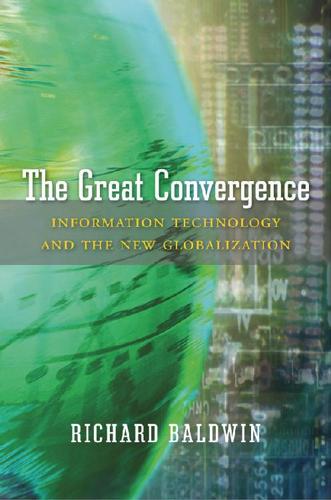
The Great Convergence: Information Technology and the New Globalization
by
Richard Baldwin
Published 14 Nov 2016
In Phase One, globalization meant a burgeoning human population traveling to exploit ever-more-distant production sites. Phase Two: Localizing the global economy (10,000 BCE to 1820 CE) In Phase Two, production and consumption were bundled as before, but with one absolutely critical difference. Thanks to the Agricultural Revolution, food production was brought to people rather than vice versa. The world economy was, in other words, “localized” in the sense that production and consumption occurred in fixed locations. Trade was still difficult and thus rare. This phase also saw the rise of cities and the ancient civilizations in today’s Iraq, Iran, Turkey, Egypt, China, India / Pakistan, and Greece Italy.
…
Globalization’s Phase One (humanization of the globe) was triggered when modern humans left Africa around 83,000 BCE following a millennia-long spike in the planet’s average temperature. Phase Two was triggered when the climate warmed and stabilized 12,000 years ago. With the climate warm and relatively stable, humans were able to master food production. Local food production could be expanded to match local population expansions. This change, known as the Agricultural Revolution, enabled the rise of civilization. Modern “global warming” is the upward tick at the far right. SOURCE: J. Jouzel et al., “Orbital and Millennial Antarctic Climate Variability over the Past 800,000 Years,” Science 317, no. 5839 (2007): 793–797; based on Arctic Dome C ice cores. The DNA and archaeological data suggest that about forty millennia ago, humans were continuously present in Africa, Asia, and Australia (Figure 5).
…
To put it differently, production and consumption were spatially bundled—thus there was little trade—but since moving people to food made more sense than moving food to people, the bundles of production and consumption were continuously shifting in a way that hindered the development of civilization. Essential Outcome Globalization in this epoch meant “humanizing” the globe. The rising world population drove humans to inhabit every inhabitable corner of the planet by about 15,000 years ago. The Agricultural Revolution ended Phase One and opened the door to Phase Two. Phase Two: Agriculture and the First Bundling For scientific reasons that are still unclear, the climate warmed twenty millennia ago and stabilized about 12,000 years ago (Figure 4). Prehistoric population density was limited by food, and food was limited by climate, so this “good” climate change triggered a transformation of human society.
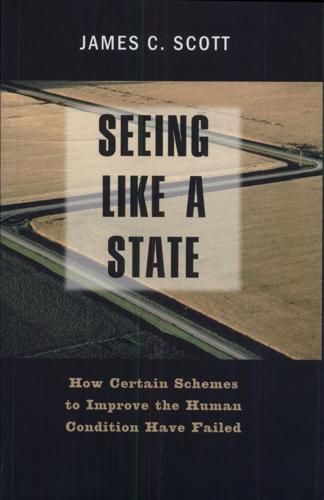
Seeing Like a State: How Certain Schemes to Improve the Human Condition Have Failed
by
James C. Scott
Published 8 Feb 1999
It is worth adding that neither does the record of the industrialized world in soil erosion, pollution or exhaustion of groundwater, and global warming represent an edifying example of foresight. 67. Robert Chambers, Rural Development: Putting the Last First (London: Longman, 1983), quoted in Richards, Indigenous Agricultural Revolution, p. 40. There is a case to be made for Howard's claim that "agricultural revolutions" are always acts of autonomous farmers rather than states. From the agricultural revolution in Britain that laid the groundwork for industrialization to the broad adoption of such new crops as cocoa, tobacco, and maize in Africa, Howard's generalization rings true. It does not hold true, however, for large-scale irrigation projects or for the more recent, research-driven breeding of high-yielding varieties of wheat, rice, and maize.
…
It goes without saying that the gardens Anderson is describing are so diverse in part because the villagers in question wish to grow many of the foods needed for subsistence rather than paying for them in the market. The point, however, is the plan behind the visual disorder. 38. Richards, Indigenous Agricultural Revolution, p. 63. 39. Ibid., p. 70. 40. Most traditional cropping systems, whether polyculture or crop rotation, combine a grain and a legume in this fashion. 41. Richards, Indigenous Agricultural Revolution, pp. 66-70. 42. H. C. Sampson and E. M. Crowther, "Crop Production and Soil Fertility Problems," West Africa Commission, 1938-1939: Technical Reports, part I (London: Leverhulme Trust, 1943), p. 34, cited in ibid., p. 30.
…
But the research is more manageable when the variable of interest is less subjective and more easily quantifiable. 79. D. S. Ngambeki and G. F. Wilson, "Moving Research to Farmers' Fields," International Institute of Tropical Agriculture Research Briefs, 4:4, 1, 7-8, quoted in Richards, Indigenous Agricultural Revolution, p. 143. 80. Richards, Indigenous Agricultural Revolution, p. 143. 81. Sauer, Agricultural Origins and Dispersals, pp. 62-83. 82. In addition to the difficulties in finding the "active" cause among many possibilities, such a study of polycropping would have to find and justify a formula for comparing different combinations of yields.

Paleo Slow Cooker: 33 Quick Prep, Easy, Healthy and Delicious Smelling Paleo Slow Cooker Meals-Eat Well Even if You Are Tight on Time Through Paleo ... Slow Cooker Meals, Palo Diet) (Volume 6)
by
Tiffany Scott
Published 2 Aug 2014
This eliminates grains, dairy products, processed foods, and a host of other food items that were introduced during or after the agricultural revolution from one’s diet. The idea is that the human body has not adapted to the newer grain-based diet we are used to. The large amount of processed foods people consume on a daily basis has also contributed to the health and weight problems plaguing a big number of the world’s population today. These foods contain a lot of chemical additives and sugar which, like grains, dairy, and other post-agricultural revolution food items, are not easily processed by the body. The Paleo Lifestyle Many traditional nutritionists dismiss the paleo diet as a fad diet that won’t last; however, as time passes, more and more people are going paleo.
…
Thanks again for downloading this book; I hope you definitely enjoy it! Chapter 1: Paleo or Paleolithic diet—a basic guide The Paleolithic diet is a way of eating from 10,000 years ago in the Paleolithic era, also known as the caveman diet, Stone Age diet & hunter gathered diet. The Paleo diet consists of foods that were eaten before the agricultural revolution and wheat based diet. These diets consist of meat, seafood, fruits, vegetables and nuts. All foods in their natural form, not processed and wheat free are included. Studies are showing that human bodies are better adapted to this way of eating. The term Paleo diet refers to the healthiest nutritional approach towards meal and eating food that keeps your genetics stay lean, potent and dynamic.
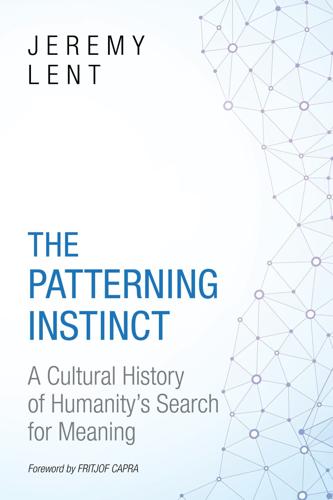
The Patterning Instinct: A Cultural History of Humanity's Search for Meaning
by
Jeremy Lent
Published 22 May 2017
Nurit Bird-David, “The Giving Environment: Another Perspective on the Economic System of Gatherer-Hunters,” Current Anthropology 31, no. 2 (1990): 189–96. See also Calvin Luther Martin, cited in Barker, Agricultural Revolution, 409; and Pascal Boyer, Religion Explained: The Evolutionary Origins of Religious Thought (New York: Basic Books, 2001), 69, for a description of the African Ituri pygmies’ perception that the forest “looks after” them. 12. Barker, Agricultural Revolution, 59. 13. Ibid. 14. Reported by ethnologist Knud Rasmussen, quoted in David Abram, The Spell of the Sensuous (New York: Random House, 1996), 87. 15. Hallowell, “Ojibwa Ontology,” 34. 16.
…
Cauvin, Birth of the Gods, 3, 220; Ian Hodder et al., “Review Feature: The Birth of the Gods and the Origins of Agriculture,” Cambridge Archaeological Journal 11, no. 1 (2001): 105–21. See also Wilson, Domestication of the Human Species, 65. 20. See Woodburn, “Egalitarian Societies”; Barker, Agricultural Revolution, 306; Colin Renfrew, Prehistory: The Making of the Human Mind (New York: Modern Library, 2007), 135, 141–42; Samuel Bowles and Jung-Kyoo Choi, “Coevolution of Farming and Private Property during the Early Holocene,” Proceedings of the National Academy of Sciences 110, no. 22 (2013): 8830–35. 21. Barker, Agricultural Revolution, 1–2. See Joyce Marcus and Kent V. Flannery, “The Coevolution of Ritual and Society: New 14C Dates from Ancient Mexico,” Proceedings of the National Academy of Sciences 101, no. 52 (2004): 18257–61, for a fascinating account of an archaeological excavation in Mexico that traces the evolution, over 1,300 years, from the ad hoc rituals of egalitarian nomadic foragers to a full-time priesthood with state temples. 22.
…
“Demand Sharing: Reciprocity and the Pressure for Generosity among Foragers.” American Anthropologist 95, no. 4 (1993): 860–74. Woodburn, James. “Egalitarian Societies.” Man 17, no. 3 (1982): 431–51. Both recommended for their explanation of egalitarianism in hunter-gatherer societies. Chapter 5. Agriculture and Anxiety Barker, Graeme. The Agricultural Revolution in Prehistory: Why Did Foragers Become Farmers? Oxford: Oxford University Press, 2009. A detailed and extensive explanation of the transition from foraging to farming. Cauvin, Jacques. The Birth of the Gods and the Origins of Agriculture. Translated by Trevor Watkins. Cambridge: Cambridge University Press, 2000.

Gene Eating: The Science of Obesity and the Truth About Dieting
by
Giles Yeo
Published 3 Jun 2019
The end of the Palaeolithic era also corresponded with the end of the Pleistocene, or ‘Ice Age’, and the beginning of the agricultural revolution. While it was first proposed by Dr Walter L. Voegtlin in his 1975 book The Stone Age Diet,1 the Paleo diet as it exists today entered the popular consciousness in 2002, thanks to Dr Loren Cordain’s bestselling book The Paleo Diet: Lose Weight and Get Healthy by Eating the Foods You Were Designed to Eat.2 The diet was so named because it was designed to mimic the diet of indigenous populations prior to the agricultural revolution. The basic premise for the whole Paleo movement was that for the vast majority of human existence, since Homo sapiens emerged 200,000–300,000 years ago, we subsisted as hunter-gatherers.
…
I will deconstruct the concept of a calorie and take a closer look at our obsession with counting these small units of energy. I will examine the truths and fallacies in the claims made by the Palaeolithic and ‘clean’ movements, while charting the actual history of our diet as we transitioned from stone-age hunter gatherers to farmers during the agricultural revolution, to the industrialised food production of today. I will explore the science-fiction and non-fiction of current popular diet plans, ask if we can be meta-bolically healthy without being skinny, and also examine the latest experimental data extolling the benefits of certain traditional diets, such as, for example, the Mediterranean diet.
…
The basic premise for the whole Paleo movement was that for the vast majority of human existence, since Homo sapiens emerged 200,000–300,000 years ago, we subsisted as hunter-gatherers. Then the dawn of the agricultural revolution some 12,000 years ago brought about huge changes to our diet. Since diet-related illnesses are responsible for much of the chronic and non-communicable disease burden today, and no evidence of such conditions can be seen in the Palaeolithic skeletal record, the blame for our contemporary woes must lie with the post-agricultural diet. Hence, according to Cordain, the solution to a skinnier and less-is-healthier human species must surely be to shift back to a pre-agricultural, so-called ‘ancestral’, subsistence.
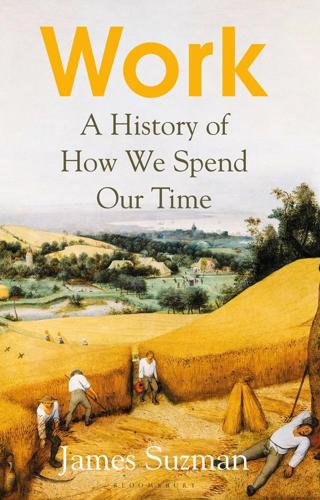
Work: A History of How We Spend Our Time
by
James Suzman
Published 2 Sep 2020
He wondered whether a better understanding of how our hunter-gatherer ancestors lived might offer some insights into the fundamental nature of our species ‘stripped of the accretions and complications brought about by agriculture, urbanisation, advanced technology, and national and class conflict’. ‘It is still an open question,’ wrote Lee, ‘whether man will be able to survive the exceedingly complex and unstable ecological conditions he has created for himself’ and whether ‘the efflorescence of technology’ that followed the agricultural revolution would lead us to Utopia or ‘to extinction’. While settling into the rhythms of Kalahari life, Lee impressed his hosts with how quickly he came to grips with their complex click language. They also appreciated his generosity and easy-going manner, even if their near-constant demands on him for gifts of food and tobacco began to exhaust him.
…
If anything, he underestimated its significance. For while previous and later technologically driven transformations – from the mastering of fire to the development of the internal combustion engine – also dramatically increased the amount of energy humans were able to harness and put to work, the agricultural revolution not only enabled the rapid growth of the human population but also fundamentally transformed how people engaged with the world around them: how they reckoned their place in the cosmos and their relationships with the gods, with their land, with their environments and with each other. Gordon Childe was not especially interested in culture, at least not in the same way that his colleagues in the Social Anthropology Department were.
…
Some later farming populations have the benefit of funerary inscriptions on gravestones and sometimes even partial census data, as in the case of Roman Egypt, but again this data is usually too incomplete to serve as anything more than a rough guide. Even if demographers are cautious when making pronouncements regarding life expectancy in early agricultural societies, there is broad consensus that before the Industrial Revolution kicked into gear and significant advances in medicine began to make an impact, the agricultural revolution did nothing at all to extend the lifespan of the average person, and indeed in many instances shortened it relative to the lifespans of remote foragers like the Ju/’hoansi. A comprehensive study of human remains from Imperial Rome, arguably the wealthiest agricultural society in history, for instance, shows that most men there were lucky to live much past the age of thirty,3 and analysis of the earliest well-documented mortality figures, which come from Sweden between 1751 and 1759, suggests that the Ju/’hoansi and the Hadzabe expected to live slightly longer lives than Europeans on the cusp of the Industrial Revolution.4 Osteological studies of ancient bones and teeth also offer some insights into the quality of ancient people’s lives.
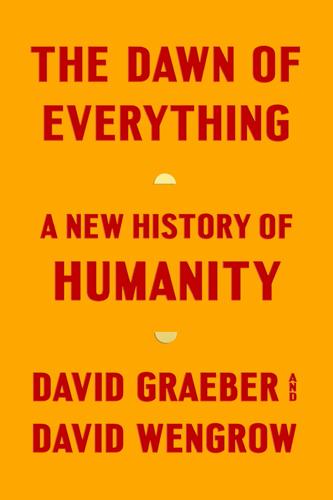
The Dawn of Everything: A New History of Humanity
by
David Graeber
and
David Wengrow
Published 18 Oct 2021
Today, the popular version of this story is typically some updated variation on Jean-Jacques Rousseau’s Discourse on the Origin and the Foundation of Inequality Among Mankind, which he wrote in 1754. Once upon a time, the story goes, we were hunter-gatherers, living in a prolonged state of childlike innocence, in tiny bands. These bands were egalitarian; they could be for the very reason that they were so small. It was only after the ‘Agricultural Revolution’, and then still more the rise of cities, that this happy condition came to an end, ushering in ‘civilization’ and ‘the state’ – which also meant the appearance of written literature, science and philosophy, but at the same time, almost everything bad in human life: patriarchy, standing armies, mass executions and annoying bureaucrats demanding that we spend much of our lives filling in forms.
…
Nor does it justify the invention of endless sub-categories like ‘complex’ or ‘affluent’ or ‘delayed-return’ hunter-gatherers, which is simply another way of ensuring such peoples are kept in what the Haitian anthropologist Michel-Rolph Trouillot called the ‘savage slot’, their histories defined and circumscribed by their mode of subsistence – as if they were people who really ought to be lazing around all day, but for some reason got ahead of themselves.44 Instead, it means that the initial assertion was, like that of the apocryphal Hamish McDonald, simply wrong. IN WHICH WE DISPOSE OF ONE PARTICULARLY SILLY ARGUMENT THAT FORAGERS WHO SETTLE IN TERRITORIES THAT LEND THEMSELVES WELL TO FORAGING ARE SOMEHOW UNUSUAL In academic thought, there’s another popular way of propping up the myth of the ‘Agricultural Revolution’, and thereby writing off people like the Calusa as evolutionary quirks or anomalies. This is to claim that they only behaved the way they did because they were living in ‘atypical’ environments. Usually, what’s meant by ‘atypical’ are wetlands of various sorts – coasts and river valleys – as opposed to the remoter corners of tropical forests or desert margins, which is assumed to be where hunter-gatherers really ought to be living, since that is where most of them live today.
…
What’s deemed important is not what they were, but the fact that they could be on the brink of turning into something else: a ‘proper’ kingdom, presumably, whose subjects paid tribute in crops. This peculiar habit of thought requires us to treat whole populations of ‘complex hunter-gatherers’ either as deviants, who took some kind of diversion from the evolutionary highway, or as lingering on the cusp of an ‘Agricultural Revolution’ that never quite took place. It’s bad enough when this is applied to a people like the Calusa, who were after all relatively small in number, living in complicated historical circumstances. Yet the same logic is regularly applied to the history of entire indigenous populations along the Pacific Coast of North America, in a territory running from present-day greater Los Angeles to the surroundings of Vancouver.
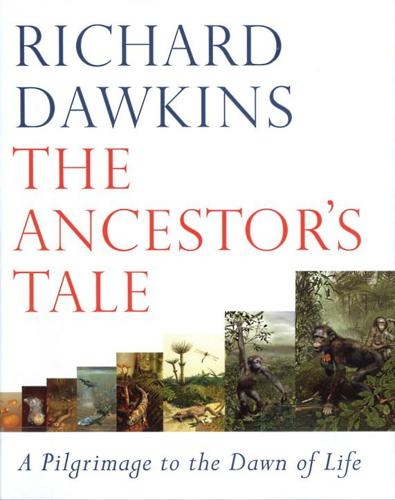
The Ancestor's Tale: A Pilgrimage to the Dawn of Evolution
by
Richard Dawkins
Published 1 Jan 2004
Almost all the food of a town comes from owned and cultivated land -- in ancient times from fields round about the town, in modern times from anywhere in the world, transported and sold on through middlemen before being consumed. The Agricultural Revolution soon led to specialisation. Potters, weavers and smiths traded their skills for food which others grew. Before the Agricultural Revolution, food was not cultivated on owned land but captured or gathered on unowned commons. Pastoralism, the herding of animals on common land, may have been an intermediate stage. Whether it was a change for better or worse, the Agricultural Revolution was presumably not a sudden event. Husbandry was not the overnight brainwave of a genius, the neolithic equivalent of Turnip Townsend.
…
But first, while our time machine is still in bottom gear, travelling on the timescale of human history rather than evolutionary history, a pair of tales about two major cultural advances. The Farmer's Tale is the story of the Agricultural Revolution, arguably the human innovation that has had the greatest repercussions for the rest of the world's organisms. And the Cro-Magnon's Tale is about the 'Great Leap Forward', that flowering of the human mind which, in a special sense, provided a new medium for the evolutionary process itself. The Farmer's Tale The Agricultural Revolution began at the wane of the last Ice Age, about 10,000 years ago, in the so-called Fertile Crescent between the Tigris and the Euphrates.
…
Agriculture also arose, probably independently, in China and along the banks of the Nile, and completely independently in the New World. An interesting case can be made for yet another independent cradle of agricultural civilisation in the astonishingly isolated highland interior of New Guinea. The Agricultural Revolution dates the start of the new stone age, the Neolithic. The transition from wandering hunter-gatherers to a settled agricultural lifestyle may represent the first time people had a concept of a home. Contemporaries of the first farmers, in other parts of the world, were unreconstructed hunter-gatherers who wandered more or less continuously.
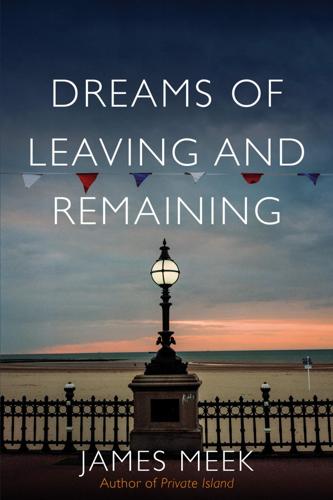
Dreams of Leaving and Remaining
by
James Meek
Published 5 Mar 2019
I remember my school history curriculum bigging up Turnip Townshend and Coke of Norfolk, the great landowner reformers of the eighteenth and nineteenth centuries, who did such clever things, and raised yields, with crop rotation and clover and rationalising peasants off their bitty fragments of the commons. This narrative of the agricultural revolution has come under attack in recent years. The most frequent line of criticism is that the likes of Townshend and Coke weren’t innovators, but brilliant publicists and proselytisers who worked out how to systemise and promote much older ideas. A fiercer attack came from Robert Allen in 1992 in his book Enclosure and the Yeoman. Allen described two English agricultural revolutions, one by small yeoman farmers in the seventeenth century, another by landlords in the eighteenth. The yeomen’s revolution, he maintained, led to a big increase in crop yields, with the same amount of labour; the landlords’ revolution used less labour to grow the same amount of crops.
…
He was foreign secretary when Britain had two of them, one for Protestant countries and another for Catholic and Muslim ones (Townshend’s was the northern department). Then he fell out with Walpole, retreated to his estate and devoted himself to farming so successfully (hence the nickname: he proselytised for turnips) that in popular history Raynham competes with Coke’s Holkham to be considered the birthplace of the British agricultural revolution. It was an awkward meeting. Lord Townshend agreed to see me after a personal introduction, and I thought I’d explained in advance who I was and what I was writing about, but it turned out he believed I was writing a historical piece about agriculture. He’d hoped he might be able to sell me some time in Raynham’s archive of 2.5 million documents, which he’s trying to catalogue and commercialise.
…
This kind of mechanised, chemical-intensive, large-scale farming is widespread around the world, wherever farmers can afford fertiliser. Lord Townshend told me how he’d been assured by the Algerian minister of agriculture that ‘Turnip Townshend was where we started learning our agricultural procedures.’ The principles of the aristo-capitalist agricultural revolution – big farms replacing small ones, maximising food production through science – were followed by twentieth-century socialist progressives. David Laborde, of the International Food Policy Research Institute, pointed out to me that this kind of farming rendered absurd notions of food self-sufficiency for Britain, or even Europe.

Money: Vintage Minis
by
Yuval Noah Harari
Published 5 Apr 2018
Much like the Agricultural Revolution, so too the growth of the modern economy might turn out to be a colossal fraud. The human species and the global economy may well keep growing, but many more individuals may live in hunger and want. Capitalism has two answers to this criticism. First, capitalism has created a world that nobody but a capitalist is capable of running. The only serious attempt to manage the world differently – Communism – was so much worse in almost every conceivable way that nobody has the stomach to try again. In 8500 BC one could cry bitter tears over the Agricultural Revolution, but it was too late to give up agriculture.
…
The band was economically independent; only a few rare items that could not be found locally – seashells, pigments, obsidian and the like – had to be obtained from strangers. This could usually be done by simple barter: ‘We’ll give you pretty seashells, and you’ll give us high-quality flint.’ Little of this changed with the onset of the Agricultural Revolution. Most people continued to live in small, intimate communities. Much like a hunter-gatherer band, each village was a self-sufficient economic unit, maintained by mutual favours and obligations plus a little barter with outsiders. One villager may have been particularly adept at making shoes, another at dispensing medical care, so villagers knew where to turn when barefoot or sick.
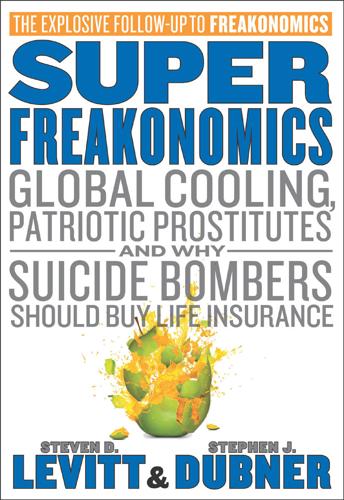
SuperFreakonomics
by
Steven D. Levitt
and
Stephen J. Dubner
Published 19 Oct 2009
Even by 1750, there were just 800 million people. Famine was a constant worry, and the smart money said the planet couldn’t possibly support much more growth. The population in England had been decreasing—“essentially because,” as one historian wrote, “agriculture could not respond to the pressure of feeding extra people.” Enter the Agricultural Revolution. A variety of innovations, none particularly complex—they included higher-yielding crops, better tools, and a more efficient use of capital—changed farming and, subsequently, the face of the earth. In late eighteenth-century America, “it took 19 out of 20 workers to feed the country’s inhabitants and provide a surplus for export,” wrote the economist Milton Friedman.
…
In late eighteenth-century America, “it took 19 out of 20 workers to feed the country’s inhabitants and provide a surplus for export,” wrote the economist Milton Friedman. Two hundred years later, only 1 of 20 American workers was needed to feed a far larger population while also making the United States “the largest single exporter of food in the world.” The Agricultural Revolution freed up millions of hands that went on to power the Industrial Revolution. By 1850, worldwide population had grown to 1.3 billion; by 1900, 1.7 billion; by 1950, 2.6 billion. And then things really took off. Over the next fifty years, the population more than doubled, reaching well beyond 6 billion. If you had to pick a single silver bullet that allowed this surge, it would be ammonium nitrate, an astonishingly cheap and effective crop fertilizer.
…
Churchill, 1882); Atul Gawande, “The Score: How Childbirth Went Industrial,” The New Yorker, October 2, 2006; and Stephen J. Dubner, “Medical Failures, and Successes Too: A Q&A with Atul Gawande,” Freakonomics blog, The New York Times, June 25, 2007. MORE FOOD, MORE PEOPLE: See “The World at Six Billion,” United Nations, 1999; Mark Overton, Agricultural Revolution in England: The Transformation of the Agrarian Economy, 1500–1850 (Cambridge University Press, 1996); and Milton Friedman and Rose Friedman, Free to Choose (Harvest, 1990; originally published 1979). Information from Will Masters, a professor of agricultural economics at Purdue, came from an author interview.
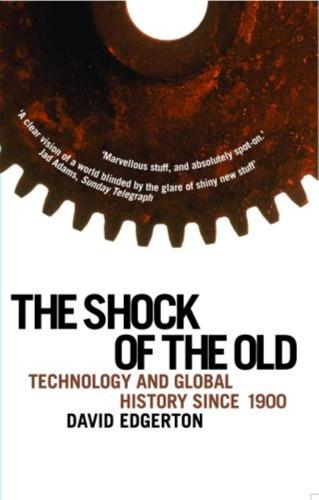
The Shock of the Old: Technology and Global History Since 1900
by
David Edgerton
Published 7 Dec 2006
These family plots of approximately one acre would be very important indeed in meat, egg, vegetable and fruit production, right up to the present day. The agricultural revolution in the long boom The phrase ‘green revolution’ is applied to the introduction of new varieties, irrigation and fertiliser to agriculture in the poor world in the 1960s. Partly because agriculture is associated with poverty and the past, and because of the focus on novelty, the even more significant agricultural revolution in the rich world was missed. In the rich world agriculture in the long boom saw much greater rates of labour productivity change than industry or services, and at much greater rates than before.39 In high land-productivity Britain, yields doubled in the post-war years from a very high base.
…
Brazilian aircraft carrier Minas Gerais (Tom Pietrasik) Index Figures in italics refer to captions; those in bold to Tables. 2,4-D herbicide 162–3 17 of October (ship) 94, 124 A A-bomb see atomic bomb abattoirs 173 abortificients 23 abortion 23 Abu Ghraib prison, Iraq 156 academic science, and invention 185–7 acid rain 121 acupuncture 49 Acyclovir 163 advanced gas-cooled reactors (AGRs) 21 AEG 193 aeronautical research 186 aeroplanes ix, xiv, 1, 3, 6, 28, 159, 191 appearance as a new technology 31 civil aircraft 117 and civilianised warfare 139 downplaying of military origins 142 hypersonic 38 killing by 146 and nationalism 116 powered aeroplane innovated in the USA 111 primarily a weapon of war 116, 158 R&D 197 supersonic 38 see also aviation; flight Afghanistan 145, 153 Africa death rate per car 27 guerrilla rebellions 152–3 malaria 27 sub-Saharan income per head 207 African National Congress 122 AGA range 57 Agency for International Development (AID) 157 agent orange 163 Agfa 130, 193 Agfacolor 130 agricultural revolution 64–6 agriculture family farms in the USA and USSR 62–4 horsepower xiii, 33–4 output 53 productivity 65, 74 shift to industry 52 Agrigento, Sicily 78 AIDS 25, 27, 49, 164, 207 Air France 21–2 air transport, cheap 115 air-conditioning 170 aircraft see aeroplanes aircraft industry 116, 158 airships 38, 50, 199 Al-Khahira (Cairo) jet trainer 125 Alang Beach, Gujarat, India 208 Albania 118, 131–2 Aliano, Basilicata, Italy 122–3 alkali 190 Allen & Hanbury 196 Almirante Latorre (battleship) 92 alternating current (AC) electrical systems 8–9, 176 alternatives assumption that there are no alternatives 6–7, 8 comparable alternatives 7–8 using a thing marginally better than alternatives 8 American Civil War 146 American Monarch (ship) 167 Amgen 202 AMO factory, Moscow 126 amodiaquine 26 analytical labs 192 animals husbandry 66 hybrids 190 killing 161, 164, 172, 173–6 anti-aircraft guns 14, 15 anti-malarials 164, 199 anti-missile systems 155–6 anti-virals 163 antibiotics 163, 190 antifungal treatments 164 apartheid 122 Apocalypse Now (film) 152 Arab oil embargo (1973) 122 Arab–Israeli wars 146–7 architecture ‘post-modern’ viii vernacular 41 Argentina builds a jet fighter 124–5 meat exports to Britain 172 national industrial development 118 the picana eléctrica 157 Argentina (liner) 124 Armament and History (Fuller) 141 Armenians 178–9 Armour meat packers 171, 172 Armstrong, Neil viii artillery fire 143, 144, 190 asbestos 42, 43, 211 asbestos-cement 42, 43 Asia: rice production 64–5 astronauts viii AT&T 193, 195 Atebrin (mepacrine) 25 atomic bomb xiv, 15–19, 21, 114–15, 117, 123, 138, 139, 158, 159, 185, 198, 199 atomic power 3, 6 Auschwitz–Birkenau extermination camp, Poland 121, 165, 180–81, 182 Australia maintenance and repair 80 meat trade 172 national industrial development 118 autarky 115, 116, 117–19 Autochrome process 193 autogiro 103 automation 2, 3, 85 Aventis 196 aviation 1, 19, 143 choices in aircraft construction 10 civil 6, 116 and empires 132 engine types 10 maintenance 87–91, 89 power of 141 supersonic stratospheric 3 see also aeroplanes; flight Axis Powers 18 AZT 164 B B-29 bombers 13, 15, 16, 123 B-52 bombers viii, ix, 95, 152, 155 ballistic missiles 154 Bangkok, Thailand long-tailed boats 47 Science Museum 28 Bangladesh motorised country-boats 48, 61 rice production 65 shipbreaking 208 barbed wire 146 Barham, HMS 93–4 BASF 119, 120, 121, 193 battleships x, xiv, 92–4, 93, 97, 141, 142, 143, 148–9, 154 Bayer 193, 194 Bayh–Dole Act (1980) 187 Beechams 196 Beef Trust 171 Belgrano (ARA General Belgrano) 94 Bell Labs 195, 196 Bell telephone 132 Belzec extermination camp, Poland 179 Bergius, Friedrich 120 Berlin–Baghdad railway xi bicycles x, 4, 45, 50–51, 58, 61 bidonvilles 41 Billingham plant, Stockton-on-Tees 119, 121 biological warfare 149 biotechnology 1, 185, 188, 192, 196, 202–3 Biro, Ladislao José 103 biro pen 103 birth control 23 Bishop, Billy 114 Bloodhound anti-aircraft missile ix Blue Star Line 172 boats fishing 49 long-tailed 47–8 motor torpedo 68 motorised country-boats 48–9, 61 bomber aircraft viii, ix, x, xiv, 9, 13, 13–16, 18, 95, 97, 123, 143, 147, 148, 150, 152, 155 Bomber Command 14 bombing atomic 15–19 conventional 12–15 ‘dumb’ bombs 155 ‘smart’ bombs 155 targets 12–13, 14, 15, 16 Borges, Jorge Luis 94 boundaries 117, 131, 132 branding 71 Braun, Werner von 18 Brazil (film) 75 Brezhnev, Leonid 102 Bristol Jupiter engine 88 Britain agricultural yields 64 autarchy 118 aviation 104, 111 car production 69 coal consumption ix cotton industry 36–7, 105, 190 economic growth 206 executions 176 horsepower in First World War 35 maintenance and repair 80 meat imports 172 output per head 109 privatisation of railways 87 R&D 109 railway workshops 98 steam power ix, 105 television 131 truck production 69 two-way movements between Britain/France and Britain/India 111–12 British Airways 21–2 British Electrical Development Association 56 British Empire 135 Brunnental, Soviet Union 62–3 Bumper V-2 rocket 2 Burmese army 145 Burney, Commander Sir Charles Dennistoun 167 buses ix, 96, 98, 191 C cable TV x, 49 Calcutta: rickshaws and cycle-rickshaws 45–6 Cambodia 182 Camden Market, London 33 camels 35 caravans 28, 30 cameras, replica 50 Canada: maintenance statistics 79 cap, the 24 Cape Canaveral, Florida 2 capitalism 76, 128 carbon monoxide 121, 179–80 Carrier, Dr Willis H. 170 Carrier Corporation 170 carrier pigeons 43 Carson, Rachel: Silent Spring 163 carving 28 CASA company 125 cavalry units 35 CDs 7 cement ix, 45 ceremonial occasions: use of reserve technologies 11 Césaire, Aimé 133 CFC gases 211 Chamoiseau, Patrick: Texaco 42–3 Cheliabinsk, Soviet Union 126 Chelmno extermination camp, Poland 179 chemical warfare 164 chemicals 1, 105, 188, 191, 192 chemistry 2, 130, 185, 186 organic 185 synthetic 4, 185 Chicago meatpackers 129–30, 171–5 chickens 66, 163, 164, 174–5 China agriculture 73 and Albania 131–2 atomic weapons as ‘paper tigers’ 19 autarchy 118 bicycle production 45 collective farming abolished 73 control of the internet 137 cotton textiles 65 Cultural Revolution 45, 72 economic growth 109, 112, 207 economy 73 executions 177 export of containers 74 foreign enterprise 137 ‘four big belongings’ 58–9 Great Leap Forward 44–5, 73 a hydraulic society 76 imitation of foreign technologies 112 industrialisation 73 links with Soviet Union (1949–60) 131 low-tech exports 137 Maoists 152 nationalism 137 old small scale technologies 72–3 pig production 66 produces Soviet technology 44 promotion of small-scale rural industries 72–3 rural industries 73 second Sino–Japanese War 140, 179 steel production 73 ‘technological dualism’ 44 Chinese Communist party 73 Chinese First Automotive Works 126 chlorinated organic compounds 161–2 chloroquine 26, 164 cholera 25 Ciba 196 Ciba-Geigy 26 Cierva, Juan de la 103 cinema ix, 203 cities of the poor world 39–40 clinical trials 11–12, 201 clothes: trade in old clothes 81 coal consumption ix hydrogenation of 120, 121–2, 186, 199 Cold War 123 ‘cold-chains’ 170 collectivisation 63, 64, 127 colonialism 39, 134 Common Market 119, 175 communications technologies xiv, 2 Communist movement 60 Companhia Energética de Sao Paulo 99 computer-numerically-controlled machine tool 158–9 computerisation 2 computers ix–x, 1, 158 analogue 7, 9 cheap PCs 71 digital 3, 6, 7, 9 initial cost as a percentage of lifetime cost 78 Concorde 21–2, 38, 96–7 condoms 1, 22–3, 24, 25, 49, 190 Congo War, second 146 contraception vii, x, 1, 22–5, 49, 190 cooking ranges 57 copper 73 corn, hybrid 64 corporate research laboratories 192 corrugated iron 41–3, 50–51, 78 cost-benefit analysis 11–12, 21, 142 cotton industry ix, 36–7, 65, 105, 136 Cotton Industry Act (1959) 38 credit agreements xv creole technologies xii, 39, 43–5, 46–7 creolisation of technology 85 Cuba 36, 207 Cudahy meat packers 171 cultural lag viii, 141, 212 Cultural Revolution 45, 72 cultural significance, measurement of 1 cycle-rickshaws 46–7, 48–9, 191 D Daktarin 164 Dalén, Nils Gustav 57 Datong Locomotive Works, China 50 DC-3 airliner 88, 197 DC-4 aircraft 197, 198 DC-6 aircraft 88 DC-8 jet 88, 197 DDT 26–7, 38, 162–3, 162 De Niro, Robert 75 de-globalisation 212 dependence 39 depression 37 Derwent jet engine 123 design 71 Detroit automation 86 Deutsches Museum, Munich 104 development labs 192 Dewoitine, Emile 125 diaphragm 24 diesel engine 3 differential analysers 7 diffusion vii Digital Signal Processing chip 195 direct current (DC) electrical systems 8, 9, 176 division of labour 72 Dnieper complex, Soviet Union 127 dockyards 91 domestic equipment 81 domestic production 56 ‘domestic science’ 56 domestic servants 56 domestic technologies xiv, 4, 56 domestic work, scientific organisation of 56 donkey carts 28, 30, 49 Dornier, Claude 125 douches 23 Dreadnought (battleship) 92 dreadnoughts 92, 148 Dufay process 130 Du Pont 20, 158, 193, 194–5 Durex 25 E East Germany: hydrogenation 121 Eastman Kodak 130, 193 economic growth 5, 52, 108, 109, 110, 206–7 economic history 3 economies of scale 71 ECT (electroconvulsive therapy) 38 Edison, Thomas 176 Edwards Air Force Base, California viii Egypt Ancient 76 aviation 126 Einsatzgruppen 179 ELAS resistance movement 60 electricity x, 1, 3, 6, 76–7, 185, 188, 190, 192 increased usage 5 electrification 2, 6, 32 electrocution/electric chair 165, 176, 177, 178 electronic communication: change in price 6–7 electronics 3, 99, 105, 191 Elizalde 31 Elliot, Gil: The Twentieth Century Book of the Dead 145–6 EMI 130, 131 empires 132, 134 employment in agriculture 53 in industry 53 service industries 53, 70 enclaves for European colonisers 134 engineering 19 masculinity of 101 mass production 67 engineers xiii, 100–102, 192–3 state 101 engines jet 10 petrol 10 Erikson, Gustaf 95 Europe car accidents 27 car production 69, 70 uptake of new technologies 32 European Union (EU) 200, 206 Eva Péron (liner) 124 F Fairchild Semiconductor 195, 203 Fairfree (factory stern trawler) 167 Falklands war 94 Far East growth rates 207 Faust, Mrs Mary 54 fertilisers 44, 45, 50, 64, 65, 67, 119–20 fertility control 23 feudalism 76 Fiat 69, 127 fibre-optic cables 7, 49 firing squads 176 First World War 31, 34, 34–5, 130 battleships x, 148, 149 casualty rates 146 chemical warfare 164 a chemist’s war 138 deaths 143 developments in artillery practice 143 H.
…
199–203 the most important 4 new inventive institutions 192–8 stage models of invention 188–91 time of maximum use 4–5 inventors: seen as ahead of their time vii, viii investment expenditure 79 Iran 153, 154 Iran–Iraq wars (1980s) 149, 153–4 Iraq, US-led invasion of (2003) 153 IRI (Industrial Reconstruction Institute) 118 iron 2, 19, 44 corrugated 41–3, 50–51, 78 galvanised 41 ironer 38 irrigation 64, 65, 76 Italy aviation 104–5 car ownership 69 economic growth 112 imitation of foreign technologies 112 output per head 109 R&D 109, 110 under fascism 118, 122 IUD 25 J Japan agricultural productivity 65 bicycle industry 98 bombing of in Second World War 15, 16 car industry 136, 194 consumer electronics 105, 136 cotton industry 37, 136 economic growth 108, 109, 110, 112, 206 electrical firms 194 energy use levels 209 imitation of foreign technologies 112, 136 industrialisation 73 inventiveness 200 R&D 108, 110, 136 repair workshops 99 second Sino–Japanese War 140, 179 sewing machine production 58 war production 15 whaling 166 Japanese Navy 92–3, 136 jet engines 88–9, 103 jet fighters 123–5, 135 Jews, and the Holocaust 146, 179, 181 Jiefang (Liberation) trucks 126 Johnson and Johnson 196 Jones, Frederick 170 Jutland, battle of 148 K Kamprad, Ingvar xii KC-135 air-refuelling tanker 95 Kenya: road accidents 27 Kharkov tractor factory 126 Khrushchev, Nikita 128 killing 160–83, 212 executions and other killings 176–8 innovation in killing 160–65 killing animals in the long boom and after 173–6 slaughterhouses 168–73, 171 technologies of genocide 178–83 whaling and fishing 165–8 Kirov plant, Soviet Union 126 Kitty Hawk, North Carolina viii Klystron microwave generator 186 Kodachrome 130 Kokura Arsenal, Japan 16 Koolhaas, Rem 39 Korea 109, 123, 136, 200 Korean War 13, 151, 152 Korn, Arthur 193 Kuwait 155 Kyoto, Japan 16 L Lada car 127 lascars 135–6 lathe 4 Latin American dependency theorists 118–19 Latour, Bruno x Le Corbusier xii League of Nations 129 Leblanc process 190 leisure, technologies of 55 Lenin, Vladimir 128 Lenin Dam, Soviet Union 127 lethal injection 165, 176, 177, 178 Leuchter, Fred A. 181–2 Leuna, Germany 119, 120 Leverkusen, Germany 194 Libertad (liner) 124 Liebig, Justus von 171 Liebig Extract of Meat Company 171, 171, 172 Lindberg, Charles, Jr 104 lobotomy 38 London Red Routemaster buses 96 Science Museum 29, 104, 139 London Underground trains 96 long boom 52, 53, 74, 110, 163 agricultural revolution 64–6 cars 68–70 Eastern European economies 69 spectacular growth in 206 lorries 98 Los Alamos, New Mexico 16, 123 Lubitsch, Ernst 101 Lucent Technologies 195 Luftwaffe 122 Lumière brothers 193 lynchings 178 M MacArthur, General 26 Magnitogorsk steel works, Soviet Union 127, 208–9 Magnox reactors 21 mail order catalogue xiv maintenance 75–102 of ancient ruins 78 aviation 87–91, 89 the battleships and bombers 91–7, 93 downtime 86 engineers and the maintenance of society 100–102 from maintenance to manufacture and innovation 97–9 how important are maintenance and repair?
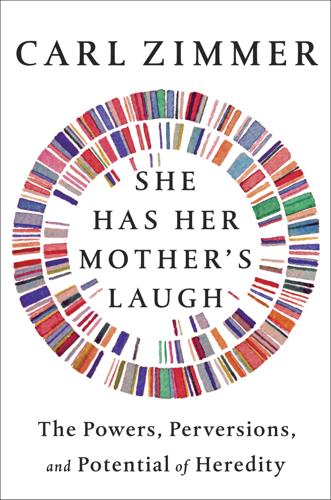
She Has Her Mother's Laugh
by
Carl Zimmer
Published 29 May 2018
De Vries came to Santa Rosa to learn what Burbank had learned about heredity in order to push genetics out of its infancy. * * * — Pottery shards, ancient seeds, and the bones of livestock all indicate that the first breeders started their work in earnest around eleven thousand years ago. Plants and animals, once wild, came under the control of humans, grown for their benefit. The agricultural revolution let the population of our species explode, but it also made us precariously dependent on the heredity of what we raised. When farmers planted a new field of barley seeds, or goatherds delivered a new batch of kids, they needed each new generation of plants and animals to end up like the previous one.
…
The same capacity for cumulative culture that had already spread humans to all the continents save Antarctica now allowed them to convert the wild lands around them into farm fields and grazing pastures. Children in these agricultural communities inherited traditions for farming, and they also inherited lands that had been converted from wilderness long before they were born. The Agricultural Revolution lofted our species to a far bigger population than before, leaving some farmers desperate for land. They moved into open territories still inhabited by hunter-gatherers, bringing with them the entire package of agriculture: not just the seeds for crops but also their livestock, their saddles, their hoes, and their inherited wisdom about how to use all of it to harvest food, brew beer, sew leather shoes, and all the rest of their cultural practices.
…
As they learned how to work metals, they could make sickle blades or horseshoes. The environment in which much of humanity was now born had become a domesticated landscape, covered by farms as well as by houses, roads, villages, and cities. * * * — It was cultural heredity that led to an agricultural revolution, and it was that revolution that fostered the practice that gave heredity its name. Heirs began to inherit great wealth from their ancestors. There was nothing new about parents bequeathing valuable things to their offspring. You could argue that our reptilian ancestors were doing it 300 million years ago.
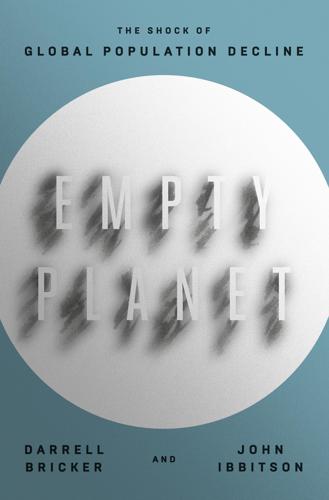
Empty Planet: The Shock of Global Population Decline
by
Darrell Bricker
and
John Ibbitson
Published 5 Feb 2019
Islam preserved knowledge lost to the West with the fall of Rome, even as India discovered the zero, which made so much possible. The latest plague produced the latest antibodies to resist it. In Eurasia, at least, immunity became a powerful tool of progress. The planet’s population grew from those few thousands in the wake of the Toba eruption to between five and ten million during the first agricultural revolution. At 1 CE there were perhaps three hundred million. By 1300 CE, with China united, enlightened, and advanced under the Song Dynasty, Islam stretching from India to Spain, and Europe finally emerging from its post-Roman Dark Age, the global population had peaked at around four hundred million.12 And then the most terrible thing happened.
…
Mechanized production accelerated productivity—the factory, the railway, the telegraph, electric light, the internal combustion engine. Those last three inventions were American; the United States was growing in wealth and power and confidence in the wake of its civil war. Thanks to the industrial and agricultural revolutions, people started living longer. Now that famine and pestilence were on the wane, couples married earlier and had more children. And those children were more likely to survive, thanks to improved sanitation and the introduction of the smallpox vaccine, another scientific leap. The Victorian era was the first in human history to witness rapid and sustained population growth, as Europe and the United States raced to catch up with Great Britain.
…
And yet almost all of us today live longer, healthier, happier lives than the poor of England in the time of Malthus. This pioneer political economist, who lived much of his life among the green fields of Hertfordshire, literally stood in the middle of the explanation for why his theory was hopelessly flawed. By 1798, the British agricultural revolution was already a century old. It began with the enclosures, in which powerful men banished peasant farmers from communally owned fields. To this day, poets lament the theft, but farmers who controlled their fields could innovate so as to maximize yields and profits. New experiments in selective breeding took the average weight of a cow carcass from 370 pounds in 1710 to 550 pounds in 1795.58 People like Viscount Charles “Turnip” Townsend experimented with turnips, clover, and other crops to improve soil quality and reduce the need for fallow fields.59 And then there were the inventions: Jethro Tull’s seed drill, the threshing machine, the reaping machine, the all-iron plow.

The Globotics Upheaval: Globalisation, Robotics and the Future of Work
by
Richard Baldwin
Published 10 Jan 2019
There was a century between Newcomen’s engine and the first commercially viable steamships. Revolutions are never just one thing. The steam impulse was matched by a very different but complementary impulse in the agricultural sector. It started with a land ownership shockwave called “enclosure.” British Agricultural Revolution The British agricultural revolution started with the enclosure movement in the 1600s. This involved the fencing (enclosing) of land that used to be open. Enclosing land ended the access that many rural families had to lands formerly held in common (in the sense that any community member could graze animals on the land).
…
This drove people out of the agricultural sector since raising and sheering sheep commercially required far fewer workers than raising food for families. But it wasn’t just switches in ownership that put the revolution in the agricultural revolution. Enclosure firmed up property rights and thus encouraged adoption of more efficient farming techniques. One of the agricultural revolution’s red-letter innovations was a switch to the four-crop rotation system that heightened the productivity of land. Improved farm machinery also accelerated productivity. The classic examples include automatic threshing machines for grain; seed drills for planting; and improvements in farming tools, like the switch from wooden to iron ploughs.

In Our Own Image: Savior or Destroyer? The History and Future of Artificial Intelligence
by
George Zarkadakis
Published 7 Mar 2016
Whatever happened, by 40,000 years ago H. sapiens sapiens is alone on the world stage. The rate of change accelerates. Europe is ablaze with the colour of cave art between 30,000 and 12,000 years ago, although most of the continent remains frozen under the last Ice Age. Rapid global warming returns around 10,000 years ago, and the agricultural revolution takes place. We still live in that ‘long summer’ that began ten millennia ago, in the scientifically termed ‘Holocene period’. It took humans four million years to evolve the hand axe, another two million years to somewhat improve it. And then, within a mere 20,000 years, a geological blink of an eye, they created art, agriculture, the wheel, computers and spaceships.
…
To understand the vital significance of totemic thinking for the survival of our forefathers and foremothers, let us revisit Ice Age Europe circa 17,000 years ago. The continent is at its coldest. Never before have humans lived in an environment harsher than the one that these ancient hunter-gatherers endure. This period is called ‘the Magdalenian’3 and lasts until around 10,000 years ago when the last Ice Age ends, and the agricultural revolution begins. Equipped with a general-purpose language and general intelligence, our species applies their evolved minds to surviving the long and ruthless winter of the Ice Age. They innovate. Archaeologists have unearthed evidence of a major shift in hunting techniques from that period. Elaborate tactics, weapons, logistics and strategies are developed and employed.
…
Thinking through metaphor, feeling through narrative As we have seen, because of the way our storytelling brain has evolved it is impossible to think about anything without using metaphor and analogy. Both are linguistic tools for discovering, debating and pushing the boundaries of knowledge. They have served us very well since the Upper Palaeolithic. Thanks to them, we developed our technological civilisation. And we have considered how, as humankind progressed from the agricultural revolution to the Greco-Roman world, Renaissance, Enlightenment and the modern times, our metaphors for life and the mind have evolved and mutated. First came mud, then water or humours, then mechanics, the electric current or spark of life, followed by the telegraph and now the computer. For each of these metaphors, people have imagined automata, artificial artefacts set in motion by technologies that support the metaphors.

More: The 10,000-Year Rise of the World Economy
by
Philip Coggan
Published 6 Feb 2020
The Chinese had already developed a breast-collar harness, which was far superior to European versions but did not arrive in Europe until the eighth century CE. 31. Jerome Blum, “The rise of serfdom in Eastern Europe”, The American Historical Review, vol. 62, no. 4, July 1957 32. The folk rock group led by Ian Anderson was named after him. 33. See Professor Mark Overton, “Agricultural revolution in England 1500–1850” http://www.bbc.co.uk/history/british/empire_seapower/agricultural_revolution_01.shtml 34. Ibid. 35. Michael Turner, “Agricultural productivity in England in the eighteenth century: evidence from crop yields”, The Economic History Review, vol. 35, no. 4, November 1982 36. Carlo M. Cipolla, Before the Industrial Revolution: European Society and Economy 1000–1700, third edition 37.
…
Another way in which crops were spread round the world was when they came under the same political, or religious, authority. The spread of Islam meant that sixteen food crops, like rice, bananas and spinach, as well as cotton fibre, were diffused from India all the way to Spain. Growing many water-hungry crops required the creation of extensive irrigation systems; what has been dubbed an “Arab agricultural revolution” brought more marginal land into cultivation.24 The Mongols were also keen diffusers of new crops and even had a “cotton promotion bureau” to encourage the use of the plant in their possessions.25 Much later, the British, whose empire spanned the globe, were eager to get their hands on sources of rubber.
…
The political power of the nobility, and the relative lack of cities to which peasants could escape, seems to have contributed to this development. Serfdom would last for several centuries more.31 Perhaps this divide was crucial in economic history, paving the way for improvements in agricultural production and industrialisation in the west of the continent and leaving the east behind. The traditional explanation focused on an “agricultural revolution” in 18th-century Britain, which in turn paved the way for the Industrial Revolution. Tribute was paid to pioneers like “Turnip” Townsend, Jethro Tull and his seed drill,32 and Coke of Holkham Hall. Since then, however, the achievements of such people have been downgraded.33 However, it still seems clear that agricultural productivity in England did improve over the period, and this not only helped the population to grow but allowed workers to move off the farm and into the textile factories.

Grand Transitions: How the Modern World Was Made
by
Vaclav Smil
Published 2 Mar 2021
Subsequent widespread adoption of the practice had at least tripled nitrogen available to non-leguminous crops and began to raise long-stagnant staple grain yields (Campbell and Overton 1993). Chorley (1981, 92) concluded that this “generalization of leguminous crops and the consequent increase in the nitrogen supply . . . was of comparable significance to steam power in the economic development of Europe in the period of industrialization” and that it justifies the label of Agricultural Revolution. But this intensification of solar agriculture would not suffice to support growing populations—and hence a concurrent development saw the first applications of nitrogen fertilizers other than recycled organic wastes (manures and crop residues) and plowed-in green manures (leguminous cover crops).
…
Foundations for its study were laid down in the late 1950s and the early 1960s (Abramovitz 1956; Solow 1957; Kendrick 1961) and it has become a critical concept in modern evaluations of economic growth (Pasinetti 1981; Arena and Porta 2016). In modern economies it has been often the single most important factor explaining their expansion (Shackleton 2013). As for the declining dependence on land, attentive readers remember Chorley’s (1981) quotation referring to the British agricultural revolution: labor surplus created by rising agricultural productivity released workers for urban and industrial employment as the nation’s share of population in agriculture fell to 37% by 1760 and to 24% by 1841. Compared to these two factors neither expanded coal extraction or trade had the same immediate impact.
…
First, large numbers of city-bound migrants released from the countryside by gradual modernization of traditional farming made it possible to operate often highly labor-intensive tasks of material processing and only partially mechanized manufacturing. In the common (albeit misleading) terminology, no industrial revolution could have taken place without the preceding agricultural revolution. This labor push factor was potentiated by the effect of the already noted Engel’s law: reduced share of spending on food can be used to buy more manufactured products. Second, new opportunities in industrial production—enabled by technical advances and energized by the supply of inexpensive fuels and electricity—created a powerful labor pull factor.
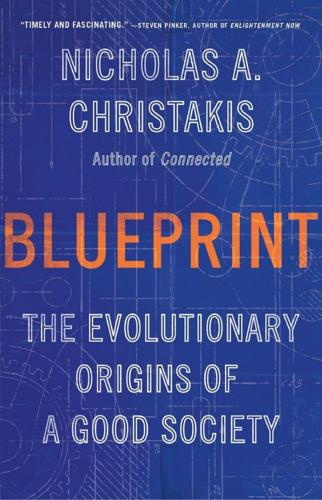
Blueprint: The Evolutionary Origins of a Good Society
by
Nicholas A. Christakis
Published 26 Mar 2019
We might then unify and examine the societies of various species, or (more narrowly) the societies within our own species—such as the shipwrecks, communes, scientific settlements, online experiments, and many other communities, such as colonial outposts, monasteries, prisons, boarding schools, nuclear submarines, trapped miners, space-habitation experiments, and so on. We could include modern forager societies that resembled the kind of societies our species formed prior to the agricultural revolution ten thousand years ago too. Such an exercise would shed light on just how similar human social organization really is across all these situations. To do this, we would have to define the key axes, just like Raup’s three parameters. One important axis might be the hypothetical size of the society, perhaps defined as the size at which people actually know the others in the group well, even if they are not close friends; this could range from, say, zero (meaning that no one knows anyone in our imagined society) to two thousand (each person knows two thousand other people intimately).
…
The reasons for this shift are complex but are believed to stem from adaptations to different kinds of environmental pressures, such as changes in food resources, which we will discuss in more detail below. And these shifts in behavior were paralleled by physiological changes, including the lack of outward signs of ovulation, the further extension of childhood, and menopause. Then another shift happened, beginning most likely with the agricultural revolution roughly ten thousand years ago, and continuing through the rise of nation-states about five thousand years ago (along with the large-scale socioeconomic inequality that emerged with such states), such that polygyny once again became more common.11 This shift was due to the pressure of historical and cultural forces, not evolutionary ones.
…
Mutual attachment solves an evolutionary conundrum. In essence, the Hadza research suggests that the evolutionary psychology of both men and women is to exchange love for support. Polygyny in Turkana Pastoralists How did things change for our ancestors after animals and plants were domesticated and the agricultural revolution laid the groundwork for wealth accumulation and economic inequality? Just five hundred miles to the north of the Hadza, in the Rift Valley of northwestern Kenya, the Turkana, who number about two hundred and fifty thousand, practice polygyny. Unlike the Hadza, the Turkana treat marriage more as a contract between families than a private arrangement undertaken by individuals.

The Taste of War: World War Two and the Battle for Food
by
Lizzie Collingham
Published 1 Jan 2011
The Depression had left farmers with huge surpluses of food which the unemployed urban workers could not afford to buy. By providing American farmers with a market for their food, and with a healthy income, the war pulled agriculture out of the Depression. A process of modernization, which had begun tentatively in the 1930s, was accelerated and a new agricultural revolution occurred which began to transform farming into the industry which it is today. Crucially, modernization allowed fewer farmers to feed significantly more people. The wartime boom in American agriculture meant that the United States was not only able to provide its enormous army and civilian population with plentiful quantities of food, it was also able to feed the soldiers and civilians of the Soviet Union, China and Great Britain.
…
This set post-war Kenya on a course towards internal conflict which came to a head seven years later with the Mau Mau conflict, when Kikuyu farmers rose in protest against repressive measures which deprived them of their land.78 A side-effect of this conflict was the consolidation of Kikuyu land-holdings which provided the basis for the 1950s ‘agricultural revolution’. Vegetable-planting schemes like the one associated with the long-closed military vegetable-drying plant were revived. African farmers were reorganized into high-productivity cash-crop farming and began growing European vegetables on a large scale. This is why Britain still imports fresh beans by air from Kenya.79 In the Rhodesias the political power of the settler communities had expanded to such a point that they were able to push through the creation of a Native Labour Supply Commission which recruited African labour to work on white farms right up until the 1970s, reinforcing the neglect of African farming.80 The bitter consequences of the resentments this caused are still being felt today in Zimbabwe (as Southern Rhodesia was renamed), where Robert Mugabe’s ‘land reform programme’ has dispossessed white farmers, and raging inflation has left the African population destitute, ravaged by hunger and a cholera epidemic in 2008.
…
He introduced new varieties of vegetables which were more amenable to mechanized harvesting such as ‘tomatoes with fruit that grew on accessible parts of the plant, [and] stringless beans’.163 Farmers were taught how to stagger the planting of peas so that as each successive field matured they could be fed through the canning factory.164 Seabrook introduced scientific methods for testing the starch content of the vegetables, to predict precisely when the crop should be picked for processing.165 Factories were sent pattern machines from America so that they could manufacture power-operated potato diggers, rotary weeders, and bean and pea harvesters.166 Using a pea harvester, a crop which used to take 1,500 pickers two weeks to harvest could be processed by fifteen men in days.167 Major Seabrook was praised by one contemporary historian for having ‘effected an agricultural revolution in this land’, without which ‘Australia could not have met the demands made upon her’.168 To complement the introduction of new vegetable-growing techniques, American experts overhauled the canning industry. Faulty end and side seams on the Australian cans had a tendency to let in bacteria.
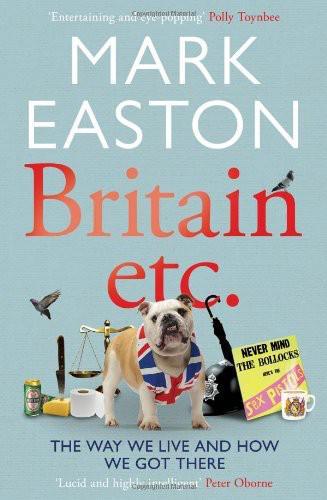
Britain Etc
by
Mark Easton
Published 1 Mar 2012
In March 1669, the diarist Samuel Pepys reflected the caution with which foreign fruit and veg were met in Britain, when presented with a glass of fresh orange juice. ‘I was doubtful whether it might not do me hurt,’ he wrote. Vegetables won an improved status in the rural economy when it was realised that including legumes like beans and peas in crop rotation dramatically improved soil fertility and yields. During the British agricultural revolution in the eighteenth century, the Whig Parliamentarian Lord Charles Townshend became convinced of the central role for the turnip in this new agricultural system, earning both the inevitable nickname Turnip Townshend and a reputation for boring the pants off anyone who engaged with him on the subject.
…
W. Lockley, Sleep: A Very Short Introduction (Oxford University Press, 2011) INDEX Acheson, Dean, ref1 acid (drug), ref1 Act of Consecration (UK), ref1 Act of Union (1707), ref1 adolescence, concept of, ref1 Advisory Council on the Misuse of Drugs, ref1 Age of Reason, ref1 agricultural revolution, ref1 AIDS, ref1 Ajax, ref1 alcohol and drinking, ref1 and antisocial behaviour, misconception concerning, ref1 Britain’s ‘intoxication culture’ concerning, ref1 and cultural differences, ref1 and expected behaviour, ref1 and fighting, ref1 and journalism, ref1 and links to social problems, ref1 and liver disease, ref1 and murder, ref1 northern European attitude to, ref1 and outdated licensing laws, ref1 pseudo-science about, ref1 and sexual assaults, ref1 southern European attitude to, ref1 UCLA study concerning, ref1 and UK courts, ref1 Washington State University experiment concerning, ref1 ale, real, ref1 Alfred, King, ref1 Alternative Regional Strategy, ref1 Aliens Act (1905), ref1 allotments, ref1, ref2 American Psychological Association (APA), ref1 Amis, Martin, ref1 anachronism, and Britishness, ref1 Anatomy of Swearing (Montagu), ref1 Anglo-Saxon Chronicle, ref1 [roman in text: OK?]
…
David, ref1 NVLA, ref1 obesity, ref1 obscenity, see bad language Observer, ref1 O’Donnell, Sir Gus, ref1, ref2 Ofcom, ref1 Oliver, Jamie, ref1, ref2, ref3 Olmstead, Frederick, ref1 On the Origin of Species (Darwin), ref1 One Tree Hill, ref1 open space, see public open space opium, ref1 in laudanum, ref1, ref2 Royal Commission on, ref1 Wars, ref1 see also drugs, recreational Orange Lodge, ref1 Organisation for Economic Cooperation and Development (OECD), ref1, ref2, ref3, ref4 d’Ortous de Mairan, Jean-Jacques, ref1 Osbourne, Ozzie, ref1 Oswald, Ian, ref1 Oxford, murders in, ref1 Oz, ref1 Paddick, Brian, ref1 paedophobia, ref1 Paine, Thomas, ref1, ref2, ref3 Palmerston, Lord, ref1 Panorama, ref1 Pantazis, Christina, ref1, ref2 pantomime, ref1, ref2 Papago people, drinking culture among, ref1 parasol, see umbrella Parental Advisory Scheme, ref1 Parliament: Acts of, ref1, ref2, ref3, ref4, ref5, ref6, ref7, ref8, ref9, ref10, ref11, ref12, ref13, ref14, ref15, ref16, ref17, ref18, ref19, ref20 and agricultural revolution, ref1 and coalition government, ref1 House of Commons, ref1, ref2 House of Lords, ref1, ref2 and Internet, ref1 kitsch fancy dress in, ref1 and obscenity, ref1 and public health, ref1, ref2, ref3, ref4, ref5 and social capital, ref1 State Opening of, ref1 televised, ref1 see also monarchy Partridge, Eric, ref1 paruresis, ref1 Pauper Pedigree Project, ref1 Paxton, Joseph, ref1 Payne, Sarah, ref1 Pearl Harbor, ref1 pedagogy, ref1 Peel Park, ref1 Peel, Sir Robert, ref1, ref2 penal code, ref1 Pennsylvania Railroad, ref1 Pentagon, ref1 People’s Palace, ref1 Peplau, Letitia Anne, ref1 Pepys, Samuel, ref1, ref2, ref3 Peru, ref1 Peter Pan (Barrie), ref1 philanthropy, ref1, ref2 Philips Park, ref1 Phillips, Pearson, ref1 The Philosophy of Sleep (Macnish), ref1 Pickles, Eric, ref1 Pitlochry, ref1 Plato, ref1 Plough Green, ref1 Plumstead Common, ref1 Poitiers, Battle of, ref1 Poland, ref1, ref2 police: affection for, ref1 beat constable, ref1 passim characteristic helmets of, ref1 on demonisation of young people, ref1, ref2, ref3 in Kansas, ref1 and neighbourhood policing, ref1 patrol cars adopted by, ref1 targets for, ref1 see also crime; Dixon, George; knife crime; Morse, Ch.
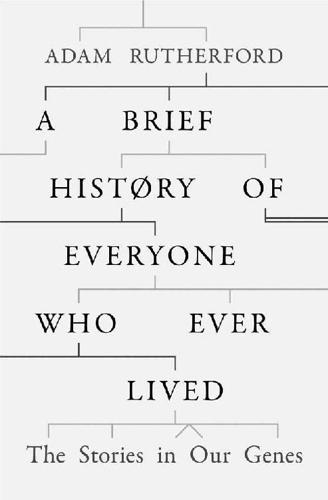
A Brief History of Everyone Who Ever Lived
by
Adam Rutherford
Published 7 Sep 2016
The ‘Paleo Diet’ is a popular fad that eschews processed foods and carbohydrates in favour of the only foods imagined to be available to the hunter-gatherers of the Palaeolithic: no dairy or processed grains, no lentils, beans, peas or other human designed veg. Nuts are OK, but no peanuts, as they’re a farmed product. It is almost certainly built on bunkum foundations, as indeed most fad diets are. By the time of the agricultural revolution, we see multiplication and expansion of genes that encode salivary amylase, an enzyme in your spittle that initiates the digestion of complex molecules. Some people have eighteen copies of it, but chimpanzees only have two. Amylase digests starchy, carbohydrate rich foods, and helps generate glucose from them, which would provide much needed energy for the evolving and highly energetic brain.
…
As with all fad diets it probably works a bit, but not because of the content of the diet itself, but because the act of dieting prompts people to eat less and think more about their food, and not to shovel huge portions of pasta or chips on their supper plates. So go ahead and diet, but don’t pretend that it’s based on some evolutionary precedent. And remember that whatever we did in the deep past, we live longer and better now than at any point in the history of humankind. Regardless, the agricultural revolution that occurred at the beginning of the current epoch, the Holocene, coincided with the first evidence for farming, even though the reasons for this revolution remain unclear. But it did irreversibly change everything. This transition to a domestic life fundamentally changed us in our bones and our genes, as we’ll see soon.
…
I like to ponder how entirely unnatural they are, how they’ve been designed and built over thousands of years, how the hedgerows – so critical to the biodiversity of the land – were put there by people to separate crops and animals and predators and property. Even the coarse wild brush in the highlands of Scotland and much of northern England has been grazed and unnaturally tended and grazed again continually for millennia. Estimates are that the hunter-gatherers who were all but wiped out by the agricultural revolution numbered around 2 million 12,000 years ago. Agriculture spread like a virus over the continents from its birth somewhere in the Middle East (and dotted in other spots in Africa and China), and would be the dominant business of humans for most of the rest of history. Farming today is industrial, and dominated by monolithic corporations who control almost all the food we eat.

The New Nomads: How the Migration Revolution Is Making the World a Better Place
by
Felix Marquardt
Published 7 Jul 2021
What if the healthiest responses to the rise of nativism and the politics of hate and the environmental and social crises we now face were far more likely to come from the more conservative (but also more conservationist) land rather than from more liberal, techno-enthusiast urban bastions? Something profound happened to the human mind when the agricultural revolution turned us from an overwhelmingly nomadic species into an overwhelmingly sedentary one. The original meaning of ‘economy’ (οικονομός, oikonomós) was management of the household. The oxymoronic nature of the modern phrase ‘global economy’– calling ‘management of the home’ the act of burning said home to the ground – has been lost on us for far too long.
…
Viewed like this, our development since becoming a sedentary species, five minutes or 10,000 years ago, might be seen as an open parenthesis. Covid-19 allows us to pause, and consider whether we should close it. Before you ask, I am not suggesting that we go back to living in trees or caves. I am no neo-Luddite, and I am grateful for the many gifts bequeathed to us by the agricultural revolution. But the time has come for our civilisation to break with the Othering phase of our development, just as children do, and to start treating ourselves, each other and the rest of nature as different parts of the same metabolism. We have spent the vast majority of our time on earth in small groups of less than one hundred nomads, on the move, certainly, but above all experts of the local.
…
Aaron (ranch mechanic, Montana) 3, 4, 5, 7–8, 14, 166, 234 Abkhazia 175–7, 178 Achour, Mouloud 124, 125 Afghanistan 3, 9, 10, 84, 140 Africa 20–1, 44, 53, 83–4, 96–7, 220 African American immigrants in 63, 67–8, 114–15 China, African immigrants in 130–9 climate change and 90, 217 emigration to 83–5, 93–9, 100, 102, 107, 114–15, 119, 122, 229, 236 entrepreneurship in 75–90 Europe, African migrant journeys to 9, 122, 148–50, 152, 157, 160, 238 Europe, African refugees in 9, 148–57, 158, 161, 167, 229, 236, 238 France, African immigrants in 38, 52, 115, 124 gerontocracy in 126–7 ‘out of Africa’ migration of early humans 9, 18, 69 racism in 7, 115 US, African immigrants in 1–8, 12, 13–14, 21–2, 47, 59, 68, 133, 206, 218, 224, 232–4, 233, 234, 235, 238, 241 African American 44, 111–15 agricultural revolution 222, 227, 228 air travel 73, 198, 214, 216–18 Allt, Nicky 59–63, 68, 220, 229 Al Sarajj, Mustafa 179–82 American Civil War (1861–5) 1 American dream 20, 35, 72, 73, 81, 196, 211, 234 American Exceptionalism 28, 35 American Family Radio 3 Amore Gelato 143–4 Andreotti, Vanessa 238 Aneesa (entrepreneur) 75–6, 79, 80, 81, 82 anywheres (self-perceived as mobile, educated and progressive) and somewheres (more grounded and ‘real’, conservatives rooted in the place of their birth) divide 41, 223, 234, 236 Anzisha Prize 99 Apothéose (group of rappers) 45–6, 48 Arabo-centrism 24–5 Asquith, James 195 asylum seekers 152, 158, 161, 167 see also refugees Atsoko 84–5 Attali, Jacques 188, 195 Augustine of Hippo: The City of God 20–1 Australia 1, 47, 72, 73, 96, 161, 162, 178 emigration to London from 102–7 migration to 72–3, 102–4, 126, 140 Austria 24, 26, 36, 41, 42, 47, 62 banlieue, Paris 51, 55, 115 ‘Barrez-vous!’
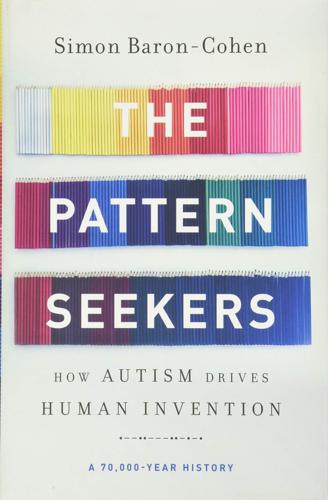
The Pattern Seekers: How Autism Drives Human Invention
by
Simon Baron-Cohen
Published 14 Aug 2020
Finally, agriculture did not lead to working less—rather, humans now had to toil on the land and their quality of life became far worse. See S. Lev-Yadun et al. (2000), “The cradle of agriculture,” Science 288(5471), 1602–1603; C. Larsen (2006), “The Agricultural Revolution as environmental catastrophe: Implications for health and lifestyle in the Holocene,” Quaternary International 150(1), 12–20; and G. Barker (2006), The Agricultural Revolution of prehistory: Why did foragers become farmers? (Oxford: Oxford University Press). 39. A wheel is not just a circular object that can rotate, but also one that attaches to an axle bearing (a bearing being something that can support or bear something else).
…
When we gaze at the world, we also see a myriad of natural systems: the changing weather as snowflakes fall, the movement of the wings of a dragonfly, the motion of tidal waves—all amenable to an if-and-then pattern analysis, and which we can use to make predictions: if there are cumulonimbus clouds in the sky, and there is thunder, then there will be severe weather.15 Such a prediction can be a very useful early-warning system. With other natural systems, once we have analyzed the if-and-then rule, we can control the system, as when humans invented agriculture. (For example, if a tomato seed is in the soil, and the soil is moist, then the seed will grow into a tomato.) The agricultural revolution 12,000 years ago transformed how humans lived, from a nomadic hunter-gatherer lifestyle that enabled us to feed our families, to the first farms that then enabled us to feed a whole village. Or consider another natural system. The invention of medicine, unique to humans, answered specific questions, such as “Why did my headache go away?”

Whole Earth Discipline: An Ecopragmatist Manifesto
by
Stewart Brand
Published 15 Mar 2009
Each time, forests grew back rapidly over empty agricultural land and drew down carbon dioxide. If Ruddiman is right, climate has been a human artifact, a highly sensitive one, for a long time. “The end of nature,” to use Bill McKibben’s famous book title, didn’t begin two hundred years ago with the Industrial Revolution but ten thousand years ago with the agricultural revolution. Farm and pasture land now takes up over a third of the world’s ice-free land surface. Ruddiman notes that “farming is not nature, but rather the largest alteration of Earth’s surface from its natural state that humans have yet achieved.” Furthermore, “A good case can be made that people in the Iron Age and even the late Stone Age had a much greater per-capita impact on the earth’s landscape than the average modern-day person
…
From 1998 to 2004, he was president of the Rockefeller Foundation, and during that time he wrote an important book, The Doubly Green Revolution (1999). It noted the shortcomings of the original green revolution (excessive water use, excessive advantage to rich farmers, neglect of soil maintenance) and proposed how to remedy them. Conway expects the doubly green agricultural revolution to expand opportunities for the poorest farmers and to emphasize conserving natural resources and the environment while using GE to increase yield yet further. “Our capacity to build ecology into the seed,” he writes, “is largely a consequence of modern biotechnology.” The new “gene revolution” will be more adroit than the green revolution for two reasons but harder to implement for one reason, which he is trying to fix.
…
“Greenpeace will fight to keep GE bananas, cassava, and sorghum from poor countries’ fields, just as it will keep opposing golden rice, says Janet Cotter of Greenpeace’s Science Unit in London.” That quote was in an April 2008 issue of Science. • A journalist I know, Gregg Zachary, wrote in 2008 about a little-noticed agricultural revolution going on in Africa:Exports of vegetables, fruits, and flowers, largely from eastern and southern Africa, now exceed $2 billion a year, up from virtually zero a quarter-century ago. . . . “The driver of agriculture is primarily urbanization,” observes Steve Wiggins, a farm expert at London’s Overseas Development Institute.
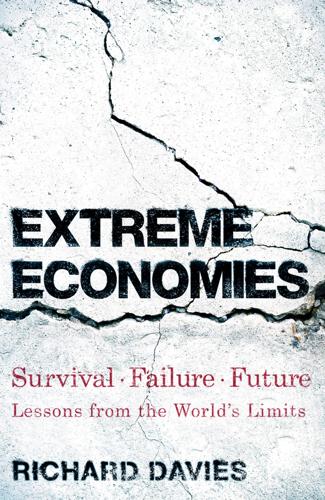
Extreme Economies: Survival, Failure, Future – Lessons From the World’s Limits
by
Richard Davies
Published 4 Sep 2019
Baburin, A., Lai, T., and Leinsalu M., ‘Avoidable Mortality in Estonia: Exploring the Differences in Life Expectancy Between Estonians and Non-Estonians in 2005–2007’, Public Health, 125, 754–62. Brynjolfsson, E., and McAfee, A. (2012), Race Against the Machine: How the Digital Revolution is Accelerating (Digital Frontier Press). Chambers, J. D., and Mingay, G. E. (1966), The Agricultural Revolution 1750–1850 (London: B. T. Batsford). Clark, G. (2002), The Agricultural Revolution and the Industrial Revolution, Working Paper, University of California, Davis. ———— (2005), ‘The Condition of the Working Class in England, 1209–2004’, Journal of Political Economy, 113, 1307–40. Deane, P. (1969), The First Industrial Revolution (Cambridge: Cambridge University Press).
…
On the role the system plays in allowing personal control of private data, see Priisalu and Ottis (2017); on the use of the system by private sector companies, see Paide et al. (2018). Logistics and the labour market Data on transport and logistics in the labour market are from Statistics Estonia, the Bureau of Labor Statistics (US) and the Office for National Statistics (UK). The early agricultural revolution On the importance of crop innovations and how these ideas diffused across the UK, see Overton (1985); on improvements to livestock breeding by Robert Bakewell, see Wykes (2004). On the importance of mechanization in farming and of how individual farmers are promoters of change, see Fox and Butlin (eds.) (1979).
…
OECD (2018), ‘Bridging the Rural Digital Divide’, OECD Digital Economy Papers, No. 265 (Paris: OECD). Overton, M. (1985), ‘The Diffusion of Agricultural Innovations in Early Modern England: Turnips and Clover in Norfolk and Suffolk, 1580–1740’, Transactions of the Institute of British Geographers, 10 (2), 205–221. ———— (1996), Agricultural Revolution in England: The Transformation of the Agrarian Economy 1500–1850 (Cambridge: Cambridge University Press). Paide, K., Pappel, I., Vainsalu, H., and Draheim, D. (2018), ‘On the Systematic Exploitation of the Estonian Data Exchange Layer X-Road for Strengthening Public-Private Partnerships’, in Proceedings of the 11th International Conference on Theory and Practice of Electronic Governance, ICEGOV’18, April.
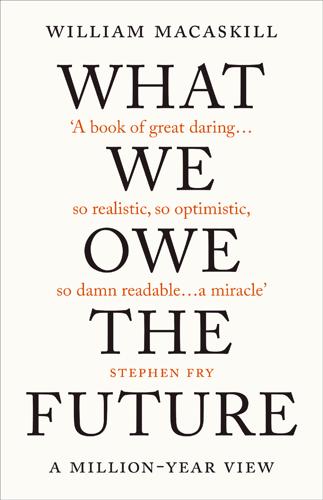
What We Owe the Future: A Million-Year View
by
William MacAskill
Published 31 Aug 2022
In part for the reasons mentioned above, it is difficult to see why agriculture would stop after a collapse. If the world population shrank to eighty million, it is extremely likely that enough survivors would have knowledge of agriculture. The last time the world population was eighty million, in 2500 BC, we were already well into the agricultural revolution. Even if the global population fell to tens of thousands, it is still likely that some of the survivors would have knowledge of agriculture. Moreover, we would be in a much better position to maintain agriculture relative to people in 2500 BC. It took thousands of years for us to domesticate wild plants to make them better suited to farming, slowly (and mainly inadvertently) selecting those plants that bore the highest yields.
…
Moreover, average human wellbeing has not increased inexorably upwards throughout all of human history. While living standards today are undoubtedly much higher than they were in preindustrial agricultural societies, our nomadic hunter-gatherer ancestors, from the dawn of Homo sapiens up until the agricultural revolution around ten thousand years ago, probably had higher average wellbeing than early agriculturalists. As people relied more on agriculture, their height—a good indicator of nutrition and health—usually declined compared to that of their hunter-gatherer ancestors.41 There is even some evidence that, in some ways, the lives of preagricultural hunter-gatherers were quite attractive compared to the life of the average person alive today.42 Although measurement is difficult, on average, the working hours of modern hunter-gatherers are not dramatically different from those in modern industrial societies, and for some hunter-gatherers they are much lower.43 Moreover, many hunter-gatherers enjoy their work—after all, hunting is a popular recreational activity for many people today.
…
Slavery is absent today among what are (erroneously) known in the literature as socially “simple,” highly egalitarian hunter-gatherer societies, who are probably most similar to preagricultural human societies (Kelly 2013, Chapter 9). Slavery likely only became widespread after the emergence of sedentary societies following the agricultural revolution. Any estimate of the fraction of the population enslaved since then necessarily involves some guesswork. But the evidence that exists suggests that in many agricultural societies, around 10 to 20 percent of the population was enslaved. For example, in the second millennium AD, as much as one-third of the population of Korea was enslaved.

The Relentless Revolution: A History of Capitalism
by
Joyce Appleby
Published 22 Dec 2009
A powerful reason for maintaining the strict social order had unobtrusively disappeared, leaving behind a set of social prescriptions whose obsolescence would slowly be discovered. Nothing could have so dramatically distinguished England from the rest of Europe with its last general famine in 1819, not to mention the rest of the world, which still wrestles with failing food supplies. Despite the dislocations of the Agricultural Revolution, it improved everyone’s life chances. Inland trading in foods and other goods became denser. A single national market, the largest, free trading zone in Europe, took shape. This countrywide commercial network created another bulwark against famine because rarely did crop failures hit all regions at the same time.
…
After a generation without famines, spenders and investors could shed the caution associated with fear and begin to take a few risks with their savings. There is no direct connection between more effective farming and the ingenious engineering of new machines that ushered in a new age in manufacturing. The Agricultural Revolution could not produce the inventions central to industrialization, but without its bounteous harvests, those inventions would have been confined to that small part of the economy not dedicated to growing food for the whole. Unlike the earlier quickening pace in commerce, the production of more food with less money and fewer workers released the vital resources of people and capital for a variety of other economic activities, some of them previously unimaginable.
…
Millions of these men and women would cross the Atlantic to establish a European beachhead in North and South America while their sisters and brothers became part of an emerging proletariat. Present-day famines remind us of the complex challenge of feeding a society. They also make us aware of how an agricultural revolution made capitalism possible. COMMENTARY ON MARKETS AND HUMAN NATURE THE EAST INDIA COMPANY began importing colorful calicoes and ginghams at the end of the seventeenth century. After spending lifetimes wearing heavy wools and linens, ordinary Englishmen and women reacted with enthusiasm to this opportunity to wear light, bright fabrics.

Superintelligence: Paths, Dangers, Strategies
by
Nick Bostrom
Published 3 Jun 2014
A few hundred thousand years ago, in early human (or hominid) prehistory, growth was so slow that it took on the order of one million years for human productive capacity to increase sufficiently to sustain an additional one million individuals living at subsistence level. By 5000 BC, following the Agricultural Revolution, the rate of growth had increased to the point where the same amount of growth took just two centuries. Today, following the Industrial Revolution, the world economy grows on average by that amount every ninety minutes.1 Even the present rate of growth will produce impressive results if maintained for a moderately long time.
…
If the world economy continues to grow at the same pace as it has over the past fifty years, then the world will be some 4.8 times richer by 2050 and about 34 times richer by 2100 than it is today.2 Yet the prospect of continuing on a steady exponential growth path pales in comparison to what would happen if the world were to experience another step change in the rate of growth comparable in magnitude to those associated with the Agricultural Revolution and the Industrial Revolution. The economist Robin Hanson estimates, based on historical economic and population data, a characteristic world economy doubling time for Pleistocene hunter–gatherer society of 224,000 years; for farming society, 909 years; and for industrial society, 6.3 years.3 (In Hanson’s model, the present epoch is a mixture of the farming and the industrial growth modes—the world economy as a whole is not yet growing at the 6.3-year doubling rate.)
…
The craft was practiced in China during the Tang Dynasty around AD 600 (and might have been in use as early as AD 200), but was mastered by Europeans only in the eighteenth century.7 Wheeled vehicles appeared in several sites across Europe and Mesopotamia around 3500 BC but reached the Americas only in post-Columbian times.8 On a grander scale, the human species took tens of thousands of years to spread across most of the globe, the Agricultural Revolution thousands of years, the Industrial Revolution only hundreds of years, and an Information Revolution could be said to have spread globally over the course of decades—though, of course, these transitions are not necessarily of equal profundity. (The Dance Dance Revolution video game spread from Japan to Europe and North America in just one year!)
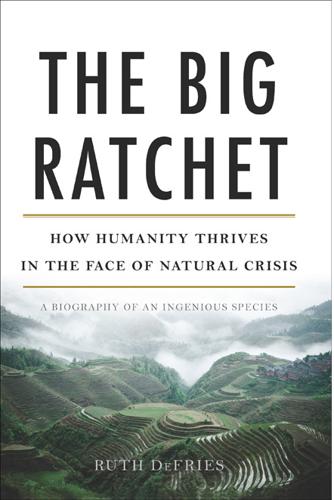
The Big Ratchet: How Humanity Thrives in the Face of Natural Crisis
by
Ruth Defries
Published 8 Sep 2014
Yields of cereal crops soared in England, a combined result of nitrogen-enriching clover and manure, tools for deeper plowing, more livestock for manure and labor, and new seeds that increased edible portions of the harvest along with other agricultural improvements. The impact was so colossal that the period is termed the agricultural revolution. The result of the revolution was a surplus of food. Whether the surplus spurred England’s industrial revolution of the eighteenth century or the other way around is impossible to say. Whether the times truly ushered in an abrupt revolution or a slower evolution is also a debatable point.
…
Viola, D. Watts, R. Wittig, R. Wrangham, K. Zuberbühler, S. Pääbo, and L. Vigilant. 2012. Generation times in wild chimpanzees and gorillas suggest earlier divergence times in great ape and human evolution. Proceedings of the National Academy of Sciences 109:15716–15721. Larsen, C. 2006. The agricultural revolution as environmental catastrophe: Implications for health and lifestyle in the Holocene. Quaternary International 150:12–20. ———. 2009. Emergence and evolution of agriculture: The impact in human health and lifestyle. Pages 3–13 in W. Pond, B. Nichols, and D. Brown, eds., Adequate Food for All: Culture, Science, and Technology of Food in the 21st Century.
…
Nutrition Reviews 67 (Suppl. 1):S56–S61. Zimmerman, C. 1932. Ernst Engel’s law of expenditures for food. Quarterly Journal of Economics, 47:78–101. INDEX Africa failure of Green Revolution to reach, 182 introduced species, 150 locust plagues, 145 pest management, 152 wheat rust, 183 Age of Discovery, 94, 97 Agricultural revolution, 81 Agriculture birth of, 53, 56 Chinese, 75–78 corn, 60, 133–136, 148 four-course system, 80–81 genetically engineered crops, 168 greenhouse gases from, 196–197 pesticide use in, 154–155 rice, 176–178 slash-and-burn, 60, 65, 69–70 soybeans, 138–140 three-field system, 80 wheat, 136–138, 172–176 See also Farming and farmers Al-Haytham, Ibn, 72 Algal bloom, 118–120 Amaranth, 194 Amazon region, farming in, 59–60 Ambrosia beetles, farming by, 9 American crows, learning by, 40 Ammonia, 63–64, 108, 109 Animals domestication of, 52–53 transport to New World, 94–95, 97 use for power, 73, 74–75, 78–81, 97, 98, 123, 141 Antony Gibbs & Sons, 89, 90 Ants farming by, 9 fire, 155 insecticide use to control, 155 leaf-cutter, 149 Aping, 44 Arctic, 35–37 Arsenic, 151, 156, 169 Artificial breeding, 127–128 Asia, rice breeding in, 176–178 Asimov, Isaac, 65–66 Aswan dams, 72 Atmosphere greenhouse effect, 20–21 greenhouse gases in, 121–125, 196–197 of Mars, 21 nitrogen in, 62 solar wind as threat to, 21, 22 Aurora australis, 21 Aurora borealis, 21 Australia, locust plagues in, 146 Australopithecine, 48 Azotobacter, 63, 109 Aztec, 93 Bacillus thuringiensis, 168 Bacteria of early Earth, 30 nitrogen cycling and, 63–65 Balboa, Vasco Nuñez de, 94 Bangladesh, increase in overweight people in, 194 BASF, 109, 110 Beachell, Henry, 177 Beans in China, 75 New World origin of, 93 nitrogen and, 62–63, 75 soybeans, x, 138–140, 186, 193 Bennett, Merrill, 142–143, 144, 191, 192 Bergius, Friedrich, 109 Biofuels, 198 Biotechnology, criticisms of, 186–187 Birds guano from, 88–92 pesticide effects on, 160–162 protecting crops from, 151 Birth rates, 6 Black Death, 80 Blended inheritance, 129, 132 Blue-green algae, 63 Bolivia, 90, 91 Bone meal, 113 Bone Valley, Florida, 116 Bones, phosphorus from, 113–116 Borlaug, Norman on Africa, 182 on criticisms of Green Revolution, 182–183 in Mexico, 172–174 Nobel Peace Prize, 179, 181 on pest reappearance, 184 on pesticide use, 164, 169 on poverty, 181 view of biotechnology, 187 Bosch, Carl, 109 Boserup, Ester, 13–14 Bottlenose dolphin, 41, 42 Bowen, Samuel, 139 Boyd, Robert, 38, 45 Brain evolution of human, 42–43 intelligent, 40 Brandt, Hennig, 66 Brazil deforestation, ix–xi diet transformation in, 192 overweight people, 194 soybean production, x Breastfeeding, 57 Britain, guano trade, 90–91 Bt crops, 168, 186 Bubonic plague, 80 Buffalo bones, phosphorus from, 114 Calories burned to produce food, 122 Canals, 71 Capron, Horace, 138 Capuchin monkeys, 44 Carbon, cycling of, 23–24, 26–27, 125 Carbon dioxide global warming and, 27 as greenhouse gas, 121, 196, 202 nitrous oxide compared to, 121 in photosynthesis, 74 temperature effect on atmospheric, 27 from volcanoes, 24, 26, 27 weathering and, 26 Carnivore, 74 Carson, Rachel, 161–163, 169 Carter, Jimmy, 182 Cassava mealybug, 150, 167 Catton, William, Jr., 13 Chemical poisonings, 167–168 Children, number of, 6 Chile, 90, 91 Chimpanzee, 43–44, 45, 48 China agriculture in ancient, 75–78 diet transformation, 191–192 pest control in, 151 soybean domestication in, 139 Cholera, 77, 86 Chrysanthemum, 151, 152, 154, 158, 167, 169 Cities, growth of population in, 5 Civilization farming link to, 8 food as engine of, 7–10 overshoot and, 13–14 Clear Lake, California, 160–161 Climate agriculture’s impact on, 196–197 change from greenhouse gases, 125 fluctuations in, 43 shift from foraging to farming and, 55–56 Clover, 62–63, 75, 78, 80–82 Coal energy from, 81–82 industrial revolution and, 81–82 opening of energy bottleneck by, 123 steam engine tractors, 123 Coffee, as New World commodity, 96 Collar harnesses, 78 Colorado potato beetle, 158–159 Columbus, Christopher, 10, 93–94 Comets, 30 Communication by animals, 50 cumulative learning, 44–46 genetic inheritance, 39 language, 50–51 transition to cooked meals and, 49 Continents, 24–25 Continuously Habitable Zone, 20 Cooking, 49 Corals, phosphorus from, 116 Corn, 133–136 as biofuel, 198 Bt, 168, 186 farming in Amazon region, 60 fungal disease of, 148 high-fructose corn syrup, 193 origin of, 53–54, 93 Cortés, Hernando, 94 Cotton, Bt, 168, 186 Cows, greenhouse gases released in production of, 196 Crick, Francis, 186 Crookes, Sir William, 105–106, 107, 108, 136, 141 Crop rotation in China, 75–76 in Egypt, 78 in Europe, 80 Crops, genetically engineered, 168, 186 Crosby, Alfred, 94 Cross-fertilization, 130–131 Crows, tool use by, 48 Culsius, Carolus, 98 Culture cumulative learning and, 45–46 defined, 37, 45 evolution of, 38, 39 genes and, 46 role in human evolution, 37–38 Cumulative learning, 44–46, 49, 50 Dairy farming, 46 Dalrymple, Oliver, 123 Dams, 101, 124 Darwin, Charles hybrid vigor principle, 129 inbreeding, 128–129 natural selection and, 37–38, 127–128 On the Origin of Species, 128 Dawkins, Richard, 10 DDT.
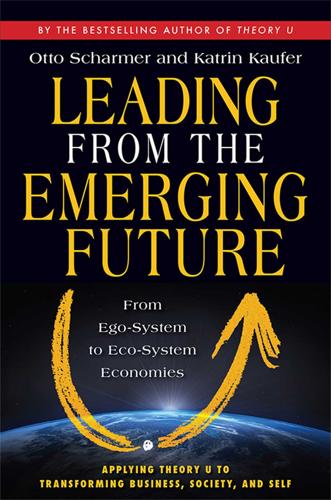
Leading From the Emerging Future: From Ego-System to Eco-System Economies
by
Otto Scharmer
and
Katrin Kaufer
Published 14 Apr 2013
In the emerging next stage of economic thought, we might reframe the role of nature in terms of eco-system and commons, which we collectively cultivate and steward for the well-being of future generations and the whole (4.0). THE JOURNEY FROM 0.0 TO 3.0 The transition from 0.0 to 1.0 was marked by an agricultural revolution. As long as humans limited their economic activities to harvesting and hunting in order to feed and clothe themselves, their impact on nature was limited. But when people started to settle in one place and to cultivate the land, they began to interfere more deeply with the natural ecosystem.
…
As indicated in table 3, earlier in this chapter, the concept of capital has changed significantly over the course of human and economic history.24 THE JOURNEY FROM 0.0 TO 3.0: NATURAL, HUMAN, INDUSTRIAL, AND FINANCIAL CAPITAL Capital was not in the vocabularies of 0.0 societies. From today’s view, 0.0 economies used capital in the form of physical tools and indigenous wisdom to relate to the natural cycles of Mother Nature. Nor was the word used during the Agricultural Revolution, in what we’re calling 1.0. Instead, advanced forms of physical equipment, craftsmanship, and knowledge of how to use tools were examples of capital. In the Middle Ages, capital meant financial assets that people invested in businesses. What we know as capital began in the British colonial empire as merchant capital and later morphed into industrial capital.
…
THE JOURNEY FROM 0.0 TO 3.0: FROM CONSUMERISM TO CONSCIOUS CONSUMPTION Viewed from this angle, what does the journey of the economy look like? As we have already discussed, this journey has evolved through stages. In the 0.0 stage, economic activities were subsistence driven—that is, driven by the immediate needs of a local community. In 1.0, the production function began to differentiate through the Agricultural Revolution as production became more methodical and intentional. In the 2.0 economy, the differentiation of the production function continued, resulting in the first Industrial Revolution. Mass production led to mass consumption. Professional advertising, sales strategies, and product design slowly became part of the industrial management process.
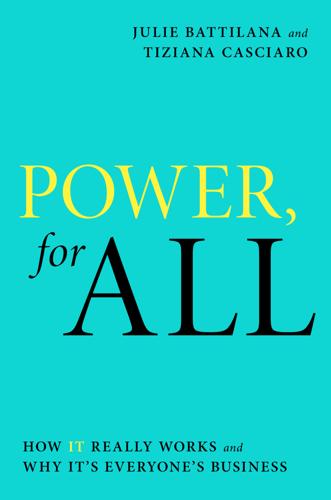
Power, for All: How It Really Works and Why It's Everyone's Business
by
Julie Battilana
and
Tiziana Casciaro
Published 30 Aug 2021
THE FUNDAMENTALS OF POWER ARE TIMELESS Consider two technological shifts that transformed how humans live and relate to one another. The first occurred about ten thousand years ago, when the agricultural revolution—the farming of crops and the domestication of animals—turned our ancestors away from nomadic wandering to permanent settlements.3 No longer required to spend every waking hour searching for food, a few group members could now engage in activities other than hunting and gathering. The agricultural revolution changed the distribution of power on two levels: geographically, by favoring societies rich in farming resources, like domesticated animals, crops, and farming technology; and within those societies, by liberating a new social class to devote their time to intellectual, technical, commercial, and political pursuits that further consolidated their hold on power.4 Much later, in the mid-1400s, the course of human society was radically changed again by the invention of movable type.
…
For a comprehensive list of locations of any word or phrase, use your reading system’s search function. 2008 financial crisis, 118, 126 48 Laws of Power, The (Greene), 19 Aakash’s story, 82–84 abuse of power, 21, 37, 43, 110–13 access to valued resources changing power balance, 8–13, 194 collective choices, 195 expanding networks for, 194 Ning’s story, 61, 63–64 personal data surveillance, 151–54 purposeful use of technology and, 148, 150 reclaiming democratic power, 197 Adbusters, 118 Age of Surveillance Capitalism, The (Zuboff), 152 agitation, 118–20, 137, 154, 195, 196, 238n7 agricultural revolution, 142 AI Now Institute, 160 Aladdin, x algorithms, 148–51, 153, 158–60 Alighieri, Dante, 41 Alinsky, Saul D., 20 Allegory of Good and Bad Government, The (Lorenzetti), 165 Allen, Danielle, 186 Alphabet Workers Union, 157–58 altruism, 26, 30–31, 36–38, 55, 196 Amazon, 112, 152, 153, 157, 159 Amnesty International, 156 Andersen, Lene Rachel, 187, 188, 258n83 Anderson, Cameron, 211n25, 212n10, 212n13, 230n12, 250n3 Anderson, Elizabeth, 177 antitrust legislation, 11, 159 apartheid, 117 Appiah, Kwame Anthony, 218n18, 220n34 Apple, 113, 151, 153, 157, 158 Arab Spring, 109, 117, 118 Ardern, Jacinda, 53–54 Arendt, Hannah, 96 Argentina’s marriage equality story, 131–37, 242n34 Argentine LGBT Federation, 133–37, 242n34 Aristotle, 55, 57 artificial intelligence (AI), 148–49 Associação Saúde Criança (Instituto DARA), 28 attention economy, 152–53 attraction strategy, 8–11, 9, 12, 194 Austen, Jane, 46 authoritarianism, xvii, 36–38, 43, 122, 152, 185 authority-power relationship, 66–68, 69–70, 73 #BalanceTonPorc, 137 Banaji, Mahzarin R., 231n19, 231n20, 233n48 Banerjee, Abhijit V., 114 Barefoot College’s innovation, 144–46, 148, 161 Bastida, Xiye, 121–24 Beard, Mary, 101 Beauvoir, Simone de, 102 belonging, 2, 7, 58, 82, 105, 118, 133, 168, 187, 194, 221n40 See also valued resources: affiliation benefit corporations (B-Corps), 176 Bentham, Jeremy, 151, 245n30 Berners-Lee, Tim, 147, 148 betweenness, 79–81, 79, 153 Bhatia, Karan, 157 bias algorithmic, 150–51 fundamental attribution error, 16 negativity bias, 19 status quo bias, 74 confirmation bias, 88 See also stereotypes, racism, gender inequality BIPOC (Black, Indigenous, and People of Color), 88, 117, 151, 196 Björkman, Tomas, 187, 188, 258n83 Black Lives Matter movement, 117, 139, 141, 147–48 Black Voters Matter Fund, 190 Blau, Peter M., 261n4 Bloomberg, Michael, 130 Boards of Directors, 66, 86–89, 91–92, 128–130, 157, 169, 174–177, 188 Bonaparte, Napoleon, 47 Bourdieu, Pierre, 231n26, 232n34 Brass, Daniel J., 226n12 Brave New World (Huxley), 164 Brock, Timothy, 135 Brodsky, Greg, 162–63 Brown, LaTosha, 190–91 Browner, Carol, 80, 81, 84 Buddhism, 32–33 Buffett, Warren, 114 Buolamwini, Joy, 150 Burke, Tarana, 137 Burt, Ronald S., 227n25, 228n36, 236n66 Business Roundtable, 175–76 Caesar, Julius, 101 Cailliau, Robert, 147, 148 Capital (Marx), 110 Carnegie, Andrew, 110–11 Caro, Robert A., 14–15 Carus, Titus Lucretius, 41 caste system, 91–92 Castells, Manuel, 199, 231n26, 239n2, 261n9 Catholic Church, 131, 135 certified coaches, 5, 209n4 change-makers, 74, 78 Channapatna artisans, 47, 50 chattel slavery, 91–92 checks on power, 165–92 collective responsibility, 189–92 employee representation, 177–82 organizational power sharing, 167–73, 191–92 oversight and accountability, 173–77 societal power sharing, 182–84, 192, 256n63 structural limits, 165–66 See also civic education and engagement, civic vigilance Chenoweth, Erica, 124 Chomsky, Noam, 219n25, 257n77 Cialdini, Robert B., 210n15, 227n23 Citizens United, 118 civic education and engagement, 184–88 civic vigilance, 184–86, 192, 257n74, 257n79 Civil Rights Act, 14 Clegg, Stewart, 236n64, 262n22 Cleisthenes, 182, 256n63 climate science, 45–46 Clinton, Bill, 80 Coats, Michael, 167, 168, 169, 170, 171 Code of Hammurabi, 100–01 codetermination, 181 Cohen, Joshua, 257n75, 259n96 collective action consolidation strategy, 11–12, 111, 112 Google employees story, 154–58 keeping power in check, 192 power distribution responsibility, 195 shifting power balance and, 115, 178–79 collective movements, 117–39 agitation, 118–20, 137, 154, 195, 196, 239n6 digital technology and, xvii, 137–39, 154–58, 242n40 innovation, 119–20, 125–30, 147–49, 154, 195, 196 orchestration, 119–20, 131–37, 154, 195, 196 public agenda and, 120–25 shifting power balance, 115 collective orientation, 32, 36, 195 collective responsibility, 189–92 Community Interest Companies, 176 concentration of wealth, 162, 175–76, 189–90 confirmation bias, 88 Confucius, 55 consolidation strategy, 8, 9, 11–12, 111, 112, 142, 194 Contract with America (Gingrich), 80 Cook, Tim, 158 cooperatives, 162–63, 179–81 Cordeiro, Vera, 27–29, 33, 38–39, 166 Courpasson, David, 247n57, 262n22 COVID-19, 38, 49, 176 Creighton, Mandell, 24 CRISPR (clustered regularly interspaced short palindromic repeats), 162, 164, 249n79 Crozier, Michel, 225n6 Csikszentmihalyi, Mihaly, 42 Cuddy, Amy J.

The Rationalist's Guide to the Galaxy: Superintelligent AI and the Geeks Who Are Trying to Save Humanity's Future
by
Tom Chivers
Published 12 Jun 2019
You can see this, perhaps more starkly, with our attitude to food. We enjoy sugar and fat because they were rare in our ancestral past, and they were rewarding: someone who ate as much as they could of them would have more calories and therefore more energy to expend on spreading their genes. But in the developed world since the Agricultural Revolution, and especially since the Industrial and Technological Revolutions, sugar and fat have become far easier to obtain. Our reward system, set up for a world of scarcity, is thrown terribly by a world of plenty. Since 2016, there have been more obese people than underweight people in the world.4 A goal system that was designed to maximise our evolutionary success under any circumstances would make different things taste nice when we need them.
…
‘A few hundred thousand years ago, in early human (or hominid) prehistory, growth was so slow that it took on the order of one million years for human productive capacity to increase sufficiently to sustain an additional one million individuals living at subsistence level,’1 writes Bostrom. ‘By 5000 BC, following the First Agricultural Revolution, the rate of growth had increased to the point where the same amount of growth took just two centuries. Today, following the Industrial Revolution, the world economy grows on average by that amount every ninety minutes.’ Robin Hanson agrees: ‘Dramatic changes in the rate of economic growth have occurred in the past because of some technological advancement.
…
‘It might appear [that] the slow takeoff is the most probable, the moderate takeoff is less probable, and the fast takeoff is utterly implausible,’ says Bostrom. ‘It could seem fanciful to suppose that the world could be radically transformed, and humanity deposed from its position as apex cogitator, over the course of an hour or two.’ Every other major change like that – the Agricultural Revolution and Industrial Revolution are the examples he gives – take decades to millennia. Change of the kind implied by a fast or moderate take-off ‘lacks precedent outside myth and religion’.2 But, he says, a slow take-off is unlikely. A fast take-off – an ‘explosive’ take-off, in fact, in his words – is much more probable.
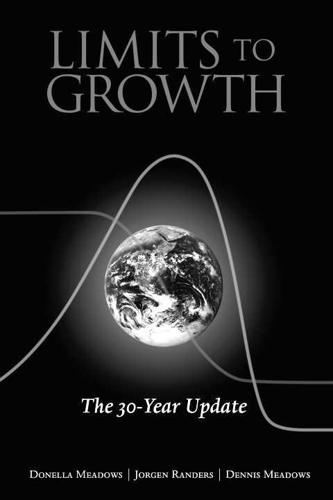
The Limits to Growth: The 30-Year Update
by
Donella H. Meadows
,
Jørgen Randers
and
Dennis L. Meadows
Published 15 Apr 2004
CHAPTER 8 Tools for the Transition to Sustainability We must be careful not to succumb to despair, for there is still the odd glimmer of hope. -EDOUARD SAOUMA, 1993 Can we move nations and people in the direction of sustainability? Such a move would be a modification of society comparable in scale to only two other changes: the Agricultural Revolution of the late Neolithic and the Industrial Revolution of the past two centuries. Those revolutions were gradual, spontaneous, and largely unconscious. This one will have to be a fully conscious operation, guided by the best foresight that science can provide.... If we actually do it, the undertaking will be absolutely unique in humanity's stay on the Earth.
…
Some people could live on excess food produced by others. They could become full-time toolmakers, musicians, scribes, priests, soldiers, athletes, or kings. Thus arose, for better or worse, guilds, orchestras, libraries, temples, armies, competitive games, dynasties, and cities. As its inheritors, we think of the agricultural revolution as a great step forward. At the time it was probably a mixed blessing. Many anthropologists think that agriculture was not a better way of life, but a necessary one to accommodate increasing populations. Settled farmers got more food from a hectare than hunter-gatherers did, but the food was of lower nutritional quality and less variety, and it required much more work to produce.
…
As wants multiplied, as markets grew more and more far-flung, the bond between humans and the rest of nature was reduced to the barest instrumentalism.' That bare instrumentalism led to incredible productivity and a world that now supports, at varying levels of sufficiency, 6,000 million people more than 600 times the population existing before the agricultural revolution. Far-flung markets and swelling demands drive environmental exploitation from the poles to the tropics, from the mountaintops to the ocean depths. The success of the industrial revolution, like the previous successes of hunting-gathering and of agriculture, eventually created its own scarcity, not only of game, not only of land, not only of fuels and metals, but of the total carrying capacity of the global environment.
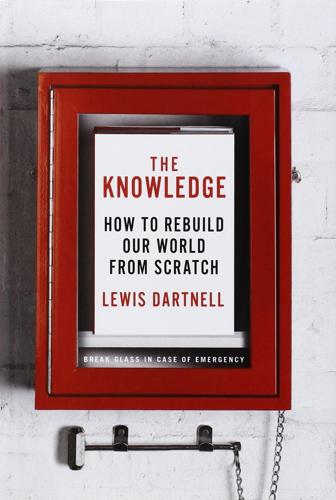
The Knowledge: How to Rebuild Our World From Scratch
by
Lewis Dartnell
Published 15 Apr 2014
As we’ve seen, without chemical fertilizers farmland would deteriorate in fertility, but animal manure allows you to return nutrients to the soil. Furthermore, there is a particular class of crops that will naturally boost soil nitrogen levels for you, the incorporation of which was a crucial step in the agricultural revolution in the seventeenth century. In the immediate post-apocalyptic world, the husbandry of plants and of animals will once again become inseparable, mutually supporting endeavors. Throughout the Middle Ages, European farmers followed an agricultural convention of routinely leaving plots fallow—a woefully inefficient practice, as at any one time up to half of your fields would be growing no crops at all.
…
These are often very specific to the plant they can attack, and so annually shifting, and not growing the same crop on a plot for several years, means that you can exert natural control without pesticides. The Norfolk four-course rotation is the most successful of these historical systems and became widespread only in the eighteenth century, spearheading the British agricultural revolution. In the Norfolk system, succession of crops through each plot follows the order: legumes, wheat, root crops, barley. As we have seen, growing legumes is intended to build up the soil’s fertility for the rest of the cycle. Clover and alfalfa grow well in the British climate, but in other regions you might be better off with soy or peanuts.
…
* Even within Britain, the Norfolk four-course rotation is less effective on the heavy clay soils of the north and west, and so historically these regions focused on livestock pasturing and on manufacturing (and using their profits to buy grain from the south). * Using many of the advances discussed in this chapter, between the sixteenth and nineteenth centuries the British agricultural revolution achieved a substantially greater production of food while simultaneously becoming less labor-intensive, and the fact that a decreasing proportion of farmers and agricultural laborers was needed to feed everyone else enabled greater urbanization. By 1850, Britain had the lowest proportion of farmers of any country in the world, with only one person in five working the fields to feed the entire nation.
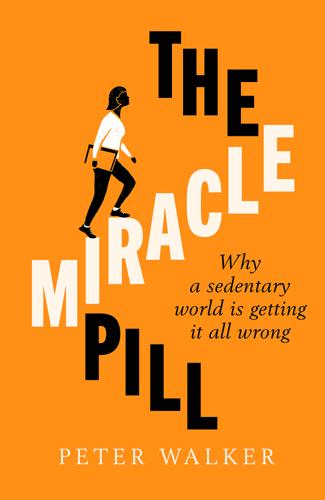
The Miracle Pill
by
Peter Walker
Published 21 Jan 2021
It was around this time that some of our Neolithic ancestors in what is now the Middle East gave up their hunter-gatherer lifestyle and, over numerous generations, began instead to cultivate crops, domesticate animals and form permanent settlements. This is, of course, not particularly long ago by the standards of human history – Homo sapiens had emerged anything up to 300,000 years earlier – but what is now known as the First Agricultural Revolution, or Agrarian Revolution, was the beginning of a settled, more densely populated life, helping bring about the development of new tools, then the specialisation of labour. In other words, the building blocks for modern civilisation. Any 21st-century human suddenly catapulted to one of these first villages would find life there hugely gruelling and overwhelmingly physical.
…
It has long been known that modern humans have considerably less dense bones than similar-sized primates, something often linked to our distinctive upright walking stance. But a fascinating 2014 study by US and British academics found that bones from humans who lived in hunter-gatherer communities in North America around 7,000 years ago (the agricultural revolutions did not happen everywhere simultaneously) were as strong and dense as those now seen in orangutans. In contrast, bones examined from farmers who lived 700 years ago were 20 per cent lighter. The researchers concluded that this ‘gracility’ of the more modern skeleton, a rather lovely technical term meaning ‘slenderness’, was not caused by a changing diet, or by different body sizes as humans evolved, but simply because of reduced physical exertion.1 Such change has very modern consequences.
…
For a comprehensive list of locations of any word or phrase, use your reading system’s search function. actin (protein) 40 active applause 176–7, 180, 271 Active Ten app (Public Health England) 57, 269 adenosine triphosphate (ATP) 40, 41, 276 Aldred, Rachel 119–20, 139 Alzheimer’s disease 5, 49, 186, 226, 232, 233, 234 Agricultural Revolution/Agrarian Revolution 15–16 Amager Bakke/Copenhill waste-burning energy plant, Denmark 134–5 Amish people 17–18, 208 anaerobic respiration 40 Annual Travel Survey 3 anxiety 5, 50, 57, 112 Araujo, Claudio Gil 229–32 Aspern, Vienna 140 asthma 10–11, 160, 172, 209 Atlas, Charles (Angelo Siciliano) 31 Barnet Graph of Doom 100–1 basal metabolic rate (BMR) 51, 158, 191 Better (non-profit social enterprise) 224 BeUpstanding 195–6 bike couriers 11–13 Biobank public health project 114 biophilia 133 Bjarke Ingels Group (BIG) 132–5, 138–9 Blackburn, Elizabeth 41–2 Blair, Steven 19–20, 21, 46, 169–72, 275–6 blood pressure 5, 41, 46, 48, 57, 75, 90, 160, 225, 227, 265 Boardman, Chris 124–5, 127, 137, 264 BodPod 172–3, 174 body mass index (BMI) 146–7, 150–2, 161–4, 167, 170, 171, 172, 173, 193, 243 bone density/health 16–17, 22, 23, 44, 46, 49, 67, 101, 209, 223, 227–8 Boyd, Andrew 105–6 breast cancer 48, 160 British Medical Journal (BMJ) 64, 65, 80 Buchan, William: Domestic Medicine 63 Buchanan, Colin: Traffic in Towns 120–1 Buchanan, Nigel 203–4, 206, 207–8 Buchner, David 228 Bull, Fiona 98–9 Burden of Disease, WHO 47, 90 Burfoot, Amby 78, 79 Burnham, Andy 124, 264, 266 bus drivers, heart attack rates in London 61–2, 71–3 Bushy Park Time Trial 250 calories 13, 19–20, 19n, 27, 51, 54, 75, 113, 114, 146, 148, 153, 155, 156–7, 158, 165–6, 169, 190 Cambridge University 64, 65–6, 187 cancer 5, 41, 48–9, 62, 79, 90, 114, 160, 186, 187, 227, 231–2 car children and 216, 219, 258, 263–4, 265, 272 electric 137, 268 lobby 263 social engineering and 254, 258 town/city planning and 110, 111, 113, 121, 120–2, 124, 125, 126, 127–8, 129, 130, 131, 135, 136, 137, 138, 140, 141, 142, 191–2, 263, 265, 268 walking supplanted by 2, 3, 5, 53 cardiovascular activity 168–9, 209, 271–2 cardiovascular health bus drivers, heart attack rates in London 61–2, 71–3 children and 2, 213 coronavirus and 265 diabetes and 95 Harvard Alumni Health Study 75–7, 134 heart attacks 41, 48, 50, 62, 70, 71, 74, 75, 76, 77, 91, 92, 93, 106 heart disease 5, 43, 46, 48, 59, 68, 69, 70–4, 81, 82, 88, 89, 114, 152, 154, 243, 244 inactivity first linked to 47–8 life expectancy and 93 longshoremen health study, San Francisco 75 low-density lipoprotein (LDL)/triglycerides and 41, 43, 46, 185 mitochondria and 40, 41 rheumatic heart disease 68, 69–70, 82, 152 sitting and 5, 185, 186, 187, 199 Centers for Disease Control (US government) 95, 228 chair 178–9 Chan, Margaret 152–3 children 22–3, 203–20, 235 adult health, movement in childhood and 11, 209–10 BMI and 51 bone density and 16, 23, 49, 67, 209–10 childhood movement diminishing into adolescence and onwards 11, 210–11 cycling and 121, 130, 214, 237–8, 246, 247 Daily Mile and 203–7, 212–13 decline in activity/inactivity statistics 1–2, 10–11, 22–3, 24, 203–11, 252–3, 254, 256 girls, low activity levels in 141–3, 204, 209, 210–11, 256 independent childhood mobility, perceived cosseting of children and 216–20 life expectancy and 97 obesity and 84, 152, 153, 252–3, 256–7 schools and see schools social care and 100 social engineering and 244, 245, 246, 247–9, 252–3 town/city planning and 121, 122–3, 130, 138, 139–40, 142, 216–20 cholesterol 43, 185, 242–3 cigarettes 10, 29, 47, 62, 75, 76, 79, 92, 98, 105, 176, 177, 242–4 cognitive function 5, 46, 49, 57, 87, 186, 226, 232, 233, 234 Coldbath Fields Prison, London 63–4 colon cancer 48 co-morbidity 89, 91 commuting 58, 111, 114–18, 125, 127–9, 148, 183, 184, 199–200, 221, 270, 273, 274 Cooper, Ashley 129 Cooper, Ken: Aerobics 78, 79 Copenhagen, Denmark 109–12, 122–3, 125, 134, 135, 184, 240 Coronary Heart Disease and Physical Activity of Work 61–2, 71–3 coronavirus pandemic 8–10, 13, 33, 88, 90, 100, 115, 116, 130, 138, 154, 172, 173, 182, 183, 192, 198, 201–2, 214, 240, 247, 248, 257, 259–61, 263, 264–9 Cregan-Reid, Vybarr: Primate Change 178–9, 189 Criado-Perez, Caroline: Invisible Women 141 cycling body fat and 173 calories and 113 car travel supplants 2, 3, 127, 217–18 children/schools and 121, 130, 214, 217, 237–8, 246, 247 commuting/everyday cycling for transport 7, 9, 13, 27–8, 34, 58, 104–5, 113, 114, 115–20, 129, 137, 177, 182, 183, 184, 199, 213, 254, 261, 265, 270, 272–3 couriers 11–13 Denmark and 7, 111, 121, 128, 130, 135, 239, 240, 249, 268 electric-assist bicycle/e-bike 128–30, 135 Finland and 236–8, 246, 247 heart attacks and 74 lanes/routes 9, 28, 82, 111, 119, 120–1, 122, 124, 130, 133, 192, 237, 246, 253–4, 265, 267–8 leg strength and 224, 231, 276 METs and 51, 52, 58, 115, 129 mortality and 114–20, 121 Netherlands and 119, 121, 125, 127, 128, 239, 240, 249, 268 Olympics and 34 overweight people and 166 Peloton 31 postmen and 73 safety/road danger 28, 118–19, 121, 125–6, 128, 137, 216–18, 240, 260 Slovenia and 253–4 social engineering and 236–8, 239–40, 246, 247, 249, 253–4, 256 share schemes 106 short car trips and 136, 137, 143 town/city planning and 33, 111, 112, 113, 114–20, 121, 122, 124–6, 127–31, 136, 137, 141, 143, 191, 192, 236–9, 246–7, 249, 253–4, 256, 263–4, 267–8 cytokines 42, 161, 162 Dahl, Roald 217–18 Daily Mile 203–7, 212–13, 214, 249, 251, 261, 262 Davies, Adrian 5, 35 dementia 5, 49, 87, 88, 226, 227, 229, 232–4 Denmark cycling in 7, 111, 121, 128, 130, 135, 137–8, 184, 239, 240, 249, 268 town/city planning in 109–12, 114–15, 121, 122–3, 125, 128, 130, 131, 132–5, 268 Department for Transport, UK 3 depression 5, 50, 106, 250 diabetes 88, 90, 95, 102, 186, 187, 192–3, 227 pre-diabetes 37, 59, 188 type 1 37, 94 type 2 4, 5, 36, 37, 41, 42, 43, 46, 48–9, 57, 89, 93–4, 99, 106–8, 129, 145, 146, 151, 160, 162–3, 167, 185, 193, 215, 222, 265 Diabetes UK 108 Disneyland 135–6 Dober Tek campaign 254–5 Doll, Richard 79 Donaldson, Liam 79 driverless cars 136, 137 Dunstan, David 192–3, 200 duurzaam veilig (sustainable safety) 126 electric-assist bicycle/e-bike 128–30, 135 electric vehicles 128–30, 135, 136–7, 268 endocrine system 42 Equinox (US gym chain) 32 Erickson, Kirk 226, 233–4, 275 exercise see individual exercise and area of exercise ‘fat and fit’ 147, 169–75 fat, body 42–4, 145, 146–7, 151, 161, 162, 165–6, 167, 169–75, 185, 188, 193, 242, 255 financial costs of inactivity 87–143 mortality and morbidity and 90–3 NHS/universal medical systems and 87–108 non-medical long-term action against preventable conditions and 102–8 social care and 100–2 total additional costs imposed on health services due to inactivity 94–5 Finland 236–47, 258 cycling in 236–8, 246, 247 Finnish Schools on the Move 211–12, 246, 252 Global Report Card study on childhood activity levels and 252–3, 255 Helsinki central library 252 Network of Finnish Cycling Municipalities 247 social engineering in 236–47, 249, 252, 262, 264 Sports Act (1980) 245–6 Sports Act (1999) 246 Winter Cycling Congress 238, 246 see also individual place name Fitbit 54, 181 fitness industry 3, 31, 33, 34 fitness watches 116, 181, 270–1 food corporation lobby 148 ‘four by four’ threat (four most damaging NCDs) 90 Frauen-Werk-Stadt (Women’s Work City), Vienna 140–1 Freiburg, Germany 137–8 Frome, Somerset 141–3 Garmin 116, 181, 270–1 Gehl, Jan 109–12, 120, 122–4, 125, 126, 131, 135, 184, 268, 275 Life Between Buildings 110, 122–3, 131 Gill, Tim 138, 218–20 No Fear: Growing Up in a Risk-Averse Society 219–20 Glasgow University 66, 68, 134, 163 Global Report Card study on childhood activity levels 24, 252–3 glucose intolerance 37, 38, 167, 185, 192–3, 194 Gobec, Mojca 254–5 Googleplex, Mountain View 133, 196 Greater Manchester 124–5, 127, 264–6 gyms 1, 4, 26, 30–5, 51, 106, 149, 166, 167, 220–1, 223–4, 256, 276 Hartley, Sir Percival Horton-Smith 64–5 Harvard Alumni Health Study 75–7, 134 Harvard University 46, 52, 74, 76, 77, 134, 171 Haskell, William 26, 274 Hatano, Yoshiro 54 Health Education Authority 210 health gap (gap between life expectancy and healthy life expectancy) 92–4, 95, 99–100, 222 Healy, Genevieve 194–6, 274 heart attacks 41, 48, 50, 62, 70, 71, 74, 75, 76, 77, 91, 92, 93, 106 see also cardiovascular health heart disease 5, 43, 46, 48, 59, 68, 69, 70–4, 81, 82, 88, 89, 114, 152, 154, 243, 244 see also cardiovascular health heart rate 13, 27, 53, 116, 117, 129, 181, 197, 270 Hidalgo, Anne 192 high-density lipoprotein cholesterol (HDL) 43, 185 Hillman, Mayer: One False Move 217–18 Hillsdon, Mervyn 79–80, 83, 84, 85 Hippocrates 63 Hobro, Denmark 131 hunter-gatherers 5, 15, 16, 17 Hunt, Jeremy 261–4 Imbeah, Alistair 224 inactivity financial costs of 87–143 see also financial costs of inactivity obesity and see obesity sitting and see sitting see also individual area and consequence of inactivity incidental activity (activity which takes place as part of your regular day) 27, 114, 220 individual responsibility 2, 30, 58, 148, 263 industrialisation 2, 30 inequality (of income and opportunity) 103 Ineos 205 inflammation 42, 48, 68, 161, 162, 223 Institute of Hygiene and Occupational Health, Sofia 165 insulin 36, 37, 38, 42, 43, 57, 146, 161, 162 International Olympic Committee 81 International Space Station 44 Johnson, Boris 259, 260, 261, 264, 266, 267 Kail, Eva 139–43 Kelly, Mark 44 Kelly, Phil 88–9, 96–7, 103–5, 107 Kelly, Scott 44 Keston, John 225 keto diet 146 King’s College Hospital, London 87–9, 91 Kiuru, Krista 238–9, 245 Korhonen, Nina 246, 248–9, 252 Kraus, Hans: Hypokinetic Disease: Diseases Produced by Lack of Exercise 74 lactic acid 40–1 Lancet, The 23, 46, 47, 73, 95, 98, 128, 153, 199, 210 Lean, Mike 163–4 Lee, I-Min 46, 47, 52, 55, 56, 59, 60, 74, 77, 78, 80, 81, 82, 274 Levine, James 189–92, 193, 194, 196–7, 199, 201 Lewis, Thomas 68, 71–2 life expectancy 91–2, 99, 221–2 health gap (gap between life expectancy and healthy life expectancy) 92–4, 95, 99–100, 222 lipaemia 43 liver 161, 186, 187 Longevity of Oarsmen study, The 64–5 longshoremen health study, San Francisco 75 low-density lipoprotein (LDL) 43, 185 Lucas, Tamara 73–4, 83, 85 lung cancer 48, 79 lung function 5, 95–6 Lykkegaard, Kasper 181–2 Mackenzie, Richard 36–8, 43, 59, 117, 274–5 Maguire, Jennifer Smith 31, 32, 33 Mancunian Way, Manchester 124–5 Marin, Sanna 238 Marmot, Michael 82–3 ‘Matthew effect’ 206 Mayer, Jean 154–6, 157, 175 Physiological Basis of Obesity and Leanness 155–6 McGovern, Artie 31 meals, movement and processing of fats and sugars after 43–4, 167, 183, 188, 194, 272 mental health 49–50, 74, 204, 211 MET (metabolic equivalent) 51–2, 58, 115, 129, 178 metabolic disorders 5, 43, 49, 74, 95 see also individual disorder name metabolic rate 39, 51, 158, 191 micro mobility 135 Miliband, Ed 266–7 minimum amount of moderate activity needed to maintain health, recommended 116–17 mitochondria 41, 48, 167 Mitrovic, Polona Demšar 254 modal filtering 126 morbidity 89, 91–3, 160, 168–9, 227, 256–7 Morris, Annie 66–7 Morris, Jerry 61–3, 64, 65, 66–74, 75, 77, 79, 80–6, 152, 154, 241 Morris, Nathan 66–7, 83 Moscow 111, 112, 123 Mosley, Michael 229 movement decline of everyday 15–35 rediscovery of benefits of 61–86 see also individual type of movement muscle leg 224, 231, 276 skeletal 40, 42, 43, 167, 276 smooth 40 strength/muscle training 22, 223, 228, 271–2 wastage 22, 42, 223–4 Muscular Christianity 30 myosin (protein) 40 ‘nanny state’ 9, 243–4, 262–3, 264, 265 NASA 44 National Fitness Survey (1990) 84 National Health Service (NHS) 9, 70, 101, 164, 179, 223, 266 cost of inactivity to 9, 89–90, 93–7, 101, 104, 106–7, 153–4 social prescribing 105–6 National Lottery 33 Nebelong, Helle 219–20 Netherlands 119, 121, 125, 127, 128, 166, 239–40, 249, 268 Nieman, David 265 Niemi, Joonas 246, 248–9, 252 non-communicable diseases (NCDs) 90, 98 non-exercise activity thermogenesis (NEAT) 190–1, 194–5 North Karelia, Finland 241–3, 244, 245, 257 obesity 5, 19, 89, 98, 144–75, 215, 241 activity required to lose significant amounts of weight 144–7, 164–9 age and 152 basal metabolic rate and 158, 191 BMI and 146, 150–1, 160, 161–4, 167, 170, 171, 172, 173 body fat percentage and 146–7, 151, 165, 167, 170, 172–4, 193 childhood and 84, 152, 153, 212 costs of 95, 153–4 crisis 152–3, 154, 157 deaths and 47, 90, 160, 163, 170, 171 energy balance and 154–9 exercise benefits for 59, 144–7, 156, 158, 159, 165–6, 167–8 ‘fat and fit’ 169–75 health conditions associated with 160–1 obesogenic foodscape and 148–9 sex and 152 Slovenia and 256–7 stigma 147, 149–50 sugar and 146, 148, 156, 166 waist circumference and 161–4, 169, 172 weight loss/Watson and 144–6, 147–8, 149, 162, 166–7, 171, 173, 175, 270 worldwide spread of 152–3 Odense, Denmark 130 Ojajärvi, Sanna 247 older people/ageing staying active and 220–35 town/city planning and 138–9 Old Order Mennonites community 208 Olympics 33–4, 124, 224, 228, 255 (1964) 54 (1996) 33, 81 (2000) 33 (2012) 23 150-minutes of moderate exercise per-week recommendation 21–2, 26, 38, 54, 201, 270 active travel and 112 children and 207 commuting and 127–8 definitions of moderate and intense exercise 22 MET and 58 moderate activities, WHO list of possible 52 mortality and 45 older people and 222 strength training and 271–2 weight loss and 164 osteoporosis 16–17, 209, 227 Paffenbarger, Ralph 62, 64, 74, 75–82, 84–5, 101, 134, 225, 274 Paris 191–2, 197, 268 Parkrun 106, 249–51 pavement 120, 122, 124, 130, 140, 141, 237, 265, 268 pedometers 53–4 Peloton 31 personal choice, myth of 25–30 personal trainers 31 Peska, Pukka 46, 240–5, 257, 262–3 Physical Activity and Health (eds Bouchard, Blair, Haskell) 39 Physical Activity Guidelines Advisory Committee (PACAG) 45, 48, 57 physical activity level (PAL) 51 Pichai, Sundar 133 Policy Studies Institute 217 polypharmacy 89 portal theory 161 poverty 67, 68, 69, 82, 152, 180 Poynton, Frederic 68 protein 37, 40 Public Health England (PHE) 3, 22, 33, 57, 94–5, 97, 169, 269 Raab, Wilhelm: Hypokinetic Disease: Diseases Produced by Lack of Exercise 74 Radcliffe, Paula 36 ramp test 117–18 rheumatic heart disease 68, 69–70, 82, 152 risk-averse culture 207, 219 road danger 28, 119, 121, 125–6, 128, 137, 216–18, 240, 260 Roehampton University 36, 117, 172 Rook, Sir Alan 65 Ross, Robert 149–50, 157, 160, 161–2, 163, 164, 168–9, 171, 173, 174, 175 Rost, Leon 132–4, 135, 136, 139 Royal College of General Practitioners 105 running 1, 3, 9 ageing and 225, 227, 275 ATP and 40 bone density and 16 childhood and 203–7, 209, 210, 212–13, 214, 215, 246, 255 exercise industry and 31 home running treadmills 147 METs and 51, 58 150-minutes of moderate exercise per-week recommendation and 22, 52, 201 overweight people and 167 Paffenbarger and 76, 77, 78–9, 80, 225 Parkrun 106, 249–51 ultrarunning 32 schools 20, 27, 30, 121, 210–20, 236, 237–8, 239, 244, 245, 246, 247, 248, 252–7, 261–2 cycling to 121, 130, 214, 237–8, 246, 247 Daily Mile and 203–7, 212–13 English curriculum, physical education and 212, 248, 261–2 Finland and 211–12, 246, 252–3, 257 free school meals at 245 girls low activity levels in 204, 209, 210–11 Global Matrix 3.0 Physical Activity Report Card and 24, 252–3 independent childhood mobility, perceived cosseting of children and 216–20 playing fields 103, 107 Scottish schools curriculum, physical education and 212 sitting in 211–16 Slovenian 212, 255–7 social engineering and 237–8, 239, 244, 245, 246 sedentary behaviour 177–202 see also sitting Sens 181–4, 271 short-termism 107 Sidewalk Labs 136 Sim, David: Soft City 123–4, 126–7 Sinton-Hewitt, Paul 250 sit-stand test 228–31 sit-stand workstations 195, 196, 198–9, 200, 202 sitting 5, 13, 24, 26, 39, 49, 54, 62, 72, 176–202, 211–16 active applause and 176–7, 180, 271 average amounts of 179 breaking up prolonged 176–7, 180, 181, 182, 190–1, 193, 194–5, 197, 200, 271, 275 chair and 178–9 diabetes and 185, 186, 187, 188, 192–4 exercise and effects of 184, 199–201 fidgeting and 190–1, 194–5 health effects of 176–7, 185–8 low-density lipoprotein cholesterol (LDL)/triglycerides and 185 ‘new smoking’ headlines 177 schools and 211–16 sedentary behaviour defined 177–8 sit-stand test 228–31 sit-stand workstations 195, 196, 198–9, 200, 202 tracking/measuring 179–84 TV viewing and 178, 186, 187–8, 189, 192 workplace and 189–92, 195–9, 201–2 skeletal muscles 40, 42, 43, 167, 276 skinfold body fat test 173–4, 255 Skinner, James 21 sleep 5, 42, 50, 57, 184 Sleep, Leisure, Occupation, Transportation, and Home-based Activities (SLOTH) 25 Slofit programme 255–6 Slovenia 24, 212, 253–8, 261 Smith, Edward 63–4 smooth muscle 40 social care 97, 99–101, 108 social engineering 236–58 cycling and 236–8, 239–40, 246, 247, 249, 253–4, 256 Finland and 236–47, 249, 252–3, 255, 257, 258 see also individual area of Finland kindergartens and 252 mortality rates and 240–5 ‘nanny state’ objections to 243–4 obesity and 241, 252–7 Parkrun 249–51 political support, need for complete 244–5 schools and 236, 237–8, 239, 244, 245, 246–7, 248, 252–3, 255, 256, 257 Slovenia and 253–7, 258 sports facilities funding 245–6 tax and 245–6, 252 Youth Sports Trust, UK 247–9, 251 social medicine 61, 68–71, 83 Social Medicine Unit 61, 69–70 socialism 66, 67–8 social prescribers 105–6 Spevak, Harvey 32, 35 Sport England 34 stairs 28–9, 131–4 Starc, Gregor 255–7 St Mary’s Hospital, London 93 St Ninian’s primary school, Stirling, Scotland 203–7, 213 Stockholm, Sweden 141 Stop de Kindermoord (Stop the Child Murders) road safety mass protests, Netherlands (1970s) 121, 240 strength/muscle training 22, 223, 228, 271–2 stroke 5, 46, 61, 81, 89, 160, 180, 186, 267 technology, monitoring of activity levels and Active Ten app (Public Health England) 57, 269 activity trackers 38, 57, 116, 180–4, 200–1, 214–15, 269, 270–1 Sens activity tracker 181–4, 200–1, 214–15, 271 television viewing 26, 82–3, 121, 186–9, 192 telomeres 41–2, 226 10,000 steps a day target 26, 38, 52, 53–5, 56, 184, 200, 270, 275 Titmuss, Richard 68–9 town/city planning (built environment) 5, 28–9, 108, 109–43, 210 active travel and 109–43 Amager Bakke and 134–5 Buchanan and 120–1 cars, hegemony of 110, 111, 113, 120–2, 124, 125, 126, 127–31, 135–8, 140, 141, 142, 143, 191–2, 263, 265, 268 Copenhagen 111–12, 122, 123 coronavirus lockdown and 130–1 cycling and 111, 112, 113, 114–20, 121, 122, 124–6, 127–31, 136, 137, 141, 143 driverless cars and 136–7 duurzaam veilig (sustainable safety) concept 126 e-bikes and 127–30 Gehl’s philosophy 109–12, 120, 122–4, 125, 126, 131, 135 Googleplex, Mountain View and 132–4 health dividends of active travel and 114–20 Manchester and 124–5, 127 Odense and 130 older people/those with disabilities and 138–9 stairs and 131–2 Toyota Woven City 135–6, 137, 138–9 Vauban, Freiburg 137–8 walking and 109, 112, 113, 114, 115, 120, 121–7, 129, 130, 131, 132, 133, 134, 136, 137, 140, 141, 143 women and girls, discrimination against 139–43 Toyota Woven City, Japan 135–6, 137, 138–9 tracking, electronic activity 13, 17, 21, 26, 38, 52, 53–5, 56, 57, 113, 116, 180–4, 190, 200–1, 214–15, 269–71, 272 transport use see individual mode of transport travel, active 9, 24, 112–14, 118, 121, 126, 127, 131, 136, 143, 191, 216 see also individual mode of travel Travers, Andrew 100–1 treadmill desk 199 triglycerides 43, 185 True Finns 245 Tudor-Locke, Catrine 53–4, 56 Tulleken, Xand van 29–30, 44–5 Uber 137 ultrarunning 32 University of Massachusetts 53 Utrecht, Netherlands 125 Utzon, Jørn 111 Valabhji, Jonathan 93, 99, 104 Varney, Justin 97–8, 169, 198 Vartiainen, Juha-Pekka 237 Vauban, Freiburg, Germany 137–8 Vienna, Austria 140–3 VO2 max test 117–18, 173 walking Active Ten app and 57, 269–70 ageing and 102 assessing/tracking 26, 38, 52, 53–5, 56, 181, 182, 183, 184, 200, 269–70, 272 bone density and 16 brisk/speed of 3, 9, 22, 48, 52, 53, 55, 57, 60, 74, 79, 84, 86, 114, 167, 269 children and 11, 209, 214, 215, 216, 218, 246, 247 commuting and 114, 130 cycling and 114, 115 danger and 120 decline in 2, 3, 9, 16, 18, 19, 27–9, 33, 208, 216 fat processing/reduction and 43, 48, 185 150 minutes of moderate activity a week recommendation and 52–4 social prescribing and 106 stairs and 28–9, 131–4 10,000 steps a day target 26, 38, 52, 53–5, 56, 184, 200, 270, 275 town/city planning and 109, 112, 113, 114, 115, 120, 121–7, 129, 130, 131, 132, 133, 134, 136, 137, 140, 141, 143 weight loss and 144–5, 157, 165, 166, 167 workplace and 196, 197, 199, 200, 201, 202, 274, 275 WALL·E (film) 25–6 Watson, Tom 144–6, 147–8, 149, 162, 166–7, 171, 173, 175, 270 Downsizing 145 weekend warriors 58–9 Wellington, Chrissie 250, 251, 252, 257 Whyte, Martin 87–9, 91, 94, 95–6, 102–5, 106–8 Wicks, Joe 10 Wiggle 270 Wijndaele, Katrien 187–8 Winter Cycling Congress 238, 246 Wollaston, Sarah 263 Wolff’s Law (bones adapt to the repeated loads put on them) 209 women 6 BMI and 51 bone density 16, 18, 227 cancer and 48 diabetes 151 girls, low activity levels in 141–3, 204, 209, 210–11, 256 life expectancy 92, 222 modern decline in activity among 19, 22, 24 obesity and 150, 151, 152, 153, 154, 157, 159, 160, 161, 162–3, 164, 165, 171 150-minutes of moderate exercise per-week recommendation and 22, 207 public space and 139–43 sitting and 186 walking and 53–4, 55, 84, 121 World Health Organization (WHO) 22, 47, 52, 98, 151, 152–3, 210 World Obesity Forum 154 Wright, Chris 247–9, 252, 257 Wyllie, Elaine 203–4, 205, 206, 209, 212, 213, 262 Youth Sports Trust 247–9, 251 First published in Great Britain by Simon & Schuster UK Ltd, 2021 Copyright © Peter Walker, 2021 The right of Peter Walker to be identified as the author of this work has been asserted in accordance with the Copyright, Designs and Patents Act, 1988.

Enlightenment Now: The Case for Reason, Science, Humanism, and Progress
by
Steven Pinker
Published 13 Feb 2018
Don’t name them, don’t show them, but report everything else: A pragmatic proposal for denying mass shooters the attention they seek and deterring future offenders. American Behavioral Scientist. Latzer, B. 2016. The rise and fall of violent crime in America. New York: Encounter Books. Laudan, R. 2016. Was the agricultural revolution a terrible mistake? Not if you take food processing into account. http://www.rachellaudan.com/2016/01/was-the-agricultural-revolution-a-terrible-mistake.html. Law, S. 2011. Humanism: A very short introduction. New York: Oxford University Press. Lawson, S. 2013. Beyond cyber-doom: Cyberattack scenarios and the evidence of history. Journal of Information Technology & Politics, 10, 86–103.
…
It was only at the time of the Enlightenment and the Industrial Revolution that people figured out how to bend the curve upward.15 In Jonathan Swift’s 1726 novel, the moral imperative was explained to Gulliver by the King of Brobdingnag: “Whoever makes two ears of corn, or two blades of grass to grow where only one grew before, deserves better of humanity, and does more essential service to his country than the whole race of politicians put together.” Soon after that, as figure 7-1 shows, more ears of corn were indeed made to grow, in what has been called the British Agricultural Revolution.16 Crop rotation and improvements to plows and seed drills were followed by mechanization, with fossil fuels replacing human and animal muscle. In the mid-19th century it took twenty-five men a full day to harvest and thresh a ton of grain; today one person operating a combine harvester can do it in six minutes.17 Machines also solve an inherent problem with food.
…
* * * What launched the Great Escape? The most obvious cause was the application of science to the improvement of material life, leading to what the economic historian Joel Mokyr calls “the enlightened economy.”8 The machines and factories of the Industrial Revolution, the productive farms of the Agricultural Revolution, and the water pipes of the Public Health Revolution could deliver more clothes, tools, vehicles, books, furniture, calories, clean water, and other things that people want than the craftsmen and farmers of a century before. Many early innovations, such as in steam engines, looms, spinning frames, foundries, and mills, came out of the workshops and backyards of atheoretical tinkerers.9 But trial and error is a profusely branching tree of possibilities, most of which lead nowhere, and the tree can be pruned by the application of science, accelerating the rate of discovery.

The Internet Is Not What You Think It Is: A History, a Philosophy, a Warning
by
Justin E. H. Smith
Published 22 Mar 2022
For one thing, it became increasingly clear in the second half of the twentieth century that the supposed revolutions in human history were largely historiographical fictions, or at least that they did not happen as we imagine them to have happened. The “human revolution” of the Paleolithic (when significant art and artifacts of material culture began to appear), the agricultural revolution of the Neolithic, the scientific revolution that inaugurates modernity, and the industrial revolution that announces modernity’s maturity: for the most part, these successive revolutions were not experienced by those who lived them as sudden moments of illumination, as when an apple falls on the head or a cartoon lightbulb appears, and the benighted past, the old way of doing things, is instantly swept away.
…
Steven Shapin wrote a book about the Scientific Revolution whose first sentence reads: “There was no such thing as the Scientific Revolution.”24 He nonetheless manages to describe at least some seventeenth-century natural philosophers who sincerely believed that they were making a radical break with the past, that they were “revolutionaries.” By contrast, as James C. Scott has shown,25 it is nothing short of preposterous to suppose that anyone who lived through the moment we now call the “agricultural revolution” saw the cultivation of plant crops as anything like a leap forward from an inferior level of social development characterized by foraging. What is more, in recent years scholars have become attuned to the fact that human groups considered for a long time to be living in a “state of nature,” to not have realized the essential human activity of transforming nature to any significant degree, in fact, from their own internal point of view, often envision the natural environment in which they live as a product of their own efforts, stewardship, and care.

The AI Economy: Work, Wealth and Welfare in the Robot Age
by
Roger Bootle
Published 4 Sep 2019
For a technological improvement in one sector (e.g., agriculture) to result in much increased productivity for the economy overall, the labor released in the rapidly improving sector has to be capable of being employed productively in other parts of the economy. But as the First Agricultural Revolution took hold, there were effectively no other forms of productive employment. Hence the proliferation of temple attendants, pyramid builders, and domestic servants. The anthropologist James Scott has suggested that after the First Agricultural Revolution average living standards for the mass of the population actually declined.10 Nor was there anything in the new agrarian economy, with its lopsided income and wealth distribution, that favored further technological developments.
…
In any case, the truth may well be a mixture of all four. What’s more, each of these possible explanations has resonance for the subject of this enquiry, namely the economic impact of robots and AI. The first seems prosaic, but it is nonetheless important. Momentous developments such as the First Agricultural Revolution, involving the domestication of animals and the plantation of crops, which can be said to have begun about 10,000 BCE, were stretched out over a very long time. Accordingly, even if the cumulative effect once the process was complete was indeed momentous, the changes to average output and living standards did not amount to much on a year-by-year basis.9 The second possible explanation is structural and distributional.
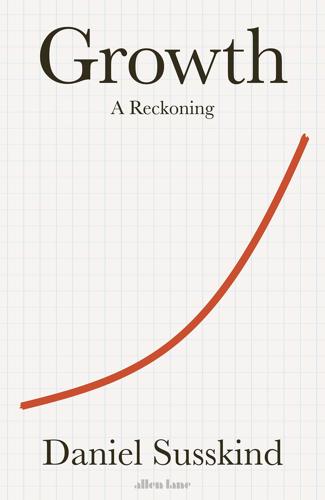
Growth: A Reckoning
by
Daniel Susskind
Published 16 Apr 2024
What is so compelling about this argument, alongside its simplicity, is that it doesn’t rely on bold claims about those millennia being technologically barren. Lack of technological development would have explained the Long Stagnation if it were true, but human history is littered with impressive innovations and inventions well before 1800. (Consider, for instance, the Agricultural Revolutions.) Instead, the Malthusian story argues that any one-off technological advances simply led to more people, rather than more prosperity. Living standards might increase temporarily, but a growing population would drive them back down to subsistence.44 All countries, rich and poor, would be stuck in the same struggle, an inescapable trap of their own making.
…
Taken together, these reforms are our best hope of achieving a Second Industrial Enlightenment, another moment of intellectual and material flourishing akin to the one that ended the Long Stagnation. Liberating Ideas The notion of ‘property’ – that a tangible thing can be owned – is an old one. A few thousand years ago, it preoccupied the ancient philosophers: both Plato and Aristotle wrote about it.9 Thousands of years before that, it is said to have kickstarted the Agricultural Revolution: only when property rights assured people of the metaphorical and literal fruits of their labour – harvesting cultivated crops, rearing domesticated animals – did it make sense to stop living as an itinerant forager and settle down to profit from the sedentary life of a farmer.10 And if we are open-minded, we might imagine that the origins of it are even more distant.
…
The latter argued in favour of slavery, human beings as property. 10 Samuel Bowles and Jung-Kyoo Choi, ‘Coevolution of Farming and Private Property during the Early Holocene’, Proceedings of the US National Academy of Sciences, 110:22 (2013), 8830–35; Samuel Bowles and Jung-Kyoo Choi, ‘The Neolithic Agricultural Revolution and the Origins of Private Property’, Journal of Political Economy, 127:5 (2019). The argument is actually more subtle: that farming required property rights, but also that property rights required farming, i.e., they coevolved (because the things involved in farming were easy to demarcate and assign rights over). 11 Adam Smith, An Inquiry into the Nature and Causes of the Wealth of Nations: A Selected Edition (Oxford: OUP, 1998), p. 21. 12 See Carla Hesse, ‘The Rise of Intellectual Property, 700 BC–AD 2000: An Idea in the Balance’, Daedalus (Spring 2002), 26–45. 13 12.521, www.loebclassics.com/view/atheneus_grammarian-learned_banqueters/2007/pb_LCL327.55.xml; 7.pf, www.loebclassics.com/view/vitruvius-architecture/1931/pb_LCL280.67.xml; 3.3, www.loebclassics.com/view/suetonius-lives_illustrious_men_grammarians_rhetoricians_grammarians/1914/pb_LCL038.385.xml.
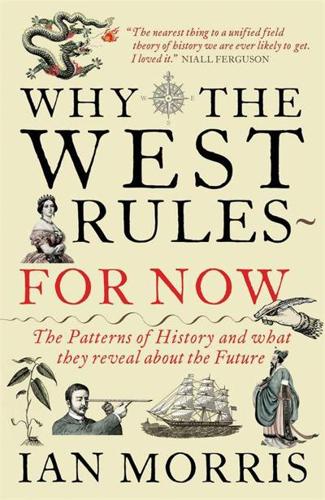
Why the West Rules--For Now: The Patterns of History, and What They Reveal About the Future
by
Ian Morris
Published 11 Oct 2010
Australians had the most limited resources of all. Recent excavations show that they experimented with eel farming, and given another few thousand years may well have created domesticated lifestyles. Instead, European colonists overwhelmed them in the eighteenth century CE, importing wheat and sheep, descendants of the original agricultural revolution in the Hilly Flanks. So far as we can tell, people were indeed much the same everywhere. Global warming gave everyone new choices, among working less, working the same amount and eating more, or having more babies, even if that meant working harder. The new climate regime also gave them the option of living in larger groups and moving around less.
…
Back in Chapter 1 I described the historian Kenneth Pomeranz’s complaints about how comparative historians often skew analysis of why the West rules by sloppily comparing tiny England with enormous China and concluding that the West already led the East by 1750 CE. We must, he insisted, compare like-sized units. I spent Chapters 1 and 2 responding to this by defining West and East explicitly as the societies that have descended from the original Western and Eastern agricultural revolutions in the Hilly Flanks and the Yellow and Yangzi river valleys; now it is time to admit that that resolved only part of Pomeranz’s problem. In Chapter 2, I described the spectacular expansion of the Western and Eastern zones in the five thousand or so years after cultivation began and the differences in social development that often existed between core areas such as the Hilly Flanks or Yangzi Valley and peripheries such as northern Europe or Korea; so which parts of the East and West should we focus on when working out scores for the index of social development?
…
Perhaps the industrial revolution came first to the West not because of some extraordinary fluke, as Pomeranz concluded, but because East and West were both on track for such a revolution; and then something about the way the West reacted to the events of the fourteenth century gave it a slight but decisive lead in reaching the takeoff point in the eighteenth. It seems to me that Figures 3.3, 3.7, and 3.8 illuminate a real weakness in both long-term lock-in and short-term accident theories. A few of the theorists focus on the story’s beginning in the agricultural revolution, while the great majority look only at its very end, in the last five hundred years. Because they largely ignore the thousands of years in between, they rarely even try to account for all the spurts of growth, slowdowns, collapses, convergences, changes in leadership, or horizontal ceilings and vertical links that jump out at us when we can see the whole shape of history.

Survival of the Richest: Escape Fantasies of the Tech Billionaires
by
Douglas Rushkoff
Published 7 Sep 2022
Unfettered and unregulated by the backwards thinking of nation-states, aquapreneurs will be free to reimagine civilization as an ultra-libertarian experiment. They will rapidly prototype new forms of government, and determine what—if any—nods to civics or collectivism are even necessary. As the Seasteading Institute website explains, “We’ve had the agricultural revolution , the commercial and industrial revolutions, but why not a governance revolution? Enter the sea.” The ocean will be the means to an end—a way of redefining one’s sovereignty from the bottom up, being always absolutely in charge of one’s own personal allegiance, expression of values, and obligation to the law.
…
sh =675141ef6ad6. 19 real estate agents specializing in private islands : Heather Murphy, “The Island Brokers Are Overwhelmed,” New York Times , October 9, 2020, https:// www .nytimes .com /2020 /10 /09 /realestate /private -islands -coronavirus .html. 19 Cancer-causing microplastics : Jamie Wheal, Recapture the Rapture: Rethinking God, Sex, and Death in a World That’s Lost Its Mind (New York: HarperCollins, 2021). 19 World Wide Fund for Nature study : Wijnand de Wit and Nathan Bigaud, “No Plastic in Nature: Assessing Plastic Ingestion from Nature to People,” World Wide Fund for Nature, 2019, https:// d2ouvy59p0dg6k .cloudfront .net /downloads /plastic _ingestion _web _spreads .pdf. 21 “aquapreneurs” : Joe Quirk and Patri Friedman, Seasteading: How Floating Nations Will Restore the Environment, Enrich the Poor, Cure the Sick, and Liberate Humanity from Politicians (New York: Free Press, 2017). 21 humanity’s return to the sea : “Busan UN Habitat and OCEANIX Set to Build the World’s First Sustainable Floating City Prototype as Sea Levels Rise,” UNHabitat.org, November 18, 2021, https:// unhabitat .org /busan -un -habitat -and -oceanix -set -to -build -the -worlds -first -sustainable -floating -city -prototype -as. 21 “To establish permanent” : https:// www .seasteading .org. 21 “We’ve had the agricultural revolution” : https:// www .seasteading .org. Chapter 2: Mergers and Acquisitions 25 Tech companies actively sought : Douglas Rushkoff, Cyberia: Life in the Trenches of Hyperspace (New York: HarperOne, 1994). 25 “new communalists” : Fred Turner, From Counterculture to Cyberculture: Stewart Brand, the Whole Earth Network, and the Rise of Digital Utopianism (Chicago: University of Chicago Press, 2006). 26 Operation Sundevil : Bruce Sterling, The Hacker Crackdown: Law and Disorder on the Electronic Frontier (New York: Bantam, 1992). 26 “Governments of the Industrial World” : John Perry Barlow, “A Declaration of the Independence of Cyberspace,” Electronic Frontier Foundation, 1996, https:// www .eff .org /cyberspace -independence. 26 fungus and bacteria : Qi Hui Sam, Matthew Wook Chang, and Louis Yi Ann Chai, “The Fungal Mycobiome and Its Interaction with Gut Bacteria in the Host,” International Journal of Molecular Sciences , February 4, 2017, https:// www .ncbi .nlm .nih .gov /pmc /articles /PMC5343866 /. 28 extolled the virtues of the deal : Saul Hansell, “America Online Agrees to Buy Time Warner for $165 Billion; Media Deal is Richest Merger,” New York Times , January 11, 2000, https:// www .nytimes .com /2000 /01 /11 /business /media -megadeal -overview -america -online -agrees -buy -time -warner -for -165 -billion .html. 28 the piece I wrote placed in the Guardian : Douglas Rushkoff, “Why Time Is Up for Warner,” Guardian , January 20, 2000, https:// www .theguardian .com /technology /2000 /jan /20 /onlinesupplement10. 29 People blamed : Seth Stevenson, “The Believer,” New York Magazine , July 6, 2007, https:// nymag .com /news /features /34454 /. 30 hired investment bank Salomon Smith Barney : Tim Arango, “How the AOL–Time Warner Merger Went So Wrong,” New York Times , January 10, 2010, https:// www .nytimes .com /2010 /01 /11 /business /media /11merger .html. 31 probably borrowed : Steven Levy, Facebook: The Inside Story (New York: Blue Rider Press, 2020). 32 stocks quadruple : Lisa Pham, “This Company Added the Word ‘Blockchain’ to Its Name and Saw Its Shares Surge 394%,” Bloomberg , October 27, 2017, https:// www .bloomberg .com /news /articles /2017 -10 -27 /what -s -in -a -name -u -k -stock -surges -394 -on -blockchain -rebrand. 33 “independent, host-led local organizations” : Dave Lee, “Airbnb Using ‘Independent’ Host Groups to Lobby Policymakers,” Financial Times , March 21, 2021, https:// www .ft .com /content /1afb3173 -444a -47fa -99ec -554779dde236. 33 Google was outspending : Shaban Hamza, “Google for the First Time Outspent Every Other Company to Influence Washington in 2017,” Washington Post , January 23, 2018, https:// www .washingtonpost .com /news /the -switch /wp /2018 /01 /23 /google -outspent -every -other -company -on -federal -lobbying -in -2017 /. 33 outspent by Facebook : Lauren Feiner, “Facebook Spent More on Lobbying than Any Other Big Tech Company in 2020,” CNBC , January 22, 2021, https:// www .cnbc .com /2021 /01 /22 /facebook -spent -more -on -lobbying -than -any -other -big -tech -company -in -2020 .html. 33 Numerous studies : Martin Gilens and Benjamin I.

The Survival of the City: Human Flourishing in an Age of Isolation
by
Edward Glaeser
and
David Cutler
Published 14 Sep 2021
The earliest hominids were not disease-free. Some organisms, like lice, pinworms, and salmonella, seem to have been with us since before we were human. Diseases like sleeping sickness and trichinosis may have traveled from animals to people even when we hunted in small packs without domesticated animals. The agricultural revolution that led to sedentary settlements about twelve thousand years ago created higher human density levels and more opportunities for infection from domesticated livestock. Close proximity to pigs has long had its hazards. A distinguished anthropologist of early disease, George Armelagos, emphasizes that the “products of domesticated animals such as milk, hair and skin . . . could transmit anthrax, Q fever, brucellosis, and tuberculosis.”
…
Instead of “breeding a new race of nomads,” as Toffler wrote, the geographic mobility of Americans is far lower today than it was in 1970. The 1970s were a catastrophic decade for much of urban America. When Toffler followed Future Shock with The Third Wave in 1980, he expressed far less confidence that cities would survive. The main thesis of that later book was that humanity had experienced a first “wave” during the agricultural revolution ten millennia ago and a second wave during the Industrial Revolution. The third wave was “the death of industrialism and the rise of a new civilization” that could be only imperfectly labeled with the phrases “information age, electronic era, or global village.” Toffler was writing just as the easier shipment of goods was killing off urban manufacturing.
…
Polgar, “The Evolution and Eradication of Infectious Diseases.” Cockburn, Infectious Diseases; Their Evolution and Eradication. Diseases like sleeping: Steverding, “The History of African Trypanosomiasis”; Neghina et al., “The Roots of Evil: The Amazing History of Trichinellosis and Trichinella Parasites.” The agricultural revolution: “Neolithic Revolution,” History.com. “products of domesticated animals”: Armelagos et al., “Disease in Human Evolution: The Re-Emergence of Infectious Diseases in the Third Epidemiological Transition,” 3. Records of pre-Athenian plagues: Ehrenkranz and Sampson, “Origin of the Old Testament Plagues: Explications and Implications.”
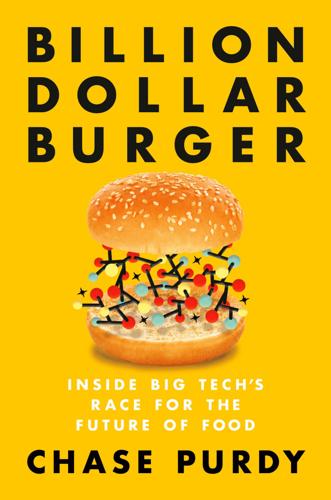
Billion Dollar Burger: Inside Big Tech's Race for the Future of Food
by
Chase Purdy
Published 15 Jun 2020
You see, what makes us different from the animals, why we were able to develop afterwards, intelligently, was we learned how to cook. That is something that is completely underestimated.” And while Brabeck-Letmathe conceded that vegetables and grown foods play an important role, he told me that he knew it “wasn’t enough” for him. For him and Singer, the agricultural revolution is an evolving narrative. The work of figuring out new ways to efficiently feed people is not work for the weary, though it doesn’t make him popular with slow food advocates such as former New York Times food columnist Mark Bittman. I asked him about Brabeck-Letmathe’s perspective and couldn’t help but chuckle at his scornful reaction.
…
ABCDEFGHIJKLMNOPQRSTUVWXYZ INDEX The page numbers in this index refer to the printed version of this book. The link provided will take you to the beginning of that print page. You may need to scroll forward from that location to find the corresponding reference on your e-reader. ag-gag laws, 200–201 agrarian model, 197–98 agribusiness. See industrial farming Agricultural Revolution, 195–98 Agriculture Department, U.S. (USDA) cell-cultured meat and, 130–31 cell-cultured meat and beef industry, 154–55, 168–78 conflict with FDA, 173–76, 177 egg industry and Just Mayo, 91–92 farm consolidation, 7–8 political lobbying of, 168–74, 176–77 Albright, Curt, 146–47 Aleph Farms, xv, 114, 116–18, 155 Almy, Jessica, 170 Alternative Protein Show, 230 American Civil War, 232 American Egg Board, 90–93 American Meat Science Association, 130–31 American Type Culture Collection (ATCC), 34–35 Amsterdam, 57–58 animal farming.
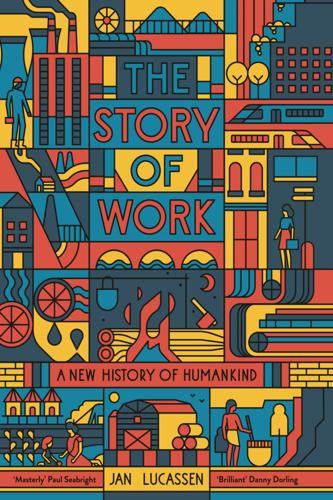
The Story of Work: A New History of Humankind
by
Jan Lucassen
Published 26 Jul 2021
This book is structured chronologically and thematically and addresses common themes that recur, to a greater or lesser extent, in each period, of which I distinguish six. The first is by far the longest, from the emergence of Homo sapiens (who, based on genetic calculations, split off from Neanderthals 700,000 years ago) to the Neolithic or agricultural revolution. Initially, and this must be our starting point, there was essentially no distinction between human and animal attempts to survive, but through the development of human speech and thus new forms of communication, new forms of collaboration grew. The individual lived within a household, households formed bands, and bands exchanged individuals.
…
Nevertheless, it offered increased opportunities for obtaining and hoarding food, and thus for the division of labour, which may have led to greater enrichment of some households and, ultimately, to disparities between households. Here, the seed was sown for inequality; alongside cooperation, subordination was now being created too. The differences, however, were still small in the second period distinguished in this book, and Africa demonstrates that there is no causal link between the agricultural revolution and social inequality. Following the emergence of cities, first in Mesopotamia some 7,000 years ago – extremely late in the evolution of Homo sapiens – and a little later in China and India, the division of labour between urban and rural areas and among urban residents was possible. The emergence of city leagues and states from 3000 BCE strengthened this trend.
…
For women, the Neolithic revolution meant a steady increase in labour, in both the work and the child-bearing senses’.62 That farming was primarily women’s work is substantiated by similar research in North America. The starting point is the observation that highly mobile humans develop a long ridge down the length of the femur.63 Conversely, this ridge disappears once we become sedentary under the influence of the agricultural revolution. Interestingly, this process does not always occur simultaneously among men and among women. And that is precisely the case among the people of the Cochise culture in what is now south-eastern Arizona. They switched to farming 3,500 years ago, but apparently farming was typically women’s work, because only the men kept their pronounced ridges.
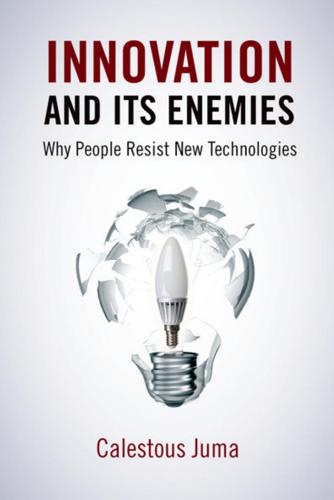
Innovation and Its Enemies
by
Calestous Juma
Published 20 Mar 2017
For the most part, advances in farm implements during this period were regionally exclusive, and farmers benefited little from their development. With the onset of the Civil War and the ensuing political and social upheaval, farming in America underwent significant changes. The Civil War prompted the first agricultural revolution, transitioning from hand labor to horse labor.6 With the surging demand for agricultural products and shortage of labor due to the draft, farmers were called upon to adopt practices that would foster productivity. Deere’s steel plow and McCormick’s reaper facilitated greater animal use and enabled farmers to produce more in a shorter period of time.
…
Douglas Hurt, American Farm Tools: From Hand-Power to Steam-Power (Manhattan, KS: Sunflower University Press, 1982), 133. 5. Wayne D. Rasmussen, “The Impact of Technological Change on American Agriculture, 1862–1962,” Journal of Economic History 22, no. 4. (1962): 574. 6. Rasmussen, “Impact of Technological Change,” 578; Wayne D. Rasmussen and Paul S. Stone, “Toward a Third Agricultural Revolution,” Proceedings from the Academy of Political Science 34, no. 3 (1982): 174–185. 7. Robert C. Williams, Fordson, Farmall, and Poppin’ Johnny: A History of the Farm Tractor and Its Impact on America (Urbana: University of Illinois Press, 1988), 11. 8. Williams, Fordson, 90. 9. Deborah Fitzgerald, Every Farm a Factory: The Industrial Ideal in American Agriculture (New Haven: Yale University Press, 2003), 97. 10.
…
See also Farm mechanization; Transgenic crops agricultural biotechnology, differing perceptions of, 4–5 agricultural research, lack of, 253 agricultural research stations, 133, 134 agricultural technology, 256, 298 agro-ecological farming, 3, 233, 251–252 changing farm sizes, 121 chaos in, 126 chemicals, opposition to use of, 24 in China, reduced pesticide exposure, 246 farmers’ organizations, 143 farm subsidies, 229 first agricultural revolution, 123 impact of Civil War on, 123–124 institutionalization of mechanization of, 137–140 lack of government intervention in, 98 researchers, tensions with, 134–135 sustainable, 224, 248–249 traditional farming economy, impact of technology on, 23 transgenic crops, 226–227 as way of life, 141 Agriculture Department (USDA) cold storage, public education on, 195–196 Economic Research Service, 140 frozen pack laboratory, 195 genetic engineering regulation and, 237 HAA on, 130 inspection service, 197 ISAAA, support for, 244 market-news network, 196–197 role of, 138–139, 142, 197, 201 shipping conditions, tests on, 193 transgenic plant regulation, 265–266 on warehouse cold storage, 187 warehouse reporting system, 188 Agrochemicals, 227, 250.

The Economic Singularity: Artificial Intelligence and the Death of Capitalism
by
Calum Chace
Published 17 Jul 2016
When a buccaneer raiding party boarded a Spanish ship the first thing they would look for and demand was the maps. Charts – a form of information which improve navigation – were actually more valuable than silver and gold.[ix] An example of one revolution re-igniting another is that the industrial revolution enabled the mechanisation of agriculture, causing a second agricultural revolution, making the profession of farming more effective and more efficient. The information revolution does the same, providing farmers with crops that are more resilient in the face of weather, pests and weeds, and allowing them to sow, cultivate and harvest their crops far more accurately with satellite navigation.
…
Unemployed people often struggle with depression, but they are experiencing it in the context of a society where it seems that everyone else has a job. They are also on a lower income than the employed people around them. How bad would it be if everyone else was also unemployed, and receiving a decent income? Fortunately, there are a couple of places we can look for an answer to that question. The rich and the old The agricultural revolution, around 12,000 years ago, created sustainable surpluses of food and other basic resources. This enabled a class of people to stop doing the work that pretty much all humans had done since our arrival on the planet, which was foraging and hunting for food. They became tribal leaders, kings, warriors, priests, traders and so on.

Give People Money
by
Annie Lowrey
Published 10 Jul 2018
Sam Altman, the president of Y Combinator, recently spoke at a poverty summit cohosted by Stanford, the White House, and the Chan Zuckerberg Initiative, the Facebook billionaire’s charitable institution. “There have been these moments where we have had these major technology revolutions—the Agricultural Revolution, the Industrial Revolution, for example—that have really changed the world in a big way,” he said. “I think we’re in the middle or at least on the cusp of another one.” As it turns out, the idea of a UBI has tended to surface during such epochal economic moments. It first arrived, it seems, at the very birth of capitalism, as medieval feudalism was giving way to Renaissance mercantilism during the reign of Henry VIII.
…
“VC for the people”: Steve Randy Waldman, “VC for the People,” Interfluidity (blog), Apr. 16, 2014, http://www.interfluidity.com/v2/5066.html. “evolving as we speak”: Chris Hughes, telephone interview by author, Oct. 21, 2016. “we can see the future”: Misha Chellam, telephone interview by author, Feb. 10, 2017. “There have been these moments”: Lowrey, “Future of Not Working.” the open-field system: Mark Overton, Agricultural Revolution in England: The Transformation of the Agrarian Economy 1500–1850 (Cambridge: Cambridge University Press, 1996), ebook. “Who will maintain husbandry”: Quoted in John F. Pound, Poverty and Vagrancy in Tudor England, 2nd ed. (London: Routledge, 2014), 5. meek animals: Thomas More, Utopia, ed.
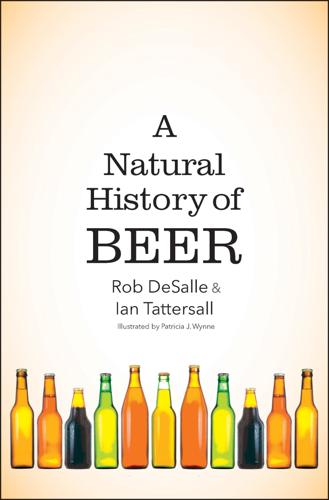
A Natural History of Beer
by
Rob DeSalle
Published 14 Jun 2019
Indeed, it would seem more accurate to say that today’s craze for extreme beers represents a return to the beverage’s origins. One difference between beer in earlier times and beer today is that nowadays we have the option of slaking our thirsts with water. Today most citizens of developed economies take pure and refreshing water for granted; but it was not always so. The Agricultural Revolution brought with it pollution on a grand scale, as one of the major byproducts of progress with which human society is still coming to terms. On the marshy Mesopotamian plain, crowded with people and their even more numerous domestic animals, there would have been few sources of reliably potable water in Sumerian times.
…
In 1989 Fritz Maytag, a wealthy young entrepreneur who had not long before bought and rejuvenated San Francisco’s venerable Anchor Brewing Company, ran across a 1987 article by the Philadelphia anthropologist Sol Katz. In this piece Katz argued that gathering cereal grains for brewing had been a major impetus for the agricultural revolution; and in support of this contention he cited the translation of the Hymn to Ninkasi that the University of Chicago Assyriologist Miguel Civil had made a couple of decades earlier. Working closely with Katz and Civil, Maytag then figured out a practical recipe for Ninkasi’s beer that was compatible with her activities as described in the Hymn.
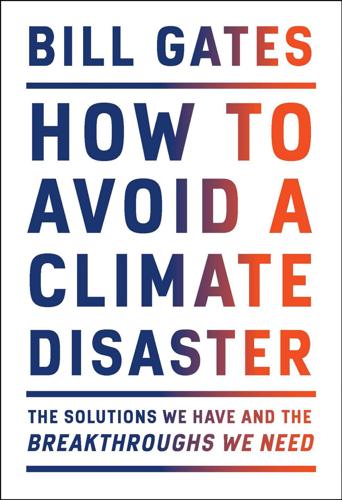
How to Avoid a Climate Disaster: The Solutions We Have and the Breakthroughs We Need
by
Bill Gates
Published 16 Feb 2021
Along with Norman Borlaug’s semi-dwarf wheat and new varieties of corn and rice, synthetic fertilizer was a key factor in the agricultural revolution that changed the world in the 1960s and 1970s. It’s been estimated that if we couldn’t make synthetic fertilizer, the world’s population would be 40 to 50 percent smaller than it is. Touring the Yara fertilizer distribution facility in Dar es Salaam, Tanzania, 2018. I’m having even more fun than it looks. The world uses a lot of fertilizer already, and poor countries should be using more. The agricultural revolution I mentioned—often called the Green Revolution—largely bypassed Africa, where the typical farmer gets just one-fifth as much food per acre of land as an American farmer gets.

Rebel Ideas: The Power of Diverse Thinking
by
Matthew Syed
Published 9 Sep 2019
Our results show that guests at a mixer tend to spend the time talking to the few other guests whom they already know well.’ The most powerful constraint on the growth of the collective brain in our species’ early history was social isolation. Nomadic groups of hunter-gatherers were often geographically dispersed and had few means of communication. When groups started living closer together following the agricultural revolution, sociality was constrained by the many barriers that can exist between human groups, both physical and psychological. We noted that Tasmania went backwards when it was separated from the broader Australian ecology. Today, however, we live in a radically different era. People are connected not just socially but digitally.
…
For one thing, the two groups think drastically different things.’FN1 Other studies led by Seth Flaxman of Oxford and the Pew Institute offer a different lens on the digital world. These find that when you look at overall Internet use, digital users have higher average exposure to the views of their own side, but nevertheless get to see the views of opponents, too. Perhaps that is not surprising. Even in the clan systems that emerged after the agricultural revolution, the various in-groups were not completely shut off from each other. But what is fascinating – and broadly acknowledged by almost all scholars – is what happens when exposure does take place. Now, you might have thought that by hearing the views of opponents, and seeing the evidence from the other side, opinions would become less extreme.
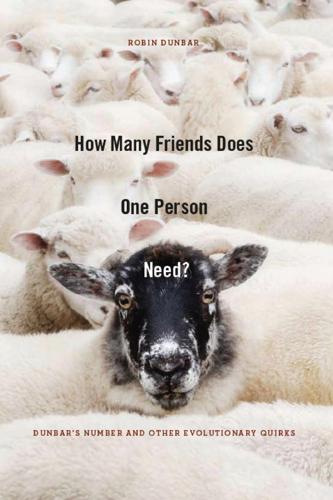
How Many Friends Does One Person Need? Dunbar’s Number and Other Evolutionary Quirks
by
Robin Dunbar
and
Robin Ian MacDonald Dunbar
Published 2 Nov 2010
It enabled us to produce a great deal more off each acre of land than our medieval forebears could even have dreamed about, and it finally did away with the Highland ‘ferm touns’ and the old rig systems of medieval agriculture. But there is a worrying difference between then and now. The agricultural revolution relied on old technology, the kind that every farmer worth his salt knew by instinct. New developments in science today depend on much more sophisticated kinds of knowledge. And the worrying point here is that the number of new discoveries per decade has been declining steadily for most of the last century.
…
[Page 292] Index academic: communities, 27; performance, 208–12 acquaintanceship, 32–4 Adoyo, Bishop Boniface, 117 advertising: for a mate, 228–32, 236–41; men’s conversations, 75–6 Africa: forests, 144–5; fossils, 132–3; great apes, 4, 122, 127, 134–5, 145, 275; Horn of, 89, 147, 148; human ancestry, 3, 122, 127, 134–5, 138–9, 161; migration from, 85, 127, 129–30, 139–41, 151; Pygmy peoples, 131, 267; San Bushmen, 33, 90, 182, 287; sickle cell anaemia, 101; skin colours, 90–1; Swahili language, 52 age at death, 204–5 aggression, 259, 260, 261–2, 264 agricultural revolution, 157–8 Alexander the Great, 55 algebra, 118 alligators, 121 Altamira cave paintings, 135–7 Amboseli National Park, 16, 195 Amish, 27–8 amygdala, 170 androstadienone, 247–8 androstenone, 247 Anglo-Saxons, 57–8 apes: brain size, 22–4, 272–3; capacity for theory of mind, 176–7, 197, 200, 277; classification, 274–5; culture, 194; grooming, 61–2, 73–4, 243, 286; group size, 24; habitat, 134, 135; language, 195, 275; mating strategies, 29; moral beings, 275; pelvis, 93; quadrupedal, 134; relationship with humans, 4, 116–17, 127, 277; sleeping, 83; social cognitive abilities, 31, 178–9, 181, 272, 277; social interactions, 31, 35, 179, 285; story-telling, 200; tools, 193; see also chimpanzees, gorillas, orang utans Arden, Ros, 208 Aristotle, 7, 118 armies: conquests, 54–5; units, 17 Asimov, Isaac, 217 Atran, Scott, 280 Attila, 52, 139, 153–4 attractiveness, 233–7 Audubon Society, 5 Austen, Jane, 228, 236 [Page 293] Australian Aboriginals, 33, 82, 123 autistic people, 277 babies: care of, 95, 107–8; human prematurity, 85, 92–5; motherese language, 76–7; paternity, 95–6, 257; skin colour, 91 baboons: habitat, 24; language, 196; mating strategies, 262; neocortex size, 24; religion, 279–80; social skills, 16; tactical deception, 29–30 back, lower, 93–4 bacterial infection, 104–6 Baker, Robin, 257 Bantu peoples, 91, 101 Barton, Rob, 15 Basques, 51–4 Bates, Tim, 206 Bayes, Thomas, 184 Bebo, 21 Becher, Tony, 27 bees, 98, 195 Behe, Michael, 114 Bellis, Mark, 257 Bentham, Jeremy, 268 Bering Strait, 123 biodiversity, 103 bipedalism (walking upright), 93–4, 133–4 birds: brain size, 12; chromosomes, 97; dinosaur relationship, 120, 121; divorce, 260–1; monogamous relationships, 12, 13–14, 221, 255–6, 259–60 birth: human childbirth, 92–6; place, 44–5; premature, 85, 94–5; sex ratio at, 110; weight, 104, 206 Blair, Tony, 166 blue tits, 193 blushing, 19–20 bonellia worm, 98 bonobos, 275–6 Borodin, Alexander, 216 Boswellia trees, 147–9 Boyer, Pascal, 280 brain: complexity, 11; emotional responses, 16, 170; energy consumption, 11–12; evolution, 161, 181; frontal lobe, 181, 269–70, 273, 290; judgements about morality, 269–70; limbic system, 15–17; neocortex, 15–17, 23–4, 29, 181, 272–3; size, 12–13, 22–4, 81, 92–3, 130–1, 261, 272; striate cortex, 272–3; visual processing, 181, 272–3 Buffon, Comte de, 7 burials, 137, 288–9 Burns, Robert, 213, 218–22 Bush, George, 167 business organisations, 26 Buss, David, 232 Byrne, Dick, 29, 176, 179 Carnegie Medal, 249 Cartmill, Erica, 176, 179 cave paintings, 53–4, 135–8 Celts, 53, 57–9 chain letters, 186–9 Changizi, Mark, 19 Chaplin, George, 89–90 Chatters, Jim, 123 Chauvet cave art, 137 Cheney, Dorothy, 195–6 Cheyenne Indians, 250–1 childbirth, 77, 85, 92–5 childcare, 107–8 chimpanzees: babies, 77; classification, 274–5; culture, 194; DNA, 121; eaten, 131, 145; extinction threat, 145; habitat, 24, 134; language, 196; laughter, 68–9; [Page 294] mind-reading capacities, 179; moral beings, 275; neocortex size, 24; pygmy (bonobo), 275–6; relationship with humans, 122, 133, 134; religion, 279–80; skull size, 134; social cognitive abilities, 181, 272; tools, 192–3; typewriting, 200 China: migration from, 91; sex ratio, 109–10, 112 Christ Church, Spitalfields, 125 Christianity, views on evolution, 116–17 chromosomes: genetic analysis, 120–1; maternal and paternal, 15; X, 18–19; XX, 96–7; XY, 96–7; Y, 47, 48, 49, 55, 56, 57–8 chuckwalla lizards, 261–2 cities, 4, 24–5, 159 Clark, Arthur C., 217 climate warming, 150–2, 156–9 Clinton, Hillary, 167–8 colour vision, 9, 17–20, 183–4 community: kinship, 35, 38–9; membership, 39, 82; role, 35; small-scale, 35, 38–9, 291–2 conscious thinking, 23, 63, 72, 170, 181 conversations, 74–5, 79–80, 286 Copernicus, Nicolas, 119 Corti, organ of, 184 creationism, 113 crocodiles, 98, 121–2 cuckoldry, 255–8 culture, human, 4, 137–8, 175, 191–4, 196–8 Cunningham, Michael, 235 Cuvier, Baron, 7, 182 Dalí, Salvador, 163 Daly, Martin, 95, 259 dance, 72, 284, 287 Darwin, Charles: Descent of Man, 70, 72, 85; evolutionary theory, 6–10, 100, 111, 115–16, 126, 164, 227, 279, 292; influences on, 157, 183; letter-writing, 21; marriage plans, 243; Origin of Species, 5, 7–8, 113, 157 Darwin, Erasmus, 7 Davies, Nick, 256 Dawkins, Richard, 5 DDT, 99, 116 Dearie, Ian, 204, 205 death, age at, 204–5 Declaration of Arbroath, 50–1 Dene-Caucasian languages, 53 Dennett, Daniel, 177 Descartes, René, 191, 195, 209, 210 Dhondt, André, 260 dialects, 44–5 Diamond, Jared, 91 diamond market, 64 dichotomies, 182–5 dinosaurs, 120–2, 143–4 diseases, new, 100–3 divorce, 108, 110, 254, 260–1 DNA, 47, 120–1, 124–5, 140, 255 dogs, 180, 195, 277 Dohnányi, Christoph von, 218 Domesday Book, 27 dominance, male, 29 Dominica, island of, 41 Donner Party, 39–40 Douglas, Stephen, 168–9 Duck, Steve, 238 Dunbar’s Number, 4, 24, 28, 285 dunnocks (hedge sparrows), 256–7 Durkheim, Émile, 284, 291 Edinburgh Enlightenment, 213 education: effect on political views, 170–1; exercise and, [Page 295] 208–12; science, 214; Scots, 212–14; study of Latin, 223–6 Einstein, Albert, 172, 212, 216, 218 elections, 164–9 emotional response mechanism, 16 emotional responses, 169–71 endorphins: levels, 210–11; release triggered by grooming, 62, 69, 286; release triggered by laughter, 68, 69; release triggered by music, 72, 76, 78; release triggered by religious rituals, 284–5, 287, 291–2; release triggered by spices, 106; role, 62, 209 Enquist, Magnus, 259 Eskimo peoples, 91–2, 246 evolution, 5–10, 113–15, 279, 292 evolutionary psychologists, 42–3, 71, 161, 185, 281 extinctions, 143–6; frankincense trees, 146–9; languages, 152–3; mammoths, 149–52 eyes, 17, 114–15 Facebook, 21 faces, 164–8 factory size, 26 Falk, Dean, 76 Farisai, Kamal al-Din al-, 119 Farrant, Patti, 106 Farthing, William, 248–9 fertility, 207–8, 234 Feynman, Richard, 217 fighting, 16–17 Flores, island of, 128 food production, 157–8 forests, 144–5 fossil record, 119–20, 128–35 frankincense, 9, 146–9 Freud, Sigmund, 244, 258, 283 friends, number of, 21–2, 32 ‘Frisch Effect’, 234 frontal lobe of brain, 181, 269–70, 273, 290 Fulani, 88 Furness, Bob, 260–1 Gaelic, 9, 41–2, 152–3, 154–5 Gardner, Lucinda, 163 genes: haplotypes, 48–50; mutation, 49–50, 85, 115; parental, 14–15; see also chromosomes genetic drift, 49 Genghis Khan, 47–50 genomic imprinting, 15–16 geology, 182–3 Gilday, Jamie, 45 Glass, Philip, 218 godparents, 42, 108 GoreTex, 26 gorillas: classification, 274; eaten, 131; extinction threat, 145; language, 196, 275; relationship with humans, 122, 275; zoo exhibit, 267 gossip, 79–81, 286 great apes, see chimpanzees, gorillas, orang utans Great Chain of Being, 7 Greenland, 125 grooming: baboon tactical deception, 30; language as, 73–4; nuzzling, 243; relationship involved, 61–2, 73–4, 80, 286–7; release of endorphins, 62, 69, 286–7 group size, 23–8, 33–4, 81, 290–1 Haidt, Jonathan, 268 Hamilton’s Rule, 43–4 haplotypes, 48–50 Harcourt, Sandy, 253 Hauser, Marc, 270 health, link with IQ, 204–6 [Page 296] hearing, 184 height, 162–4, 166–9, 207 Helmholtz, Herman von, 183 Hering, Ewald, 183 heroism, 249–50 Hill, Elizabeth, 163 Hill, Russell, 26 Hitler, Adolf, 170 ‘Hobbit, The’, 128–32 home-wreckers, 260–1 Homo: erectus, 69, 93, 127, 128, 129–30, 290; floresiensis, 129; genus, 134; sapiens, 81 Hume, David, 213, 268, 270 hunter-gatherers, 158–9 Hurst, Jane, 246 Hutterites, 27–8 Huxley, Thomas, 117 ibn al-Haytham, Hasan, 118–19 ibn Musa, Abu Jafar Muhammed, 118 Ice Age, 149–50, 156 Iceland, 58–9 immune system, 106, 244–6, 285 income, IQ and, 207 Indo-European: language, 51–3; migrations, 51–4, 139 Intelligent Design (ID), 113–16 intentional stance, 177–8 intentionality: ape capacity, 181, 200, 272, 273; brain evaluation of, 270; definition, 180; fifth-order, 180, 181, 199–201, 272, 289, 290; first-order, 180, 181, 272; fourth-order, 200, 289, 290; frontal lobe involvement, 181, 269–70, 273, 290; human capacity, 181, 199–200, 272, 273, 289–90; monkey capacity, 181, 272, 273; religious belief and, 271–2, 278, 289–90; secondorder, 180, 181, 200, 271, 272, 273, 289; sixth-order, 201; third-order, 200, 289, 290 Inuit, 38, 125 IQ, 185, 203–6, 207, 210, 212 Islam: law, 260; science, 118–19; views on evolution, 117 IVF pregnancies, 106 Jablonski, Nina, 89–90 jealousy, 259–60 Jobling, Mark, 57 Johnson, Dominic, 264 Johnson, Douglas, 169 jury system, 171–4 Kanpur (Cawnpore), 35–6 Kant, Immanuel, 268 Kanzi, 275–6 Kaskatis, Kostas, 71 Keefe, Richard, 230 Kelly, Sue, 248, 249 Kennewick Man, 123–4 Kenrick, Douglas, 229–30 Kenya: Amboseli National Park, 16, 195; fossils, 132; religion, 116–17 Kerry, John, 167 Keverne, Barry, 15 killdeer, 260 kinship: circles of acquaintanceship, 34; communities, 35, 38–9; evolutionary significance, 43–4; social framework, 35 kissing, 243–6 klipspringer, 259 Kluckhohn, Clyde, 192 Kroeber, Alfred, 192 Krummhörn, parish registers, 42, 227, 237 Kummer, Hans, 30 [Page 297] lactase gene, 86, 88 Lamarck, Jean-Baptiste, 7 language(s): animals, 195–6; apes, 275–6; Basque, 51–4; dialect and, 44–5; evolution, 79–81, 153–5; extinction, 152–3, 155; geographical distribution, 102; Indo-European, 51–3; motherese, 76–8 Lascaux cave art, 137 Latin, 153, 154, 219, 223, 225 laughter, 9, 66–9 Lavoisier, Antoine, 186 law, 58, 171–4, 260, 268, 271 Lawrence, T.
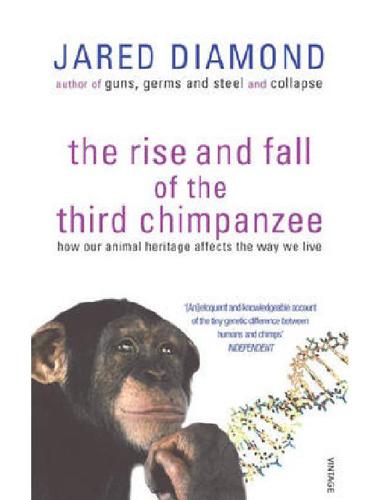
The Rise and Fall of the Third Chimpanzee
by
Jared Diamond
Published 2 Jan 1991
Since no food is grown and little is stored, there is (according to this view) no respite from the time-consuming struggle that starts anew each day to find wild foods and avoid starving. Our escape from this misery was launched only after the end of the last Ice Age, when people began independently in different parts of the world to domesticate plants and animals (see Chapter Fourteen). The agricultural revolution gradually spread until today it is nearly universal and few tribes of hunter-gatherers survive. From the progressivist perspective on which I was brought up, the question 'Why did almost all our hunter-gatherer ancestors adopt agriculture? is silly. Of course they adopted it because agriculture is an efficient way to get more food for less work.
…
Similarly, early stages of plant domestication included people harvesting wild plants and discarding seeds, which were thereby accidentally 'planted'. The inevitable result was unconscious selection of those plant and animal species and individuals most useful to humans. Eventually, conscious selection and care followed. Now let's return to the progressivist view of this agricultural revolution of ours. As I explained at the outset of this chapter, we are accustomed to assuming that the transition from the hunter-gatherer lifestyle to agriculture brought us health, longevity, security, leisure, and great art. While the case for this view seems overwhelming, it is hard to prove. How do you actually show that lives of people 10,000 years ago got better when they abandoned hunting for farming?
…
Thus, the lives of at least the surviving modern hunter-gatherers are not 'nasty, brutish, and short', even though farmers have pushed them into the world's worst real-estate. Hunters of the past, who still occupied fertile lands, could hardly have been worse off than modern hunters. However, all those modern hunter societies have been affected by farming societies for thousands of years and do not tell us about the condition of hunters before the agricultural revolution. The progressivist view is really making a claim about the distant past: that the lives of people in each part of the world got better when they switched from hunting to farming. Archaeologists can date that switch by distinguishing remains of wild plants and animals from remains of domestic ones in prehistoric rubbish dumps.
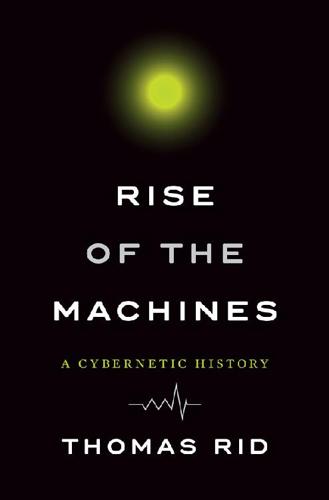
Rise of the Machines: A Cybernetic History
by
Thomas Rid
Published 27 Jun 2016
Everything that human beings might need or want, Hilton foresaw, would very soon be produced by machines—“solely by machines without any human intervention or labor.”53 The industrial revolution of the nineteenth century wasn’t big enough as a comparison, Hilton argued. The agricultural revolution was the better analogy. The ability to cultivate crops and livestock turned food gatherers and primitive hunters into food growers and organized communities. Cultivating plants and domesticating animals freed “some” of their energy to create civilization. Automating production would have a similar effect yet again: now “all of human energy” could be freed from the task of providing for survival. Instead of an agricultural revolution, humankind would now face a cybercultural revolution. Hilton, an exceptionally eloquent mathematician, was certainly the most potent cheerleader of that revolution.
…
W., 109 Abene, Mark, 237 abstraction, 68, 69 “Achieving Electronic Privacy” (Chaum), 281–82 action, brain and, 63 adaptation, 55 Adelman, Leonard, 251–52, 254 Ad Hoc Committee on the Triple Revolution, 104–7, 110 Adobe Acrobat, exploitation of, 327–28 Advanced Research Projects Agency (ARPA), 147 Advanced Research Projects Agency Network (ARPANET), 111, 148, 186 Advanced Technology Institute, 319 Aeronautical Research Committee (Britain), 19 aeronautics, 12 African Americans, 107 “After the Take-Over,” 101 Age of Cyberculture, The (book series), 103 Agile Eye, 204 agricultural revolution, 102–3 Aircraft Nuclear Propulsion program, 128–29 air defense, xi–xii, 40, 56, 78–81; See also Semi-Automatic Ground Environment (SAGE) Air Defense Command, 40, 79, 81 Air Defense Systems Engineering Committee (Valley Committee), 76 Air Force Office of Scientific Research, 143 Air Force Scientific Advisory Board, 76, 144 AirLand Battle, 300–301 airpower, 4, 10, 300–301 Albe Archer exercise, 208 Aliens (film), 136 “All Watched Over by Machines of Loving Grace” (Brautigan), v, 165–66, 170 Amazon.com, 244 American Association for the Advancement of Science, 71–72 American Civil Liberties Union, 244 American Mathematical Society, 29 Ames Research Center, 220 amputees, 141–42 Analyzer, The (hacker), 315 anarchy, 246–93 Andrews Air Force Base, 314–15 AN/FSQ-7 computer, 96 Anguilla, 287, 288 anonymity, 272 antiaircraft batteries, 22 Anti-Aircraft Command (Britain), 39 antiaircraft gunnery, 56 antiaircraft missiles, 78 “antiaircraft problem,” 12, 16–17 Apache helicopter, 305 Apple Computer, 184, 186–88, 215 Apple II computer, 211–12, 295 Applied Cryptography (Schneier), 276 Arbeit am Mythos (Blumenberg), xvi “Are Human Beings Necessary?”
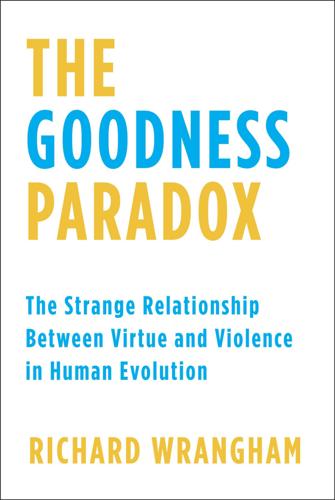
The Goodness Paradox: The Strange Relationship Between Virtue and Violence in Human Evolution
by
Richard Wrangham
Published 29 Jan 2019
By the end of the Pleistocene, almost 12,000 years ago, Homo sapiens were hunting and gathering with sophisticated tools. Some populations were already occupying settled villages, living with dogs, decorating cave walls with multicolored paints, using pottery, and grinding grain. Shortly afterward, about 10,000 years ago, the agricultural revolution began.3 Too few fossils have been found for us to be sure when and where an archaic form first started differentiating into Homo sapiens. To be unambiguously Homo sapiens, skulls must be markedly round (globular) in profile with a clearly flexed base, and have such a small face that it is tucked mostly under the cranium.
…
One school of thought has held that battles and “real war” were trivially rare before agriculture. Supporters of this view argue that nomadic hunter-gatherers had low rates of intergroup violence from time immemorial until they encountered farmers, at which time they had to start defending themselves. Until the agricultural revolution, these scholars tend to suggest, there was no need to fight: if a dispute arose between forager groups, one group could always move elsewhere. The motivation for taking this perspective was sometimes explicitly political. For instance, the anthropologist Douglas Fry wrote, “One important, general, contribution that anthropology holds for ending ‘the scourge of war’ lies in demonstrating that warfare is not a natural, inevitable part of human nature.”44 On an opposite side of the debate, it can be noted that other primates invariably populate their habitats fully, which leaves groups with few options when conflict occurs.
…
For instance, the anthropologist Douglas Fry wrote, “One important, general, contribution that anthropology holds for ending ‘the scourge of war’ lies in demonstrating that warfare is not a natural, inevitable part of human nature.”44 On an opposite side of the debate, it can be noted that other primates invariably populate their habitats fully, which leaves groups with few options when conflict occurs. When competing groups cannot find vacant land, they fight. It would be surprising if human groups could regularly find empty, well-resourced space to occupy, or if humans could relate to their neighbors without aggression. Thus the claim that groups of hunter-gatherers before the agricultural revolution had generally peaceful relations and could move to unoccupied resource-rich land is implausible. Furthermore, many scholars point to archaeological evidence of frequent warfare prior to agriculture in the form of fortified settlements, armor, and high levels of violent trauma exhibited in skeletons and skulls.
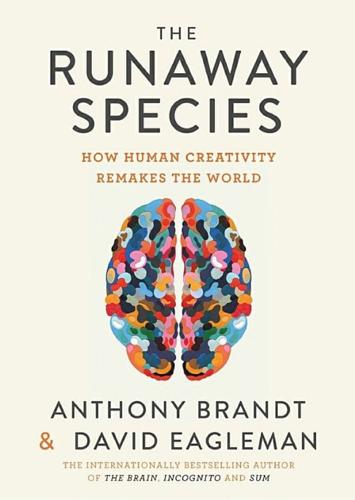
The Runaway Species: How Human Creativity Remakes the World
by
David Eagleman
and
Anthony Brandt
Published 30 Sep 2017
HOW WE REFASHION THE WORLD Humans are continually creative: whether the raw material is words or sounds or sights, we are food-processors into which the world is fed, and out of which something new emerges. Our innate cognitive software, multiplied by the massive population of Homo sapiens, has produced a society with increasingly faster innovation, one that feeds upon its latest ideas. Eleven millennia transpired between the Agricultural Revolution and the Industrial Revolution. Then it only took a hundred and twenty years to get from the Industrial Revolution to the light bulb. Then merely ninety years until the moon landing. From there it was only twenty-two years until the World Wide Web, and a mere nine years later the human genome was fully sequenced.12 Historical innovation paints a clear picture: the time between major innovations is shrinking rapidly.
…
Into the future 1 Anthony Brandt, “Why Minds Need Art,” TEDx Houston, November 3, 2012, accessed May 17, 2016, <http://tedxtalks.ted.com/video/Anthony-Brandt-at-TEDxHouston-2> 2 Yun Sun Cho et al., “The tiger genome and comparative analysis with lion and snow leopard genomes,” Nature Communications 4 (2013), <http://dx.doi.org/10.1038/ncomms3433> Index Abakanowicz, Magdalena ref1 Achelis, Elisabeth ref1 acronyms ref1 Acura TLX ref1 adaptation ref1 advertisements ref1, ref2 Aerial Restaurant ref1 African masks ref1 Agricultural Revolution ref1 ailerons (hinged flaps) ref1 airport towers/fences ref1 aldehydes ref1 Alessi, Alberto ref1, ref2 Alessi (company) ref1 Alexander McQueen ref1 Alhambra Palace ref1 Alice in tumblr-land (Manley) ref1 Allocamelus ref1 Alpha Centauri ref1 The Alteration (Amis) ref1 altruism ref1 Amazon ref1 American Telephone and Telegraph (AT&T) ref1 Amis, Kingsley ref1 Andrews, Arlan ref1 Ant-roach robot ref1, ref2 Apocalyptic Vision (El Greco) ref1 Apollo 13 ref1, ref2, ref3, ref4, ref5 Apple ref1, ref2, ref3, ref4, ref5 mining history ref1, ref2, ref3 Apple Watch ref1 Arcangel, Cory ref1, ref2 Aristotle ref1, ref2 Army (US) ref1 Army–Navy football game (1963) ref1 art bending ref1, ref2, ref3 blending ref1, ref2, ref3, ref4, ref5 breaking ref1, ref2, ref3, ref4, ref5, ref6 good ref1, ref2 education ref1 mining history ref1 proliferating options ref1 public reception ref1, ref2 arts, influence of ref1, ref2 Asimov, Isaac ref1 Asplund, Antii ref1 Atlantic (magazine) ref1 Atlassian ref1 ATMs ref1 Audi ref1 audiences ref1 automated behavior ref1, ref2, ref3 Available Forms I (Brown) ref1 Bach, Johann Sebastian ref1 Back to the Future (film) ref1 Bacon, Francis ref1, ref2 Barbèy, Thomas ref1 The Beatles ref1 The Beatles (album) ref1 Beaumarchais, Pierre ref1 beauty, universal ref1 Beaux, Ernest ref1 Beekman Tower (Gehry building) ref1 bees ref1, ref2, ref3 Beethoven, Ludwig van ref1, ref2, ref3, ref4, ref5, ref6 Bel Geddes, Norman ref1 Bell, Graham ref1 Bell, James ref1 Bell Labs (New Jersey) ref1, ref2 bending ref1, ref2, ref3, ref4 art ref1, ref2, ref3 design ref1 “end of time” illusion ref1 language ref1 time ref1 “Beowulf” (poem) ref1 bestselling books ref1 Betrayal (Pinter) ref1 Better Place (auto company) ref1 bicycles ref1 Biome car ref1 bionics ref1 The Birth and Triumph of Venus (Boucher) ref1 “Black Tractor” (Ferguson) ref1 Blackberry ref1 blending ref1, ref2, ref3, ref4 art ref1, ref2, ref3, ref4, ref5 design ref1, ref2 language ref1 mathematical techniques ref1 mythical creatures ref1 science ref1, ref2, ref3 Blockbuster ref1, ref2 Bloom, Benjamin ref1 Blur Building (Diller/Scofidio) ref1 Bonaparte, Napoleon ref1 bone furniture (Laarman) ref1 Bonnie and Clyde (film) ref1 Bose, Amar ref1 Botanical Society of America ref1 Boucher, François ref1 Boulton, Mathew Piers Watt ref1 Boyle, Robert ref1 Bradbury, Ray ref1 brain breaking ref1 cognitive flexibility ref1, ref2, ref3, ref4 cognitive workings ref1, ref2 overt/covert creativity ref1 refashioning the world ref1 seeking/decision making ref1 Brand, Stewart ref1 Brandenburg, Karlheinz ref1 Branson, Richard ref1 Braque, Georges ref1 breaking ref1, ref2, ref3, ref4 art ref1, ref2, ref3, ref4, ref5, ref6 design ref1, ref2, ref3, ref4, ref5 good ref1, ref2, ref3 music ref1, ref2 science ref1, ref2 Breakthrough Starshot ref1 Broken Obelisk (Newman) ref1 Bromberg, Irv ref1 Bronze Age ref1 Brown, Capability ref1 Brown, Earle ref1 Brown, James ref1 Buffalo News (newspaper) ref1 Building 20 (magical incubator) ref1 Bull series (Lichtenstein) ref1 Bull series (Picasso) ref1 bullet train ref1 Burton, Sarah ref1 buses ref1 Buxton, Bill ref1, ref2 Byron, Lord ref1 Café Carlyle (New York) ref1 calcite ref1 calendars ref1 California State Curriculum Committee ref1 cameras ref1 canal locks ref1 car industry ref1, ref2, ref3, ref4, ref5 testing possibilities ref1, ref2, ref3, ref4, ref5 carbon copies ref1 Cardin, Pierre ref1 Carnegie Mellon ref1 Carver, George Washington ref1, ref2, ref3 Casio AT-550-7 wristwatch ref1 Castro, Fidel ref1 Catalano, Bruno ref1 Cave, Sophie ref1 Cézanne, Paul ref1 Chanel N°5 ref1 change, responding to ref1 Cheney, Vice President Dick ref1 Chicago World’s Fair (1893) ref1 The Children’s Hour (Hellman) ref1 chimeras ref1 Chomsky, Noam ref1 Chopin, Frédéric ref1 Chung, Kwanghun ref1 Church, George ref1 Cichon, Steve ref1 Cicoria, Anthony ref1 cigarette factories ref1 Cimarosa, Domenico ref1 Citizen Kane (film) ref1, ref2 CitySmoother ref1 CLARITY method ref1 Clark, Barney ref1 Clark, Steve ref1 Cummings, e.e. ref1, ref2 “The Clock” (Marclay) (video) ref1 “closed-world assumption” ref1 CoBot ref1 Coca-Cola company ref1 cognitive flexibility ref1, ref2, ref3, ref4 Cohn, Billy ref1, ref2 Coleridge, Samuel Taylor ref1 Colescott, Robert ref1 companies ref1 challenges ref1 flexibility ref1 proliferating options ref1 testing possibilities ref1 workplace changes ref1 Composition VII (Kandinsky) ref1 Conan Doyle, Arthur ref1 concrete ref1 Conference Bike ref1 A Connecticut Yankee in King Arthur’s Court (Twain) ref1 consonance ref1 Contac decongestant ref1 continental drift ref1 continuous flow heart ref1, ref2 Continuum Innovation ref1 Cook, Captain ref1 Cooper, James Fenimore ref1 Cotsworth, Moses ref1 Cotsworth calendar ref1 creativity economy ref1 explosion ref1 overt/covert ref1 practice ref1 creoles ref1 Crick, Francis ref1 The Crossword Puzzle (Hockney) ref1 Cubism ref1, ref2, ref3, ref4 cultural conditioning ref1 public approval ref1 da Vinci, Leonardo ref1, ref2 dance ref1, ref2 Dancing House (Gehry/Milunić) ref1 “Dare to Try” Award ref1 Darwin, Charles ref1, ref2, ref3 Data Rover 840 ref1 Davis, Miles ref1 Davy, Humphry ref1 Dawkins, Richard ref1 de Kooning, Willem ref1 decision making ref1 Defragmentados (Portal) ref1 Deisseroth, Karl ref1 Delacroix, Eugène ref1 “The Descent of Edward Wilson” (review) ref1 design ref1, ref2, ref3 bending ref1 blending ref1, ref2 breaking ref1, ref2, ref3, ref4, ref5 fashion ref1, ref2, ref3, ref4, ref5, ref6 meaningful ref1 proliferating options ref1, ref2, ref3 risk ref1, ref2, ref3 testing possibilities ref1, ref2, ref3, ref4, ref5 see also technology DeVries, William ref1 Diabelli, Anton ref1 Dick, Philip K. ref1 Dickinson, Emily ref1 dictionary definitions ref1 DiCycle ref1 digital pixilation ref1 Diller, Elizabeth ref1 diminutive artwork ref1 dissonance ref1 drama ref1, ref2, ref3, ref4, ref5 cultural conditioning ref1, ref2 timelessness ref1 Dre, Dr ref1 Duchamp, Marcel ref1 DuPont ref1 Dweck, Carol ref1 Dynamic Architecture (Fisher) ref1 Dyson, James ref1 Eagleman, David ref1 Eastman, George ref1, ref2 Eastman Kodak Company ref1, ref2 E-car ref1 Edgerton, Harold ref1 Edison, Thomas ref1, ref2, ref3, ref4, ref5, ref6 education see schools efficiency ref1 egg drop experiment ref1 Einstein, Albert ref1, ref2, ref3, ref4, ref5 El Greco ref1 electroencephalography (EEG) ref1 elevators ref1, ref2 Eleven Madison Park (restaurant) ref1 Elias, Anastassia ref1, ref2 Eliot, T.S. ref1 “end of time” illusion ref1 equivalence principle ref1 Ercon frangible mast ref1 Esnault-Pelterie, Robert ref1 Esola, Lindsay ref1 ESP computer game ref1 Esperanto ref1, ref2 Eureka Innovation Lab ref1 eureka moments ref1 exploration/exploitation trade-off point ref1, ref2, ref3 Facebook ref1, ref2 failure ref1, ref2 cultural tastes ref1 fearlessness ref1 public reception ref1 schools, failing ref1 Solyndra ref1 Falconer, William ref1 familiarity ref1, ref2, ref3, ref4, ref5 A Farewell to Arms (Hemingway) ref1 fashion ref1, ref2, ref3, ref4 Federal Aviation Administration ref1 Feldman, Morton ref1 Ferguson, Harry ref1 Fermat, Pierre de ref1 Fermat’s Last Theorem ref1 Feynman, Richard ref1 film, breaking ref1 Fire Phone, Amazon ref1 Fisher, David ref1 Fisher-Price ref1 FitDog ref1 Fitzgerald, F.
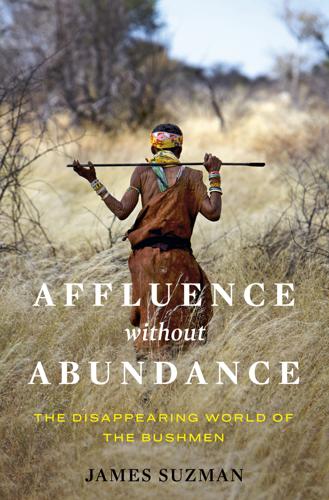
Affluence Without Abundance: The Disappearing World of the Bushmen
by
James Suzman
Published 10 Jul 2017
What was also special about primitive affluence was that it suggested that Keynes’s “economic problem” was not a “permanent condition” of the human species but instead that it was a relatively recent phenomenon when viewed against the broader scope of human history. One that emerged only when some of our ancestors abandoned a life of foraging and became farmers and food producers. The story of southern Africa’s Bushmen encapsulates the history of modern Homo sapiens from our species’ first emergence in sub-Saharan Africa through to the agricultural revolution and beyond. It is an incomplete story, one pieced together from fragments of archaeology, anthropology, and most recently genomics. Taken together, these fragments offer a sense of how hunter-gatherers came to exemplify elements of Keynes’s Utopia and how, since the invention of agriculture, our destiny has been shaped by our preoccupation with solving the “economic problem.”
…
The story of this conquest helps us to make sense of how and why the Neolithic Revolution expanded far beyond the places it began, eventually converging on the Kalahari some ten millennia later. It also reveals the extent to which so many of our contemporary social, cultural, and economic institutions were shaped by the legacy of the agricultural revolution. Early Neolithic farmers had one massive advantage over hunter-gatherers. When the stars were in alignment, the weather favorable, the pests subdued, and the soils still packed with nutrients, farming was very much more productive than hunting and gathering. This enabled farming populations to grow much more rapidly than hunter-gatherers and sustain these growing populations with less land.

The Rational Optimist: How Prosperity Evolves
by
Matt Ridley
Published 17 May 2010
The more pecans you took, the larger and more numerous they grew. Implausible, I admit. Yet that is precisely the character of the human experience since 100,000 years ago. Inexorably, the global nut bowl has yielded ever more pecans, however many get used. The pace of acceleration of returns lurched upwards around 10,000 years ago in the agricultural revolution. It then lurched upwards again in AD 1800 and the acceleration continued in the twentieth century. The most fundamental feature of the modern world since 1800 – more profound than flight, radio, nuclear weapons or websites, more momentous than science, health, or material well-being – has been the continuing discovery of ‘increasing returns’ so rapid that they outpaced even the population explosion.
…
This position explains the accomplishment of so enormous a social change – the creation of an industrial proletariat in the face of tenacious resistance – by postulating an act of forcible expropriation: the enclosures uprooted the cottager and small peasant and drove them into the mills. Recent empirical research has invalidated this hypothesis; the data indicate that the agricultural revolution associated with the enclosures increased the demand for farm labour, and that indeed those rural areas that saw the most enclosure saw the largest increase in resident population. From 1750 to 1830 Britain’s agricultural counties doubled their inhabitants. Whether objective evidence of this kind will suffice, however, to do away with what has become an article of faith is doubtful.’
…
Lord Kelvin’s contributions to the physics of resistance and induction were driven more by practical problemsolving in the telegraph industry than esoteric rumination. And though it is true that the physics of James Clerk Maxwell produced an electrical revolution, the chemistry of Fritz Haber spawned an agricultural revolution, Leo Szilard’s idea of a chain reaction of neutrons led to nuclear weapons and the biology of Francis Crick fathered biotechnology, it is none the less also true that these sages needed legions of engineers to turn their insights into things that could change living standards. Tinkering Thomas Edison, with his team of forty engineers, was more important to electrification than thinking Maxwell; practical Carl Bosch mattered more than esoteric Haber; administrative Leslie Groves than dreamy Szilard; practical Fred Sanger than theoretical Crick.

Scots and Catalans: Union and Disunion
by
J. H. Elliott
Published 20 Aug 2018
Highland farming continued to present many difficulties, but the numerous improvements made in Lowland farming in the first half of the century were followed in its second half by a transition to more intensive farming, encouraged by increased commercialization and higher levels of investment. The result was an agricultural revolution. 86 Initially, the advent of Union proved more problematic for industrial than agricultural development, leaving a real possibility that Scottish manufactures would wither, and that post-Union Scotland would be relegated to the status of a mere supplier of food and raw materials to the English market.
…
Both, too, had experienced a significant population increase and growing urbanization in the eighteenth century, and achieved major agricultural improvements in response to the demands of expanding market opportunities. While eighteenth-century Catalonia saw an impressive development of viticulture in particular, Lowland and Highland Scotland underwent an agricultural revolution over the later eighteenth and early nineteenth centuries. 63 As connections between town and country multiplied, industrial and agricultural transformation went hand in hand, although Scotland and Catalonia both remained predominantly rural societies, at least until the middle of the nineteenth century.
…
INDEX Aberdeen: Philosophical Society, (i) academies, (i) ; see also universities Acció Catalana, (i) Act Rescissory (Scotland, 1661), (i) Act for the Security of the Protestant Religion and the Government of the Church (England, 1706), (i) Adam brothers (architects), (i) afrancesados , (i) agriculture: in Catalonia, (i) , (ii) ; in Scotland, (i) , (ii) ; in Spain, (i) Álava, (i) Alba: as term for Scotland, (i) ; Scots take over from Picts, (i) Alburquerque, Francisco Fernández de la Cueva, 7th Duke of, (i) Alcalá, Fernando Enríquez Afán de Ribera, 3rd Duke of, (i) Alcalá Zamora, Niceto, (i) Alexander II, King of Scotland, (i) Alexander III, King of Scotland, (i) Alexander, Sir William: An Encouragement to Colonies , (i) Alfonso V, King of Aragon, (i) Alfonso V, King of Portugal, (i) Alfonso X (the Wise), King of Castile and León, (i) Alfonso XII, King of Spain, (i) , (ii) , (iii) Alfonso XIII, King of Spain: childhood, (i) ; accession and rule, (i) ; receives petition for Catalan autonomy from Cambó, (i) ; supports Catalan claim for independence, (i) ; exiled, (i) Alien Act (England, 1705), (i) , (ii) Almansa, battle of (1707), (i) , (ii) , (iii) Almirall, Valentí, (i) , (ii) ; Lo Catalanisme , (i) Amadeo of Savoy, King of Spain, (i) Amat y Junient, Manuel de, (i) Amelot, Michel-Jean, (i) America (New World): incorporated into Crown of Castile, (i) , (ii) ; Scottish immigrants, (i) , (ii) ; trade with Catalonia, (i) ; and trade rivalry, (i) ; see also empires, Spanish American Revolution, (i) , (ii) anarchism and anarcho-syndicalism, (i) , (ii) , (iii) ANC see National Assembly of Catalonia, (i) Andalusia, (i) Aner d’Esteve, Felip, (i) Angevin Empire, (i) Anglo-Irish Treaty (1921), (i) Anglo-Scottish Union: debated under JamesVI/I, (i) , (ii) , (iii) , (iv) ; debated under William III and Anne, (i) , (ii) ; see also home rule; Treaty of Union (Anglo-Scottish, 1707); union, forms of Anjou, Philip, Duke of see Philip V, King of Spain Anne, Queen: succession and death, (i) , (ii) ; and acceptance of Treaty of Union, (i) Aragon, Crown of: and dynastic union with Castile, (i) , (ii) ; Catalan-Aragonese federation, (i) ; Succession crisis and Compromise of Caspe (1410–12), (i) , (ii) , (iii) , (iv) ; and Spanish Atlantic expansion, (i) ; and Castilian dominance, (i) ; population (16th century), (i) ; constitution, (i) , (ii) , (iii) ; royal absenteeism, (i) ; union with Castile, (i) , (ii) ; customs barriers with Castile, (i) ; geographical and linguistic divisions, (i) ; fails to support Catalonia in 1640 rebellion, (i) ; supports Don Juan José, (i) ; and Spanish succession, (i) ; Nueva Planta, (i) , (ii) , (iii) ; form of representation in Spanish Cortes, (i) ; fiscal and monetary uniformity with Castile, (i) ; (i) ; historiography, (i) ; Archive of, (i) ; see also Aragon, kingdom of; Catalonia; Mallorca; Valencia Aragon, kingdom of: union with Castile, (i) , (ii) ; Catalan-Aragonese federation, (i) , (ii) ; oath of allegiance, (i) ; Ferdinand as king of, (i) , (ii) ; rebellion in defence of fueros (1590–1), (i) ; and the Indies (i) ; Olivares and, (i) ; Philip V abolishes laws and privileges, (i) , (ii) ; resists French invasion, (i) ; see also Aragon, Crown of Aragon, Council of, (i) , (ii) , (iii) , (iv) Arbroath, Declaration of (1320), (i) , (ii) Argathelians (followers of Argyll), (i) , (ii) , (iii) Argyll, Archibald Campbell, 8th Earl of, (i) , (ii) , (iii) Argyll, Archibald Campbell, 9th Earl of, (i) Argyll, Archibald Campbell, 10th Earl ( later 1st Duke) of, (i) , (ii) Argyll, John Campbell, 2nd Duke of, (i) , (ii) , (iii) Aribau, Bonaventura Carles: ‘Ode to the Pàtria ’, (i) army, British, (i) , (ii) , (iii) army, Catalan, (i) , (ii) , (iii) , (iv) army, English, (i) , (ii) , (iii) , (iv) , (v) ; New Model, (i) , (ii) army, French, (i) , (ii) , (iii) , (iv) army, James II’s, (i) army, Scottish, (i) , (ii) , (iii) , (iv) , (v) , (vi) army, Spanish, (i) , (ii) , (iii) , (iv) , (v) , (vi) , (vii) , (viii) , (ix) , (x) , (xi) , (xii) , (xiii) ; Riego’s mutiny (1820), (i) , (ii) , (iii) ; (army of Flanders), (i) ; (army of Africa), (i) , (ii) Arrimadas, Inés, (i) Arthur, King (mythical), (i) Arthur, Prince (son of Henry VII), (i) Asquith, Herbert Henry, (i) Association for the Vindication of Scottish Rights, (i) Asturias: miners’ strike (1934), (i) Ateneu Català, (i) Atlantic: Scottish and Catalan trade, (i) , (ii) ; rival traders in, (i) ; see also America Attlee, Clement, (i) Audiencia, (i) , (ii) , (iii) , (iv) Augereau, General Pierre, (i) austracistas , (i) , (ii) , (iii) , (iv) , (v) Austria: union with Spain opposed by British and Dutch, (i) Austro-Hungarian Empire see empires, Austro-Hungarian Autonomy, Statutes of (Catalan), (i) ; (1979), (i) ; (2005), (i) , (ii) Azaña, Manuel, (i) , (ii) Aznar, José Maria, (i) Bacon, Francis: A Brief Discourse touching the Happy Union of the Kingdoms of England and Scotland , (i) Balaguer, Victor: ‘History of Catalonia and the Crown of Aragon’, (i) Ballot, Josep Pau, (i) Balmes, Jaume, (i) Banco de España, (i) banditry and lawlessness: in Scottish Highlands and Catalonia, (i) , (ii) , (iii) , (iv) , (v) , (vi) , (vii) banking crisis (global, 2007–8), (i) Bannockburn, battle of (1314), (i) Barbour, John: The Bruce , (i) Barceló, Pere Joan (‘Carrasclet’), (i) Barcelona: as mercantile city, (i) ; recaptured from Moors (801), (i) ; surrenders to Philip IV (1652), (i) , (ii) ; conflict with Perpinyà, (i) ; sanctions against after surrender, (i) ; French capture (1687), (i) ; urbanization, (i) , (ii) ; in War of Spanish Succession, (i) ; resists Philip V’s occupation and surrenders (1714), (i) , (ii) , (iii) , (iv) ; Ciutadella (fortress), (i) , (ii) ; repressed by Philip V, (i) ; regidores , (i) ; University, (i) , (ii) , (iii) , (iv) ; ‘honoured citizens’ and oligarchical power, (i) ; population increase, (i) , (ii) ; shipbuilding, (i) ; trading rights, (i) ; Palau de la Virreina, (i) ; design and conditions, (i) ; Acadèmia de Bones Lletres, (i) ; occupied by French in Napoleonic Wars, (i) ; industrialization, (i) , (ii) ; cholera epidemics, (i) ; compared with Glasgow, (i) ; merchants, (i) ; Ateneu Barcelonès, (i) ; as cultural centre, (i) , (ii) , (iii) ; Liceu, (i) ; liberalism, (i) ; industrial unrest, (i) , (ii) , (iii) , (iv) , (v) , (vi) ; economic power, (i) ; Eixample, (i) ; urban development and street names, (i) ; Universal Exhibition (1888), (i) , (ii) ; as capital of Catalonia, (i) ; and internal Catalan differences, (i) ; Setmana Tràgica (tragic week, 1909), (i) ; World Fair (1929), (i) ; and October Revolution (1934), (i) ; in Spanish Civil War, (i) ; football, (i) ; Olympic Games (1992), (i) ; demonstration against Constitutional Tribunal ruling (2010), (i) ; ‘march towards independence’ (2012), (i) ; terrorist attack (August 2017), (i) ; see also Catalonia Barcelona province, (i) Barceloneta, (i) Barnett, Joel, (i) Bases of Manresa ( Bases de Manresa , 1892), (i) , (ii) Basque Nationalist Party, (i) Basque provinces: and war with France, (i) ; industrialization, (i) , (ii) ; participation in central administration, (i) ; autonomy, (i) , (ii) , (iii) ; fiscal exemptions, (i) , (ii) ; racial singularity, (i) ; Cambó visits, (i) ; nationalist movement, (i) ; join Pact of San Sebastián, (i) ; settlement (1975), (i) , (ii) ; in decentralized Spain, (i) ; relations with Spanish state, (i) Batet i Mestres, General Domènec, (i) Belgium: Puigdemont flees to, (i) Berwick, James Fitzjames, Duke of, (i) , (ii) Berwick, Treaty of (1639), (i) Bill of Rights (England, 1689), (i) Bishops’ Wars (1639–40), (i) Black Death, (i) Blair, Tony, (i) , (ii) Bloody Assizes (1685), (i) Bodin, Jean, (i) , (ii) Boece, Hector: History of the Scottish People , (i) Bofarull, Antoni de: ‘Deeds and Memories of the Catalans’, (i) Bofarull, Pròsper de, (i) Bolshevism, (i) Bonaplata cotton mill, (i) , (ii) Borders (Scottish): violence in, (i) , (ii) ; see also Scotland Bosch Gimpera, Pere, (i) Boswell, James, (i) , (ii) , (iii) Bosworth, battle of (1485), (i) Bothwell, James Hepburn, 4th Earl of, (i) Bounty Act (British, 1742), (i) Bourbon dynasty: and Spanish royal succession, (i) , (ii) , (iii) ; administration in Spain, (i) , (ii) , (iii) ; protectionist legislation in Catalonia, (i) ; nation-building, (i) bourgeoisie, (i) , (ii) , (iii) , (iv) Braç (Estate) of nobles, (i) Brexit (British exit from EU), (i) Britain see Great Britain Brown, Gordon, (i) , (ii) , (iii) Bruce, Robert, King of Scotland, (i) , (ii) , (iii) , (iv) Brussels: Puigdemont supporters demonstrate in, (i) Brutus (mythological figure), (i) , (ii) Buchanan, George: De jure regni apud Scotos , (i) Burnet, Gilbert, Bishop of Salisbury, (i) Burns, Robert, (i) Bute, John Stuart, 3rd Earl of, (i) , (ii) cadastre ( catastro ), (i) , (ii) , (iii) Cadiz: as Atlantic trading port, (i) ; Riego’s rising (1820), (i) Cadiz, Cortes of, (i) , (ii) , (iii) , (iv) , (v) , (vi) , (vii) Callaghan, James, (i) , (ii) Cambó, Francesc, (i) , (ii) , (iii) Cameron, David, (i) , (ii) Cameron, Richard (and Cameronians), (i) Campaign for a Scottish Assembly, (i) Campbell Clan, (i) , (ii) ; and see Argyll Canada: becomes self-governing (1867), (i) ; and Quebec independence campaign, (i) Canadenca (industrial strike), (i) Cánovas del Castillo, Antonio, (i) , (ii) , (iii) , (iv) Capmany, Antoni de, (i) , (ii) , (iii) , (iv) , (v) , (vi) , (vii) ; La centinela contra franceses , (i) Cardona, ducal family, (i) Caribbean see West Indies Carlists and Carlism, (i) , (ii) , (iii) Carlos, Don (Spanish pretender), (i) Carlos II, King of Spain: treatment of Catalonia, (i) ; ill health and death, (i) ; Feliu de la Peña dedicates book to, (i) ; death and succession question, (i) Cartagena, Alfonso de, (i) Casanova, Rafael, (i) , (ii) Caspe, Compromise of (1412), (i) , (ii) , (iii) Castaños, Francisco Javier, (i) Castile: and dynastic unification of Spain, (i) , (ii) , (iii) , (iv) ; united with Léon (1230), (i) ; conquest of Navarre, (i) ; incorporation of Indies, (i) , (ii) ; dominance, (i) , (ii) , (iii) , (iv) ; foundation myth, (i) ; equates itself with Spain, (i) ; population (16th century), (i) ; customs barriers with Crown of Aragon, (i) , (ii) ; rejects idea of Spanish nationality, (i) ; economic strain, (i) ; Olivares’s administration and reforms, (i) ; nobility intermarries with other regions, (i) ; Cortes of, (i) , (ii) , (iii) ; and Catalan rebellion (1640–52), (i) , (ii) , (iii) ; overpowered by French, (i) ; monetary fluctuations, (i) ; resists foreign invaders, (i) ; landowning elite, (i) ; see also Spain Castile, Council of, (i) , (ii) Catalan Assembly (1971), (i) Catalan Corporation of Radio and Television, (i) Catalan National Assembly, (i) ‘Catalanism’, (i) , (ii) , (iii) Cataló, Otger (legendary figure), (i) , (ii) Catalonia: recent independence movement, (i) ; as nation without state, (i) ; foundation, (i) , (ii) , (iii) , (iv) , (v) ; geographical divisions, (i) , (ii) , (iii) ; population, (i) , (ii) , (iii) ; federation with Aragon, (i) , (ii) ; Pyrenean region, (i) , (ii) ; socio-economic conditions in 15th century, (i) ; chronicles and history, (i) ; domination by Castile, (i) , (ii) ; conflict (1588), (i) ; religion in, (i) , (ii) , (iii) ; sense of patria , (i) see also patria , patriotism; banditry and lawlessness, (i) , (ii) , (iii) , (iv) , (v) ; unrest on accession of Philip IV, (i) ; nobles marry into Castilian nobility, (i) ; rejects Olivares’s proposals for Union of Arms, (i) ; alienation from Aragon, (i) ; alienated Crown lands, (i) ; rebellion (1640), (i) , (ii) ; as French protectorate (1641), (i) , (ii) , (iii) ; Estates, (i) , (ii) ; plague (1650), (i) , (ii) ; secession ends (1652), (i) ; French, immigrants in, (i) ; consequences of failed rebellion, (i) , (ii) ; revolt of the barretines (1688–9), (i) ; troops billeted in, (i) , (ii) ; export trade and traders, (i) , (ii) ; textile industry, (i) , (ii) , (iii) , (iv) , (v) ; depends on Castile for financial and military assistance, (i) ; and accession of Philip V, (i) ; in War of Spanish Succession, (i) , (ii) ; popular anti-French feelings, (i) ; occupied by Philip V’s forces, (i) ; and Peace of Utrecht, (i) ; disaster of 1714, (i) , (ii) ; under Philip V’s rule, (i) ; Nueva Planta extended to, (i) , (ii) , (iii) ; loss of representative institutions, (i) ; royal army garrisoned in, (i) ; taxation system, (i) , (ii) ; administrative reorganization, (i) ; universities, (i) , (ii) ; language differences, (i) ; lacks sovereign status, (i) , (ii) ; rebellion (1719), (i) ; oligarchical control and honoured citizens in, (i) ; substantial peasant farmers, (i) , (ii) , (iii) ; seigneurial and feudal rights, (i) ; military coercion in, (i) ; response to incorporation, (i) ; urbanization, (i) ; prospective independence after Treaty of Utrecht, (i) ; social and economic changes (18th century), (i) ; stable monetary system, (i) ; overseas trade, (i) , (ii) ; industrialization, (i) , (ii) , (iii) , (iv) , (v) , (vi) , (vii) , (viii) ; personal industriousness and strong family ties, (i) , (ii) ; rural and agrarian life, (i) ; trade with overseas empire, (i) , (ii) ; merchants and clerics in America, (i) ; restricted opportunities for overseas appointments, (i) ; identity and differences from Spain, (i) , (ii) , (iii) ; Enlightenment, (i) ; harvest failures and food shortages (1790s), (i) ; occupied and annexed by French in Napoleonic Wars, (i) , (ii) ; guerrilla warfare against French, (i) ; and Constitution of Cadiz (1812), (i) ; divided into four provinces, (i) ; sense of deliberate discrimination, (i) ; Ferdinand VII visits, (i) ; insurrection (1822), (i) ; liberalism (1820–3), (i) ; romanticized history, (i) ; little part in developing empire, (i) ; increasing political nationalism (post–Great War), (i) , (ii) ; bourgeoisie, (i) ; historiography, (i) , (ii) ; resists Spanish centralization, (i) ; dependence on Madrid for protection of industry, (i) ; sense of grievance ( greuge ), (i) , (ii) ; growing independence (late 19th century), (i) ; represented in Madrid government, (i) ; and Cuban struggle for independence, (i) ; federalist sentiments, (i) ; regionalism and claims to autonomy, (i) , (ii) , (iii) , (iv) , (v) , (vi) ; economy declines (late 19th century), (i) ; nationalist movement, (i) , (ii) ; conscripts called up to fight in Morocco, (i) ; and Mancomunitat, (i) ; under Primo de Rivera’s regime, (i) , (ii) ; joins Pact of San Sebastián, (i) ; Macià proclaims ‘Catalan State’, (i) ; as autonomous region under 1932 Spanish Constitution, (i) , (ii) ; nationalist upsurge (1930s), (i) ; in Spanish Civil War, (i) ; Franco abolishes statute of autonomy, (i) ; repression under Franco, (i) ; economic and social changes (1960s), (i) ; immigration, (i) ; and statute of autonomy (1979, revised 2006), (i) , (ii) , (iii) , (iv) , (v) , (vi) ; under parliamentary monarchy, (i) ; state-building under Pujol, (i) , (ii) ; bilingualism, (i) ; coalition government and programme for new autonomy, (i) ; diada (national day), (i) ; economic depression (2007–14), (i) ; interest in Scottish referendum on independence, (i) ; division between secessionists and anti-secessionists, (i) , (ii) ; illegal referendum (2014), (i) ; proposal and calls for independence referendum (autumn 2017), (i) ; propaganda campaign for independence, (i) ; threat of losing membership of EU, (i) ; conduct of 2017 referendum, (i) ; parliament decides on unilateral declaration of independence, (i) , (ii) ; post-referendum election (December 2017), (i) ; disunity among independence advocates, (i) ; consequences of independence decision, (i) ; major political parties lose support, (i) ; Romantic revivalism, (i) ; psychological characteristics, (i) ; economic resources, (i) ; and inadequate dialogue with Spain, (i) ; see also Constitutions; Diputació; education; language catastro ( cadastre ), (i) , (ii) , (iii) Catholics, Catholicism see Church of Rome Cecil, William (Baron Burghley), (i) Cecily, Queen of James III of Scotland, (i) CEDA (Confederación Española de Derechas Autónomas), (i) Centelles, (i) Central Committee of Anti-Fascist Militias, (i) Centre Català , (i) , (ii) Cerdà, Ildefons, (i) Cerdanya, northern ( comtat ), (i) Cervera: university of, (i) , (ii) Charlemagne, Emperor of the West, (i) , (ii) Charles V, Holy Roman Emperor, (i) ; as King of Spain, (i) , (ii) Charles VI, Holy Roman Emperor ( earlier Archduke of Austria): in War of Spanish Succession, (i) , (ii) , (iii) ; succeeds as Emperor, (i) ; war with Philip V ends, (i) Charles VIII, King of France, (i) Charles I, King of Great Britain: and dissent over union settlement, (i) ; visits Edinburgh, (i) , (ii) , (iii) ; and innovation in Scotland, (i) ; liturgical reforms resisted in Scotland, (i) ; revenue raising in Scotland, (i) ; in First Bishops’ War with Scotland (1639), (i) ; and Scottish Covenant, (i) ; and Second Bishops’ War (1640), (i) ; opposition to, (i) ; in Civil War, (i) ; Scots hand over to English, (i) ; executed, (i) Charles II, King of Great Britain ( earlier Prince of Wales): restoration to English throne (1660), (i) , (ii) ; accepts Covenant, (i) , (ii) ; proclaimed as Scots ruler and crowned at Scone, (i) ; attitude to Scotland, (i) ; death and succession, (i) ; sends James, Duke of York, to Scotland, (i) Charles III, King of Spain, (i) , (ii) , (iii) , (iv) Charles IV, King of Spain, (i) , (ii) Charles Edward Stuart, Prince (‘the Young Pretender’; ‘Bonnie Prince Charlie’), (i) Chartism, (i) cholera epidemics, (i) Church of England (Anglican), (i) , (ii) , (iii) ; see also Episcopalians Church of Rome (Catholic): Visigoths convert, (i) ; supports Scottish kings, (i) ; in Catalonia, (i) ; Exclusion Crisis and anti-Catholic legislation, (i) ; and Jacobitism, (i) , (ii) ; resistance to Enlightenment ideas, (i) ; distrusted in Britain, (i) ; emancipation in Britain (1829–30), (i) ; monopoly of worship and belief in Spain, (i) ; secularization of church property (1837) and Concordat of 1851, (i) ; and anticlericalism, (i) , (ii) ; in Scotland, (i) , (ii) ; strength in Spain, (i) Church of Scotland, (i) , (ii) , (iii) ; see also Kirk; Presbyterianism Churchill, Sir Winston, (i) CiU (Convergència i Unió), (i) , (ii) , (iii) , (iv) , (v) Ciutadans (Ciudadanos, ‘citizens’ party’, Catalonia), (i) , (ii) , (iii) Claim of Right (Scottish), (i) Clarendon, Edward Hyde, 1st Earl of: History of the Rebellion , (i) , (ii) Claris, Pau, (i) , (ii) , (iii) , (iv) , (v) Clavé, Josep Anselm, (i) Clydeside, (i) , (ii) , (iii) , (iv) , (v) CNT (Confederación Nacional del Trabajo; National Confederation of Labour), (i) , (ii) , (iii) Coke, Sir John, (i) Cold War, (i) colonization, Scottish: in Ireland, (i) , (ii) , see also Ulster; in Americas, (i) , (ii) , see also America; see also Darien project Columbus, Christopher, (i) Colville, Robert, (i) comercio libre decree (1778), (i) , (ii) commerce see trade Committee of Estates (Scotland), (i) Commonwealth (1649), (i) Communist Party: in Spanish Civil War, (i) Community Charge (‘Poll Tax’), (i) Company of Scotland, (i) , (ii) Companys, Lluís, (i) , (ii) composite monarchy: British, (i) , (ii) , (iii) , (iv) ; Scottish, (i) , (ii) , (iii) , (iv) , (v) , (vi) ; Spanish, (i) , (ii) , (iii) , (iv) , (v) Compromise of Caspe (1412) see Caspe Concordat of 1851, (i) Conferència dels Tres Comuns (the Three Commons), (i) Confession of Faith (Scotland, 1581), (i) Conservative Party (British): opposes home rule for Scotland, (i) , (ii) ; affiliation with Scottish Liberal Unionists, (i) ; post-war successes, (i) ; loses support in Scotland, (i) , (ii) , (iii) ; coalition with Liberal Democrats (2010), (i) ; wins 2015 election, (i) Conservative Party (Scottish), (i) , (ii) ; see also Scotland, Unionism; Unionist Party Conservative Party (Spanish), (i) , (ii) ; see also Cánovas del Castillo, Antonio; Maura, Antonio Constitutions: Catalan: (i) , (ii) ; under threat, (i) , (ii) , (iii) ; Philip IV guarantees to respect, (i) , (ii) ; Philip V confirms, (i) , (ii) ; abolition (1714), (i) , (ii) ; desire for recovery, (i) ; see also fueros English and British, (i) Spanish: Cadiz (1812), (i) , (ii) , (iii) ; (1837), (i) ; (1845), (i) , (ii) ; (1876), (i) ; (1932), (i) ; (1978), (i) , (ii) , (iii) , (iv) , (v) , (vi) , (vii) constitutionalism, (i) , (ii) , (iii) , (iv) Consulate of the Sea, Barcelona (Consolat del Mar), (i) contractualism: in Scotland, (i) , (ii) , (iii) , (iv) , (v) , (vi) , (vii) ; Catalan ( pactismo ), (i) , (ii) , (iii) , (iv) , (v) , (vi) , (vii) , (viii) ; Bourbons and, (i) ; Riego on, (i) Convention of Estates (Scottish), (i) Cook, Robin, (i) corregidores , corregimientos , (i) Cortes: Castilian, (i) , (ii) , (iii) , (iv) ; Aragonese, (i) , (ii) , (iii) ; Valencian, (i) ; Spanish, (i) , (ii) , (iii) , (iv) , (v) ; Cambó and a constituent Cortes, (i) ; see also Cadiz, Cortes of Corts: Catalan, (i) , (ii) , (iii) , (iv) ; Philip V convenes, (i) , (ii) ; convened by Archduke Charles of Austria, (i) , (ii) ; Barcelona street named for, (i) Corunna, (i) cotton manufacture: in Catalonia, (i) , (ii) ; in Scotland, (i) ; see also textiles Council of Europe: Venice Commission, (i) Council of a Hundred (Consell de Cent, Barcelona), (i) , (ii) Court of Exchequer (Scotland), (i) Court of Sessions (Scotland), (i) Covenant and Covenanters (Scottish): drawn up, (i) ; appeal in England, (i) ; Charles II signs, (i) , (ii) ; effect on Scottish government, (i) ; uprisings, (i) ; resistance suppressed, (i) Craig, Sir Thomas, (i) Cromwell, Oliver, (i) , (ii) , (iii) Crowe, Mitford, (i) Cuba, (i) , (ii) , (iii) , (iv) Cuixart, Jordi, (i) Cullen, William, (i) Culloden, battle of (1746), (i) Cumberland, Prince William, Duke of, (i) Cunningham, George, (i) customs dues and barriers: between Castile and Crown of Aragon, (i) , (ii) ; between Portugal and Castile, (i) ; in Scotland, (i) , (ii) , (iii) , (iv) ; in Spain, (i) , (ii) Dalrymple, Sir James see Stair, 1st Viscount Dalyell, Tam, (i) , (ii) Darien project (Panama isthmus, 1696–1700), (i) , (ii) , (iii) , (iv) , (v) , (vi) ; post-1707, (i) , (ii) , (iii) , (iv) , (v) Darling, Alistair, (i) Darnley, Henry Stewart, Lord, (i) David I, King of Scotland, (i) década ominosa (Spain, 1823–33), (i) Defensor del Pueblo (‘ombudsman’), (i) Dencàs, Josep, (i) Descartes, René, (i) Despuig, Cristòfor, (i) , (ii) devolution see home rule Dewar, Donald, (i) Diari Català (newspaper), (i) Diario de Barcelona , (i) Diputació (standing committee of Corts): functions, (i) , (ii) , (iii) ; investigated (1588), (i) ; petitions Madrid, (i) ; and 1640 revolt, (i) , see also Claris, Pau; Philip IV orders changes, (i) ; Barcelona street named for, (i) ; revived (1931), (i) , (ii) , (iii) ; re-established (1977), (i) , (ii) , (iii) ; see also Generalitat Disruptionists (Free Church of Scotland), (i) , (ii) Domènech i Muntaner, Lluís, (i) Dou i Bassols, Ramon Llàtzer (Lázaro), (i) Douglas-Home, Sir Alec, (i) Dunbar, battles of: (1296), (i) ; (1650), (i) , (ii) Dundas, Henry (1st Viscount Melville), (i) , (ii) , (iii) , (iv) Dundee, John Graham of Claverhouse, 1st Viscount, (i) Dutch Republic: hostilities with Spain, (i) , (ii) , (iii) ; wars with Britain, (i) ; in War of Spanish Succession, (i) , (ii) ; as a model for Catalonia, (i) , (ii) ; Scotland as possible province of, (i) East India Company, (i) , (ii) , (iii) Ebro, river: (i) , (ii) economy: British, (i) , (ii) Catalan: late medieval, (i) ; plans for revival, c . 1700, (i) , (ii) , (iii) ; 18th-century development of, (i) , (ii) ; 19th century, (i) , (ii) , (iii) ; under Franco, (i) ; since 1975, (i) , (ii) , (iii) Scottish: before 1700, (i) , (ii) , see also Darien project; 18th-century development of, (i) , (ii) , (iii) , (iv) , see also Clydeside; Glasgow; since Second World War, (i) , (ii) , (iii) , (iv) , (v) Spanish, (i) , (ii) , (iii) see also agriculture; industrialization; trade Eden, Anthony, (i) Edinburgh: Charles I visits, (i) , (ii) , (iii) ; travel distance to London, (i) , (ii) , (iii) n.126; anti-popish demonstrations, (i) ; Porteous Riots (1736), (i) ; population increase, (i) ; and growth of market economy, (i) ; as cultural-intellectual capital, (i) , (ii) ; New Town, (i) ; riots on George III’s birthday (1792), (i) Edinburgh Agreement (2012), (i) Edinburgh Review , (i) Edinburgh, Treaty of (1328), (i) education: in Catalonia, (i) , (ii) , (iii) , (iv) , see also language; Scottish, (i) , (ii) , (iii) , (iv) , (v) ; in Spain, (i) ; see also universities Edward I, King of England, (i) , (ii) , (iii) , (iv) , (v) Edward II, King of England, (i) Edward IV, King of England, (i) Edward VI, King of England (as Prince), (i) Eglinton, Archibald Montgomerie, 13th Earl of, (i) Eixalà, Martí d’, (i) El Bruc, (i) elections: British: (1987), (i) ; (May 1997), (i) ; (2010), (i) ; (May 2015), (i) Catalan: (1904), (i) ; (1907), (i) ; (1909), (i) ; (1923), (i) ; (1931), (i) ; (1932), (i) ; (1936), (i) ; (1980), (i) ; (2003), (i) ; (2010), (i) ; (2012), (i) ; (2017), (i) Scottish: Hamilton by-election (1967), (i) ; (1999), (i) ; (2007), (i) ; (2011), (i) Spanish: (1901), (i) ; (1907) (i) ; (1932), (i) ; (February 1936), (i) ; (June 1977), (i) ; (2003), (i) ; (2011), (i) ; (2016), (i) Elizabeth I, Queen of England, (i) , (ii) , (iii) Elliot, Walter, (i) emigration: Scottish, (i) , (ii) , (iii) , (iv) ; Catalan, (i) empires: Austro-Hungarian, (i) , (ii) , (iii) ; independence movements, (i) British, (i) , (ii) , (iii) ; Scottish contribution to, (i) , (ii) , (iii) , (iv) Spanish (Empire of the Indies), (i) , (ii) ; Catalans in, (i) , (ii) , (iii) ; independence movements, (i) , (ii) ; end of Spain’s American empire (1898), (i) , (ii) , (iii) ; see also monarquía española Engagers (moderate covenanters), (i) England: dynastic union with Scotland (1603), (i) , (ii) ; conquers and incorporates Wales, (i) ; claims to lordship over all Britain, (i) ; establishes boundary with Scotland, (i) ; wars with France, (i) ; terms of union settlement debated (1604), (i) , (ii) , (iii) ; resentment at Scots in James’s English court, (i) , (ii) ; intermarriage with Scots, (i) , (ii) , (iii) ; customs barriers with Scotland, (i) ; failure of incorporating project, (i) ; Scots invade (1640), (i) ; English victory, (i) , (ii) ; negotiations with Scots and Treaty of Union (1707), (i) ; government’s unpopularity in Scotland, (i) ; anti-Scottish nationalism (1760s), (i) ; medieval constitution, (i) ; parliamentary reform movement, (i) ; MPs predominate in British parliament, (i) ; economic preponderance, (i) ; history compared with Scottish, (i) ; close ties with Scotland, (i) ; nationalism and anti-Scottish sentiments, (i) Enlightenment: Scottish, (i) , (ii) ; Spain resists, (i) Episcopalians: in Scotland, (i) , (ii) , (iii) ; support Jacobites, (i) , (ii) ‘Equivalent’ (settlement of Company of Scotland), (i) , (ii) Escarré, Aureli M., abbot of Montserrat, (i) España, Carlos, Count of, (i) Espartero, General Baldomero, (i) , (ii) Esquerra Republicana de Catalunya (ERC), (i) , (ii) , (iii) , (iv) , (v) Estates: Scotland, (i) , (ii) , (iii) ; Catalonia, (i) , (ii) Estatut, (i) ; see also Autonomy, Statutes of ETA (Basque movement), (i) European Commission: bars unilateral secession, (i) European Union ( formerly Community): promotes liberal democracy, (i) ; Spain joins, (i) ; Scottish policy on, (i) ; attitude to breakaway states, (i) ; and British referendum, (i) ; Britain votes to leave, (i) ; danger of independent Catalonia losing membership, (i) ; member states fear internal separatist movements, (i) ; Puigdemont supporters denounce, (i) Ewing, Winifred, (i) Exclusion Crisis (England, 1679–81), (i) ‘exempt provinces’, (i) , (ii) , (iii) exhibitions: Barcelona, (i) , (ii) ; Glasgow, (i) ; Paris (1937), (i) Faculty of Advocates (Scottish), (i) , (ii) fadristerns , (i) , (ii) ; see also mas (farmstead) fascism, (i) , (ii) federalism, (i) , (ii) , (iii) , (iv) felipistas , (i) , (ii) Feliu de la Peña, Narciso, (i) , (ii) , (iii) , (iv) ; Fénix de Cataluña , (i) Ferdinand of Antequera, (i) Ferdinand (the Catholic), King of Aragon and of Spain: marriage and rule, (i) , (ii) , (iii) ; death, (i) , (ii) ; as king of Aragon after Isabella’s death, (i) ; and Sentence of Guadalupe, (i) ; captures Granada, (i) Ferdinand VII, King of Spain ( earlier Prince of Asturias), (i) , (ii) , (iii) , (iv) , (v) , (vi) Ferguson, Adam, (i) Feria, Lorenzo Suárez de Figueroa y Córdoba, 2nd Duke of, (i) Ferrer i Guárdia, Francesc, (i) Ferro, Víctor, (i) feudalism, (i) , (ii) , (iii) First World War see Great War (1914–18) fiscal-military state, (i) , (ii) flags: Scottish, (i) ; British (union flag), (i) , (ii) ; Spanish, (i) , (ii) ; Catalan, (i) , (ii) Flanders, (i) Fletcher, Andrew, of Saltoun, (i) Flodden Field, battle of (1513), (i) foral law (Catalonia), (i) , (ii) Forcadell, Carme, (i) France: ‘auld alliance’ with Scotland, (i) ; rescues and supports Mary Queen of Scots, (i) ; wars with England, (i) ; Catalonia becomes protectorate of, (i) , (ii) ; war with Spain (1635–59), (i) , (ii) ; Franco-Spanish frontier redrawn (1659), (i) ; French immigrants in Catalonia, (i) ; French invasion (1695–7), (i) ; Catalan hostility to, (i) , (ii) ; supports Stuart pretender to English throne, (i) ; war with Spain (1793–5), (i) ; French invasion and Spanish resistance (1808), (i) , (ii) ; occupies Catalonia in Napoleonic Wars, (i) Francis II, King of France, (i) Franco, General Francisco, (i) , (ii) , (iii) , (iv) , (v) Franks, (i) , (ii) Free Church of Scotland, (i) , (ii) French Revolution (1789), (i) , (ii) fueros (Aragonese and Valencian): Aragon’s revolt over defence of, (i) ; abolished by Philip V, (i) , (ii) , (iii) ; ‘exempt provinces’, (i) , (ii) ; desire for recovery, (i) ; see also Constitutions, Catalan Gaelic see language Galicia, (i) , (ii) , (iii) Galileo Galilei, (i) Ganivet, Ángel: Idearium español , (i) Garbett, Samuel, (i) Gaudí, Antoni, (i) Gaythelos (Greek prince), (i) Generalitat: role and function, (i) ; revived (1931), (i) , (ii) , (iii) ; re-established (1977), (i) , (ii) ; Pujol’s presidency, (i) , (ii) , (iii) ; Constitutional Tribunal discusses, (i) ; educational and cultural programmes, (i) ; anger at Supreme Constitutional Tribunal’s ruling, (i) ; policy on independence, (i) , (ii) ; overspending, (i) ; economic management, (i) ; see also Diputació; Govern Genoa, Treaty of (1705), (i) Geoffrey of Monmouth: History of the Kings of England , (i) , (ii) George I, King of Great Britain, (i) , (ii) George II, King of Great Britain, (i) George III, King of Great Britain, (i) George IV, King of Great Britain, (i) Gibbs, James, (i) Gibraltar: captured by Allies (1704), (i) Gil, Pere, (i) Gil Robles, José María, (i) Gilmour, Sir John, (i) Girona: established as province, (i) ; under French occupation, (i) ; sieges of (1684), (i) ; (1808), (i) Gladstone, William Ewart, (i) , (ii) n.4 Glasgow: riots over proposed union (1706), (i) ; Malt Tax riots (1725), (i) ; population increase, (i) ; and Atlantic trade, (i) ; Literary Society, (i) ; compared with Barcelona, (i) ; mercantile elite, (i) ; university, (i) , (ii) n. 130; unrest and riots (1819), (i) ; (1848), (i) ; industrial growth and dominance, (i) , (ii) ; Kelvingrove Park exhibitions (1880 and 1901), (i) ; contribution to Great War, (i) ; rent strike, (i) ; see also Clydeside Glasgow General Assembly (1638), (i) Glencairn, William Cunningham, 9th Earl of, (i) Glencoe, Massacre of (1692), (i) Glendower, Owen, (i) , (ii) Glenfinnan, (i) globalization, (i) Glorious Revolution (1688–9), (i) , (ii) Gloucester, William, Duke of: death (1700), (i) ‘God Save the King’: as British national anthem, (i) , (ii) Goded, General Manuel, (i) Godoy, Manuel, (i) Good Friday Agreement (Ireland, 1998), (i) Goschen, George, 1st Viscount, (i) Goths, (i) Govern, (i) , (ii) , (iii) , (iv) Goya, Francisco, (i) Granada: as Moorish kingdom, (i) ; captured by Ferdinand and Isabella, (i) Grant, Alexander, (i) Great Britain: and Scottish independence movement, (i) ; formed by James VI/I’s joint monarchy, (i) ; mythical origins, (i) ; and dynastic union (1603), (i) ; as term, (i) , (ii) ; and nationality, (i) ; formally created (1707), (i) , (ii) ; reordered after Union, (i) ; victories in Seven Years War, (i) ; as fiscal-military state, (i) ; impact of French Revolution and Napoleonic Wars, (i) , (ii) ; Spain sees as enemy, (i) ; wars with Spain (1796–1802, 1804–8), (i) ; growing power, (i) ; patriotism, (i) ; as united nation-state, (i) ; union by association and imitation, (i) ; 19th-century stability and prosperity, (i) ; proposed federalism, (i) ; regional aspirations, (i) ; patriotism in Great War, (i) ; sense of unity in Second World War, (i) ; welfare state established, (i) , (ii) ; post-war GDP, (i) ; votes to leave EU, (i) ; see also England Great Depression (1929–1930s), (i) Great Reform Bill (and Act, 1832), (i) , (ii) , (iii) , (iv) Great War (1914–18): and collapse of Austro-Hungarian Empire, (i) ; suspends British home rule movements, (i) , (ii) ; and social-political change, (i) ; Spain’s neutrality in, (i) , (ii) ; effect on British sense of community, (i) Guadalupe, Sentence of, (i) Guardia Civil: created (1844), (i) Güell family, (i) Guipúzcoa, (i) Habsburg dynasty: and Spanish royal succession, (i) , (ii) , (iii) Haig, Douglas, 1st Earl, (i) Hamilton, James, 3rd Marquis ( later 1st Duke) of, (i) Hamilton, James Douglas, 4th Duke of (and Duke of Brandon), (i) , (ii) Hamilton, James, 7th Duke of, (i) Hamilton by-election (1967), (i) Hampden, John, (i) Hanover, House of: and succession to British throne, (i) , (ii) harvest: failures in Scotland (1695–9), (i) ; in Spain (1790s), (i) Hastings, Warren, (i) Heath, Ted, (i) Hebrides, (i) Henry II, King of England, (i) Henry VII, King of England, (i) , (ii) Henry VIII, King of England, (i) , (ii) , (iii) , (iv) Henry II, King of France, (i) heraldry: Catalan, (i) Heritable Jurisdictions Act (1747), (i) , (ii) Hesse-Darmstadt, George, Prince of, (i) Highlands (Scottish): character, (i) ; lawlessness and banditry in, (i) , (ii) , (iii) , (iv) ; Glencairn’s rising (1653), (i) ; Monck subdues, (i) ; as recruiting ground for Jacobites, (i) ; Anglicization, (i) , (ii) ; land tenure, (i) ; Wade’s road-building programme, (i) ; and Jacobite rebellion (1745), (i) ; farming difficulties, (i) ; provides troops for British Army, (i) ; migration to America, (i) ; and national identity, (i) ; in romanticized history, (i) , (ii) , (iii) ; clearances, (i) , (ii) Hispania: as myth, (i) , (ii) , (iii) , (iv) ; as term, (i) historiography, (i) , (ii) , (iii) ; see also myths Holland, Henry Richard Vassall-Fox, 3rd Baron, (i) Holyroodhouse, Palace of, (i) home rule: Catalan, (i) , (ii) ; Spain and, (i) ; Irish, (i) , (ii) ; Scottish, (i) , (ii) , (iii) , (iv) ; devolution accepted by major British political parties, (i) , (ii) , (iii) ; critics of, (i) , (ii) ; see also independence Horne, Sir Robert, (i) Huguenots: persecuted in France, (i) Hume, David, (i) Hundred Thousand Sons of St Louis, (i) Hutcheson, Francis, (i) ‘Hymn of the Grenadiers’ (Spanish national anthem), (i) Iberian Peninsula: union of regions, (i) , (ii) ; localism, (i) ; see also federalism; Hispania; Spain Ilay, Archibald Campbell, Earl of ( later 3rd Duke of Argyll), (i) , (ii) , (iii) , (iv) ‘improvement’: English origins, (i) , (ii) ; in Scotland, (i) , (ii) , (iii) , (iv) , (v) , (vi) , (vii) ; in Catalonia, (i) , (ii) , (iii) , (iv) independence movements: Catalan, (i) , (ii) ; independent republic (1641) (i) ; (1713), (i) ; criticized by Balmes, (i) ; (1934) (i) ; (since 2010), (i) , (ii) , (iii) , (iv) , (v) ; Scottish, (i) , (ii) , (iii) , (iv) ; overseas imperial territories, (i) , (ii) ; Cuba, (i) , (ii) ; see also home rule; secession and separatism India: Scots in, (i) Indies see empires, Spanish industrialization: Catalan, (i) , (ii) , (iii) , (iv) , (v) , (vi) , (vii) , (viii) ; Scottish, (i) , (ii) , (iii) , (iv) ; European, (i) , (ii) ; see also ‘improvement’; textiles Innes, Thomas, (i) Inquisition, Spanish, (i) Institute of San Isidro, (i) intermarriage: Scots-English, (i) , (ii) , (iii) ; in Spanish Monarchy, (i) Ireland: treaty with Britain (1921) and creation of Irish Free State (1922), (i) , (ii) ; conquered by English, (i) , (ii) ; Henry VIII proclaimed King of (1541) and English rule, (i) , (ii) ; relations with western Scotland and Scottish settlers in, (i) , (ii) , (iii) , (iv) ; Ulster plantation, (i) ; rebellion (1641), (i) , (ii) , (iii) ; support for James II and reconquered by William III, (i) ; keeps parliament, (i) ; manpower resources, (i) ; 1798 rebellion, (i) , (ii) ; incorporating union (1801) and inclusion in British parliament, (i) , (ii) , (iii) ; Church disestablished (1869), (i) ; nationalism and Home Rule movement, (i) , (ii) ; Easter Rising (1916), (i) , (ii) ; Irish immigrants in Scotland, (i) ; see also Northern Ireland; Ulster Isabel II, Queen of Spain, (i) Isabella I of Castile, Queen of Spain, (i) , (ii) , (iii) , (iv) , (v) , (vi) Italy: fascism in, (i) ; see also Mazzini Jacobites and Jacobitism: (i) , (ii) , (iii) , (iv) , (v) ; rebellions (1715), (i) , (ii) ; (1745), (i) , (ii) ; Jacobitism and Scottish history, (i) ; see also Charles Edward Stuart; James Francis Edward Stuart Jamància (pastry-cooks’ revolt, 1842), (i) James II, King of Great Britain ( earlier Duke of York): proposed as viceroy in Scotland, (i) ; Edinburgh court (1679–82), (i) ; accession (1685) and religious policy, (i) ; flight to France and exile, (i) ; death (1701), (i) James III, King of Scotland, (i) James IV, King of Scotland, (i) , (ii) James V, King of Scotland, (i) James VI, King of Scotland (James I of England): succeeds to English throne (1603), (i) , (ii) , (iii) ; as ruler of composite monarchy, (i) , (ii) , (iii) , (iv) , (v) ; crowned king of Scotland, (i) ; adopts style ‘Great Britain’, (i) ; compatriots follow to English court, (i) , (ii) , (iii) ; advocates perfect union, (i) , (ii) , (iii) , (iv) , (v) , (vi) , (vii) , (viii) ; and nationality question, (i) ; on intermarriage of nobility, (i) ; attempts to pacify Borders, (i) ; death (1625), (i) James Francis Edward Stuart, Prince (‘the Old Pretender’; ‘James III/VIII’): and succession, (i) ; rising (1715), (i) , (ii) ; exile and plotting, (i) ; see also Jacobites Jaume I, Count-King (‘the Conqueror’), (i) Jefferson, Thomas, (i) Jeffreys, George, 1st Baron, (i) Jenkins’s Ear, War of (1739–48), (i) Jesuits, (i) , (ii) Jocs Florals , (i) , (ii) John of Fordun, (i) John II, King of Aragon, (i) John II, King of Catalonia, (i) John IV, King of Portugal ( formerly Duke of Braganza), (i) Johnson, Samuel, (i) Johnston, Tom, (i) Johnstone family, (i) Johnstone, George, (i) Joseph I, Holy Roman Emperor, (i) Joseph Bonaparte, King of Spain, (i) , (ii) Juan Carlos, King of Spain, (i) , (ii) , (iii) Juan José de Austria, Don, (i) , (ii) , (iii) Junqueras, Oriol, (i) , (ii) , (iii) Junta de Comercio (Barcelona), (i) Junta Superior (Catalonia, 1808), (i) , (ii) Junts per Catalunya (JpC), (i) , (ii) Justices of the Peace: in Scotland, (i) Kames, Henry Home, Lord, (i) Killiecrankie, battle of (1689), (i) Kirk: General Assembly, (i) , (ii) , (iii) , (iv) ; unease at James VI/I’s religious policies, (i) ; gifts of property revoked, (i) ; Charles I’s liturgical reforms resisted, (i) ; fails to extend church government to England, (i) ; vulnerability after 1707 settlement, (i) ; welcomes Hanoverian succession, (i) ; opposes Gaelic language, (i) ; Moderates acquire control, (i) ; and national sentiment, (i) ; diminishing influence, (i) ; see also Church of Scotland; Disruptionists; Presbyterianism Kirk o’ Field, Edinburgh, (i) Knox, John, (i) , (ii) , (iii) ; see also Covenant Labour Party (British), (i) , (ii) , (iii) , (iv) , (v) , (vi) Labour Party (Scottish), (i) , (ii) , (iii) , (iv) , (v) , (vi) labour (workers): in Scotland and Catalonia, (i) , (ii) ; and industrial unrest, (i) ; organized, (i) , (ii) ; indifference to Catalan autonomy, (i) ; see also anarchism; trade unions lairds, (i) , (ii) , (iii) , (iv) , (v) , (vi) language: Castilian, (i) , (ii) , (iii) , (iv) , (v) , (vi) , (vii) ; Catalan, (i) , (ii) , (iii) ; nineteenth-century revival, (i) , (ii) ; prohibitions under Franco, (i) ; official status in 1978 Constitution, (i) ; Generalitat’s promotion of, (i) , (ii) , (iii) ; English, (i) ; Gaelic, (i) , (ii) , (iii) , (iv) , (v) , (vi) , (vii) ; Scottish, (i) , (ii) , (iii) Laud, William, Archbishop of Canterbury, (i) Lauderdale, John Maitland, 1st Duke of, (i) , (ii) law: English–Scottish differences, (i) ; English Common, (i) , (ii) , (iii) ; Scottish, (i) , (ii) , (iii) , (iv) , (v) ; Catalan, (i) , (ii) León: united with Castile, (i) ; foundation myth, (i) Leopold I, Holy Roman Emperor, (i) Leovigild, Visigothic king, (i) Lérida see Lleida Lerroux, Alejandro, (i) , (ii) Leslie, General Alexander, 1st Earl of Leven, (i) Liberal Democrats (Britain): coalition with Conservatives (2010), (i) ; decline in Scotland, (i) Liberal Party (British), (i) , (ii) Liberal Party (Spanish), (i) ; factional divisions, (i) Liberal Unionists (Scottish), (i) , (ii) liberalism: ideology, (i) , (ii) ; in Cortes of Cadiz, (i) , (ii) , (iii) ; in Spain, (i) , (ii) , (iii) , (iv) , (v) , (vi) , (vii) ; liberal triennium (1820–3) (i) , (ii) , (iii) ; in Catalonia, (i) , (ii) ; in Scotland, (i) Lithuania: union with Poland, (i) Lleida (Lérida), (i) , (ii) Lliga Regionalista ( later Catalana), (i) , (ii) , (iii) , (iv) , (v) Llivia, (i) Llorens i Barba, Xavier, (i) Lloyd George, David, (i) London Corresponding Society, (i) Lord Advocate (Scotland), (i) , (ii) Lords of the Articles (Scotland), (i) , (ii) Lords, House of: Scottish peers in, (i) , (ii) , (iii) ; as ultimate court of appeal, (i) ; Irish peers in, (i) Lothian, William Kerr, 3rd Earl of, (i) Louis I (the Pious), Carolingian Emperor, (i) Louis XIII, King of France, (i) , (ii) Louis XIV, King of France, (i) , (ii) ; and Spanish succession, (i) , (ii) , (iii) , (iv) Louis XVI, King of France, (i) Lublin, Union of (1569), (i) McCormick, John, (i) McCrone, David: Understanding Scotland , (i) MacDiarmid, Hugh, (i) MacDonald, Ramsay, (i) Macià, Colonel Francesc, (i) , (ii) Macmillan, Harold, (i) Macpherson, James, (i) Madrid: Archduke Charles captures, (i) , (ii) ; population increase, (i) ; uprising against French invaders ( dos de mayo , 1808), (i) ; urban elite, (i) ; lacks manufacturing, (i) ; political and administrative power, (i) , (ii) ; as national capital, (i) , (ii) ; University, (i) ; see also Castile; Spain Magna Carta (1215), (i) Mair, John: Historia Maioris Britanniae , (i) Major, John, (i) , (ii) Malcolm III, King of Scotland, (i) Malcontents , (i) Mallorca: Jaume I captures from Moors, (i) ; and Indies, (i) ; language, (i) , (ii) ; and Nueva Planta, (i) Malt Tax, (i) ; riots (Glasgow, 1725), (i) Man, Isle of, (i) Mancomunitat, (i) , (ii) , (iii) Manresa, (i) , (ii) Mar, John Erskine, 22nd or 6th Earl of, (i) , (ii) , (iii) , (iv) Maragall, Pasqual, (i) , (ii) Margaret (‘Maid of Norway’): death, (i) , (ii) Margaret, Queen of Alexander III of Scotland, (i) Margaret, St, Queen of Malcolm III of Scotland, (i) Margaret Tudor, Queen of James IV of Scotland, (i) Margarit i Pau, Joan, Cardinal, (i) María Cristina de Borbón, Queen of Ferdinand VII, (i) María Cristina de Austria, Queen of Alfonso XII, (i) Martin the Humane, Count of Barcelona, (i) Martínez Marina, Francisco, (i) ; Theory of the Cortes , (i) Mary of Guise, Queen of James V of Scotland, (i) , (ii) Mary I (Tudor), Queen of England, (i) Mary II (Stuart), Queen of Great Britain, (i) Mary Queen of Scots, (i) , (ii) Mas, Artur, (i) , (ii) , (iii) , (iv) mas (farmstead), (i) , (ii) , (iii) ; see also fadristerns Mataró, (i) Maura, Antonio, (i) , (ii) May, Theresa, (i) Mazzini, Giuseppe, (i) ‘Memorandum of Grievances’ ( Memorial de Greuges ), (i) Menéndez y Pelayo, Marcelino, (i) Menorca, (i) Millar, John, (i) miquelets , (i) , (ii) Miralles, Enric, (i) Miró, Joan: Segador (mural), (i) modernista movement, (i) Mon, Alejandro, (i) monarchy: as unifying force, (i) ; ‘vertical’ and ‘horizontal’, (i) , (ii) ; restored in Spain (1874), (i) ; ceremonial activities in Europe, (i) ; as centre of stability in Spain, (i) ; styling in Britain, (i) monarquia española (Spanish Monarchy), (i) , (ii) , (iii) ; see also empires, Spanish Monck, General George (1st Duke of Albemarle), (i) , (ii) Monmouth, James Scott, Duke of: rebellion (1685), (i) Montjuïc, battle of (1641), (i) ; World Fair site (1929), (i) Montrose, James Graham, 5th Earl and 1st Marquis of, (i) , (ii) Montserrat: Santa Maria abbey, (i) , (ii) Moors (Muslims): invade and settle southern Spain, (i) ; conflict with Christians, (i) ; Barcelona recaptured from, (i) Morocco: Spain’s wars in, (i) , (ii) , (iii) Mossos d’Esquadra, (i) , (ii) , (iii) , (iv) Muir, Edwin, (i) Muirhead, Roland, (i) Muntañola, Pere, (i) Murat, General Joachim, (i) Mussolini, Benito, (i) myths: and national identity, (i) , (ii) ; and foundation of Britain and Spain, (i) , (ii) , (iii) ; and foundation of Catalonia, (i) , (ii) ; Scottish, (i) , (ii) , (iii) , (iv) , (v) ; see also historiography; Romantic movement Nairn, Tom, (i) Naples: Alfonso V conquers, (i) ; and composite monarchy, (i) Napoleon I (Bonaparte), Emperor of the French, (i) , (ii) Napoleonic Wars: impact on Britain and Spain, (i) , (ii) Narváez, General Ramón Maria, 1st Duke of Valencia, (i) Naseby, battle of (1645), (i) nation: concept and meaning, (i) , (ii) ‘nation-state’: as political formation, (i) ; (i) ; (i) ; Pi i Margall on, (i) ; Prat de la Riba on, (i) national anthems, (i) , (ii) National Assembly of Catalonia (ANC), (i) National Party of Scotland, (i) nationalism: rise of, (i) , (ii) ; Scottish, (i) , (ii) , (iii) , (iv) , (v) ; linguistic, (i) ; English, (i) , (ii) ; Spanish, (i) , (ii) ; British, (i) , (ii) , (iii) ; Catalan, (i) , (ii) , (iii) , (iv) , (v) , (vi) , (vii) ; in post–Great War Europe, (i) ; resurgence, (i) , (ii) ; changes with circumstances, (i) ; see also patria , patriotism; unionist nationalism nationality, (i) ; difficulties over definition, (i) nationalization, (i) NATO (North Atlantic Treaty Organization), (i) Navarre, kingdom of: status in Spain, (i) ; Castilian conquest and incorporation (1515), (i) ; under Bourbon administration, (i) , (ii) , (iii) ; see also ‘exempt provinces’ Navigation Acts (English), (i) , (ii) Negrín, Juan, (i) Netherlands see Dutch Republic, Flanders New Lanark, (i) New Model Army (English), (i) Newcastle, Thomas Pelham-Holles, 1st Duke of, (i) newspapers, (i) , (ii) Newton, Sir Isaac: Principia Mathematica , (i) Nifo, Francisco Mariano, (i) Nine Years War (1688–97), (i) , (ii) nobility: Scottish, (i) , (ii) , (iii) ; intermarriage in Britain and Spain, (i) , (ii) , (iii) , (iv) ; see also Lords, House of Normans: expansion in Britain, (i) North America Act (Britain, 1867), (i) North Sea oil, (i) , (ii) , (iii) , (iv) , (v) Northern Ireland: Good Friday Agreement (1998), (i) ; see also Ulster Norway: contends for dominion over Scotland, (i) Nottingham, Daniel Finch, 2nd Earl of, (i) Nueva Planta: as incorporating union, (i) , (ii) ; and system of government and administration, (i) , (ii) , (iii) , (iv) , (v) Numancia, (i) , (ii) Núria Statute, (i) ‘October Revolution’ (1934), (i) O’Donnell, General Leopoldo, (i) Olivares, Gaspar de Guzmán, Count-Duke of: administration and reforms, (i) , (ii) , (iii) ; and war with France (1635), (i) ; and Catalans, (i) , (ii) ; opposition and downfall, (i) ; see also Union of Arms Oliver, Frederick Scott, (i) , (ii) Omnium Cultural (organization), (i) Organic Laws (1978 Constitution), (i) , (ii) n. 41 Orkney, (i) Ortega y Gasset, José, (i) Orwell, George, (i) Ossian, (i) Oswald, Richard, (i) Oxford, Robert Harley, 1st Earl of, (i) , (ii) Paisley: riots (1819), (i) Paris International Exhibition (1937), (i) Parliament British: composition, (i) ; and peripheral countries’ representation, (i) ; sovereignty, (i) ; see also Great Reform Bill (1832); Lords, House of Catalan, (i) , (ii) , (iii) , (iv) English: and union with Scotland, (i) ; Short (1640), (i) ; Long (1640–60), (i) ; Rump (1648), (i) ; as counterpart to Scottish parliament, (i) ; Convention (1689), (i) ; historical legacy, (i) Irish, (i) , (ii) , (iii) Scottish: devolved, (i) , (ii) , (iii) , (iv) ; defers to monarch, (i) ; ratifies National Covenant, (i) ; and Triennial Act, (i) , (ii) ; and rebellion (1640s), (i) ; Covenanter, (i) ; dissolved, (i) ; post-Restoration status, (i) ; relations with English parliament, (i) ; activities, (i) ; passes Succession Act favouring James II, (i) ; revival under William III, (i) ; history of, (i) Spanish see Cortes; Corts parliamentary democracy: European disillusionment with, (i) Partido Popular (PP), (i) , (ii) , (iii) , (iv) , (v) , (vi) , (vii) Paterson, William, (i) Patiño, José, (i) , (ii) patria , patriotism: Catalan image of, (i) ; and Scottish and Catalan rebellions, (i) ; dual patriotism, (i) , (ii) , (iii) , (iv) ; in Cortes of Cadiz, (i) ; and struggle for liberty, (i) ; and a federal Spain, (i) ; and state, (i) ; Primo de Rivera and Spanish, (i) Patronage Act (British, 1712), (i) peasantry, Catalan: (i) , (ii) , (iii) , (iv) , (v) , (vi) peers (Scottish): in House of Lords, (i) , (ii) , (iii) ; apply for English titles, (i) Pelayo, Don (legendary figure), (i) , (ii) , (iii) Penedès region, (i) Peninsular War, (i) , (ii) , (iii) Perpinyà (Perpignan), (i) Perth, Five Articles of (1618–21), (i) , (ii) , (iii) Peterborough, Admiral Charles Mordaunt, 3rd Earl of, (i) Peterloo Massacre (Manchester, 1819), (i) Petronilla, wife of Ramon Berenguer, (i) Philip II, King of Spain, (i) , (ii) , (iii) , (iv) , (v) , (vi) , (vii) , (viii) Philip III, King of Spain, (i) , (ii) Philip IV, King of Spain: accession (1621), (i) ; early encounters with Catalans, (i) ; and Olivares’s administration, (i) , see also Olivares; and Catalan rebellion (1640–52), (i) , (ii) ; rule without minister-favourite, (i) Philip V, King of Spain ( earlier Duke of Anjou): contends for succession, (i) , (ii) , (iii) , (iv) , (v) , (vi) ; and Catalan Corts (1702), (i) , (ii) , (iii) ; Nueva Planta, (i) , (ii) , (iii) , (iv) ; aims to recover lost Italian territories, (i) ; war with Charles VI ends, (i) Philip VI, King of Spain, (i) , (ii) Philippines, (i) , (ii) Philosophical Society of Edinburgh, (i) Pi i Margall, Francesc, (i) , (ii) ; Las nacionalidades , (i) Picasso, Pablo: Guernica (painting), (i) Picts, (i) Pitt, William the Younger, (i) PNV (Partido Nacionalista Vasco, Basque Nationalist Party), (i) Poland: union with Lithuania, (i) political culture: English, (i) , (ii) ; Catalan, (i) ; Spanish, (i) ; Scottish, (i) , (ii) population: Castile, (i) ; Catalonia, (i) , (ii) , (iii) ; Crown of Aragon, (i) ; Scotland, (i) , (ii) , (iii) , (iv) ; England and Wales, (i) , (ii) Popular Front, (i) Porteous Riots (Edinburgh, 1736), (i) Portugal, kingdom of: (i) ; dynastic marriages, (i) ; and Ferdinand and Isabella’s title, (i) ; union with Spain (1580), (i) ; citizens declared foreigners in Castile, (i) ; customs barriers with Castile, (i) ; recovers independence (1640), (i) , (ii) ; in War of Spanish Succession, (i) ; French invade (1807), (i) ; and proposed federation with Spain, (i) , (ii) POUM (Partido Obrero de Unificación Marxista), (i) Prat de la Riba, Enric, (i) , (ii) , (iii) , (iv) , (v) ; Compendium of Catalanist Doctrines (with Muntañola), (i) ; La nacionalitat catalana , (i) prayer book: in Scotland, (i) Presbyterianism: (i) , (ii) , (iii) , (iv) ; restored (1690), (i) , (ii) ; and Scottish national identity, (i) ; internal dissent, (i) ; relations with state, (i) ; see also Church of Scotland; Covenant; Kirk; Knox, John Preston, battle of (1648), (i) Prim, General Joan, (i) prime ministers (British): Scottish origins of, (i) , (ii) n. 4 Primo de Rivera, General Miguel, (i) , (ii) , (iii) , (iv) Privy Council, British (post-Union), (i) , (ii) Privy Council, English, (i) , (ii) Privy Council, Scottish, (i) , (ii) , (iii) , (iv) , (v) , (vi) pronunciamientos , (i) , (ii) proportional representation: in Scotland, (i) , (ii) protectionism, (i) Protestantism: adopted in England and Scotland, (i) ; and Scottish working-class culture, (i) ‘province’: differing interpretations, (i) PSOE (Partido Socialista Obrero Español; Socialist Party), (i) , (ii) , (iii) , (iv) , (v) Puerto Rico, (i) , (ii) Puig, Tomàs, (i) Puigdemont, Carles, (i) , (ii) , (iii) , (iv) Pujol, Jordi, (i) , (ii) , (iii) , (iv) , (v) , (vi) Pyrenees, Peace of the (1659), (i) Quadruple Alliance (Britain–France–Austria–Netherlands), (i) Quebec, (i) rabassaires , (i) , (ii) ; see also viticulture Radical Republican Party, (i) radicalism, (i) Rajoy, Mariano, (i) , (ii) , (iii) , (iv) , (v) , (vi) Ramon Berenguer IV, Count, (i) rauxa , (i) rebellions: Aragon (1590–1), (i) , (ii) barretines (1687), (i) Carlist, (i) , (ii) , (iii) , (iv) Catalonia: (1640), (i) , (ii) ; (1705), (i) ; (1719), (i) ; (1822), (i) Ireland: (1641), (i) , (ii) ; (1798), (i) , (ii) Jacobite: (1715), (i) , (ii) ; (1745), (i) , (ii) , (iii) Madrid (1808), (i) Monmouth’s (1685), (i) Riego’s (1820), (i) , (ii) Scotland: (1638), (i) ; (1640s), (i) see also wars, civil Recaredo, Visigothic king, (i) , (ii) referendums Canada (1980, 1995), (i) Catalan (2017), (i) , (ii) , (iii) Scotland: (1979), (i) ; (1997), (i) ; (2014), (i) , (ii) , (iii) Spain (1978), (i) Wales (1979), (i) Reformation (Protestant): effect on Anglo-Scottish relations, (i) , (ii) ; exacerbates religious differences, (i) regidores , (i) , (ii) regionalism: in Spain, (i) , (ii) , (iii) , (iv) , (v) , (vi) , (vii) , (viii) , (ix) , (x) , (xi) ; in Catalonia, (i) , (ii) , (iii) , (iv) ; see also Home Rule; Lliga regionalista religion: resurgence, (i) ; see also Church of England; Church of Rome; Church of Scotland Renaixença , (i) , (ii) , (iii) , (iv) , (v) , (vi) , (vii) resistance, right of, (i) , (ii) , (iii) Revocation, Act of (1625), (i) revolutions of 1848, (i) , (ii) Richard III, King of England, (i) Richelieu, Cardinal Armand du Plessis, Duc de, (i) , (ii) Riego, Colonel Rafael de, (i) , (ii) rights (civil): and independence movements, (i) Ripon, Treaty of (1640), (i) Rius i Taulet, Francesc, (i) Rivera, Albert, (i) Robertson, William, (i) ; The History of America , (i) Robres, Agustín López de Mendoza y Pons, Count of, (i) Roebuck, John, (i) Romanones, Alvaro de Figueroa, Count of, (i) Romantic movement: influence, (i) , (ii) ; and historiography, (i) , (ii) , (iii) ; and revival of Catalan language, (i) Rome: Fascist march on (1922), (i) Ross, Willie, (i) Rosselló ( comtat ), (i) ‘rough wooing’ (Henry VIII’s), (i) Royal Academy of History, Madrid, (i) Royal Commission on the Constitution (1969), (i) Royal Company of Barcelona, (i) Rubió i Ors, Joaquim, (i) Ryswick, Treaty of (1697), (i) Sabadell, (i) Sagasta, Práxades, (i) Salisbury, Robert Arthur Talbot Gascoyne-Cecil, 3rd Marquis of, (i) , (ii) , (iii) Salmond, Alex, (i) , (ii) , (iii) , (iv) , (v) San Sebastián, Pact of (1930), (i) Sànchez, Jordi, (i) Sanjurjo, General José, (i) Sanpere i Miquel, Salvador, (i) Santa Coloma, Dalmau de Queralt, Count of, (i) , (ii) Sardana (dance form), (i) Scone, Scotland: as site of royal enthronement, (i) , (ii) ; stone of, (i) , (ii) Scota (mythical Scottish queen), (i) Scotia: as term, (i) Scotland: recent independence movement, (i) ; as nation without state, (i) ; devolved parliament (Assembly), (i) , (ii) ; dynastic union with England (1603), (i) , (ii) , (iii) ; Edward I invades and subdues, (i) ; geographical character, (i) ; colonised and settled, (i) ; influence of sea on, (i) ; Scots dominate, (i) ; early claims to sovereignty, (i) , (ii) ; land ownership and transfers, (i) ; close relations with Ireland, (i) , (ii) , (iii) ; local powers and chieftains, (i) ; territorial consolidation and expansion, (i) , (ii) ; slow state-building, (i) ; Wars of Independence, (i) , (ii) ; ‘auld alliance’ with France (1295), (i) ; population changes, (i) , (ii) , (iii) , (iv) ; foundation myth, (i) , (ii) , (iii) ; Protestantism, (i) , (ii) ; union settlement debated, (i) , (ii) , (iii) , (iv) ; administrative system after union, (i) ; intermarriage with English, (i) , (ii) , (iii) ; and nationality question, (i) ; customs barriers with England, (i) ; transatlantic trade and colonization (i) , (ii) ; incorporating union with England, (i) , (ii) , (iii) , (iv) , (v) ; innovation and reform under Charles I, (i) ; revenue raising under Charles I, (i) ; Estates, (i) , (ii) , (iii) ; rebellion against England (1640s), (i) ; defeated by Cromwell (1650), (i) ; army threat to England, (i) ; army strength, (i) ; seeks confederal union with England, (i) ; role and fortunes in English Civil War, (i) , (ii) ; rift with England over execution of Charles I, (i) ; improvement in, (i) , (ii) , (iii) , (iv) , (v) , (vi) , (vii) , (viii) , (ix) ; post–Civil War settlement and government reforms, (i) ; Episcopacy reimposed (1661), (i) ; rejects office of viceroy, (i) ; clan conflict, (i) ; church government (Presbyterian) in, (i) , (ii) ; and succession question (to Charles II), (i) ; divisions in, (i) ; cross-border trade, (i) , (ii) ; economic hardship and population loss, (i) , (ii) ; migration to America, (i) , (ii) ; William III’s indifference to, (i) ; and succession to William III and Anne, (i) ; opposes Catholic monarch, (i) ; as prospective province of Dutch Republic, (i) ; government and constitution under Union, (i) ; fear of anglicization after Treaty of Union, (i) ; constituencies reduced, (i) ; post-Union administrative and political part-autonomy, (i) , (ii) , (iii) ; coinage, (i) ; sacrifices sovereignty, (i) ; shares economy with England, (i) ; delayed economic development, (i) ; Secretary of State for Scotland office revived under Oxford, (i) ; unable to participate in overseas trade, (i) ; administrative reforms under Walpole, (i) ; riots against English government, (i) ; resents English governance, (i) ; feudal jurisdictions abolished (1748), (i) ; social and economic changes (18th century), (i) , (ii) ; commercial networks disrupted by wars, (i) ; surplus food production and exports, (i) ; access to British market and overseas trade, (i) ; industrialization, (i) , (ii) , (iii) , (iv) ; textile and weaving industry, (i) , (ii) ; gains access to overseas trade, (i) , (ii) ; military service abroad, (i) ; shipbuilding, (i) ; manpower resources, (i) ; taxation levels, (i) ; administrators in India and colonies, (i) ; rise of English hostility to (1760s), (i) ; national identity and culture, (i) , (ii) , (iii) ; Enlightenment, (i) ; dual patriotism in, (i) ; and romanticized history, (i) , (ii) , (iii) , (iv) ; dissent and riots in, (i) ; Lords Lieutenant introduced, (i) ; national militia question, (i) ; representation in British parliament, (i) ; national debt, (i) ; ‘radical war’ (1820), (i) ; contribution to British Empire, (i) , (ii) , (iii) ; agricultural revolution, (i) ; employment and labour, (i) ; landed aristocracy, (i) ; cotton spinners’ strike (1837), (i) ; parliamentary reform, (i) ; laissez-faire government in mid-19th century, (i) ; peripheral role in British economic development, (i) ; semi-independence, (i) ; feudalism survives, (i) ; historiography, (i) ; nineteenth-century renaissance, (i) ; grievances, (i) , (ii) , (iii) ; provides British prime ministers, (i) , (ii) n. 4; education, (i) ; demands separate Department of State, (i) ; home rule movement, (i) , (ii) , (iii) , (iv) , (v) , (vi) ; close ties with England, (i) ; in Great War, (i) ; effect of Irish developments in, (i) ; Labour party ascendancy in, (i) ; political parties established in British system, (i) ; Unionism, (i) , (ii) ; devolution proposals, (i) ; in Great Depression, (i) ; ‘Renaissance’ (1930s), (i) ; contribution to Second World War, (i) ; state intervention in, (i) ; heavy industries decline, (i) , (ii) ; post–Second World War nationalism, (i) ; referendum on devolution (1979), (i) ; Poll Tax (Community Charge) proposed, (i) ; recession (1980s), (i) ; campaign for legislative assembly, (i) ; parliament opened (July 1999), (i) ; proportional representation in 1999 poll, (i) ; referendum (September 1997), (i) ; economic resources and revival, (i) , (ii) ; renaissance of history as academic subject, (i) ; referendum campaign and vote on independence (2014), (i) , (ii) ; plans second referendum on independence, (i) ; and end of empire, (i) ; sense of Britishness, (i) ; and inadequate dialogue with London government, (i) ; see also Treaty of Union Scotland Act (1998), (i) Scots (people): arrival in Scotland, (i) ; unpopularity in England after union, (i) ; settle in Ulster, (i) Scott, Sir Walter: on Darien scheme, (i) , (ii) ; on development of Scotland, (i) ; popularity in Europe, (i) ; romanticizes Scottish past, (i) ; on Scottish emotionalism, (i) ; The Antiquary , (i) ; Waverley , (i) Scottish Assembly: proposed, (i) Scottish Council: established in London, (i) ; disbanded, (i) Scottish Education Act (1872), (i) Scottish Executive, (i) , (ii) ; title changed to Scottish Government, (i) Scottish Home Rule Association, (i) , (ii) Scottish Militia Act (1796), (i) Scottish National Party (SNP): founded, (i) ; weakness, (i) ; Hamilton by-election victory (1967), (i) ; growing strength, (i) , (ii) ; aims for independence, (i) , (ii) , (iii) ; claims North Sea oil, (i) ; European policy, (i) , (ii) ; and new economy, (i) ; in government, (i) ; success in 2011 election, (i) , (ii) ; gains seats in 2015 general election, (i) ; membership increases after referendum, (i) ; members move to Barcelona to support independence, (i) ; popular appeal, (i) ; efficient rule, (i) Scottish Office: transferred to Edinburgh, (i) Scottish Reform Act (1832), (i) Scottish Society for the Propagation of the Gospel, (i) secession and separatism, (i) , (ii) , (iii) , (iv) ; Catalonia and Portugal (1640), (i) , (ii) , (iii) ; Catalonia (2010–17), (i) , (ii) , (iii) , (iv) ; Scotland (2014), (i) ; see also Cuba; independence movements Second World War (1939–45): and nationalism, (i) ; outbreak, (i) ; effect on British unity, (i) Security, Act of (1703), (i) seny , (i) , (ii) separatism see secession Serrano Suñer, Ramón, (i) Sert, Josep María, (i) Settlement, Act of (1701), (i) Seven Years War (1756–63), (i) , (ii) Sharp, James, Archbishop of St Andrews, (i) Shetland, (i) shipbuilding, (i) , (ii) Sidney, Algernon, (i) Silvela, Francisco, (i) Sinn Fein (Irish party), (i) slave trade, (i) Smith, Adam, (i) , (ii) ; Wealth of Nations , (i) Smith, John, (i) Socialist Party (Catalonia) see PSOE socialists: in Barcelona, (i) , (ii) Societies of Friends of the Country (Amigos del País), (i) Societies of the Friends of the People (Scotland), (i) Society of Barcelona Weavers, (i) Society of Improvers in the Knowledge of Agriculture (Scotland), (i) Solemn League and Covenant (1643), (i) , (ii) Solidaritat Catalana, (i) Sophia, Electress of Hanover, (i) sovereignty: national, (i) , (ii) , (iii) , (iv) , (v) ; Scottish, (i) , (ii) , (iii) , (iv) ; Edward I claims over Scotland, (i) , (ii) , (iii) , (iv) ; Bodin on indivisibility, (i) , (ii) ; embodied in English/British parliament, (i) , (ii) , (iii) ; Catalan claims, (i) , (ii) , (iii) , (iv) , (v) ; Basque claims, (i) Soviet Union: collapse (1989), (i) Spain: and Catalan independence movement, (i) ; dynastic union (Ferdinand and Isabella), (i) , (ii) , (iii) ; mythological origins, (i) ; union with Portugal (1580), (i) ; in Low Countries, (i) ; internal customs, (i) , (ii) , (iii) ; war with France (1635–40), (i) ; post-Olivares government, (i) ; frontier with France defined, (i) ; and the Austrian connection, (i) ; Bourbon administrative intentions, (i) ; sends invasion fleet against Britain (1719), (i) ; population, (i) ; as fiscal-military state, (i) ; migration to Americas, (i) ; taxation, (i) , (ii) ; national identity, (i) , (ii) , (iii) , (iv) , (v) ; resistance to Enlightenment ideas, (i) ; Britain perceived as enemy and rival, (i) ; impact of French Revolution and Napoleonic Wars on, (i) ; allies with France against Britain (1796–1802), (i) ; uprisings against French in Napoleonic wars, (i) , (ii) ; Cortes of Cadiz and constitutional monarchy, (i) , (ii) ; liberal reform, (i) , (ii) , (iii) , (iv) , (v) ; new regional divisions (1833), (i) ; economic development (19th century), (i) ; political instability in 19th century, (i) , (ii) ; tensions with Catalonia over government, (i) ; developed and undeveloped regions, (i) ; civil code, (i) ; Moderates and Progressives, (i) ; centralization, (i) ; Revolutionary Sexennium (1868–74), (i) ; First Republic (1873), (i) , (ii) ; monarchy restored (1874), (i) ; considers home rule for regions and overseas territories, (i) ; varied historic regions and communities, (i) ; proposed federalism, (i) , (ii) ; defeat in war with USA (1898), (i) ; anarchist attacks in, (i) ; war in Morocco, (i) , (ii) , (iii) ; loss of Empire and decline, (i) , (ii) ; regionalism, (i) , (ii) ; neutrality in Great War, (i) , (ii) ; provoked by increasing Catalan nationalism, (i) ; and Primo de Rivera’s nationalism, (i) , (ii) ; Second Republic (1931), (i) , (ii) ; under Franco’s dictatorship, (i) , (ii) ; monarchy restored (1975), (i) ; decentralization under 1978 Constitution, (i) ; membership of European Community and NATO, (i) ; failure to counter Catalan independence propaganda, (i) ; illegality of unilateral secession under Constitution, (i) ; reaction to Catalan referendum and declaration on independence, (i) ; and consequences of Catalan independence decision, (i) ; see also Castile Spanish Civil War see wars, civil Spanish Succession, War of (1700–14), (i) , (ii) , (iii) , (iv) Spanish-American War (1898), (i) , (ii) ‘Squadrone Volante’ (Scotland), (i) , (ii) , (iii) , (iv) , (v) Stair, Sir James Dalrymple, 1st Viscount, (i) ; Institutions of the Laws of Scotland , (i) state, the: and surrender of overseas empires, (i) ; changing meaning, (i) ; fiscal-military, (i) ; and sense of nationality, (i) ; and bureaucracy, (i) ; and pàtria , (i) ; Catalonia as a ‘complete’ state, (i) ; see also ‘nation-state’; nationalism Stevenson, Robert Louis, (i) Stewart see Stuart Strafford, Thomas Wentworth, 1st Earl of, (i) ‘Strategy for Catalanization’ (document), (i) Stuart dynasty, (i) , (ii) Sturgeon, Nicola, (i) , (ii) , (iii) Suárez, Adolfo, (i) , (ii) Supreme Constitutional Tribunal (Spain), (i) , (ii) , (iii) syndicalists, (i) , (ii) ; see also anarchism and anarcho-syndicalism; trade unions tacks (Highland land leases), (i) Tarradellas, Josep, (i) , (ii) , (iii) Tarragona, (i) taxation: in Catalonia (1716), (i) , (ii) ; (2015) (i) ; in Scotland (18th century), (i) ; (since 1888), (i) ; in Spain, (i) , (ii) Terrassa, (i) textiles: Catalan, (i) , (ii) , (iii) , (iv) , (v) ; Scottish, (i) , (ii) Thatcher, Margaret, (i) , (ii) Thirty Years War (1618–48), (i) Three Commons, the see Conferència dels Tres Comuns Times, The , (i) , (ii) tobacco: trade, (i) , (ii) Toleration Acts (England, 1689), (i) , (ii) ; (British, 1712), (i) , (ii) Tories: election victory (1710), (i) , (ii) ; see also Conservative Party Townsend, Joseph, (i) , (ii) Townshend, Charles, (i) trade: Catalan, (i) , (ii) , (iii) , (iv) , (v) , (vi) , (vii) Scottish, (i) , (ii) , (iii) , (iv) , (v) , (vi) ; see also Darien project Spanish Atlantic, (i) , (ii) , (iii) , (iv) , (v) trade unions: Scottish, (i) , (ii) , (iii) ; Spanish, (i) , (ii) , (iii) , (iv) ; see also anarchism and anarcho-syndicalism trading companies, (i) , (ii) , (iii) ; see also individual companies Trastámaras, (i) , (ii) Treaty of Union (Anglo-Scottish, 1707): and Scottish parliament, (i) ; negotiated and ratified, (i) ; as incorporating union, (i) , (ii) ; and Scottish and English law, (i) ; and Scottish religious fears, (i) ; and Scottish representation in British parliament, (i) ; on relations between state and Presbyterian Church, (i) ; see also Anglo-Scottish Union Trevor-Roper, Hugh, (i) Triennial Act (Scotland, 1641), (i) , (ii) Tubal, son of Japhet, (i) , (ii) Tweeddale, John Hay, 4th Marquis of, (i) Tyrconnel, Rory O’Donnell, 1st Earl of, (i) Tyrone, Hugh O’Neill, 2nd Earl of, (i) UGT (Unión General de Trabajadores), (i) , (ii) Ulster: plantation established, (i) ; see also Northern Ireland Ulster Unionists, (i) Union, Anglo-Scottish see Treaty of Union (Anglo-Scottish, 1707) Union Commissioners (English and Scottish), (i) union (forms of): dynastic, (i) , (ii) , (iii) , (iv) , (v) , (vi) , (vii) , (viii) , (ix) ; aeque principaliter , (i) , (ii) ; incorporating, (i) , (ii) ; see also Nueva Planta Union of Rabassaires , (i) , (ii) ; see also viticulture Union of Arms, (i) , (ii) unionist nationalism (‘banal’ nationalism), (i) , (ii) n. 93 Unionist Party (Scotland), (i) , (ii) ; see also Conservative Party United Irishmen, (i) United Kingdom see Great Britain United Kingdom Independence Party (UKIP), (i) United Scotsmen, (i) United States of America: war with Spain (1898), (i) , (ii) Universal Male Suffrage Law (Spain, 1890), (i) , (ii) universities: Catalonia, (i) , (ii) ; Scotland, (i) , (ii) , (iii) , (iv) ; Spain, (i) urbanization: Catalonia, (i) ; Scotland, (i) Utrecht, Treaty of (1713), (i) , (ii) , (iii) , (iv) Vairement, Richard (Veremundus): Gesta Annalia (attrib.), (i) Valencia, kingdom of: Jaume I reconquers, (i) ; economic strength, (i) ; and internal relationships of Crown of Aragon, (i) ; in War of Spanish Succession, (i) ; imposition of Nueva Planta (i) , (ii) , (iii) Vatican Council, Second (1962–5), (i) Velasco, Don Francisco Antonio Fernández de, (i) Versailles: peace settlement and treaties (1919), (i) Vicens Vives, Jaume, (i) ; Noticia de Cataluña , (i) viceroys: title rejected by Scots, (i) , (ii) ; of Catalonia, (i) , (ii) , (iii) , (iv) , (v) , (vi) , (vii) ; of Peru, (i) Villahermosa, Carlos de Aragón de Gurrea de Borja, 9th Duke of, (i) , (ii) Visigoths, (i) , (ii) , (iii) , (iv) viticulture, (i) , (ii) , (iii) ; see also rabassaires Vizcaya, (i) ; see also Basque provinces Wade, General George, (i) Wales: English conquest, (i) ; incorporating union, (i) , (ii) ; referendum on devolved assembly, (i) Wallace, William, (i) , (ii) , (iii) , (iv) Walpole, Sir Robert, (i) , (ii) , (iii) , (iv) War of Spanish Succession see Spanish Succession, War of wars, civil: English (1642–50), (i) ; Spanish (1936–9), (i) ; see also rebellions Wars of the Congregation (Scotland, 1550s), (i) Waterloo, battle of (1815), (i) Watt, James, (i) West Indies (Caribbean): trade with Spain, (i) ; immigration and settlement, (i) West Lothian question, (i) Western Isles: purchased by Alexander III from Norway, (i) Weyler, Valeriano, (i) Whigs: Junto falls (1710), (i) ; return to power under George I, (i) ; and Jacobite rebellion (1715), (i) ; supported by 2nd Duke of Argyll, (i) Whitelaw, Archibald, (i) Wilfred the Hairy, Count of Barcelona, (i) Wilhelm II, Kaiser of Germany, (i) William III (of Orange), King of Great Britain, (i) , (ii) Wilson, Harold, (i) Wilson, Woodrow, (i) wine production (Catalonia) see viticulture woollen industry (Scotland), (i) ; see also textiles workers see labour Young Scots Society, (i) Zapatero, José Luis Rodríguez, (i) , (ii) Zapatero, General Juan, (i) Zaragoza: rising (1591–2), (i) ; resists French invasion, (i)
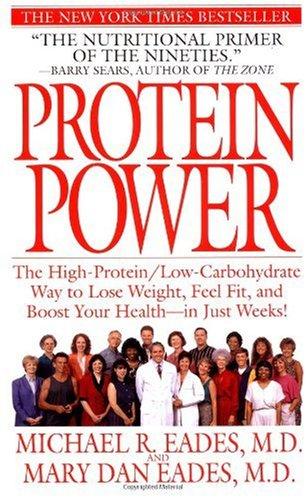
Protein Power: The High-Protein/Low-Carbohydrate Way to Lose Weight, Feel Fit, and Boost Your Health--In Just Weeks!
by
Michael R. Eades
and
Mary Dan Eades
Published 1 Jun 1999
It has always intrigued us because it completely flies in the face of today’s low-fat paradigm. At about the same time we ran across Banting we began attending paleopathology conferences and studying anthropology, where we learned what paleopathologists and anthropologists have known for years: the agricultural revolution and the increased consumption of carbohydrates it brought along with it played havoc with the health of early man. Mary Dan’s extensive study of eating disorders and metabolic hormonal derangements combined with Mike’s interest in biochemistry rounded out the “preparation” of our minds. We looked at Banting’s success with carbohydrate restriction along with the paleopathological/anthropological data showing a decline in health accompanying an increase in carbohydrate intake and concluded that maybe the intake of large amounts of carbohydrates wasn’t necessarily a good thing.
…
Many scientific papers have been written on this subject, and they present even the most passionate believer in the superiority of the high-carbohydrate diet with some food for thought. As Dr. Kathleen Gordon, like Dr. Cassidy an anthropologist at the Smithsonian Institution, writes in one such paper: “Not only was the agricultural ‘revolution’ not really so revolutionary at its inception, it has also come to represent something of a nutritional ‘devolution’ for much of mankind.” The Thrifty Gene: Store That Fat! The anthropological record provides plenty of evidence that the change to a high-carbohydrate diet caused a general decline in health of people designed to eat a high-protein, carbohydrate-restricted diet.
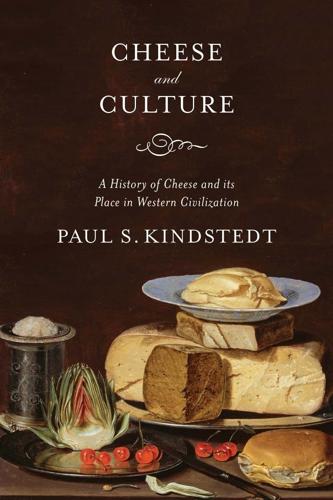
Cheese and Culture: A History of Cheese and Its Place in Western Civilization
by
Paul Kindstedt
Published 31 Mar 2012
Translating Terroir: The Global Challenge of French AOC Labeling. Journal of Rural Studies 19:127–138. Barker, G. 1981. Landscape and Society: Prehistoric Central Italy. Academic Press, London. —. 1985. Prehistoric Farming in Europe. Cambridge University Press, Cambridge, UK. —. 2006. The Agricultural Revolution in Prehistory: Why Did Foragers Become Farmers? Oxford University Press, Oxford, UK. Barker, G., and T. Rasmussen. 1998. The Etruscans. Blackwell Publishing, Oxford, UK. Barker, G., A. Grant, P. Beavitt, N. Christie, J. Giorgi, P. Hoare, T. Leggio, and M. Migliavacca. 1991. Ancient and Modern Pastoralism in Central Italy: An Interdisciplinary Study in the Cicolano Mountains.
…
The Biblical Archeologist 60(1):2–51. Berlin, I. 1998. Many Thousands Gone: The First Two Centuries of Slavery in North America. Belknap Press of Harvard University Press, Cambridge, MA. Bezeczky, Dr. 1996. Amphora Inscriptions—Legionary Supply? Britannia 27:329–336. Bidwell, P. W. 1921. The Agricultural Revolution in New England. The American Historical Review 26(4):683–702. Bidwell, P. W., and J. I. Falconer. 1941. History of Agriculture in the Northern United States, 1620–1860. Carnegie Institution of Washington, Publication No. 358. Peter Smith, New York. Bieber, M. 1957. A Bronze Statuette in Cincinnati and Its Place in the History of the Asklepios Types.
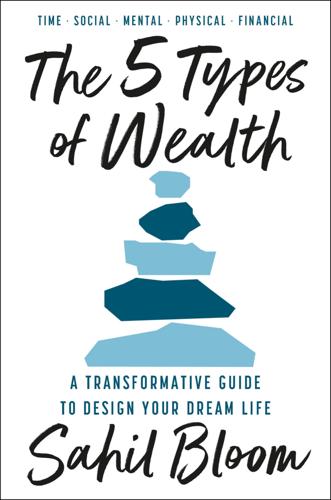
The 5 Types of Wealth: A Transformative Guide to Design Your Dream Life
by
Sahil Bloom
Published 4 Feb 2025
Men, who were typically responsible for hunting larger game and protein sources, were on the move, running, jumping, climbing, throwing, and more; women, who were typically responsible for child-rearing and gathering edible fruits, seeds, roots, and nuts, were also in constant motion, walking, balancing, carrying, and more. Their survival was based on their ability to do these activities well, and the constant motion also undoubtedly shaped their physical forms, their muscles, bones, and ligaments strengthened through the movement necessary to survive and thrive through reproductive age. When the Agricultural Revolution took place, around 10,000 B.C., the daily physical demands on the average human changed profoundly. These agrarian tribes did not face the inherent unpredictability of the hunter-gatherer lifestyle; they experienced a more repetitive routine that placed an emphasis on a handful of movements and actions done continuously (such as when they tilled soil) and a diet of staple crops.
…
A B C D E F G H I J K L M N O P Q R S T U V W X Y Z A Achilles, 270 aerobic cardiovascular training, 280, 282, 296 affirmation, words of, 169 aging relationships and, 137 (see also Physical Wealth) agrarian societies, 270 Agricultural Revolution, 270 akrasia, 102 alcohol, sleep and, 303 Alexander the Great, 22 Alice in Wonderland (Carroll), 70 alone, time spent, 64 ambivalent relationships, 164–67, 200 American Heart Association, 279 American Time Use Survey, 60, 65 anaerobic cardiovascular training, 280, 282, 296–97 Andreessen, Marc, 98 anti-goals, 44–46, 48–51, 86, 125, 200, 228, 257, 289, 308, 338, 364 anti-networking guide, 160, 182–86 anti-procrastination system, three steps of, 102–5 Apollo 13 (movie), 34–36 Apple, 216 arete, concept of, 211 Aristotle, 250, 271 Arjuna, 211 arrival fallacy, 7 Art of No, 112–14 Asculum, 23 Atkins diet, 273 atomic clock, 69 Atomic Habits (Clear), 46, 118 attention, as pillar of Time Wealth, 78, 80–83, 86, 89–111, 122, 124 attention residue, 73 Attia, Peter, 279 Australia, 322 autonomous delegation, 110–11 Avoid at All Costs List, 91–92, 94 awareness, as pillar of Time Wealth, 78–80, 84, 86–97, 122, 124 B Baldridge, Mitchell, 358 Bank of England, 324 Bankman-Fried, Sam, 315 banknotes, 324 barter economy, 321–22 batch-process email, 100–101 Behar, Hank, 205–6, 209, 220, 223 Behar, Phyllis, 205–6, 209, 220–21, 223 Berkshire Hathaway, 47 Bezos, Jeff, 214, 315 Bhagavad Gita, 211, 220 Big Leap, The (Hendricks), 237 billionaires, 323–25 biofluids, testing, 276 Bittersweet: How Sorrow and Longing Make Us Whole (Cain), 229 Blind Watchmaker, The (Dawkins), 214 blue zones, 218–19 Blue Zones, The: Lessons for Living Longer from the People Who’ve Lived the Longest (Buettner), 218 boat anchors, 52 Bock, Arlie, 136 body language, conversation and, 180 Bolt, Usain, 273 bonds, 353 boot-up sequence, 107–8 bought status, 156–57, 196–97, 198 brain size, 135–36 brain systems, 207, 224, 229, 243–44 breadth, as pillar of Social Wealth, 150, 153–54, 164–67, 178–95, 199–200 breathing protocols, 289, 304–6 Brooks, Arthur C., 20, 161 Brooks, David, 180 Bruno, Ben, 295, 298 bubonic plague, 80 Buddha (Siddhartha Gautama), 210, 213 Buddhism, 68, 148–49, 211, 223–24 budget, 329, 350–51, 365 Buettner, Dan, 217–18 Buffett, Warren, 47–48, 79, 82, 91, 221, 332, 334 Build the Life You Want (Brooks), 161 Butler, Robert, 219 C caffeine, sleep and, 302–3 Cain, Susan, 229 California State University, Fullerton, 281 caloric intake, 283, 299–300 Campbell, Patrick, 335 Candy, John, 318 carbohydrates, 283, 291, 300 sources of, 299 cardiovascular training, 280–81, 307 career advice, 338, 345–47 carnivore diet, 273 Carroll, Lewis, 70 Catch-22 (Heller), 313 Catherine the Great, 196 Catmull, Ed, 187 champagne-problem cycle, 335 Chapman, Gary, 169 character invention, 192–93, 195 Charles I, King of Spain, 320 children, time spent with, 62, 64–65, 143–46, 161–62 China, 69, 322–23 Christianity, 271 chronos, 75 circadian rhythm, 286–87, 292 Circulation journal, 279 Clear, James, 46, 118 clear expectations, 109–10 clock technology, 68–69 cold and heat therapy, 286, 297 Columbia University, 221, 332 compliments, 163, 169 compound interest, 331–34, 343 concentrated attention, 81, 83–84 connection, need for, 134–35, 139 Consumption Time, 118–20 contempt, 171–72 control, as pillar of Time Wealth, 78, 83–84, 86, 109–24 conversations, 160, 178–81, 183–84 Cool Running (movie), 318 core social relationships, 164–66, 200 cortisol, 286 Coubertin, Baron Pierre de, 272 course corrections, 51–52 Covey, Stephen, 95 COVID-19 pandemic, 80, 139–40 coworkers, time spent with, 63–64, 140 cowrie shells, 322 Creation Time, 116–17, 119–20 creative follow-ups, 185–86 creativity, 229, 231 Creativity, Inc.

The Singularity Is Nearer: When We Merge with AI
by
Ray Kurzweil
Published 25 Jun 2024
BACK TO NOTE REFERENCE 40 F. M. L. Thompson, “The Second Agricultural Revolution, 1815–1880,” Economic History Review 21, no. 1 (April 1968): 62–77, https://www.jstor.org/stable/2592204; Norman E. Borlaug, “Contributions of Conventional Plant Breeding to Food Production,” Science 219, no. 4585 (February 11, 1983): 689–93, https://science.sciencemag.org/content/sci/219/4585/689.full.pdf. BACK TO NOTE REFERENCE 41 To go deeper on how industrialization transformed agriculture, see “Causes of the Industrial Revolution: The Agricultural Revolution,” ClickView, YouTube video, August 10, 2015, https://www.youtube.com/watch?
…
v=zhL5DCizj5c; John Green, “The Industrial Economy: Crash Course US History #23,” CrashCourse, YouTube video, July 25, 2013, https://www.youtube.com/watch?v=r6tRp-zRUJs; “Mechanization on the Farm in the Early 20th Century,” Iowa PBS, YouTube video, April 28, 2015, https://www.youtube.com/watch?v=SI9K8ZJqAwE; “Cyrus McCormick,” PBS, accessed April 20, 2023, https://www.pbs.org/wgbh/theymadeamerica/whomade/mccormick_hi.html; Mark Overton, Agricultural Revolution in England: The Transformation of the Agrarian Economy 1500–1850 (Cambridge, UK: Cambridge University Press, 1996). BACK TO NOTE REFERENCE 42 Lebergott, “Labor Force and Employment, 1800–1960,” 119. BACK TO NOTE REFERENCE 43 Hannah Ritchie and Max Roser, “Crop Yields,” Our World in Data, updated 2022, https://ourworldindata.org/crop-yields; Sarah E.
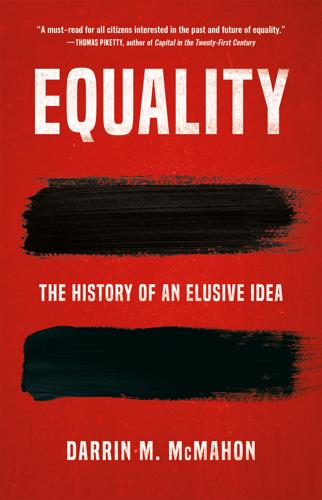
Equality
by
Darrin M. McMahon
Published 14 Nov 2023
That greatest of civilizational achievements—writing itself—and the advanced record-keeping that went with it, in the form of land surveys, censuses, and tax rolls, also proved crucial to the ability of landowners and state officials to track the flow of tribute. The earliest cuneiform tablets of the Sumerians are eloquent on the subject. They also make clear to what extent the chief cereal crops of the Agricultural Revolution served as the perfect currency of exchange. Visible, divisible, and difficult to hide, grains and cereals could be taken in kind at the source, as they were with great rapacity. The first business of civilization, we might say, was extraction, and the first civilizations were good at extracting, fielding their legions of soldiers, tax collectors, and officials to orchestrate and oversee the plunder.21 The collective result of this process was the creation of an “original one percent,” composed of vastly wealthy cohorts of landowners, government officials, priests, and commercial elites who benefited disproportionately from the tributary and trade networks they helped to put in place.
…
There are, it is true, other accounts that seek to explain stratification and the genesis of authoritarian states in more spontaneous ways, such as the notion that these were the largely unanticipated outcomes of the need to build dams and canals to provide for the irrigation necessary for farming, or to solve other large-scale problems of information processing or economic complexity. Others see the Agricultural Revolution and all that followed from it as more or less inevitable.28 And yet there is good evidence to suggest that, when they had the opportunity, hunter-gatherers resisted permanent settlement in states with determination, much as Native Americans later resisted confinement to reservations. Seen from the outside, civilization, with its diseases and coercion, could easily seem a bad proposition, to be fled or resisted.
…
On the one hand, the Axial religions likely contributed to an overall reduction in human inequality, which arguably had reached its greatest extent in world history at the time of the archaic states. If this is true, what is sometimes described as the “U-shaped curve” of human inequality—which begins at a high point with our early hominid ancestors, falls with hunter-gatherer egalitarianism, and then rises again with the Agricultural Revolution and the archaic states—would need to be reconceived. Turchin proposes a “Z-curve,” which adds another twist to the story by accounting for a reduction in inequality as a consequence of the Axial reforms. Whether that curve continues on its egalitarian course toward the future is more controversial, and what it might look like if it were plotted more finely, with data that distinguished between different types of equality, is far from clear.
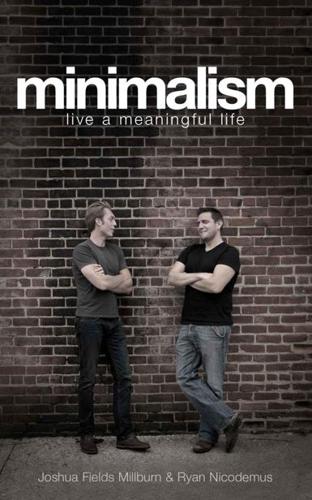
Minimalism: Live a Meaningful Life
by
Joshua Fields Millburn
and
Ryan Nicodemus
Published 8 Dec 2011
We also consume some dairy products, albeit significantly less than we used to. Paleo or Primal. Although neither of us subscribe to this diet (because we don’t eat meat), we have some friends who have had tremendous results from some form of a paleo or primal diet. The Paleo Diet mimics the types of foods most people on earth ate prior to the Agricultural Revolution (a mere 500 generations ago). These foods (fresh fruits, vegetables, lean meats, and seafood) are high in the beneficial nutrients that promote good health. The Paleo Diet is low in the foods and nutrients (refined sugars and grains, dairy, trans fats, salt, high-glycemic carbohydrates, and processed foods) that frequently cause weight gain, cardiovascular disease, diabetes, and numerous other health problems.
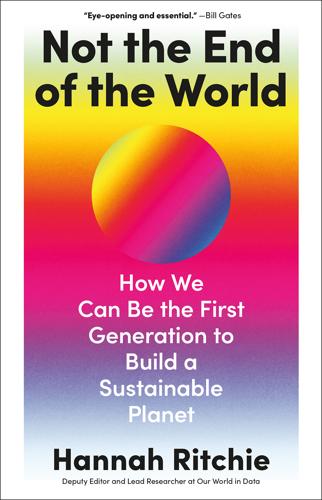
Not the End of the World
by
Hannah Ritchie
Published 9 Jan 2024
If we only focus on the second half, it might seem like the world has become unsustainable in the very recent past, when carbon emissions, energy use and overfishing accelerated. We think that the world used to be sustainable, but our environmental damage has kicked things out of balance. That’s the wrong conclusion. For thousands of years – more so since the agricultural revolution, but also before then – humans haven’t been environmentally sustainable. Our ancestors hunted hundreds of the largest animals to extinction, polluted the air from burning wood, crop wastes and charcoal, and cut down huge amounts of forest for energy and farmland.1 –3 It’s true that there have been periods or communities that have achieved a harmonious balance with other species and the environment around them.
…
The transition from a diverse diet that included meats, fruits, vegetables, seeds and other foods to one dominated by cereals probably worsened the diet for the average person. But what it did do was feed a lot more people. Human societies could grow, with enough calories to go around. The agricultural revolution was probably bad for the individual, but advantageous for the population as a whole. Our battle with agriculture has been centred on one thing: having enough nutrients in the soil at the right time. Until a century ago our ability to grow more was limited by a key element: nitrogen. Nitrogen is the building block of life.
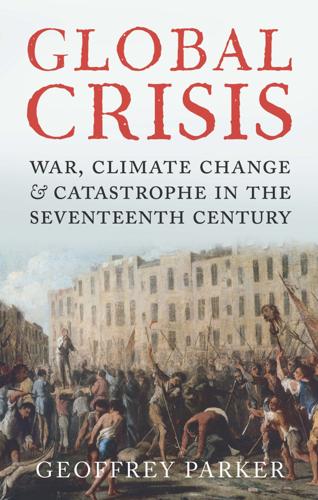
Global Crisis: War, Climate Change and Catastrophe in the Seventeenth Century
by
Geoffrey Parker
Published 29 Apr 2013
, 325–6; acreage from Ho, Studies, 102 (but note the caveat on page 730 n. 4 to ch. 5 above). Other information from Huang, Peasant economy, 85–6; Pomeranz, The Great Divergence, 84; and Will, ‘Développement quantitatif’. 19. Hartlib, Samuel Hartlib his legacie. Kerridge, The agricultural revolution, first published in 1967, produced a barrage of examples of agrarian ‘improvement’ in England during the later seventeenth century. Mark Overton, An agricultural revolution, later dismissed this evidence and argued that little changed before 1750. The rival claims may be reconciled by noting that Kerridge drew most of his examples from East Anglia, where lighter soils facilitated innovation, whereas Overton concentrated on the Midlands, with heavier soils.
…
Thanks to these measures, the total cultivated land in the empire, which had fallen to 67 million acres in 1645, climbed back to 90 million acres in 1661 and to 100 million acres in 1685 – although since over 191 million acres of Chinese soil had been under cultivation in 1600, the heavy footprint of the Global Crisis remained perceptible well into the eighteenth century.18 A Second Agricultural Revolution A baby boom normally stimulates the agricultural sector, since every new mouth needs to be fed, encouraging farmers to invest in irrigation and drainage works, to improve the yield of traditional crops and to introduce new ones. In Mughal India the versatile peasants of the Ganges valley, who already cultivated almost 50 different crops in the early seventeenth century, added maize (as well as tobacco, the other New World ‘miracle crop’) to their repertory; while the farmers of west central Africa began to plant not only maize but also manioc (originally a Brazilian crop) as a safeguard against the failure of the millet and sorghum harvests during drought.
…
In 1650 Samuel Hartlib, a refugee from the Thirty Years War who settled in England, published A discours of husbandrie used in Brabant and Flaunders, later expanded to include information from New England and Ireland, showing how new methods of tillage and rotation made otherwise unproductive soils profitable; how to identify and to sow the strains best suited to each locality; and how to use chemical fertilizers to optimal effect. Hartlib also carried out experiments concerning the relative yields of different methods of farming. Some English historians have hailed these practical and theoretical efforts, which gathered momentum in the 1640s and 1650s, as an ‘agricultural revolution’.19 Chinese farmers also innovated at this time, notably by cultivating maize, peanuts and sweet potatoes: three crops recently imported from the Americas, which thrived in marginal soils, resisted both droughts and locusts, did not require transplanting like rice, and produced twice as much as other dry-land crops with far less labour input.
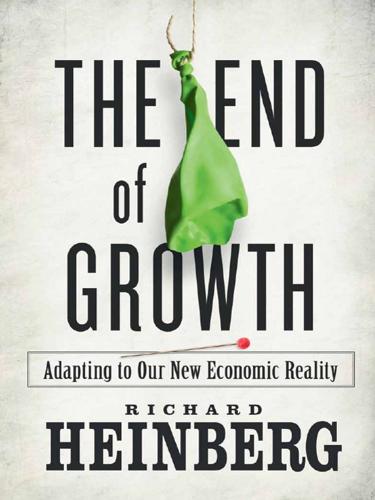
The End of Growth: Adapting to Our New Economic Reality
by
Richard Heinberg
Published 1 Jun 2011
If all people had to grow or gather all of their own food and fuel, the effort might require most of their working hours. By leaving food production to skilled farmers, we enable others to spend their days weaving cloth, playing the oboe, or screening hand-carried luggage at airports.47 Prior to the agricultural revolution several millennia ago, division of labor was mostly along gender lines, and was otherwise part-time and informal; with farming and the settling of the first towns and cities, full-time division of labor appeared, along with social classes. Since the Industrial Revolution, the number of full-time occupations has soared.
…
Fire enabled us to stay warm in forbidding environments, cook our food (leading to profound changes not only in human culture but human physiology as well), and alter landscapes in our favor.24 The second was the development of language — likely a gradual process that began many tens of millennia ago, but an equally fateful one: it enabled humans to coordinate their actions over time and space, and it slowly altered the internal architecture of our brains. With language we told stories, and with those stories we wove religions, philosophies, and eventually scientific theories and computer programs. The third turning point was the agricultural revolution 10,000 years ago. Seasonal surpluses of storable food enabled full-time division of labor (society became segmented into peasants, soldiers, accountants, merchants, and kings) as well as the emergence of cities and empires — which brought with them writing, mathematics, and money. The industrial revolution, only about two centuries old, liberated the energies of fossil fuels, which replaced muscle power in production and transportation, thereby dramatically increasing the speed and scale of those processes.

Machine Learning: New and Collected Stories
by
Hugh Howey
Published 2 Oct 2017
I couldn’t help but imagine him on the porch with a book that he probably didn’t pay for, sipping an iced tea, while the brother of someone he was both having sex with and legally owned was pausing in his toil to wipe his brow and gaze up at the man who would one day get credit for all his hard work. Sure, it probably didn’t happen like that. But it certainly didn’t happen like the tour guides suggest. The men and women who built the railroads, started our agricultural revolution, our industrial revolution, had to go through a period of abuse, ownership, and neglect. Will our machines suffer the same? I think they already are. My sailboat is a robot—a collection of robots, really. My floating home runs on solar power, but there’s a machine that talks to my batteries, and if they get below 35 percent, it cranks the generator for me.
…
The word “farm,” of course, was a holdover from the clusters of computers, the server farms, used at places like Pixar, where virtual worlds were created for entertainment. It took a while before the productive uses of such worlds were understood. Once they were, the result was often referred to as the third great agricultural revolution. Sim farms, in just the last decade, had sprouted all over the place. Government-owned, university-owned, even a few private ones. The flood of research from these farms drowned out all the work done in the real world. A theory would be published in the morning and overturned by mid-afternoon.
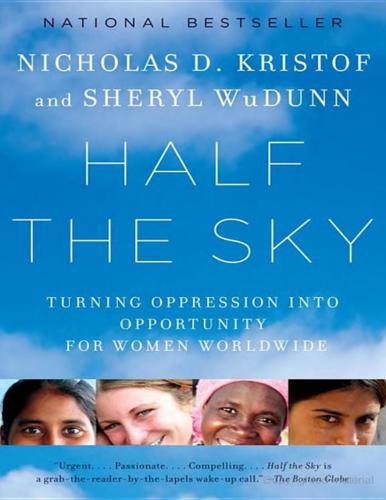
Half the Sky: Turning Oppression Into Opportunity for Women Worldwide
by
Nicholas D. Kristof
and
Sheryl Wudunn
Published 7 Sep 2008
Drayton is the founder of Ashoka, an organization that supports and trains social entrepreneurs around the world. They are called Ashoka Fellows, and there are now more than two thousand of them—many involved in women’s rights campaigns. Drayton’s brief history of the rise of social entrepreneurs goes like this: The agricultural revolution produced only a small surplus, so only a small elite could move into the towns to create culture and conscious history. This pattern persisted ever since: Only a few have held the monopoly on initiative because they alone have had the social tools. That is one reason that per capita income in the West remained flat from the fall of the Roman Empire until about 1700.
…
Likewise Scotland examined the Dutch and Swedish approaches, along with that of New South Wales in Australia, and preferred Sweden’s strategy: Scottish Parliament, Local Government and Transport Committee, “Evidence Received for Prostitution Tolerance Zones (Scotland) Bill Stage One,” February 4, 2004. CHAPTER THREE Learning to Speak Up 52 A retired high court judge, Bhau Vahane: Raekha Prasad, “Arrest Us All,” The Guardian, September 16, 2005. The New Abolitionists 55 “The agricultural revolution”: Bill Drayton, “Everyone a Changemaker: Social Entrepreneurship’s Ultimate Goal,” Innovations 1, no. 1 (Winter 2006): 80–96. CHAPTER FOUR Rule by Rape 61Women aged fifteen through forty-four: The calculation that more women die or are maimed from male violence than from the other causes comes from Marie Vlachova and Lea Biason, eds., Women in an Insecure World: Violence Against Women, Facts, Figures and Analysis (Geneva: Centre for the Democratic Control of Armed Forces, 2005), p. vii.

A World Without Work: Technology, Automation, and How We Should Respond
by
Daniel Susskind
Published 14 Jan 2020
See, for instance, Daron Acemoglu, “Advanced Economic Growth: Lecture 19: Structural Change,” delivered at MIT, 12 November 2017. 41. Jesus Felipe, Connie Bayudan-Dacuycuy, and Matteo Lanzafame, “The Declining Share of Agricultural Employment in China: How Fast?” Structural Change and Economic Dynamics 37 (2016): 127–37. 42. Estimate of “males in agriculture” in 1900–1909 is 810,000 in Gregory Clark, “The Agricultural Revolution and the Industrial Revolution: England, 1500–1912,” unpublished ms. (University of California, Davis, 2002). The National Health Service of England and Wales employed about 1.2 million people in 2017; see https://digital.nhs.uk/. 43. David Autor, “Polanyi’s Paradox and the Shape of Employment Growth” in “Re-evaluating Labor Market Dynamics: A Symposium Sponsored by the Federal Reserve Bank of Kansas City.
…
Chui, Michael, Katy George, James Manyika, and Mehdi Miremadi. “Human + Machine: A New Era of Automation in Manufacturing.” McKinsey & Co., September 2017. Cingano, Federico, “Trends in Income Inequality and Its Impact on Economic Growth.” OECD Social, Employment and Migration Working Paper No. 163 (2014). Clark, Gregory, “The Agricultural Revolution and the Industrial Revolution: England, 1500–1912.” Unpublished manuscript, University of California, Davis, 2002. ________. A Farewell to Alms. Princeton, NJ: Princeton University Press, 2007. Cobb, Charles, and Paul Douglas. “A Theory of Production.” American Economic Review 18, no. 1 (1928): 139–65.

Stakeholder Capitalism: A Global Economy That Works for Progress, People and Planet
by
Klaus Schwab
Published 7 Jan 2021
Farming led to a stable supply of food and even a regular surplus for the first time,36 and a non-nomadic way of life allowed people to stock food and domesticate animals, providing further sources of nutrition, including meat and milk products. Aided by further technological breakthroughs, such as the development of the plough, the wheel, pottery, and iron tools, this era consisted of a true agricultural revolution. It had major political, economic, and societal consequences. Socially, the new sedentary lifestyle allowed for the development of villages, cities, societies, and even early empires. Politically, these societies started to see hierarchies for the first time, as the food surplus allowed certain classes of people to live off the foods produced by others.
…
Kahn, The Yale Law Journal, January 2017 34 “Big Tech Has Too Much Monopoly Power—It's Right to Take It On,” Kenneth Rogoff, The Guardian, April 2019, https://www.theguardian.com/technology/2019/apr/02/big-tech-monopoly-power-elizabeth-warren-technology; Quote: “Here are titles of some recent articles: Paul Krugman's “Monopoly Capitalism Is Killing US Economy,” Joseph Stiglitz's “America Has a Monopoly Problem—and It's Huge,” and Kenneth Rogoff's “Big Tech Is a Big Problem”; “The Rise of Corporate Monopoly Power,” Zia Qureshi, Brookings, May 2019, https://www.brookings.edu/blog/up-front/2019/05/21/the-rise-of-corporate-market-power/. 35 “Steve Wozniak Says Apple Should've Split Up a Long Time Ago, Big Tech Is Too Big,” Bloomberg, August 2019, https://www.bloomberg.com/news/videos/2019-08-27/steve-wozniak-says-apple-should-ve-split-up-a-long-time-ago-big-tech-is-too-big-video. 36 Some scholars do dispute this notion. Yuval Noah Harari, for example, is much less upbeat about the impact of the agricultural revolution on the quality and quantity of food supply on people. 37 A Tale of Two Cities, Charles Dickens, Chapman & Hall, 1859. 38 “The Emma Goldman Papers,” Henry Clay Frick et al., University of California Press, 2003, https://www.lib.berkeley.edu/goldman/PublicationsoftheEmmaGoldmanPapers/samplebiographiesfromthedirectoryofindividuals.html. 39 “Historical Background and Development Of Social Security,” Social Security Administration, https://www.ssa.gov/history/briefhistory3.html. 40 “Standard Ogre,” The Economist, December 1999, https://www.economist.com/business/1999/12/23/standard-ogre. 41 “The Presidents of the United States of America”: Lyndon B.
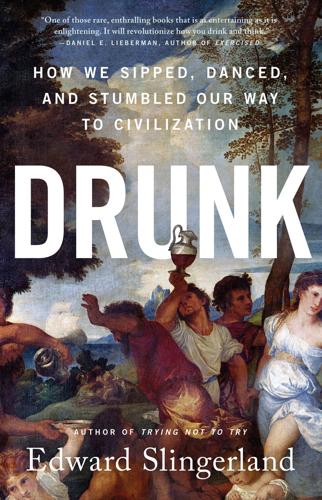
Drunk: How We Sipped, Danced, and Stumbled Our Way to Civilization
by
Edward Slingerland
Published 31 May 2021
Eventually this process of selection produced early versions of familiar modern crops, plants productive enough to sustain and reward sedentary populations who could put in the work to clear land, sow and maintain the fields, and then hang around to reap the rewards. Voilà, agriculture. Somewhat later, similar processes independently led to agricultural revolutions in other regions of the world, such as the domestication of wheat, millet, and rice in the Yellow River and Yangzi River valleys in China and of maize (corn) in the Americas. Once early farmers were systematically producing crops, they’d often end up with surpluses. These could be stored for the off-season, or as insurance against a future bad harvest.
…
Its discovery a couple decades ago was therefore an important piece of evidence against the traditional view that certain key trappings of civilization—monumental architecture, elaborate ritual-based religion, and the brewing of alcohol—only could have developed once humans had attained the stability and access to resources brought about by the agricultural revolution. Beer before bread advocates see this site, with its stone basins that could hold up to forty gallons of liquid, scattered remnants of drinking vessels, and evidence of extensive feasting on wild animals, as an illustration of how ancient humans were first motivated to come together in large groups by the draw of intoxication and ritual, with agriculture coming after.
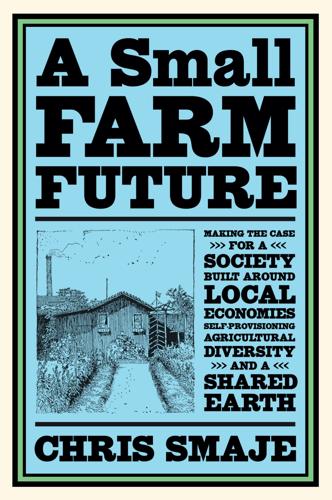
A Small Farm Future: Making the Case for a Society Built Around Local Economies, Self-Provisioning, Agricultural Diversity and a Shared Earth
by
Chris Smaje
Published 14 Aug 2020
This book shows with great clarity why we are heading for planetary disaster and suggests ways in which new kinds of more stable social and economic practices might evolve around support for sustainable agriculture. A timely and compelling vision of a New Agrarianism. Highly recommended.’ —PAUL RICHARDS, author of Indigenous Agricultural Revolution and Ebola; emeritus professor of technology and agrarian development, Wageningen University ‘Time to tune in – these are powerful arguments for collective action in agriculture. We know that small farms offer solutions to the crises of our time. Stewardship, guardianship and rebuilding biodiversity is real, meaningful work.
…
London: ONS. Orrell, David. 2010. Economyths: How the Science of Complex Systems Is Transforming Economic Thought. London: Icon. Ostrom, Elinor. 1990. Governing the Commons: The Evolution of Institutions for Collective Action. Cambridge: Cambridge University Press. Overton, Mark. 1996. Agricultural Revolution in England: The Transformation of the Agrarian Economy 1500–1850. Cambridge: Cambridge University Press. Parenti, Christian. 2011. Tropic of Chaos: Climate Change and the New Geography of Violence. New York: Nation Books. Patel, Raj. 2013. ‘The Long Green Revolution,’ Journal of Peasant Studies 40(1): 1–63.

Stakeholder Capitalism: A Global Economy That Works for Progress, People and Planet
by
Klaus Schwab
and
Peter Vanham
Published 27 Jan 2021
Farming led to a stable supply of food and even a regular surplus for the first time,36 and a non-nomadic way of life allowed people to stock food and domesticate animals, providing further sources of nutrition, including meat and milk products. Aided by further technological breakthroughs, such as the development of the plough, the wheel, pottery, and iron tools, this era consisted of a true agricultural revolution. It had major political, economic, and societal consequences. Socially, the new sedentary lifestyle allowed for the development of villages, cities, societies, and even early empires. Politically, these societies started to see hierarchies for the first time, as the food surplus allowed certain classes of people to live off the foods produced by others.
…
Kahn, The Yale Law Journal, January 2017 34 “Big Tech Has Too Much Monopoly Power—It's Right to Take It On,” Kenneth Rogoff, The Guardian, April 2019, https://www.theguardian.com/technology/2019/apr/02/big-tech-monopoly-power-elizabeth-warren-technology; Quote: “Here are titles of some recent articles: Paul Krugman's “Monopoly Capitalism Is Killing US Economy,” Joseph Stiglitz's “America Has a Monopoly Problem—and It's Huge,” and Kenneth Rogoff's “Big Tech Is a Big Problem”; “The Rise of Corporate Monopoly Power,” Zia Qureshi, Brookings, May 2019, https://www.brookings.edu/blog/up-front/2019/05/21/the-rise-of-corporate-market-power/. 35 “Steve Wozniak Says Apple Should've Split Up a Long Time Ago, Big Tech Is Too Big,” Bloomberg, August 2019, https://www.bloomberg.com/news/videos/2019-08-27/steve-wozniak-says-apple-should-ve-split-up-a-long-time-ago-big-tech-is-too-big-video. 36 Some scholars do dispute this notion. Yuval Noah Harari, for example, is much less upbeat about the impact of the agricultural revolution on the quality and quantity of food supply on people. 37 A Tale of Two Cities, Charles Dickens, Chapman & Hall, 1859. 38 “The Emma Goldman Papers,” Henry Clay Frick et al., University of California Press, 2003, https://www.lib.berkeley.edu/goldman/PublicationsoftheEmmaGoldmanPapers/samplebiographiesfromthedirectoryofindividuals.html. 39 “Historical Background and Development Of Social Security,” Social Security Administration, https://www.ssa.gov/history/briefhistory3.html. 40 “Standard Ogre,” The Economist, December 1999, https://www.economist.com/business/1999/12/23/standard-ogre. 41 “The Presidents of the United States of America”: Lyndon B.
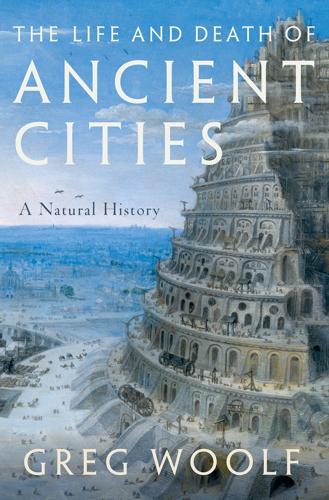
The Life and Death of Ancient Cities: A Natural History
by
Greg Woolf
Published 14 May 2020
Domesticated species were not adequate, the environment was not propitious, and societies failed to stick together long enough to make it work. Yet as the Holocene progressed more and more experiments were successful, and around the world cultivated fields and plots and gardens were carved out of the wilderness. It used to be common to write about the agricultural revolution, as if a world of foragers changed suddenly into a world of farmers. In reality it was more complicated. Different groups of foragers approached farming by various routes. All they had in common were those social and cognitive capacities that had evolved for other purposes. Mostly these changes happened sooner in those warmer regions where plant resources had always been a bigger part of foragers’ diets: in Mesopotamia and Mesoamerica, Egypt and northern China.
…
Some early accounts of urbanization—focused on the experience of the Near East—seem to assume that once a society had committed to farming then population growth, metallurgy, and trade would all follow automatically, with cities and states the inevitable end point of the historical trajectory. Childe’s Urban Revolution was seen as a natural sequel to his Agricultural Revolution. The European sequence is one of those that shows things were not so simple. Humans might have an urban aptitude, but did not have an urban destiny. Other kinds of social worlds could be built out of farming, multispecies societies, and metal-working. The Mediterranean, as one might expect, was somewhere between the two.
…
Current Anthropology 52 (5): 619–660. Bannon, Cynthia. 2009. Gardens and Neighbours: Private Water Rights in Roman Italy. Ann Arbor: University of Michigan Press. Bar-Kochva, Bezalel. 1979. The Seleucid Army: Organization and Tactics in the Great Campaigns. Cambridge: Cambridge University Press. Barker, Graeme. 2006. The Agricultural Revolution in Prehistory: Why Did Foragers Become Farmers? Oxford: Oxford University Press. Barker, Graeme, and Tom Rasmussen. 1998. The Etruscans. Malden, MA: Blackwell. Bass, George, ed. 1972. History of Seafaring. London: Thames and Hudson. Beard, Mary. 2007. The Roman Triumph. Cambridge, MA: Harvard University Press.
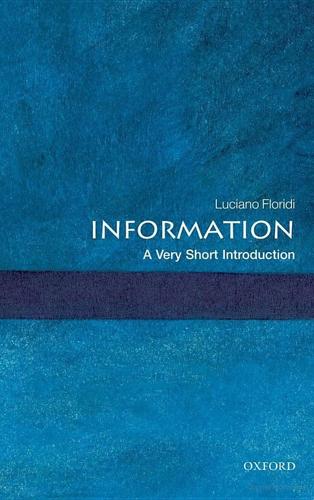
Information: A Very Short Introduction
by
Luciano Floridi
Published 25 Feb 2010
According to recent estimates, life on Earth will last for another billion years, until it will be destroyed by the increase in solar temperature. So imagine an historian writing in the near future, say in a million years. She may consider it normal, and perhaps even elegantly symmetrical, that it took roughly six millennia for the agricultural revolution to produce its full effect, from its beginning in the Neolithic (10th millennium BC), until the Bronze Age, and then another six millennia for the information revolution to bear its main fruit, from the Bronze Age until the end of the 2nd millennium AD. During this span of time, Information and Communication Technologies (ICTs) evolved from being mainly recording systems - writing and manuscript production - to being also communication systems, especially after Gutenberg and the invention of printing - to being also processing and producing systems, especially after Turing and the diffusion of computers.

Free to Choose: A Personal Statement
by
Milton Friedman
and
Rose D. Friedman
Published 2 Jan 1980
Land was made available—but it was land that had been unproductive before. After the middle of the nineteenth century land-grant colleges were established, and they disseminated information and technology through governmentally financed extension services. Unquestionably, however, the main source of the agricultural revolution was private initiative operating in a free market open to all—the shame of slavery only excepted. And the most rapid growth came after slavery was abolished. The millions of immigrants from all over the world were free to work for themselves, as independent farmers or businessmen, or to work for others, at terms mutually agreed.
…
It acted primarily to restrict output in order to keep prices artificially high. The growth of agricultural productivity depended on the accompanying industrial revolution that freedom stimulated. Thence came the new machines that revolutionized agriculture. Conversely, the industrial revolution depended on the availability of the manpower released by the agricultural revolution. Industry and agriculture marched hand in hand. Smith and Jefferson alike had seen concentrated government power as a great danger to the ordinary man; they saw the protection of the citizen against the tyranny of government as the perpetual need. That was the aim of the Virginia Declaration of Rights (1776) and the United States Bill of Rights (1791); the purpose of the separation of powers in the U.S.

The Great Escape: Health, Wealth, and the Origins of Inequality
by
Angus Deaton
Published 15 Mar 2013
A six-foot-tall worker weighing 200 pounds would have survived about as well in the eighteenth century as a man on the moon without a spacesuit; on average there simply was not enough food to support a population of people of today’s physical dimensions. The small workers of the eighteenth century were effectively locked into a nutritional trap; they could not earn much because they were so physically weak, and they could not eat because, without work, they did not have the money to buy food. With the beginnings of the agricultural revolution, the trap began to fall apart. Per capita incomes began to grow and, perhaps for the first time in history, there was the possibility of steadily improving nutrition. Better nutrition enabled people to grow bigger and stronger, which further enabled productivity to increase, setting up a positive synergy between improvements in incomes and improvements in health, each feeding off the other.
…
Riley, 2001, Rising life expectancy: A global history, Cambridge University Press; and Mark Harrison, 2004, Disease and the modern world, Polity Press. 2. The data are taken from the Human Mortality Database, http://www.mortality.org/. 3. The following account relies on Graeme Barker, 2006, The agricultural revolution in prehistory: Why did foragers become farmers? Oxford University Press, and Mark Nathan Cohen, 1991, Health and the rise of civilization, Yale University Press. See also Morris, Why the West rules. 4. David Erdal and Andrew Whiten, 1996, “Egalitarianism and Machiavellian intelligence in human evolution,” in Paul Mellars and Kathleen Gibson, eds., Modelling the early human mind, McDonald Institute Monographs, 139–50. 5.
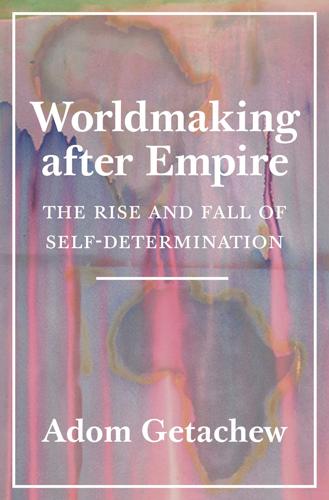
Worldmaking After Empire: The Rise and Fall of Self-Determination
by
Adom Getachew
Published 5 Feb 2019
Their relative incomes are therefore determined by their relative productivities in growing food; and the relative prices of steel and cocoa are determined by these relative incomes and by productivities in steel and cocoa.”13 The cocoa farmer and the steelworker the w elfa r e wor ld of the new economic or der [ 147 ] had to be paid wages that attracted them away from food production and toward these forms of employment. Because an agricultural revolution had already occurred in the temperate regions, wages would be higher.14 The absence of an agricultural revolution was thus one of the distinguishing features of underdeveloped countries. This meant that relatively low wages could attract workers away from food production and toward the production of cash crops like coffee and cocoa. Moreover, without a revolution in agricultural production, the economies of underdeveloped countries did not have the necessary surplus food and raw materials that could be consumed in an industrial sector.

The Coming Wave: Technology, Power, and the Twenty-First Century's Greatest Dilemma
by
Mustafa Suleyman
Published 4 Sep 2023
From the earliest civilizations, like Uruk in Mesopotamia, the birthplace of cuneiform, the first known writing system, to today’s megalopolises, cities have driven technological development. And more technology meant more—and bigger—cities. At the dawn of the Agricultural Revolution the worldwide human population numbered just 2.4 million. At the start of the Industrial Revolution, it approached 1 billion, a four-hundred-fold increase that was predicated on the waves of the intervening period. The Agricultural Revolution (9000 –7500 BCE), one of history’s most significant waves, marked the arrival of two massive general-purpose technologies that gradually replaced the nomadic, hunter-gatherer way of life: the domestication of plants and animals.
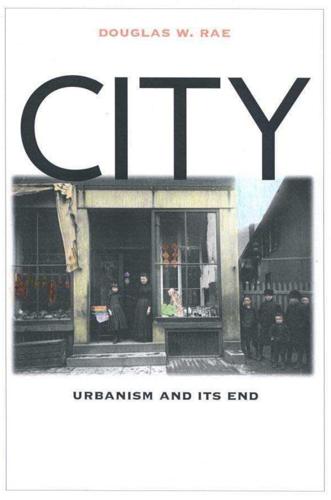
City: Urbanism and Its End
by
Douglas W. Rae
Published 15 Jan 2003
ACCIDENTS OF URBAN CREATION Beginning in about 1840, a concatenation of four events and two nonevents began to emerge in the United States; they would constitute what I’ll call accidents of urban creation. All of these outcomes are wrapped within the evolution of American capitalism, with its sharply increasing capacity to create and to destroy, and to influence the course of government policy. These developments were: the rising dominance of steam-driven manufacturing, already noted; an agricultural revolution allowing the nation to support more and larger urban centers; the emergence, largely as a result of integrated railroad systems, of national markets accessible from central-city manufacturing plants; a critical timing gap between the maturation of that rail system (which centralized cities) and the coming automotive and truck transportation (which decentralized them); a sustained period of relatively open immigration allowing accelerated growth in the supply of urban labor; and a delayed and uneven spreading out and implementation of distance-compressing technologies such as alternating current (AC) electricity.
…
During this time, two of these forces were important by their absence: motor vehicles with the highway system on which they relied, and a well-developed electrical grid spanning urban regions. The other forces were made important by their presence: the (temporary) dominance of steam-powered manufacturing, the agricultural revolution needed to sustain more and larger urban centers, the maturation of a well-integrated railroad system, and, finally, the willingness of government to permit a great wave of immigration during the same decades. There was nothing inevitable or even predictable about this temporary historical alignment: if God, or nature, should elect to run the same history a thousand times, there is no particularly good reason to expect that the same alignment would recur very often, or at all.
…
See brutalism; modernism; New Urbanism assembly-line production, 21–22, 224 athletic organizations, 144–45 Atlas Club, 154 automobiles assembly-line production of, 21–22, 221 growth in numbers, 437 impact of on city governance, 23–24 manufacture of, 223 –24 in New Haven, 223, 224–28, 296 and urban life, 14–15, 223 –30, 369 – 70 A&P stores, 236–43 Adler, Max, 81, 172, 187 African-Americans. See blacks agglomeration economies, 435 agricultural revolution, 11–13, 17 agriculture in the New Haven area, 48 – 50, 63 Albertus Magnus College, 248 Alexander, Bruce, 431 Alfano, Jenny, 250–51 Amalgamated Clothing Workers, 250–51 Ambler Realty, 261 American Automobile Association, 223, 458 American Federation of Teachers, 252 American Steel & Wire Company, 110, 111 Amorotti, Ben, 384 Andrew B.
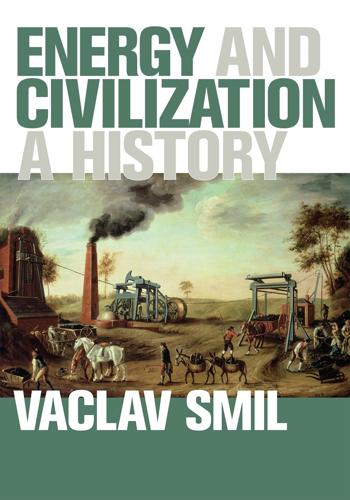
Energy and Civilization: A History
by
Vaclav Smil
Published 11 May 2017
Figure 3.6 Components of a typical late nineteenth-century collar harness (based on Telleen 1977 and Villiers 1976)—and a variety of mid-eighteenth-century horseshoes (Diderot and d’Alembert 1769–1772). The shapes (starting on the left) are, respectively, typical English, Spanish, German, Turkish, and French horseshoes. An efficient harness was not the only precondition of a horse’s superior performance, and hence its introduction did not launch an agricultural revolution (Gans 2004). Hard-working horses were fed grain, which required a planting cycle, and needed relatively expensive harnessing and shoeing, while weaker and slower-working oxen could be fed with just straw and chaff and harnessed cheaply. Horseshoes are narrow U-shaped metal plates fitting the hoof’s rim and fastened with nails driven into the insensitive hoof wall (fig. 3.6).
…
Not surprisingly, it formed the core of all intensive agricultural systems relying on complex crop rotations, but it was only between 1750 and 1880 when standard rotations, including legume cover crops (exemplified by Norfolk’s four-year succession of wheat, turnips, barley, and clover), were widely adopted in Europe and at least tripled the rate of symbiotic nitrogen fixation and secure rising yields of nonleguminous crops (Campbell and Overton 1993). Chorley (1981, 92) recognized that this change was truly epochal, justifying his label of Agricultural Revolution: Although advance was broad-fronted, the outcome of many small changes, there was one big change of overriding importance: the generalization of leguminous crops and the consequent increase in the nitrogen supply. Is it not fanciful to suggest that this neglected innovation was of comparable significance to steam power in the economic development of Europe in the period of industrialization?
…
Berkeley, CA: Lawrence Berkeley National Laboratory. Chincold. 2015. Three Gorges Project. http://www.chincold.org.cn/dams/rootfiles/2010/07/20/1279253974143251-1279253974145520.pdf. Ching, F. D. K., M. Jarzombek, and V. Prakash. 2011. A Global History of Architecture. Hoboken, NJ: John Wiley & Sons. Chorley, G. P. H. 1981. The agricultural revolution in Northern Europe, 1750–1880: Nitrogen, legumes, and crop productivity. Economic History Review 34 (1):71–93. Choudhury, P. C. 1976. Hastividyarnava. Gauhati: Publication Board of Assam. Christ, K. 1984. The Romans. Berkeley: University of California Press. Church, R., Hall, A. and J.

Tyler Cowen - Stubborn Attachments A Vision for a Society of Free, Prosperous, and Responsible Individuals
by
Meg Patrick
Whether we like it or not, economic growth and technological progress do not always come in steady doses. World history offers various precedents for the idea of a "great transformation," leading to enormous increases in the quality and quantity of human lives. Our ancestors did not foresee the evolution of humans, the agricultural revolution, the "urban revolution" (Sumeria and Mesopotamia, circa 4000 B.C.), or the Industrial Revolution. For that matter the East Asian 14 See for instance Venkatraman (2009) and Tsai (2006). 25 revolution in economic growth was not widely anticipated. Each development, over time, dramatically changed the human condition, and eventually very much for the better.
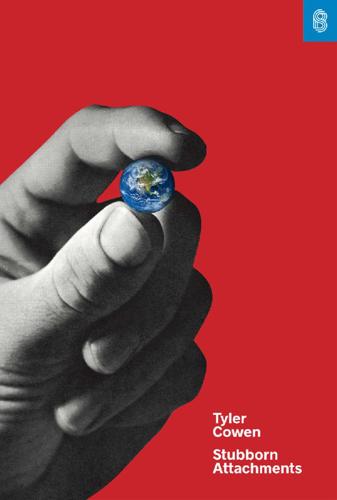
Stubborn Attachments: A Vision for a Society of Free, Prosperous, and Responsible Individuals
by
Tyler Cowen
Published 15 Oct 2018
Whether we like it or not, economic growth and technological progress do not always arrive at a steady pace. World history offers various precedents for the idea of a “great transformation” leading to enormous increases in the quality and quantity of human lives. Our ancestors did not foresee the evolution of humans, the agricultural revolution, the “urban revolution” (Sumeria and Mesopotamia, circa 4000 B.C.), or the Industrial Revolution. For that matter, the East Asian revolution in economic growth was not widely anticipated. Each development dramatically changed the human condition over time, and eventually very much for the better.
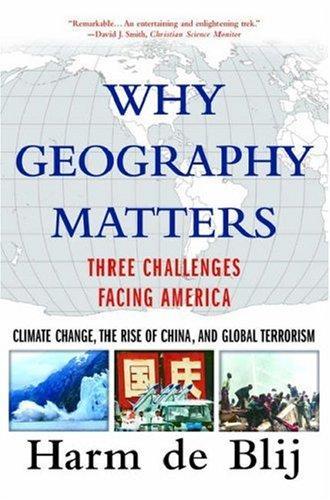
Why geography matters: three challenges facing America : climate change, the rise of China, and global terrorism
by
Harm J. De Blij
Published 15 Nov 2007
Environment may not determine the capacities of humans, but environmental events can decisively influence the course of history. CRISIS IN EUROPE It is no exaggeration to say that the vicissitudes of Western Europe's Little Ice Age climate brought about what cultural geographers refer to as the second Agricultural Revolution. Farm implements were improved; field methods (planting, sowing, watering, weeding, harvesting) got better, transportation and storage of produce involved less waste and loss. New crops were tried (not always with good results); marketing in the growing urban areas became more efficient. All this was, literally, a matter of survival, because toward the end of the sixteenth century there were signs that the Little Ice Age had even worse in store.
…
See also specific countries, organizations and events and Afghanistan, 156-59, 176, 177 (see also primary entry for Afghanistan) bin Laden, 155-56, 157, 160, 161-62, 163, 177 of Chechens, 247-48 color-coded terror alerts, 174 INDEX terrorism (continued) defining terrorism, 151 and demarcation, 120 expansion of, 159-61 favorable environments for, 176-77 (see also states, failed or malfunctioning) funding of, 187-88 and globalization, 164 incidence of, ix (see also specific attacks) infiltration, 180 and insurgency, 188 and Iraq, 189-96 (see also primary entry for Iraq) and Islam, 48-50, 123, 124, 147, 148, 151-56, 161-73, 181-87 potential targets, 174-75, 176-81 religious extremism, 48-49, 50, 151-56, 161-67 responding to attacks, 175-76 suicide attacks, 152, 160, 170, 175-76, 189,248 and territorial imperative, 161-62 Triple Frontier, 179-81, 180 Thailand, 147, 177 Thatcher, Margaret, 151-52 Thira eruption, 76 Tiananmen Square, 131 Tianjin, China, 127, 139 Tiber Valley, 201 Tibet (Xizang, China) borders and boundaries, 119-20, 135 China's claims to, 108, 130, 135, 144 name, 37 Tibetan revolt (1959), 137 Tigris-Euphrates rivers, 98, 190, 193 time in geologic terms, 53, 58, 59 Toba eruption, 71-72, 82, 83, 279 Togo, 185 toilets, 93 topography, 28, 29, 30 Toure, Sekou, 267 trade Africa, 182, 258, 267, 271 China, 124, 136, 146-47, 149 Europe, 202 Japan, 146-47 South Korea, 146-47 United States, 14| Transcaucasia, 234, 236, 238, 243-48 transculturation, 144, 173 Transdniestria, Moldova, 3, 206 Trans-Siberian Railroad, 238, 239 Transylvania, Romania, 206 TreatyofNice (2000), 211 TreatyofRome (1957), 210 tree ring research (dendochronology), 78 Tribal Areas (Waziristan), Pakistan, 177 Trinidad and Tobago, 180 Triple Frontier, 179-81, 180 Truman, Harry, 209 tsunami of December 26, 2004, 12, 55, 279 Tunisia, 94 Turkestan, 133 Turkey borders and boundaries, 193 Dardanelles Strait, 116 ethnic groups, 228 and European Union, 225, 228-29, 253 immigration, 95, 168 and Iraq, 190 Islam in, 162, 164 and oil, 234 terrorists, 188 and U.S. invasion of Iraq, 189 Turkish Republic of Northern Cyprus, 37 Turkmenistan, 109, 176 Tuscany (region), 218 Tutsi population, 264, 269 Uganda, 185. 265-66, 268 Ukraine climate change, 72 and European Union, 218, 225-26, 228, 230 industrialization, 203 language, 199, 201 name changes, 37, 40 and Russia, 205, 231, 234, 237, 253, 254 terrorists, 188 unitary states, 110-11 United Arab Emirates, 277 United Flight 93, 174 United Kingdom borders and boundaries, 115, 119-20, 223 colonialism, 112, 125, 129, 136, 138, 142-43, 183,262,263,264,265 currency, 213 and European Community, 210 and European Free Trade Association, 210 and European Union, 217, 218 geographic education in, 13 and Gibraltar, 222, 224 government of, 110-11 and immigration, 168, 212 and Iraq, 189, 194 Islam in, 168, 169 and language, 201 Navy, 128 physical separation from Europe, 74 population, 95, 223 remote-sensing technology, 48 and separatist movements, 220-21 strength of, 128 terrorism, 177 United Nations and China, 125 Conferenceon Environment and Development inRiodeIaneiro(1992), 100 Convention on Law of the Sea, 115, 148, 252, 281 307 creation of Israel, 162 definition of terrorism, 151 on environmental issues, 100 on genocide, 183 on Iraq, 113, 114, 189,229 Israel's origins, 162 Panel on Threats, Challenges and Change, 175 and Soviet Union, 113 and United States, 280 United States and Afghanistan, 3, 148, 159-60 and Africa, 255-56, 266, 274 African American population, 274 bases in Asia, 129 borders and boundaries, 108, 115, 120, 181, 280-81 challenges to supremacy, 123-24 and China, 47, 125-26, 129-30, 132-33, 133, 282 climate, 87 and continental drift, 57 and Cuba, 114 democracy, 148, 195, 276, 281 economy, ix education, 13, 14-15 elections, ix and Europe, 122, 214, 229, 280, 281 and European Union, 214, 229, 280 and Heartland Theory, 129 immigration, 106, 167-68, 181, 281 intelligence operations, 130 international relations, 45 and Iraq, 3, 21-22, 42, 167, 189-90, 193-94, 195 (see (j/so Gulf Wars) and Islam, 167 migration to Sunbelt, 85 military, 229-30 and NAFTA, 3, 109, 209, 280 national security, 277 oil imports, 271-72 and Organization for Economic Cooperation and Development, 210 population, 93, 94, 95, 97, 101 race relations, 148 at Rio summit (1992), 100-101 as superpower, ix-x, 129, 229-30, 274-75, 280, 281-82 support of the mujahideen, 153-54 and Taiwan, 129, 130-31, 146, 279-80 and terrorism, 3, 150, 152, 156, 159, 160-61, 174, 178, 180, 1T5 unilateralism, 147, 194, 195, 229-30, 281 and United Nations, 280 United States Geological Survey (USGS), 28 United States Naval War College, 8 University of Baghdad, 44 University of California at Berkeley, 9 University of Miami, 17, 18 Upper Silesia, Poland, 206 Upper Volta (now Burkina Faso), 112, 183, 185 Uralic languages, 201 Ural Mountains, 204, 238, 240 urban areas and urbanization. See also specific cities Afghanistan, 158-59 Africa, 265, 267 and Agricultural Revolution, 79 Chechnya, 246 China, 129, 134, 141 distance between, 10 and environmental issues, 100, 106 Europe, 202-3 and field of geography, 7, 10 growth rates, 96 interaction between cities, 10 and Little Ice Age, 78 and Muslim community, 171 and population, 96, 97-99 and terrorism, 26-27, 164, 176-77 Uruguay, 180 USS Cole, 156 U.S.S.R.
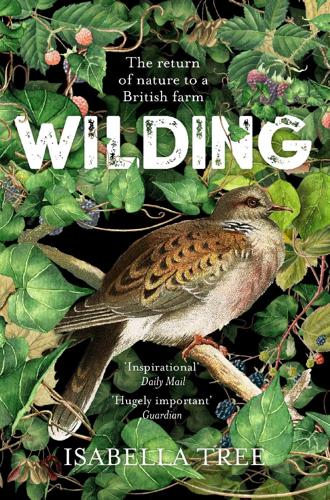
Wilding: The Return of Nature to a British Farm
by
Isabella Tree
Published 2 May 2018
Chemical fertilizers and weedkillers have eradicated common plants like fumitory and scarlet pimpernel, on whose tiny, energy-rich seeds the turtle doves feed; while the wholesale clearance of wasteland and scrub, the ploughing of wildflower meadows, and the draining and pollution of natural water courses and standing ponds has wiped out their habitat. The same agricultural revolution has taken place on the Continent, but in Europe, it seems, there is enough wild land left – and in large enough areas – to slow the decline in turtle-dove numbers. But in lowland England what tiny fragments of nature remain, whether left by accident or by design, are like oases in a desert, disconnected from natural processes – the interactions and dynamism that drive the natural world.
…
Evidence of shifting baselines was apparent on our first tractor-and-trailer tours of Knepp in the early 2000s, when we began to take mixed generational groups from NGOs like the National Farmers’ Union and the Country Landowners’ Association around the project. We were familiar with the usual reaction from our own generation, the forty-to-sixty-somethings. Children of the agricultural revolution were aghast at what we were doing. The twenty-somethings were often more responsive. For them the idea of national food security, of digging for victory, was an anxiety from a bygone age. They had grown up in a time of plenty – an era of globalization, cheap clothes and cheap food, their supermarket shelves stocked with Spanish tomatoes in winter, asparagus from Peru, lamb from New Zealand, tiger prawns from Thailand and beef from Argentina.
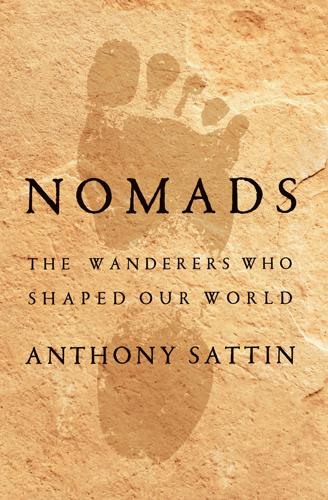
Nomads: The Wanderers Who Shaped Our World
by
Anthony Sattin
Published 25 May 2022
The societies that have been most successful – because they have survived – are nomadic, hunter-gatherer societies like the Aborigines. The reason for their success is no secret: they have survived because they ‘have lived with nature and within nature and haven’t tried to change it, haven’t tried to crush it, to rebuild it’.33 The Real Agricultural Revolution, or Why We Get Nostalgic About Nomads In 1671, fifty years after the publication of Francis Bacon’s Novum Organum, the Anglo-Irish philosopher and chemist Robert Boyle asked, ‘When we see that Timber is sawd by Wind-mills and Files cut by slight Instruments; and even Silk-stockings woven by an Engine . . . we may be tempted to ask, what handy work it is, that Mechanicall contrivances may not enable men to performe by Engines?’
…
These people would have had access to a smallholding – enough land to grow vegetables and raise chickens along with a few other animals – or else they would have roamed with herds and done their spinning, weaving and rug-making on the move, as the Bakhtiari were doing in the Zagros Mountains. Which is to say they would have lived as the heirs to Cain and Abel had lived for millennia, until the real Agricultural Revolution. ‘From the moment it appeared advantageous to any one man to have enough provisions for two,’ the Swiss philosopher and walker Jean-Jacques Rousseau explained as he distilled into a single sentence humankind’s long fall out of grace and into the problems of agriculture, ‘equality disappeared, property was introduced, work became indispensable, and vast forests became smiling fields, which man had to water with the sweat of his brow.’

Governing the Commons: The Evolution of Institutions for Collective Action
by
Elinor Ostrom
Published 29 Nov 1990
Central and West Basin Water Replenishment District. 1987. Annual Survey Re port on Ground Water Replenishment. Glendale, Calif.: Bookman, Edmmonston Engineering. Chamberlin, J. 1974. Provision of Collective Goods as a Function of Group Size. American Political Science Review 68:707-16. Chambers, J. D., and G. E. Mingay. 1966. The Agricultural Revolution, 1750 1880. New York: Schocken Books. Chambers, R. 1981. In Search of a Water Revolution: Questions for Canal Man agement in the 1980s. Water Supply and Management 5:5-18. Chapagain, D. P. 1984. Managing Public Lands as a Common Property Resource: A Village Case Study in Nepal. Ph.D. dissertation, University of Wisconsin.
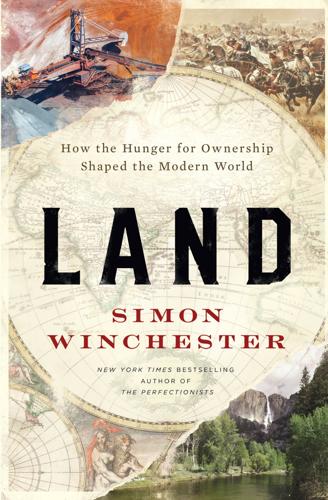
Land: How the Hunger for Ownership Shaped the Modern World
by
Simon Winchester
Published 19 Jan 2021
Through the early part of the eighteenth century, this unease showing itself was born from more than just the simple freelance acts of enclosure that so troubled the peasantry of the day: rather there was a distinct feeling of an inchoate unease, a gathering impression that the country had become awash in newfangled ideas, part of what we now know to have been the beginning of the Enlightenment. There were new and unsettling developments in farming techniques, the introduction of machinery and of four-crop rotation methods, which we in retrospect now recognize as the Agricultural Revolution. There were hints of the coming of the Industrial Revolution too, a revolution that would soon sweep like a gale through all of English society and would massively enhance the rise and role of cities, which would lure workers in vast numbers away from the countryside. The unease of the times parallels to a degree the same kind of bewilderment at the rate of change in society that so clearly afflicts twenty-first-century humankind.
…
aboriginal people of Australia, 199–200 antiquity of, 200, 239, 244 bias against, 199 controlled burning by, 240–41, 241, 243, 244–45 Cook and, 235–39 Earth as their mother, 402–3 Guugu Yimithir group, 238 Gweagal family, 237, 237 as landowners, 235 as T.O.’s (Traditional Owners), 200, 239, 244 wisdom of, 235–45, 241 Accursius, Franciscus, 215 Adams, John, 139n Adams, John Quincy, 146 Afghanistan, 49n, 71 border (Durand Line), 81 Africa anti-imperial rebellions, 366 borders and countries created and mapped, 367–68 British and European colonies in, 98–99, 131–32, 363–66, 365 Bronze Age arable farmers, 40 claims of white settlers, 369 competing claims of tribes, 368 concept of landownership and, 369 confiscation of settlers’ lands, 370, 371, 371 country names changed, 368 English as lingua franca, 366 European partitioning of land, 365–66 Europeans leave, 367 missionaries in, 364 nation-building efforts, 368 poverty in, 372 restoration of land in, 366–73, 371 rule by indigenous people, 368 shared land, concept of, 403 trope defining British missionary behavior in, 98, 326 uncultivated land in, 372 See also specific countries, places agriculture Agricultural Revolution, 174 ancient, in China, 44 animal-drawn plough, 44 Bronze Age, 40, 42–43, 46, 172 caschroms (digging sticks), 42–43, 43 demarcation of land and, 42, 45–46 enclosures and, 44, 46, 173 history of, 40–42 Iron Age, iron plough, 43–44 plough’s moldboard, 44 strip lynchets, 45, 45 tools, 42–43 Akhmatova, Anna, 285 Albania-Montenegro border, 75 Aldridge, George, 245 Alexander I, Tsar, 50, 56, 58–59 Algic or Algonquian languages, 16, 16n Algonquin people, 136n Alsop, Joseph, 290 American chestnut trees, 12 American Geographical Society, 72 American Public Land Survey System, 152 American Revolution, 24, 136 Amherst, Jeffery, 137, 137n Anak Krakatau island, 104–5, 105n Andamanese Islanders, 243–44 Andersonstown, Northern Ireland, 265, 266 Andorra-France border, 75–76 Angle Inlet, Minn., 91–92 animals, endangered species on Anak Krakatau, 105 Bolson tortoise, 204 Korean DMZ and, 225–27, 226 Plains bison, 204–6, 206 in Richmond, Bushy, and Greenwich Parks, London, 249 wilding, abandoned farms and, 232–34, 232n wilding and Knepp estate, England, 230–32, 231 wilding and Oostvaardersplassen, Netherlands, 228–29, 234 Anne, Queen of England, 34 Apache people, 150n, 203, 261 Appalachians, 11, 135, 136, 138, 152 Aramaki, Akira, 301–8, 311–16, 318–19 as birthright citizen (Nisei), land buying and, 306–7 family and heritage, 303–5, 313 incarceration and release from Minidoka camp, 301–3 land of, Bellevue, Wash., 302, 303, 306–7, 315–16, 318, 318n obituary of, 319 Aramaki, Hanako Tanako, 313, 319 Aramaki, Hikotara, 303–6, 311 Aramaki, Towa Tasaki, 306, 311, 313 Arapaho people, 149, 261 Argentina’s borders, 75, 77 Aristotle, 53 Armitage, Simon, 225 Ascent of F6, The (Auden), 265 Ashanti people, 403 Asia ancient agriculture, 40, 44 boundaries and, 46 ocean expansion and land loss in, 400 Yellow River (Huang He), 40 Yellow River Valley, 46 Atchison, Topeka and Santa Fe railroad, 142, 151, 152 Atlantic (Winchester), 131 Atlantic Ocean, 10, 11, 99, 367n crossing, 130, 191 rising waters of, 398, 401 Auden, W.
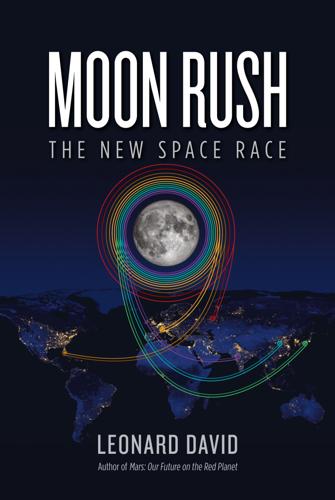
Moon Rush: The New Space Race
by
Leonard David
Published 6 May 2019
Sowers testified before the House Committee on Science, Space, and Technology in September 2017, outlining his perceptions of private-sector exploration of the Moon. Space resources are plentiful, he asserted, and utilizing them will free human progress from the resource constraints of Earth. In recorded human history, there have been two major economic revolutions, he recounted: the agricultural revolution of 10,000 years ago, which gave birth to human civilization, and the industrial revolution of 300 years ago, which gave rise to the tremendous increase in human well-being and prosperity we enjoy today. “Space resources will be the third major economic revolution and will usher in an era of unprecedented prosperity and flourishing,” Sowers concluded.

Escape From Rome: The Failure of Empire and the Road to Prosperity
by
Walter Scheidel
Published 14 Oct 2019
And even if the strength of these demographic and resource constraints remains contested, there can be no doubt that—in von Glahn’s words—the “lack of significant innovation in productive technologies” placed a growing burden on the agricultural base. At the same time, England benefited hugely from an agricultural revolution that supported both ongoing population growth and concurrent urbanization.206 In all of this, details matter little. A simple counterfactual shows why. Even if, on that occasion, imperial destabilization and breakdown could somehow have been avoided or, perhaps more plausibly, if an equivalent empire could swiftly have been put back together after such a breakdown and resumed business as usual—featuring ostensibly benevolent and light-handed central policies such as low taxes, agrarianism, basic welfare provisions, and the preservation of peace—such outcomes were not likely to precipitate transformative innovation.207 It is telling that “despite China’s integration into global trade networks, movement toward an industrial revolution was almost wholly absent before the twentieth century.”
…
For similar statistics, see Wrigley 2016: 45–50, 67–74, who emphasizes that English urban growth in the seventeenth and eighteenth centuries hugely exceeded the continental rates: the urban population in England grew by more than 700 percent compared to 80 percent in continental Western Europe, and the urban share quadrupled in England while rising by one-third in Western Europe overall, with much of the latter growth due to the former’s: see chapter 10 in this volume. Cf. Palma 2016 for the observation that international trade boosted real wages in some other Atlantic economies of Europe as well. Agricultural revolution: Overton 1996; Wrigley 2016: 51–60, 65, 67–74. 65. Allen 2009b: 129 (quote); Hoffman 2015: 211–12. See also chapter 10 in this volume. 66. Allen 2009b: 111, 162–63. Also see, e.g., Pomeranz 2000: 61; Cuenca Esteban 2004: 55. 67. Goldstone 2002: 363–64; G. Clark 2007: 242; Wrigley 2016: 34, table 3.2.
…
Ostrowski, Donald. 1998. Muscovy and the Mongols: Cross-cultural influences on the steppe frontier, 1304–1589. Cambridge: Cambridge University Press. O’Sullivan, Shaun. 2006. “Coptic conversion and the Islamization of Egypt.” Mamluk Studies Review 10, no. 2: 65–80. Overton, Mark. 1996. Agricultural revolution in England: The transformation of the agrarian economy, 1500–1800. Cambridge: Cambridge University Press. Padilla Peralta, Dan-el. 2014. “Divine institutions: Religious practice, economic development, and social transformation in mid-Republican Rome.” PhD diss., Stanford University. Pagden, Anthony. 2001.
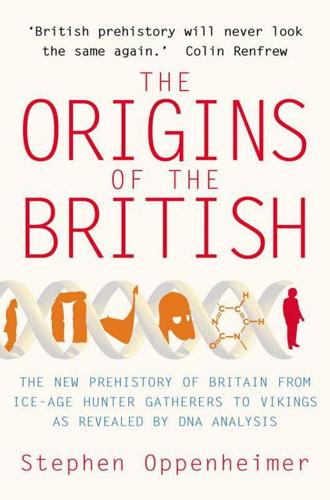
The Origins of the British
by
Stephen Oppenheimer
Published 1 Jul 2007
Immediately after the Younger Dryas, sea levels rose at a dramatic rate, which eventually slowed until another warm-up hit and produced the highest post-LGM temperatures, causing the final over-topping ‘flood’ of the Black Sea around 7,500 years ago.74 Now, let us see what our ancestors were doing in this post-glacial springtime, also known as the Mesolithic. 4 ULTIMATE HUNTERS AND GATHERERS: THE MESOLITHIC The cultural period following the Younger Dryas Event, the Mesolithic, saw the final and most sophisticated flourishing of the hunter-gatherer lifestyle in Europe. It was the golden age of coastal hunter-gatherers. The Mesolithic was a time of rapid innovation in stone tools and increasing use of microliths – very small, multipurpose stone tools which had already been in use in Africa and India for 20,000 years – and preceded the Neolithic agricultural revolution. Quite a bit is known about how Mesolithic hunter-gatherers lived, and one major feature in the evolution of their lifestyle in north-west Europe was a reduction in big game hunting and an increasing reliance on the beach and sea. In making this change, our Mesolithic ancestors resembled their African forebears, who were the first humans to see the great advantages of seafood,1 but the reason for the change in Europe was the encroachment of the forest, not the desert.
…
Large parts of the world, such as South-east Asia, still practise some form of labour-intensive agriculture, many elements of which would be familiar to their Neolithic ancestors, apart from the change to rather more effective metal implements such as iron ploughshares and iron hand-held rice-cropping knives. The Neolithic is therefore rightly seen as a culturally more dramatic threshold than our more recent Agricultural Revolution (immediately preceding the Industrial Revolution), although the size of its effect on population growth in Europe was controversially less than previously thought.1 The Agricultural Age, as the Neolithic is sometimes called, is certainly the most researched period of European prehistory. The Neolithic Revolution in the western part of Eurasia started at least 10,000 years ago, but did not impinge on Britain and Ireland until 6,500–5,500 years ago.2 Not only were the British Isles at the very end of the long trail of agricultural influence that began in the Near East, but they seem to have received their Neolithic inputs, agricultural and otherwise, via two completely different routes: north and south through and round Europe from the Balkans and the Near East.
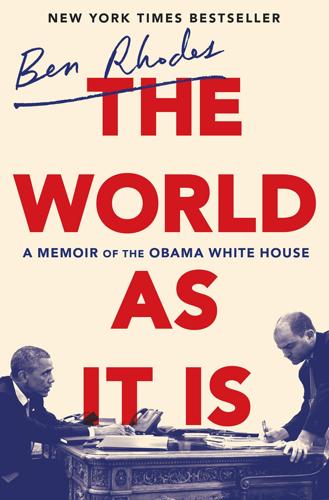
The World as It Is: A Memoir of the Obama White House
by
Ben Rhodes
Published 4 Jun 2018
“It’s interesting,” he said, “that individual human beings didn’t benefit much from the agricultural revolution. Life was actually better for hunters and gatherers.” Some of the people in the helicopter looked a little confused, but I knew that he’d rewritten the speech to pose questions about whether the march of technology would inexorably lead to the destruction of humankind. His tangent made a certain kind of sense. “Why?” I asked, knowing I had to keep this conversation going. “Because of feudalism?” “No,” he said. “That was part of it, but it was also because for most of the early agricultural revolution, people focused on grain. Grain is not as nutritious and balanced as eating a diet with proteins, fruits, and nuts.

This Sceptred Isle
by
Christopher Lee
Published 19 Jan 2012
This period is called Neolithic which can be translated from two Greek words neos (new) and lithos (stone) – thus Neolithic is New Stone Age. Because of what was going on in settled farming, it is sometimes called the Agricultural Age and is seen as a ‘culturally more dramatic threshold than our more recent Agricultural Revolution’.3 Yet, if we look at the New Stone Age or Agricultural Age in the British Isles, we would probably date it c.5,500 BC–c.2,500 BC. But the same age in the region where Europe meets Asia started not c.5,000 BC but c.10,000 BC. The three larger reasons for this late start were the distances from the origins of change in the Middle East; climate; and resettlement that came from two distinct directions.
…
One migration came along the southern European-Balkan corridors then up the western coast of Europe. The second claw in the migratory pincer was from the near neighbours of northwestern Europe. Agriculture followed by settled farmers (as opposed to herdsmen who would follow the grazing) is in evidence in East Anglia as early as 6,300 years ago. It took hundreds of years for the Agricultural Revolution to spread throughout the islands from the south, the east and the west as far north as the Orkneys.4 What is not so clear is the answer to the threefold question of the consequence of the introduction of the new society: Were the influences of the new cultures spread by the migrants from Continental Europe or by the indigenous population?
…
James ref 1 Act of Reformation ref 1 Act of Uniformity ref 1 Act of Union (Ireland) ref 1, ref 2, ref 3, ref 4 Act of Union (Scotland) ref 1, ref 2, ref 3, ref 4 Acts of Supremacy ref 1, ref 2, ref 3 Adams, Sam ref 1 Addington, Henry, Viscount Sidmouth ref 1, ref 2, ref 3, ref 4, ref 5, ref 6, ref 7 Adelaide of Saxe-Meiningen ref 1 Adrian I, Pope ref 1 Adrian IV, Pope ref 1 Ælfthryth ref 1 Ælla, King ref 1 Ælle, King ref 1 Æthelbald, King ref 1 Æthelberht, King ref 1, ref 2 Æthelflaed ref 1 Æthelfrid ref 1 Æthelred of Mercia ref 1, ref 2 Æthelred of Wessex ref 1 Æthelred the Unready ref 1, ref 2, ref 3 Æthelwald ref 1 Afghan Wars ref 1, ref 2, ref 3 passim, ref 4, ref 5, ref 6 Africa ref 1, ref 2, ref 3, ref 4, ref 5, ref 6 passim, ref 7, ref 8 Agincourt, Battle of ref 1, ref 2 Agricultural Revolution ref 1 Ailwin, Henry fitz ref 1 Aiscough, William ref 1 Aix-la-Chapelle, Treaty of ref 1 Albert, Prince ref 1, ref 2, ref 3, ref 4, ref 5, ref 6 Alexander I of Russia ref 1, ref 2 Alexander I of Scotland ref 1 Alexander II of Scotland ref 1, ref 2 Alexander III of Scotland ref 1 Alexander III, Pope ref 1 Alexandra of Denmark ref 1 Alfred the Great ref 1, ref 2, ref 3 Alfred the Innocent ref 1, ref 2 Allenby, Gen.

Growth: From Microorganisms to Megacities
by
Vaclav Smil
Published 23 Sep 2019
The adoption and diffusion of settled farming during the Neolithic era—starting 11,000–12,000 years ago in the Middle East and eventually spreading to all continents with the exception of Australia—was credited with the first notable population increase. This is ascribed to an expanded and more reliable food supply. This Neolithic demographic transition (also called, inaccurately because it was a long process, Neolithic or agricultural revolution) was seen as the first notable period of population growth and its extent has been documented by a variety of linguistic, anthropological, and archaeological evidence (Barker 2009). One of the convincing archaeological studies based on cemetery sequences has shown an abrupt increase in the proportion of juvenile skeletons as an indicator of an increase in the total fertility rate, a shift seen as one of the fundamental structural processes of human history (Bocquet-Appel and Bar-Yosef 2008; Bocquet-Appel 2011).
…
Szeged, Hungary: University of Szeged. Barfield, T. J. 2001. The shadow empires: Imperial state formation along the Chinese-Nomad frontier. In S. E. Alcock et al., eds., Empires: Perspectives from Archaeology and History, Cambridge: Cambridge University Press, pp. 10–41. Barker, G. 2009. The Agricultural Revolution in Prehistory: Why Did Foragers Become Farmers? Oxford: Oxford University Press. Barkey, K. 2008. Empire of Difference: The Ottomans in Comparative Perspective. Cambridge: Cambridge University Press. Barnosky, A. D., et al. 2011. Has the Earth’s sixth mass extinction already arrived? Nature 471:51–57.
…
Growth and survival of New Zealand sea lions, Phocarctos hookeri: Birth to 3 months. Polar Biology 30:459–469. Ching, F. D. K., et al. 2011. A Global History of Architecture. Hoboken, NJ: John Wiley & Sons. Chongqing Municipal Government. 2017. Comprehensive market situation. http://en.cq.gov.cn/. Chorley, G. P. H. 1981. The agricultural revolution in Northern Europe, 1750–1880: Nitrogen, legumes, and crop productivity. Economic History 34:71–93. Chu, W., et al. 2016. A survey analysis of energy use and conservation opportunities in Chinese households. In B. Su and E. Thomson, eds., China’s Energy Efficiency and Conservation. Berlin: Springer, pp. 5–22.
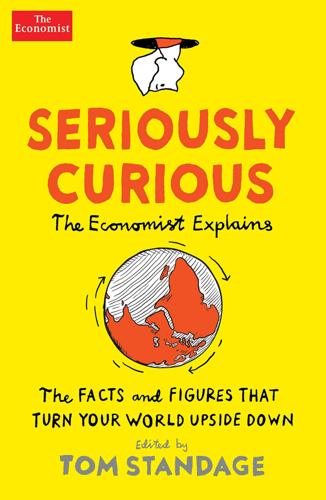
Seriously Curious: The Facts and Figures That Turn Our World Upside Down
by
Tom Standage
Published 27 Nov 2018
That may be because Eurasia was richer in large mammals that could be domesticated. Horses and oxen greatly improved farm productivity – but livestock were mainly owned by the rich (who could also rent them out). In traditional African societies, livestock remain an important store of value. The agricultural revolution was good for humanity, because it supported a larger population and paved the way for modern civilisation. But it was awful for egalitarians. Nice digs Gini coefficient of house sizes at archaeological sites 1=perfect inequality, 0=perfect equality Source: “Greater post-Neolithic wealth disparities in Eurasia than in North America and Mesoamerica” by Timothy A.
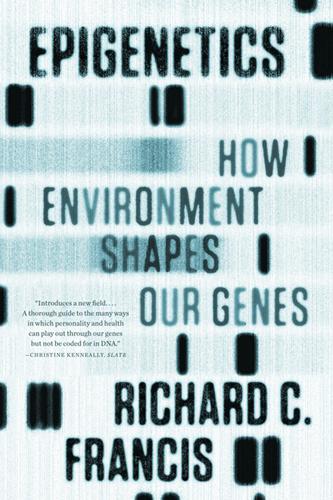
Epigenetics: How Environment Shapes Our Genes
by
Richard C. Francis
Published 14 May 2012
These individuals could thrive during lean times because of their “thrifty genes,” but they become fat and diabetic in an environment where food is plentiful. The thrifty-genes hypothesis was criticized on a number of grounds. Most damningly, there is no evidence that humans experienced periodic famine until the agricultural revolution 9,000 years ago.2 Neel himself soon abandoned the idea, but it survives to this day in mutated forms.3 The thrifty-genes hypothesis reflects a genocentric view of the obesity epidemic, a view that is also manifest in the search for obesity genes.4 There is no lack of candidate obesity genes, but none of the candidate genes, alone or combined, go very far toward explaining who gets fat and why.5 While the gene hunters were busy at their labors, other researchers approached the obesity issue from a different angle, based on the fact that Americans and many Europeans were getting fatter at an accelerating rate.
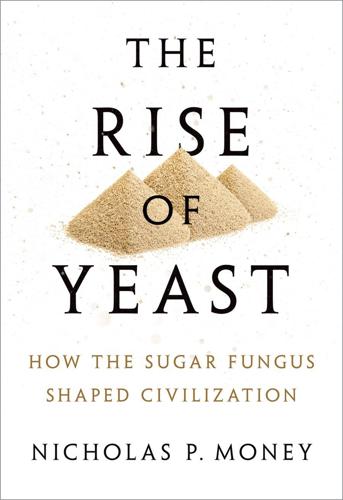
The Rise of Yeast: How the Sugar Fungus Shaped Civilisation
by
Nicholas P. Money
Published 22 Feb 2018
The rate of grassland loss in America—percentage not acreage—is comparable to the deforestation in Brazil, Malaysia, and Indonesia.4 Financing for the construction of bioethanol plants relies upon generous government subsidies. Corn growers, agribusiness lobbyists, and senators representing Iowa—the biggest producer—and neighboring states claim that this is an essential investment to meet our energy needs. We are witnessing an agricultural revolution and Saccharomyces is the catalyst. 106 t he l i t t l e y e ast on t he pr a ir ie: biot echnology Corn ethanol is a controversial fuel, marketed as a clean, environmentally friendly solution to our energy needs by the biofuel industry, and vilified as a waste of valuable resources by its critics.

2312
by
Kim Stanley Robinson
Published 22 May 2012
It happens in all class systems, meaning all cultures in recorded history, since the first agrarian and urban civilizations.” “They’ve all been class systems?” “There might have been classless societies before the Neolithic agricultural revolution, but the record makes our understanding of those cultures very speculative. All we can say for sure is that in the post–ice age agricultural revolution, which was one of those more general revolutions that took perhaps a thousand years, a division into classes was institutionalized as a state power apparatus. All over the world, and independent of others, there emerged a four-level division into priests, warriors, artisans, and farmers.
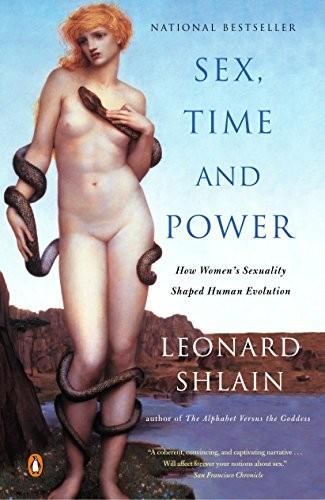
Sex, Time, and Power: How Women's Sexuality Shaped Human Evolution
by
Leonard Shlain
Published 2 Aug 2004
Are these male behaviors all due to cultural indoctrination, as many believe, or are they hard-wired into the male nervous system? If the latter, to what evolutionary factor do we owe this extraordinary bloodthirstiness, and why is it so skewed toward the male of the human species? ————— Prior to the agricultural revolution ten thousand years ago, hunting consumed the majority of a male’s “working” life. To understand better why Homo sapiens took so eagerly to his life’s chief occupation, we must examine predatory behaviors in earlier hominid species. That the immediate precursors of modern humans ate meat is not in doubt.
…
But despite the sapients’ having acquired a three-pint brain, the pace of innovation advanced with the speed of spreading molasses. And then, rather suddenly, sapients crossed some sort of an invisible barrier forty thousand years ago. Art, tombs, and artifacts began to appear in profusion. The pace of novelty accelerated with the agricultural revolution ten thousand years ago and went into hyperdrive in the last century. At present, it has switched to a breathtaking perpendicular ascent. The amazing shift in the celerity with which humans embraced innovation has necessitated converting the 2.5-million-year-old curve from a geometric representation to a logarithmic scale for the last 1.5 percent of its length.
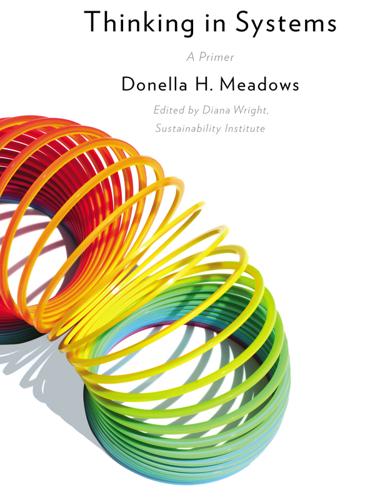
Thinking in Systems: A Primer
by
Meadows. Donella
and
Diana Wright
Published 3 Dec 2008
Here are some other examples of simple organizing rules that have led to self-organizing systems of great complexity: • All of life, from viruses to redwood trees, from amoebas to elephants, is based on the basic organizing rules encapsulated in the chemistry of DNA, RNA, and protein molecules. • The agricultural revolution and all that followed started with the simple, shocking ideas that people could stay settled in one place, own land, select and cultivate crops. • “God created the universe with the earth at its center, the land with the castle at its center, and humanity with the Church at its center”—the organizing principle for the elaborate social and physical structures of Europe in the Middle Ages
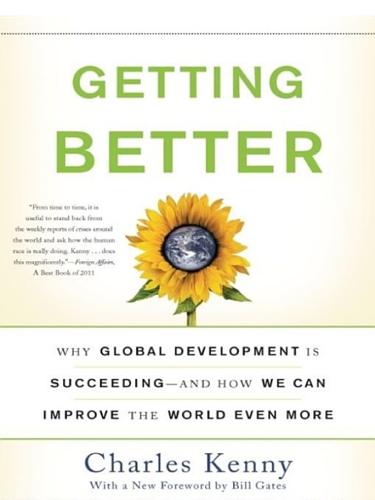
Getting Better: Why Global Development Is Succeeding--And How We Can Improve the World Even More
by
Charles Kenny
Published 31 Jan 2011
There are large parts of the world where rights remain severely and often violently curtailed (not least China), but the global trend is away from autocracy and toward respect for civil and political rights. And once again there was faster improvement in previously more autocratic regimes.16 VIOLENCE Over the very long term, the world is a considerably more peaceful place than it was before the agricultural revolution, when somewhere between 5 and 30 percent of deaths were probably caused by violence. And the world as a whole today is also comparatively crime-free compared to Britain in the Middle Ages, when homicide rates were around 23 per 100,000. The global average is one-third that level today.17 Still, evidence from a global sample of countries suggests that the homicide rate increased from 5 to 7 per 100,000 people per year between the late 1970s and the early 1990s.
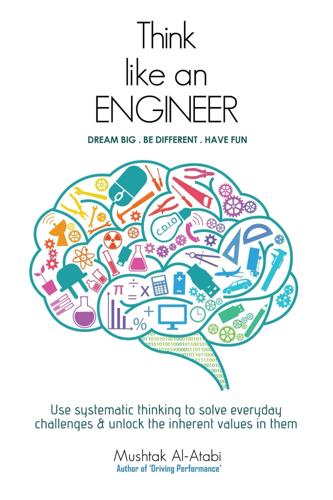
Think Like an Engineer: Use Systematic Thinking to Solve Everyday Challenges & Unlock the Inherent Values in Them
by
Mushtak Al-Atabi
Published 26 Aug 2014
Putting fire under control (800,000 BC) Controlling fire was a great technological feat. It gave humans access to energy when it’s most needed, i.e., for warmth and cooking food; which in turn enabled humans to extract more calories from the food they eat, hence improving their survival chances. 2. Agricultural Revolution (8000 BC) Unfolded in Mesopotamia, modern day Iraq, mastering agriculture was a real technological triumph. It was the result of putting huge amounts of knowledge and observation into a practical use. Agriculture permitted humans to get more out of the land they lived on and aided the formation of the first cities.

Progress: Ten Reasons to Look Forward to the Future
by
Johan Norberg
Published 31 Aug 2016
There were no targeted drugs or transplants. Ageing meant losing one’s mobility and eyesight. In prehistoric times, the average hunter-gatherer is estimated to have had a life expectancy of around twenty to thirty years depending on local conditions.6 Despite an often more stable supply of food, the agricultural revolution did not improve this much, and according to some accounts reduced it, since larger, settled groups were more exposed to infectious disease and problems related to sanitation. In classical civilizations such as Ancient Greece and the Roman Empire, life expectancy has been estimated at around eighteen to twenty-five years.
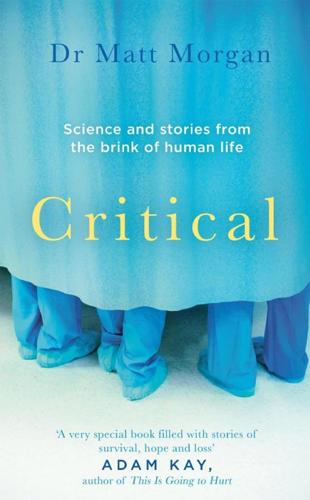
Critical: Science and Stories From the Brink of Human Life
by
Matt Morgan
Published 29 May 2019
We not only live side by side with millions of other life forms, but embrace an ecosystem of microscopic life living on and under our skin. For the vast majority of this time, it was essential to combat the daily barrage of infections from parasites, worms, bacteria and viruses. Following the first agricultural revolution 10,000 years ago, life changed for Homo sapiens. No longer nomadic, we lived in settled, cleaner communities. We ate more grain and fewer infected animal parts. This ‘progress’ has continued to the point where today our homes are relative sanctuaries of sterility in which we interact with animals far less, and wash our hands, our clothes and each other multiple times per day with microbe-killing substances.
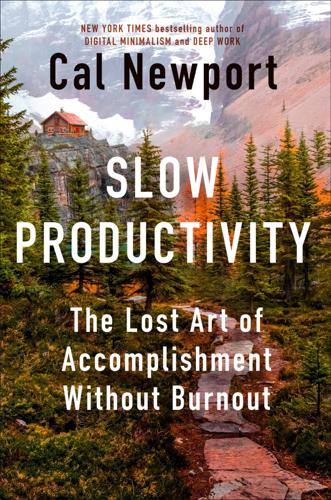
Slow Productivity: The Lost Art of Accomplishment Without Burnout
by
Cal Newport
Published 5 Mar 2024
In the seventeenth century, for example, it was exactly this type of metric-driven experimentation that led to the Norfolk four-course system of planting, which eliminated the need to leave fields fallow. This in turn made many farmers suddenly much more productive, helping to spur the British agricultural revolution. As the Industrial Revolution began to emanate outward from Britain in the eighteenth century, early capitalists adapted similar notions of productivity from farm fields to their mills and factories. As with growing crops, the key idea was to measure the amount of output produced for a given amount of input and then experiment with different processes for improving this value.
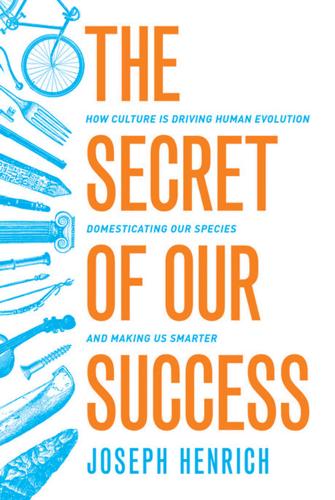
The Secret of Our Success: How Culture Is Driving Human Evolution, Domesticating Our Species, and Making Us Smarter
by
Joseph Henrich
Published 27 Oct 2015
However, sometimes cultural evolution can sap the strength of selection, as we saw for populations who rapidly developed cheese-and yogurt-making technology. One concern with the above examples is that all stem from the emergence of food production—from agriculture and animal domestication. Perhaps this major revolution in human history is a unique event from which we cannot draw general conclusions? To the contrary, my view is that the agricultural revolution just happens to be the best-timed revolution in order for us to detect its causes and effects in our genome. The industrial revolution is too recent, and the revolutions that preceded food production are much older and thus harder to study. Nevertheless, there’s every reason to suspect that there was a cooking-and-fire revolution, a projectile-weapons revolution, and a spoken-language revolution, among many others.
…
Nevertheless, there’s every reason to suspect that there was a cooking-and-fire revolution, a projectile-weapons revolution, and a spoken-language revolution, among many others. And as you will see in later chapters, technologically driven revolutions are probably underpinned by revolutions in forms of social organization or institutions. The agricultural revolution is just the one in the temporal sweet spot for today’s science. To see something of this, consider that chimpanzees have two copies of the AMY1 gene, but humans have, on average, six copies. The gene codes for a protein—amylase—found in saliva that helps break down starch. The extra copies mean that humans, on average, end up having six to eight times more amylase in their saliva than chimpanzees.

Owning the Earth: The Transforming History of Land Ownership
by
Andro Linklater
Published 12 Nov 2013
More recently the growth of representative government and the rule of law have been picked out as vital in guaranteeing social stability and encouraging investment. But in Poland, sixteenth-century landowners elected the members of the Sejm, or parliament, while in France the law guaranteed peasants a security of tenure that was virtually unbreakable. Yet neither country experienced an agricultural revolution in the seventeenth century. Today, economists argue for the influence of trade and of urban merchants from London who bought land as vital in fostering a businesslike outlook. They cite the nineteenth-century German economist Heinrich von Thünen, who identified proximity to cities, both as markets and suppliers of capital for investment, as the crucial factor in transforming farmers from feudal to capitalist producers.
…
When persistent farmers finally evolved a design tough enough for the job, they discovered that Tull had been right: sowing the seed in rows, rather than scattering them broadcast, and plowing the weeds in between, increased wheat yields by almost 25 percent, or four to five hushels per acre. Tull’s invention remains famous as the first of a succession of eighteenth-century innovations in crop and livestock production that were sometimes dubbed the “Agricultural Revolution.” In reality, many supposed novelties, such as the selective breeding of livestock, four-year crop rotation, and the addition of lime or marl to increase wheat yields, had already been introduced in the sixteenth century. Mechanical developments like the horse-powered threshing machine that flailed and winnowed the ear from the wheat, suffered the same long development gap as the drill, with the first patent being issued in 1756, but no widespread use until the early nineteenth century.

Architects of Intelligence
by
Martin Ford
Published 16 Nov 2018
That’s an important aspect that governments have a strong, clear role to play in. MARTIN FORD: Do you think someday we may need a universal basic income? JEFF DEAN: I don’t know. It’s very hard to predict because I think any time we’ve gone through technological change, that has happened; it’s not like this is a new thing. The Industrial Revolution, the Agricultural Revolution, all these things have caused imbalance to society as a whole. What people do in terms of their daily jobs has shifted tremendously. I think this is going to be similar, in that entirely new kinds of things will be created that people will do, and it’s somewhat hard to predict what those things will be.
…
MARTIN FORD: Agreed, but even so that’s a big disruption coming quite soon in one industry with a lot of drivers losing their jobs. Do you think a universal basic income is a possible solution to this job loss? DAPHNE KOLLER: It is just too early to make that decision. If you look back at some of the previous significant revolutions in history: The Agricultural Revolution, the Industrial Revolution, there were all the same predictions of massive workforce disruption and huge numbers of people being out of jobs. The world changed and those people found other jobs. It is too early to say that this one is going to be completely different to the others, because every disruption is surprising.

The Ministry for the Future: A Novel
by
Kim Stanley Robinson
Published 5 Oct 2020
The calm before the storm. But there is nothing like consensus here. Of course attempts are always made to divide the past into periods. This is always an act of imagination, which fixes on matters geological (ice ages and extinction events, etc.), technological (the stone age, the bronze age, the agricultural revolution, the industrial revolution), dynastic (the imperial sequences in China and India, the various rulers in Europe and elsewhere), hegemonic (the Roman empire, the Arab expansion, European colonialism, the post-colonial, the neo-colonial), economic (feudalism, capitalism), ideational (the Renaissance, the Enlightenment, Modernism), and so on.
…
China’s delegation is happy to speak for A Man Plants a Forest, Eco-Civilization, Greening China’s Desert, Horqin Desert Reforestation, Karamay Ecological District, Kbuqi Desert Greening the Silk Road, Loess Plateau Watershed Restoration, Transforming Deserts to Cropland, World’s Largest Man-made Forest, and Zhejiang Green Rural Revival Program. From the Congo we are Bonobo Conservation, Participatory Mapping, and Virunga National Park. From Costa Rica, we are the Orange Peel Experiment, Punta Mona, and Vida Verde Water Retention. I am here to proudly speak for Cuba’s Sustainable Agriculture Revolution, on its eighty-fifth birthday. We are from Denmark’s Vitsohus Permakultur. I have been sent to you by Ecuador’s Cloudforest Agroforestry. I from Egypt’s Creating a Forest in the Desert. From England we represent Agroforestry Research Trust, the Eden Project, Knepp Estate Rewilding, Rewilding Britain, and River Restoration.

Power and Progress: Our Thousand-Year Struggle Over Technology and Prosperity
by
Daron Acemoglu
and
Simon Johnson
Published 15 May 2023
Weapons of Math Destruction: How Big Data Increases Inequality and Threatens Democracy. New York: Penguin. O’Neil, Cathy. 2022. The Shame Machine: Who Profits in the New Age of Humiliation. New York: Crown. Orwell, George. 1949. Nineteen Eighty-Four. London: Secker and Warburg. Overton, Mark. 1996. Agricultural Revolution in England: The Transformation of the Agrarian Economy, 1500‒1850. Cambridge: Cambridge University Press. Pan, Alexander, Kush Bhatia, and Jacob Steinhardt. 2022. “The Effects of Reward Misspecification: Mapping and Mitigating Misaligned Models.” arxiv.org. https://arxiv.org/abs/2201.03544.
…
With revealing, relevant stories from throughout economic history and sensible ideas for systemic reform, this is an essential guide for this crucial battle in the ‘one-thousand-year struggle’ between the powerful and everyone else.” —Kurt Andersen, author of Evil Geniuses “One powerful thread runs through this breathtaking tour of the history and future of technology, from the Neolithic agricultural revolution to the ascent of artificial intelligence: Technology is not destiny, nothing is pre-ordained. Humans, despite their imperfect institutions and often-contradictory impulses, remain in the driver’s seat. It is still our job to determine whether the vehicles we build are heading toward justice or down the cliff.
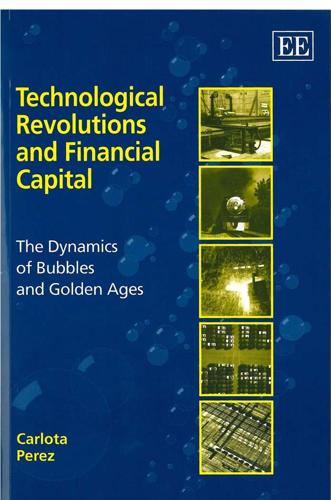
Technological Revolutions and Financial Capital: The Dynamics of Bubbles and Golden Ages
by
Carlota Pérez
Published 1 Jan 2002
These qualitative aspects of growth are rarely included in the usual interpretations of ‘long waves’. Kuznets (1940) pp. 261–2. 28 Technological Revolutions and Financial Capital tics followed the first breakthroughs in synthetic materials, wired houses could take on dozens of successive new electrical appliances, the agricultural revolution could combine the use of oil-driven machinery of increasing variety and specialization with any number of petrochemical pesticides and fertilizers. The same has occurred this time with computer games, with software packages, with the various generations of personal computers and then with ‘dot com’ services in the Internet.
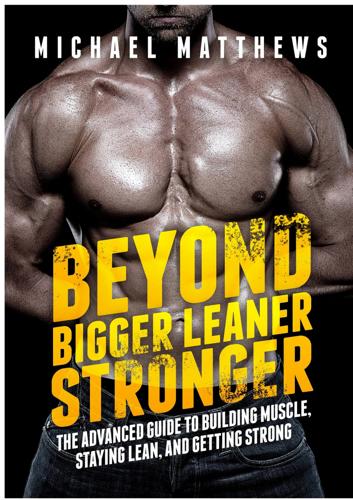
Beyond Bigger Leaner Stronger: The Advanced Guide to Building Muscle, Staying Lean, and Getting Strong
by
Michael Matthews
Published 15 Jun 2014
The new question, then, becomes, Even if our ancient ancestors weren’t “Paleo,” is the diet worthwhile nonetheless? MAKING A CASE FOR THE PALEO DIET Here’s the premise of the Paleo diet, as stated by its founder, Dr. Loren Cordain: “With readily available modern foods, The Paleo diet mimics the types of foods every single person on the planet ate prior to the Agricultural Revolution (a mere 333 generations ago). These foods (fresh fruits, vegetables, meats, and seafood) are high in the beneficial nutrients (soluble fiber, antioxidant vitamins, phytochemicals, omega-3 and monounsaturated fats, and low-glycemic carbohydrates) that promote good health and are low in the foods and nutrients (refined sugars and grains, trans fats, salt, high-glycemic carbohydrates, and processed foods) that frequently may cause weight gain, cardiovascular disease, diabetes, and numerous other health problems.

Thinking Machines: The Inside Story of Artificial Intelligence and Our Race to Build the Future
by
Luke Dormehl
Published 10 Aug 2016
During the eleventh century, the brilliant Persian polymath Abu Rayhan Biruni observed how foresters could create better trees by leaving branches they perceived to be excellent, while cutting away the rest. This notion was turned into a science by a man named Robert Bakewell during the British Agricultural Revolution of the eighteenth century. Bakewell discovered that he could engineer extra-woolly sheep and beefier cattle by controlling their breeding. As more and more farmers followed Bakewell’s lead, farm animals increased in both size and quality. In 1700, the average bull sold for slaughter weighed 168 kg.

Everything Under the Sun: Toward a Brighter Future on a Small Blue Planet
by
Ian Hanington
Published 13 May 2012
Our ecological footprint (the amount of land and water required to fulfill our needs) was slight because when you have to carry everything you own, you tend to lug only the bare necessities. People understood and were grateful for nature’s abundance and generosity. About ten thousand years ago, the agricultural revolution signalled a monumental shift in human existence. By deliberately planting and growing food, we could settle in one place and establish roots. Civilizations rose and fell relatively rapidly in evolutionary time, but until the past century, most people lived in rural communities and were involved in growing food.
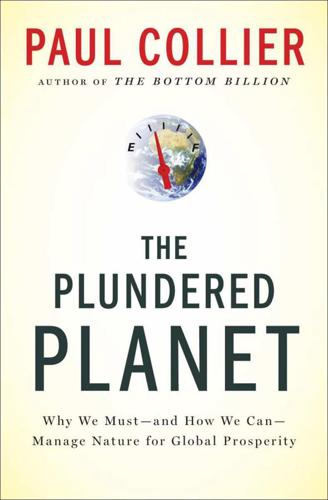
The Plundered Planet: Why We Must--And How We Can--Manage Nature for Global Prosperity
by
Paul Collier
Published 10 May 2010
Although current research qualifies this conventional account, reducing the estimates of productivity gains to the 10–20 percent range, to ignore commercial agriculture as a force for rural development and enhanced food supply is surely ideological. Large organizations can internalize those effects that in smallholder agriculture are localized externalities, and thus not adequately absorbed. In the European agricultural revolution innovations indeed occurred on small farms as well as on large ones, and today many small farmers, especially those that are better off and better-educated, are keen to innovate. Nonetheless, agricultural innovation is highly sensitive to local conditions, especially in Africa, where soils are complex and variable.

Radical Cities: Across Latin America in Search of a New Architecture
by
Justin McGuirk
Published 15 Feb 2014
They backed his idea enthusiastically, and pulled all the strings they could to get the UN to fund it. In 1968, everything was ready to go. However, that October, Belaúnde was overthrown by a military coup. The junta now in power nearly scrapped PREVI. More populist than Belaúnde, the generals favoured agricultural revolution and the expropriation of land to give to the poor. To the junta, PREVI looked like just another housing project – but because the UN was backing it, the experiment was allowed to proceed. In 1969, the international architects were flown in to Lima to study the barriadas and prepare their competition entries.
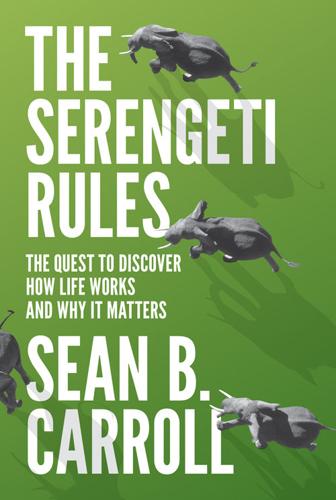
The Serengeti Rules: The Quest to Discover How Life Works and Why It Matters
by
Sean B. Carroll
Published 16 Feb 2016
β-galactosidase, 60–63, 61f, 64 3-hydroxy-3-methylglutaryl coenzyme A reductase: cholesterol synthesis and, 78–81; discovery of statins and, 81–87; search for fungal inhibitor of, 82–84 Abelson leukemia virus, 98 abl gene, 97, 98–100, 99f, 102–104 acidity, 23–24, 25 ACTH (adrenocorticotropic hormone), 17 acute myeloid leukemia, 92–93 acute promyelocytic leukemia, 95 Addis, James, 171–177 adrenal glands, 19–21, 27 adrenalin, 17, 19–21 adrenocorticotropic hormone, 17 Africa View (Huxley), 132 Agricultural Revolution, 4–5 AIDS, 4 algae: blooms as ecological imbalance, 155–158, 157f, 163, 165; green world hypothesis and, 116, 118f, 119; lake productivity and, 171–172, 173f; minnows, bass and, 123–125 Alligator Harbor Marine Laboratory, 114–115 allostery, 69–71, 70f Amchitka Island, 121–122 amino acid synthesis, 67–68 amygdala, 17 anemone, 119 Animal Ecology (Elton), 43, 46 Animal Farm (Orwell), 127 antelope, 182 ants, 125 Arctic animals, 37–39, 37f, 39f, 41 arctic foxes, 41 armadillos, 125 army ants, 125 Asia, rice production and, 158–161, 164 aspen, 180–182, 181f Aspergillus terreus, 84 atherosclerosis, 5–6, 76 Aucanquilcha, Mount, 73 Auckland, New Zealand, 120 Australopithecus afarensis, 3 Babbitt, Bruce, 177, 178f baboons, 161–162, 164, 165f bacteria: enzyme regulation and, 56–57, 60–63, 61f; growth and replication of, 54–58, 56f, 58f Bangladesh, 208 Bard, Philip, 21 barium salts, 18 barnacles, 118–119 barrens, 121, 124f bass, 123–125, 171–172, 173f Baumann, Oscar, 136 bay scallops, 162–163, 164 bcr gene, 98–100, 99f, 102 Bear Island, 32–39, 39f Beattie, Mollie, 177, 178f beavers, 181 Beschta, Robert, 181 “Better Living Through Ecology,” 203 bicarbonate ions, 23–24 Bilheimer, David, 86 Binney, George, 40 biosynthetic pathways, negative feedback and, 67–68 bipedal posture, 139 Birds of Massachusetts (Forbush), 113 Bishop, J.
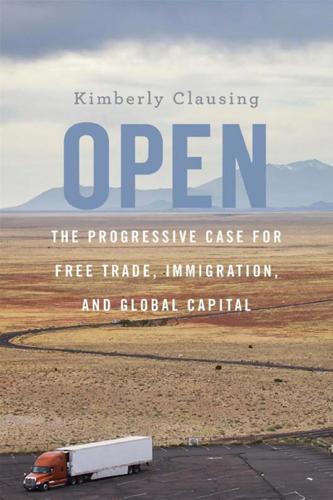
Open: The Progressive Case for Free Trade, Immigration, and Global Capital
by
Kimberly Clausing
Published 4 Mar 2019
While technological progress in the past has been disruptive, it has not caused a reduction in the total number of jobs or a higher unemployment rate. There have been many technological revolutions that have ultimately enabled higher standards of living and greater opportunities for workers, starting with the agricultural revolution that dramatically increased farm output per worker and freed labor to move to the cities, and later including revolutions in industrial processes like the assembly line. When work can be done more efficiently, that doesn’t mean that the number of jobs has to fall, though jobs will be redirected.

Do Nothing: How to Break Away From Overworking, Overdoing, and Underliving
by
Celeste Headlee
Published 10 Mar 2020
That’s how I know that human life for tens of millions of people changed with the dawn of the industrial era. It’s also how I know that at least some of that change was not positive. Many different influences led society from the Enlightenment to the industrial age. People were living longer by the late 1700s, so labor was plentiful, and the Agricultural Revolution brought a surplus of food to Britain, so many people who had been employed on farms were suddenly looking for work. What’s more, innovations in banking, trade, and transportation made it easier to do business year-round and across international borders. And yet perhaps the most direct stimulus of the industrial era occurred in Scotland at the University of Glasgow, when a mostly self-taught instrument maker named James Watt was asked to repair a Newcomen steam engine.
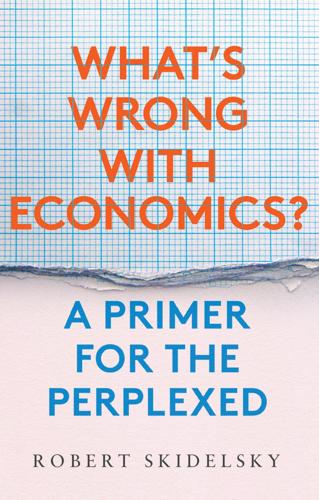
What's Wrong With Economics: A Primer for the Perplexed
by
Robert Skidelsky
Published 3 Mar 2020
The neoclassical growth story tells us that a universal precondition for economic development is a secure set of property rights, so that owners of land and business can reap private rewards from socially beneficial improvements and innovations. On this theory, enclosure of the ‘commons’ in eighteenth-century England led, via the agricultural revolution, to the Industrial Revolution. Applying this ‘general theory’ in the 1990s, the first generation of post-communist reformers in Russia and eastern Europe auctioned off most state property at a stroke. The results varied with the histories and resource-profiles of the countries concerned, and the amount of foreign help they received.

Complete Guide to Fasting: Heal Your Body Through Intermittent, Alternate-Day, and Extended Fasting
by
Jimmy Moore
and
Jason Fung
Published 18 Oct 2016
In the pre-agricultural era, it is estimated that animal foods provided about two-thirds of the calories in the human diet. So, despite all the modern teeth gnashing about red meat and saturated fats, it seems that our ancestors had little problems eating them. About ten thousand years ago, with the agricultural revolution and its greater reliability of food, we developed the habit of eating two or three times per day. But many early agricultural societies ate carbohydrate-based diets without problems with obesity. It seems to be a modern problem. From these historical examples, we can see that it is certainly possible to eat meat and carbohydrates without the problem of diabesity in a society.

Age of the City: Why Our Future Will Be Won or Lost Together
by
Ian Goldin
and
Tom Lee-Devlin
Published 21 Jun 2023
By 3100 bce, a distinct civilization had emerged in Egypt, centred on the city of Memphis.5 The Indus Valley civilization, centred on the ancient cities of Harappa and Mohenjo-Daro on the Indus River in modern-day Pakistan, emerged around 2600 bce. 6 By around 1900 bce, Chinese civilization had emerged in the Yellow River region, home to a number of ancient cities including Luoyang, Anyang and Chang’an.7 And by around 400 bce, Mesoamerican civilization had taken shape around the city-states of the Maya.8 To understand why cities emerged, it is helpful to look back at the earlier transition of Homo sapiens from hunting and gathering to agriculture. While global population growth in the era before agriculture was a fledgling 0.01 to 0.03 per cent per year, when compounded over millennia the result was a total human population approaching 10 million at the cusp of the agricultural revolution, pushing against the upper boundaries of what could be supported by hunting and gathering.9 Support for the role of population growth in the transition to agriculture can be found as far back as the ancient Chinese legend of the ‘divine husbandman’ Shen Nung: ‘The people of old ate the meat of animals and birds.
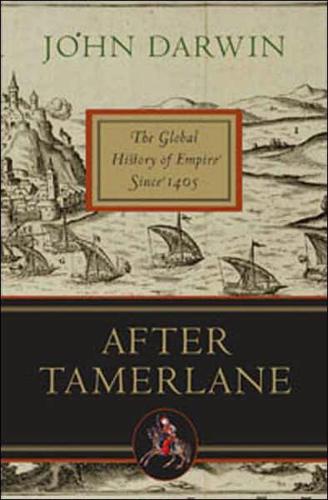
After Tamerlane: The Global History of Empire Since 1405
by
John Darwin
Published 5 Feb 2008
Nor was the wealth and urban tradition of the Near East an accident. Here, where the earliest riverine civilizations had grown up, economic life enjoyed a double stimulus. In the Nile–Euphrates corridor, and scattered across the Iranian uplands, were agricultural regions of exceptional productivity. An agricultural revolution had introduced new crops;37 hydraulic technique overcame the curse of aridity. An agrarian surplus sustained urban elites and their elaborate high culture. In the towns, an artisan class of legendary skill had sprung up to cater for these elites’ material demands. But the Near East was also the great commercial crossroads of the world: the land bridge between China, Europe, Africa and India, and the portage for the seaborne trade of the Indian Ocean.
…
The ‘Turko-Circassian’ elite (a mixture of the old Mamluk ruling class and Mehemet Ali’s Turkish and Albanian followers) would be made to pay for its privileged status in an overwhelmingly ‘Arab’ society by loyal support for its patron and protector. Both rulers understood that their chances depended upon a rapid increase in agrarian wealth. The omens were favourable. The demand for Egypt’s long-staple cotton in industrial Europe seemed almost insatiable, but to meet it required an agricultural revolution. The area of cultivable land grew by 60 per cent between 1813 and 1877.112 The delta marshlands below Cairo were drained and cleared. Perennial irrigation, supplied by a network of canals and barrages, replaced the reliance on the annual flood, and doubled production. By the mid-1860s foreign investment was growing, and foreign-owned banks sprang up to serve the new landed class.
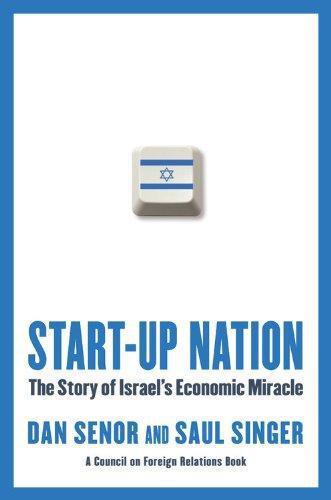
Start-Up Nation: The Story of Israel's Economic Miracle
by
Dan Senor
and
Saul Singer
Published 3 Nov 2009
Sanbar also believes that this system could have worked only in a small, striving, and idealistic nation: there was no government transparency, but “all the politicians then . . . died poor. . . . They intervened in the market, and decided whatever they wanted, but at no point did anyone pocket even one cent.”6 The Kibbutz and the Agriculture Revolution At the center of the first great leap was a radical and emblematic societal innovation whose local and global influence has been wildly disproportionate to its size: the kibbutz. Today, at less than 2 percent of Israel’s population, kibbutzniks produce 12 percent of the nation’s exports.

Before Babylon, Beyond Bitcoin: From Money That We Understand to Money That Understands Us (Perspectives)
by
David Birch
Published 14 Jun 2017
France, incidentally, went on to become the source of all sorts of crazy money experiments that ended in disaster: the assignats, John Law’s land bank, the Latin Monetary Union and … the euro. The past begins with money as debt in commodities and then a commodity (anything from grain to seashells to gold) or a claim on such. The agricultural revolution led to the rise of cities and the dawn of banking and, eventually, to coins. Stretching from antiquity to early modern times, the technological implementations went from cuneiform to banknotes to printed cheques. The Industrial Revolution then allowed these claims to move faster, by steam train rather than by horse, until technology freed them from the constraints of physicality.
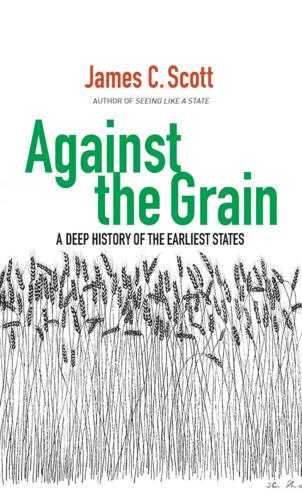
Against the Grain: A Deep History of the Earliest States
by
James C. Scott
Published 21 Aug 2017
Not in dispute, however, is that between 8,000 and 6,000 BCE, all the so-called “founder crops”—the cereals and legumes: lentils, peas, chickpeas, bitter vetch, and flax (for cloth)—are being planted, though generally on a modest scale. Over the same two-millennia span—the timing vis-à-vis cereals is not clear—domesticated goats, sheep, pigs, and cattle make their appearance. With this suite of domesticates the full “Neolithic package,” seen as the decisive agricultural revolution that marks the beginning of civilization, including the first small urban agglomerations, is in place. Permanent proto-urban settlements emerge in the wetlands of the southern alluvium near the Persian Gulf around 6,500 BCE. The southern alluvium is not the earliest site of year-round settlements; nor is it the site where the first evidence of domesticated cereals appears.
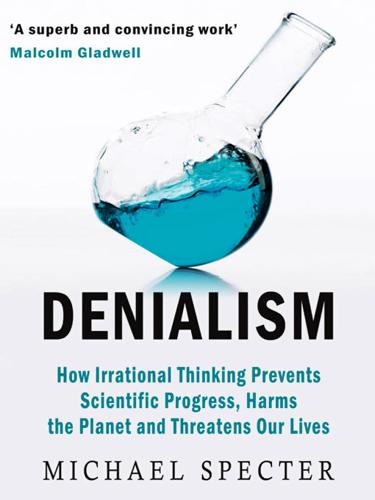
Denialism: How Irrational Thinking Hinders Scientific Progress, Harms the Planet, and Threatens Our Lives
by
Michael Specter
Published 14 Apr 2009
Grain production began to decline in the 1990s for the first time since World War II. Africa, the continent that needs the most help, is the place that is faltering most profoundly. Total production on farms there, according to the World Resources Institute, is nearly 20 percent less than it was in 1970. Without another agricultural revolution, that trend will surely accelerate. IF WE GENUINELY care about sharing our fate, and making food more readily available to everyone, there is only one question worth asking: how can we foment that next revolution? Certainly we need a better way to grow crops, one that sustains the earth but also makes the most efficient possible use of it.
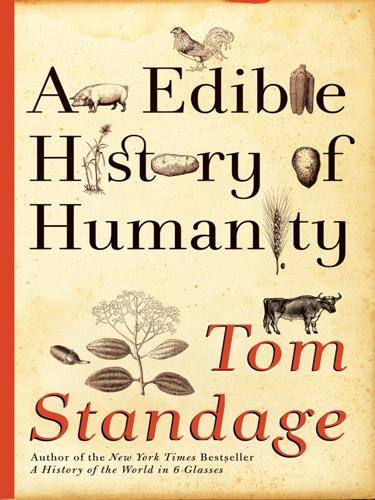
An Edible History of Humanity
by
Tom Standage
Published 30 Jun 2009
In a prescient speech in March 1968, William Gaud of the United States Agency for International Development had highlighted the impact that high-yield varieties of wheat were starting to have in Pakistan, India, and Turkey. “Record yields, harvests of unprecedented size and crops now in the ground demonstrate that throughout much of the developing world—and particularly in Asia—we are on the verge of an agricultural revolution,” he said. “It is not a violent red revolution like that of the Soviets, nor is it a white revolution like that of the Shah of Iran. I call it the green revolution. This new revolution can be as significant and as beneficial to mankind as the Industrial Revolution of a century and a half ago.”
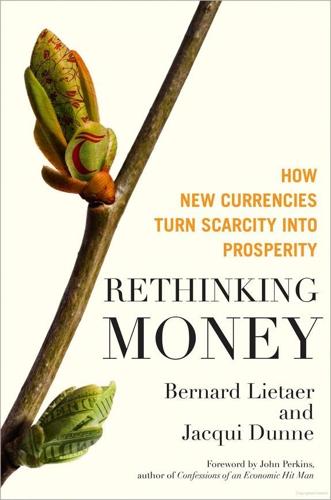
Rethinking Money: How New Currencies Turn Scarcity Into Prosperity
by
Bernard Lietaer
and
Jacqui Dunne
Published 4 Feb 2013
Against this emerging social and economic backdrop, part of the agenda of the Economic Hit Man that unfortunately worked so well in other parts of the world, taking advantage of developing countries to enslave them with indebtedness to international financial institutions, has come home to roost in what is referred to as the “developed world,” including the United States. Circumstances like these generate revolutions. The Agricultural Revolution. The Industrial Revolution. The American Revolution. We have entered such a time. Future historians, I believe, will define this as a Revolution in Consciousness. People around the world are waking up to the fact that a very few extremely wealthy individuals are enslaving the rest of us. The shackles take the form of the currencies and debt that are interwoven with global monetary systems.

The Socialist Manifesto: The Case for Radical Politics in an Era of Extreme Inequality
by
Bhaskar Sunkara
Published 1 Feb 2019
Even before the Industrial Revolution, more than half of Britain’s population was engaged in labor other than agriculture, but it took several more decades for the landscape to be truly transformed by railroads, steamships, and heavy industry. Capitalists used the new technologies to create great factories that required a disciplined, centralized workforce.9 But the would-be urban proletariat had to be lured to cities first. Fortunately for the capitalists, the agricultural revolution and consequent population boom left many in poverty. Fleeing the countryside for the city was one way out. Wage labor was just as unappealing for them as it was for the old peasantry, but the impoverished had little chance of survival otherwise. They were joined in the new factories by Irish immigrants fleeing the devastating Great Famine.

The Demon in the Machine: How Hidden Webs of Information Are Finally Solving the Mystery of Life
by
Paul Davies
Published 31 Jan 2019
But that application lay far in the future. At the outset, the demon wasn’t intended to clarify the question ‘What is life?’ but a much simpler and more practical one: namely, what is heat? MOLECULAR MAGIC Maxwell wrote to Tait at the height of the Industrial Revolution. Unlike the agricultural revolution of the Neolithic period which pre-dated it by several thousand years, the Industrial Revolution did not proceed by trial and error. Machines such as the steam engine and the diesel engine were carefully designed by scientists and engineers familiar with the principles of mechanics first enunciated by Isaac Newton in the seventeenth century.

Europe: A History
by
Norman Davies
Published 1 Jan 1996
It contains several [silver] mines… [It] is an exceedingly cold region, and I have been assured that it extends even as far as the Northern Ocean, where … peregrine falcons are taken in vast numbers.39 Contrary to former assumptions, economic life in the Middle Ages was not stagnant. There is a school of thought which holds that ‘an agricultural revolution’ in northern Europe at this time was ‘equally decisive in its historical effects’ as ‘the so-called Industrial Revolution’ of the nineteenth century.40 The argument centres on new sources of power such as the water-mill and the windmill, on expanded mining activities, on the impact of the iron plough and horsepower, and on crop rotation and improved nutrition.
…
The change from the two-field to the three-field plan greatly improved crop yields whilst increasing the peasant family’s productivity by at least 50 per cent. It permitted the growing of all four cereals, and effectively distributed the peasant’s toil between spring and autumn sowing. But it demanded a marked rise in ploughing capacity. (See Plate 29.) By the twelfth century at the latest, all the elements of the northern agricultural revolution were in place from France to Poland. Historians may have modified some of the simpler equations of the subject, such as Meltzen’s ‘Scratch-plough + cross-ploughing = square fields’ or Marc Bloch’s famous ‘Three-piece plough + wheels = strips = open fields = communal agriculture’. But the main lines are now generally accepted.
…
Bronislaw Geremek, Swiat Opery Żebraczej: obraz wtóczęgów i nędzarzy w literaturach XV-XVII wieku (The World of the Beggar’s Opera: Tramps and Beggars in the literature of the 15th-17th Centuries) (Warsaw, 1989); Poverty: A History (Oxford, 1994). 2. Ewa M. Thomson, Understanding Russia: The Holy Fool in Russian Literature (London, 1987). PLOVUM 1. Lynn White Jr., ‘The Agricultural Revolution in the Early Middle Ages’, in Mediaeval Technology and Social Change (Oxford, 1962), 39–78, with superlative footnotes. POGROM 1. ‘Pogrom’, in Encyclopaedia Judaica (Jerusalem, 1971), xiii. 694–702. 2. See J. D. Clier, Pogroms: Anti-Jewish Violence in Modern Russian History (Cambridge, 1991); I.
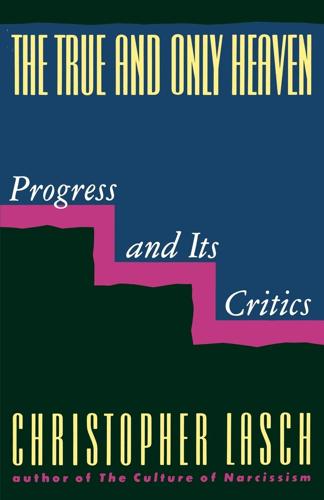
The True and Only Heaven: Progress and Its Critics
by
Christopher Lasch
Published 16 Sep 1991
On the moral ambivalence of the sociological tradition and the structure of historical necessity, the relevant texts are Durkheim's Professional Ethics and Civic Morals (1957), Weber's more familiar pair of essays "Science as a Vocation" and "Politics as a Vocation" (both published in I9I9); Freud's Civilization and Its Discontents (1930) and The Future of an Illusion (1928); Robert Redfield's The Primitive World and Its Transformations (1953); George Simmel's essay "The Metropolis and Mental Life" (1903); Louis Wirth's imitation "Urbanism as a Way of Life," American Journal of Sociology 44 (1938): I-24; and various works by Marx, including a couple of minor pieces quoted in Jon Elster's admirable study Making Sense of Marx (1985). For interpretations of economic development contrary to that of Marx (who insists on the inevitable supersession of small-scale production), see Kins Collins, "Marx on the English Agricultural Revolution," History and Theory 6 (1967): 351-81; J. D. Chambers and G. E. Mingay, The Agricultural Revolution (1966); and Charles Sabel and Jonathan Zeitlin, "Historical Alternatives to Mass Production," Past and Present, no. 108 (Aug. 1985): 133-76. This last contains a more general attack on historical determinism, as does Roberto Mangabeira Unger, Social Theory: Its Situation and Its Task (1987).
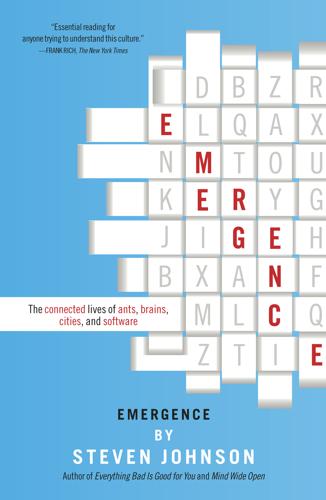
Emergence
by
Steven Johnson
You wouldn’t be able to read these words, or speculate about the inner workings of your mind, were it not for the protean force of emergence. But there are limits to that force, and to its handiwork. Natural selection endowed us with cognitive tools uniquely equipped to handle the social complexity of Stone Age groups on the savannas of Africa, but once the agricultural revolution introduced the first cities along the banks of the Tigris-Euphrates valley, the Homo sapiens mind naturally recoiled from the sheer scale of those populations. A mind designed to handle the maneuverings of less than two hundred individuals suddenly found itself immersed in a community of ten or twenty thousand.

Food and Fuel: Solutions for the Future
by
Andrew Heintzman
,
Evan Solomon
and
Eric Schlosser
Published 2 Feb 2009
Imagine what it would mean if these farmers were suddenly required to pay distant corporations for every seed they planted. Imagine what it would mean for these farmers to relinquish centuries-old local agricultural practices for techniques and products developed and controlled by faraway corporations over which they have no say? We don’t need to imagine. We can look to another agricultural revolution and learn from history. Today’s “Gene Revolution,” after all, is in many ways a reprise of the 1960s Green Revolution, which used technological innovation to increase yields across the developing world. The key to the Green Revolution was the development of high-yield hybrid seeds, or what critics of the technology call “high-responding” because they require extensive application of inputs — including water, fertilizer, and pesticides.
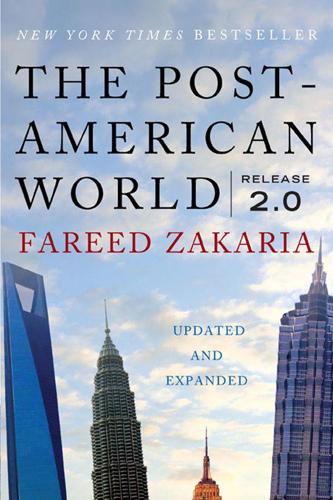
The Post-American World: Release 2.0
by
Fareed Zakaria
Published 1 Jan 2008
This mismatch, unless altered, would ensure that the country would be hungry and impoverished, and that only catastrophes like famine and disease could raise living standards (by shrinking the population).* Malthus’ dilemma was quite real, but he failed to appreciate the power of technology. He did not recognize that these very pressures would generate a human response in Europe—the agricultural revolution, which vastly expanded the production of food. (The continent also eased population pressures by exporting tens of millions of people to various colonies, mostly in the Americas.) So Malthus was wrong about Europe. His analysis, however, well described Asia and Africa. Strength Is Weakness And yet, how to make sense of those extraordinary Chinese voyages?
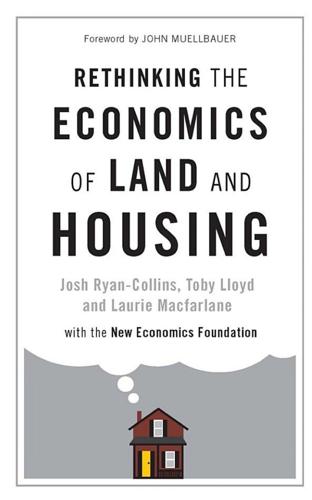
Rethinking the Economics of Land and Housing
by
Josh Ryan-Collins
,
Toby Lloyd
and
Laurie Macfarlane
Published 28 Feb 2017
The Warwick Economics Research Paper Series (TWERPS) no. 475, December. Oswald, Andrew J. [1999] 2009. ‘The Housing Market and Europe’s Unemployment: A Non-Technical Paper’. In Homeownership and the Labour Market in Europe, ed. Casper van Ewijk and Michiel van Leuvensteijn. Oxford: Oxford University Press. Overton, Mark. 1996. Agricultural Revolution in England: The Transformation of the Agrarian Economy 1500–1850. Cambridge: Cambridge University Press. Oxley, Michael, Tim J. Brown, A. M. Fernandez-Maldonado, L. Qu, and L. Tummers. 2009. Review of European Planning Systems. London: National Housing and Planning Advice Unit. https://www.dora.dmu.ac.uk/xmlui/handle/2086/7536.
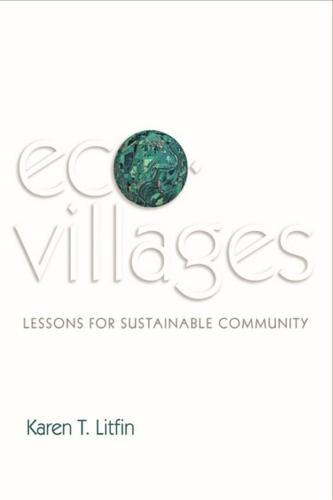
Ecovillages: Lessons for Sustainable Community
by
Karen T. Litfin
Published 16 Dec 2013
If you look at the charts, carbon dioxide and temperature rise and fall together. When they’re down, which was true for most of the last 600,000 years, there’s a mile of ice covering Chicago. But, about 10,000 years ago, they went up and stabilized. Plows didn’t exist so people slashed and charred before they cultivated. The agricultural revolution created the most life-conducive climate this planet has seen for over 600,000 years. “When the sorcerer takes on apprentices, there’s a danger that they’ll fall into a common trap. Remember the Disney movie Fantasia? The apprentice had to carry water. Chop wood, carry water: these are sacred responsibilities!

No Such Thing as a Free Gift: The Gates Foundation and the Price of Philanthropy
by
Linsey McGoey
Published 14 Apr 2015
Often with borrowed funds, they secure the $10 or so that it costs to buy a bottle of pesticide, and swallow it whole before settling to sleep.18 Norman Borlaug, who won a Nobel Peace Prize in 1970 for his pioneering role in the Green Revolution, later acknowledged that the overuse of pesticides was eroding some of the gains of the agricultural revolution. He called for more judicious use of fertilizer and pesticides in future.19 Bill Gates has repeatedly suggested that we need to extend the Green Revolution to Africa. His comments have sparked outrage in developing regions. Vandana Shiva, a renowned Indian environmental activist, has condemned the Gates Foundation’s links to Monsanto, calling the foundation the ‘greatest threat to farmers in the developing world’.20 In the late 2000s, a group of Seattle-based activists set up an organization called AGRA Watch in order to monitor, as their website puts it, ‘the Gates Foundation’s participation in the Alliance for a Green Revolution in Africa (AGRA)’.

The Fourth Age: Smart Robots, Conscious Computers, and the Future of Humanity
by
Byron Reese
Published 23 Apr 2018
Over time, some people amassed more land and capital than others. As society became wealthier, complexity arose. Trade became more sophisticated. Technology advanced and cities grew. All of this together raised the upper limit of the amount of wealth a single person could accumulate. An unintended consequence of the agricultural revolution was that while more food could be produced, food could also be withheld from people. In a hunter-gatherer world, that wasn’t really possible, but with cities and agriculture, withholding food was a way for those in power to silence opposition, while distributing food was a way to ensure obedience.

Green Swans: The Coming Boom in Regenerative Capitalism
by
John Elkington
Published 6 Apr 2020
It is clear that much of the world is at a market inflection point, where issues once seen as peripheral are surging into the mainstream. As Generation Investment Management put it in The Transformation of Growth, their 2017 white paper, “The Sustainability Revolution appears to have the scale of the Industrial Revolution and the Agricultural Revolution—and the speed of the Information Revolution. Compared to these three previous revolutions, the Sustainability Revolution is likely to be the most significant event in economic history.”54 Emerging technology will certainly challenge us in new and profound ways. AI will eliminate or squeeze a huge number of jobs and careers, leading some to question whether when Silicon Valley and the financial centers of cities like London, New York, and Tokyo are fully robotized, they might move anywhere in the world where there was (a critical new strategic advantage) a sufficient supply of clean energy.

How to Spend a Trillion Dollars
by
Rowan Hooper
Published 15 Jan 2020
Then again, maybe you could try to transition the world to renewable energy. You could buy and preserve the rainforests. You could try to save all endangered species. You could refreeze the melting Arctic. You could reduce the amount of carbon dioxide (CO2) in the atmosphere. You could launch a new, sustainable agricultural revolution. You could even create a new life form. If it sounds like I’m getting carried away, let me just say that all these ideas are projects which scientists are thinking about and even working on, but which are hampered by lack of resources. The world is full of extraordinary opportunities, and the vast majority are never undertaken.

Wired for War: The Robotics Revolution and Conflict in the 21st Century
by
P. W. Singer
Published 1 Jan 2010
Connectivity is also expanding at an exponential rate, allowing new technologies to change human society quicker and quicker. For example, the wheel first appeared in Sumer around 8500 B.C. But it took roughly three thousand years for the wheel to be commonly used in animal-drawn carts and plows. So the agricultural revolution that made possible human cities, and what we now know as “civilization,” played out over several millennia. By the eighteenth century, communication and transportation had sped up to the point that it took only just under a century for the steam engine to become similarly widespread, launching the Industrial Age.
…
Biddle, Military Power: Explaining Victory and Defeat in Modern Battle (Princeton, NJ: Princeton University Press, 2004), 30. 100 exponential “stretching” of the battlefield Michael E. O’Hanlon, Technological Change and the Future of Warfare (Washington, DC: Brookings Institution Press, 2000), 121. 100 each plane was destroying 4.07 targets Edwards, “Swarming and the Future of Warfare,” 137. 100 the agricultural revolution Rodney Brooks, Flesh and Machines: How Robots Will Change Us (New York: Pantheon, 2002). 100 launching the Industrial Age Richard R. Nelson, Technology, Institutions, and Economic Growth (Cambridge, MA: Harvard University Press, 2005), 135. 100 The Internet took roughly a decade “Internet Usage Statistics—The Big Picture,” Internet World Stats, 2007 (cited May 30, 2007); available at http://www.internetworldstats.com/stats.htm. 100 In less than a decade, over a billion people Chuck Klosterman, Sex, Drugs, and Cocoa Puffs: A Low Culture Manifesto (New York: Scribner, 2003), 112. 101 the aggregate of technologic change Ray Kurweil in an interview with Kip P.
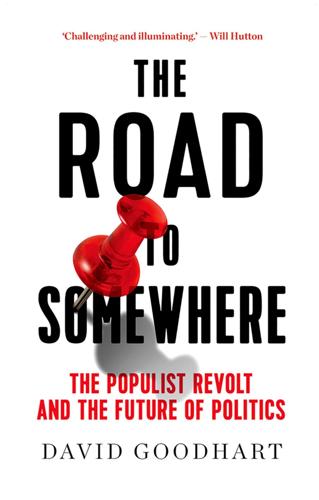
The Road to Somewhere: The Populist Revolt and the Future of Politics
by
David Goodhart
Published 7 Jan 2017
The first is that humanity is on the move on an unprecedented scale and the second is that the nation state is inexorably losing out to global markets and institutions. Neither is true. Human beings have not given up the largely settled life they have lived since hunter-gathering gave way to the first agricultural revolution 10,000 years ago. There is, it is true, a vast movement within poor countries from the rural to the urban, but the world’s people have not suddenly become country-hoppers. Rootedness is a strong human impulse. In 2015 the number of people living in countries other than the one they were born in was 244 million, or 3.3 per cent of the global population of 7.3 billion.

The New Harvest: Agricultural Innovation in Africa
by
Calestous Juma
Published 27 May 2017
Despite the historical, geographic, political, social, educational, and cultural differences between China and Africa, there are still many lessons from China’s agricultural transformation that can inspire Africa’s efforts to turn around decades of low agricultural investment and misguided policies. An African agricultural revolution is within reach, provided the continent can focus on supporting small-scale farmers to help meet national and regional demand for food, rather than relying on expansion of export crops. While prospects for Africa’s global agricultural commodities markets (including cocoa, tea, and coffee) are likely to be brighter than in recent decades, the African food market will grow from US$50 billion in 2010 to US$150 billion by 2030.
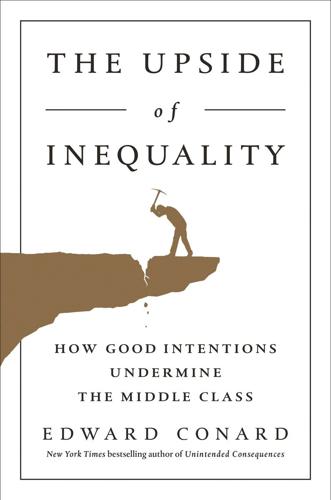
The Upside of Inequality
by
Edward Conard
Published 1 Sep 2016
Perhaps robots will finally displace workers rather than increasing workers’ prosperity as technology and capital investment has in the past. It’s hard to know what will happen when armies of robots build more armies of robots at near-zero cost. One may surmise that even the poor will be rich when the cost of goods is near zero. And so far, wave after wave of robot-like innovation has already rolled in—the agricultural revolution, industrial automation, computerization, and offshoring—with no result other than growing standards of living for everyone. In another version of the hollowing-out argument, sociologists blame rising income inequality for increasing the unproductive behavior of the working class. For example, the greater uncertainty of employment allegedly makes working-class men less marriageable.7 Their lower workforce participation allegedly leads to a decline in marriage and a corresponding rise in out-of-wedlock births.

The Uninhabitable Earth: Life After Warming
by
David Wallace-Wells
Published 19 Feb 2019
Scott gives a more pointed critique of the same period: wheat cultivation, he argues, is responsible for the arrival of what we now understand as state power, and, with it, bureaucracy and oppression and inequality. These are no longer outlier accounts of what you may have learned about in middle school as the Agricultural Revolution, which you probably were taught marked the real beginning of history. Modern humans have been around for 200,000 years, but farming for only about 12,000—an innovation that ended hunting and gathering, bringing about cities and political structures, and with them what we now think of as “civilization.”
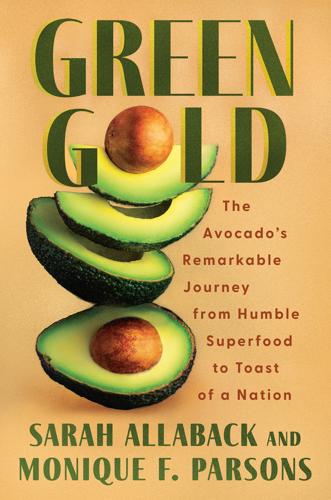
Green Gold
by
Sarah Allaback
Published 14 Mar 2025
Growing wild on mountainsides, in orchards, and in dooryards of homes across the nation, the avocado was a prized natural resource that should be a source of national pride. If Sánchez Colín’s vision proved true, one day everyone would know that avocados are from Mexico. Born into poverty in 1912, Sánchez Colín came of age during an agricultural revolution in Mexico and became a soldier for the cause.16 He was accepted to the Escuela Nacional de Agricultura in 1928. Housed on the grounds of a grand former hacienda in Chapingo, the public university’s motto was “Enseñar la explotación de la tierra, no la del hombre”: “To teach the exploitation of the land, not the exploitation of man.”

Augmented: Life in the Smart Lane
by
Brett King
Published 5 May 2016
The mechanisation of farming had a direct impact on employment patterns as we can see from the graph overleaf. Ironically, preceding the industrial age, there was a massive boom in agriculture in the economies of countries like the United States and the United Kingdom. In fact, technology was at play here too. The agricultural revolution led to improvements such as crop rotation, improvements in plowing implements, more intensive farming techniques with higher labour inputs, better breeding and animal husbandry, along with increases in farm size. Figure 1.5: The correlation between tractors and reduced employment in farming The disruptions in the next age were perhaps a little subtler, although the news of such changes tended to be more dramatic.
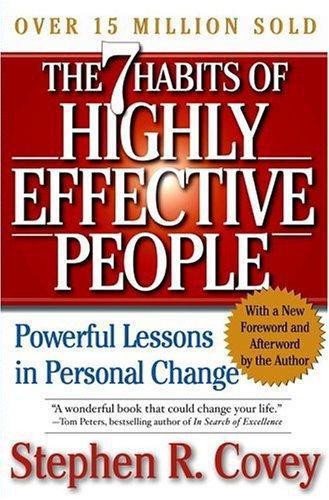
The 7 Habits of Highly Effective People: Powerful Lessons in Personal Change
by
Stephen R. Covey
Published 9 Nov 2004
That phrase represents the evolution of three generations of time management theory, and how to best do it is the focus of a wide variety of approaches and materials. Personal management has evolved in a pattern similar to many other areas of human endeavor. Major developmental thrusts, or "waves" as Alvin Toffler calls them, follow each other in succession, each adding a vital new dimension, For example, in social development, the agricultural revolution was followed by the industrial revolution, which was followed by the informational revolution. Each succeeding wave created a surge of social and personal progress. Likewise, in the area of time management, each generation builds on the one before it--each one moves us toward greater control of our lives.
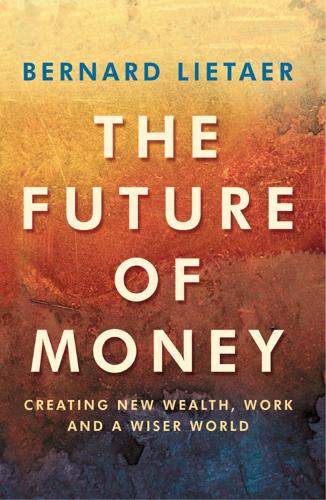
The Future of Money
by
Bernard Lietaer
Published 28 Apr 2013
Managing savings intelligently therefore boils down to allocating cash between the three classical major asset classes: real estate, bonds, and stocks. Over the past decade, another major asset class has appeared that is of particular interest to us: currencies. A few words about the changing role of each asset class over time puts this development into perspective. Real Estate From the beginning of the Agricultural Revolution until last century, real estate, particularly land, was the dominant form of savings available in the world. The wealth of individuals could usually be evaluated by the quality and the size of the real estate they had accumulated. This all changed with the Industrial Age when stocks and bonds in commercial enterprises became a favourite investment vehicle.
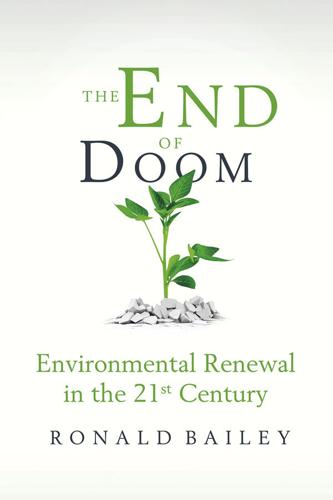
The End of Doom: Environmental Renewal in the Twenty-First Century
by
Ronald Bailey
Published 20 Jul 2015
After all, economic growth would mean more wealth for them to loot. In their 2012 book Why Nations Fail: The Origins of Power, Prosperity, and Poverty, MIT economist Daron Acemoğlu and Harvard economist James Robinson largely concur with the analysis of North and his colleagues. They too find that since the Neolithic agricultural revolution, most societies have been organized around “extractive” political and economic institutions that funnel resources from the mass of people to small but powerful elites. The economic and political institutions that produce economic growth are inevitable threats to the power of reigning elites.
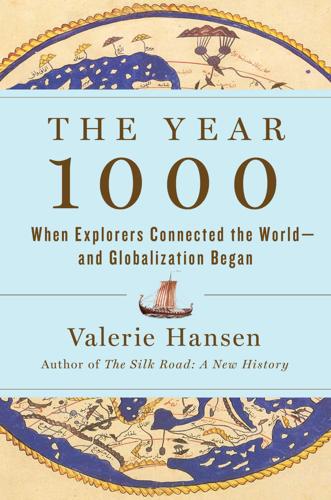
The Year 1000: When Explorers Connected the World―and Globalization Began
by
Valerie Hansen
Published 13 Apr 2020
,” The Atlantic (August 6, 2017). Chapter One: The World in the Year 1000 one quarter and one third: James C. Lee and Wang Feng, One Quarter of Humanity: Malthusian Mythology and Chinese Realities, 1700–2000 (1996): 6 (Figure 1.1). sustained prosperity: Andrew M. Watson, “The Arab Agricultural Revolution and Its Diffusion, 700–1100,” Journal of Economic History 34.1 (1974): 8–35; Watson, Agricultural Innovation in the Early Islamic World: The Diffusion of Crops and Farming Techniques, 700–1100 (1983). Paolo Squatriti has demonstrated that Watson’s original thesis about the spread of crops throughout the Islamic world has stood the test of time in his “Of Seeds, Seasons, and Seas: Andrew Watson’s Medieval Agrarian Revolution Forty Years Later,” Journal of Economic History 74.4 (2014): 1205–20. 35 to 40 million: Andrew Watson, “A Medieval Green Revolution,” in The Islamic Middle East, 700–1900: Studies in Economic and Social History, ed.
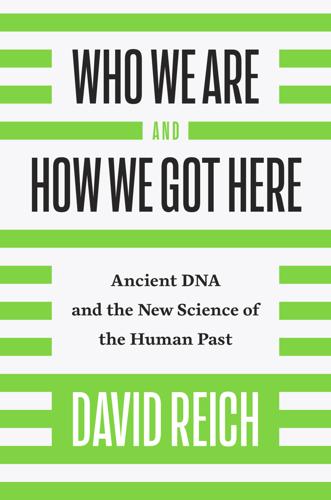
Who We Are and How We Got Here: Ancient DNA and the New Science of the Human Past
by
David Reich
Published 22 Mar 2018
The farmers in present-day Israel and Jordan expanded into East Africa, and their genetic legacy is greatest in present-day Ethiopia. Farmers related to those in present-day Iran expanded into India as well as the steppe north of the Black and Caspian seas. They mixed with local populations there and established new economies based on herding that allowed the agricultural revolution to spread into parts of the world inhospitable to domesticated crops. The different food-producing populations also mixed with one another, a process that was accelerated by technological developments in the Bronze Age after around five thousand years ago. This meant that the high genetic substructure that had previously characterized West Eurasia collapsed into the present-day very low level of genetic differentiation by the Bronze Age.
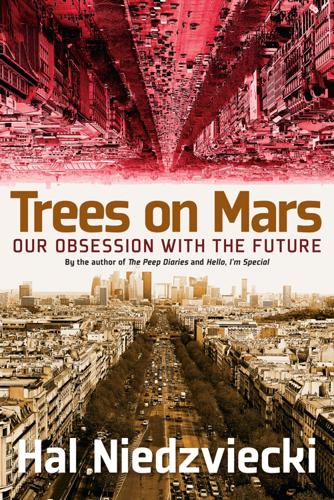
Trees on Mars: Our Obsession With the Future
by
Hal Niedzviecki
Published 15 Mar 2015
McKinnon summarizes it, “needing to advance their technologies and degree of organization in order to respond to environmental challenges that are often of their own making.”9 But surely once we came up with agriculture we stopped strip mining our food supplies and then, finally, got down to what we were meant to be doing all along—innovating our way to being a kinder, gentler, smarter species living in harmony with each other and the world. Well, maybe not. In the modern age, despite the so-called agricultural revolution bringing us all the mono-crop you can eat, the killing and plundering continues apace. As historian David Edgerton notes in his book The Shock of the Old, we have this sense that we are more evolved today than our warring and hunting brethren of old. We imagine them as somewhat unrefined in their dedication to brutality and mayhem, both in their interpersonal and survival skills.
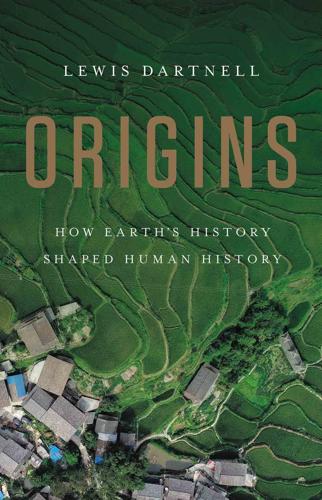
Origins: How Earth's History Shaped Human History
by
Lewis Dartnell
Published 13 May 2019
C. (2009). The British Industrial Revolution in Global Perspective, Cambridge University Press. Alvarez, W. (2018). A Most Improbable Journey: A Big History of Our Planet and Ourselves, W. W. Norton & Co. Andersen, T. B., P. S. Jensen and C. V. Skovsgaard (2016). ‘The heavy plow and the agricultural revolution in Medieval Europe’, Journal of Development Economics 118: 133–49. Angelakis, A. N., Y. M. Savvakis and G. Charalampakis (2006). Minoan Aqueducts: A Pioneering Technology, International Water Association 1st International Symposium on Water and Wastewater Technologies in Ancient Civilizations, Iraklio, Greece.
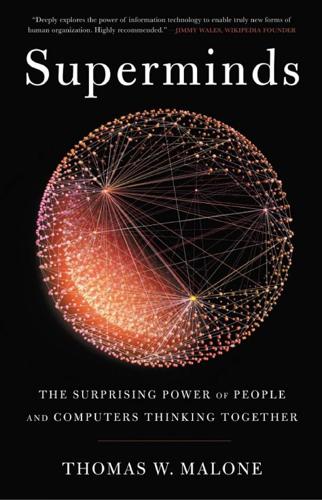
Superminds: The Surprising Power of People and Computers Thinking Together
by
Thomas W. Malone
Published 14 May 2018
Within a few thousand years of their arrival, all but one of the other 24 largest animal species on the continent were extinct.11 We don’t have any eyewitness reports of the slaughters, but somehow our hunting-and-gathering ancestors had finally reached the top of the food chain. And it was human groups—not individual humans—who had become the apex predators. Agriculture A similar story was repeated in each of the other two major stages of human development: the Agricultural Revolution and the Industrial Revolution. By about 12,000 years ago, humans began to systematically cultivate wheat, corn, cows, and many other plants and animals. This allowed humans to increase their global population from about 2 million to 600 million by 1700 and to further solidify their dominance over the rest of nature.12 But agriculture required much more coordination in large groups than hunting and gathering did.

Making It in America: The Almost Impossible Quest to Manufacture in the U.S.A. (And How It Got That Way)
by
Rachel Slade
Published 9 Jan 2024
Louis Fed, https://fraser.stlouisfed.org/title/annual-report-secretary-treasury-state-finances-194/report-manufactures-december-1791-establishment-a-mint-january-1791-5630. “The Biden Plan to Ensure the Future Is ‘Made in All of America’ by All of America’s Workers.” https://www.madeinamerica.com. Bidwell, Percy W. “The Agricultural Revolution in New England.” American Historical Review 26, no. 4 (1921): 683–702. Blom, Philipp. Nature’s Mutiny: How the Little Ice Age Transformed the West and Shaped the Present. New York: Liveright, 2019. Bradford, Amy. “History of Linen.” TOAST, April 16, 2018, https://us.toa.st/blogs/magazine/history-of-linen.

Exceptional People: How Migration Shaped Our World and Will Define Our Future
by
Ian Goldin
,
Geoffrey Cameron
and
Meera Balarajan
Published 20 Dec 2010
No sooner had this massive expansion been completed than the first developments in agriculture and horticulture began to generate new energy for migrants to spread technological and social innovations across thousands of miles. As human communities followed separate trajectories of social and cultural evolution, they remained connected by the unceasing movement of people. CONNECTING HUMANITY The Agricultural Revolution Around the time that humans completed their great migration, the ice age also ended and the earth entered into the Holocene period. The Holocene was marked by radical changes in climate, retreating ice sheets, shifting vegetational zones, and rising sea levels.23 The environment became more unpredictable in many parts of the world.
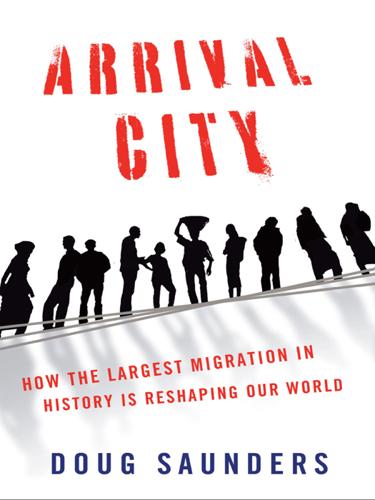
Arrival City
by
Doug Saunders
Published 22 Mar 2011
Popkin, “The Rational Peasant: The Political Economy of Peasant Society,” Theory and Society 9 (1980); Patrick Svensson, “Peasants and Entrepreneurship in the Nineteenth-Century Agricultural Transformation of Sweden,” Social Science History 30, no. 3 (2006). 12 Jonathan David Chambers and G. E. Mingay, The Agricultural Revolution, 1750–1880 (London: B.T. Batsford, 1968), 104. 13 Eugen Weber, Peasants into Frenchmen: The Modernization of Rural France, 1870–1914 (Stanford: Stanford University Press, 1976), 10. This is also very well documented in Graham Robb, The Discovery of France (London: Picador, 2007). 14 For claims of Britain’s superior living standards, see Tom Kemp, Economic Forces in French History (London: Dobson, 1971); Charles P.
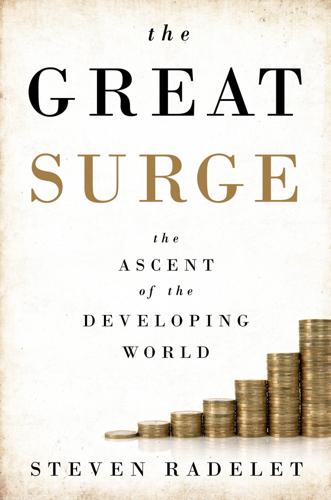
The Great Surge: The Ascent of the Developing World
by
Steven Radelet
Published 10 Nov 2015
For an analysis of the turnaround in sub-Saharan Africa, see Radelet, Emerging Africa. 10. “Ethiopian Textile Exports Reach $29 Mn in First Quarter,” Fibre2fashion.com, November 7, 2013, www.fibre2fashion.com/news/textile-news/ethiopia/newsdetails.aspx?news_id=155309. 11. “Blooming Desert: An Agricultural Revolution,” Economist, July 7, 2005, www.economist.com/node/4157659. 12. This paragraph is drawn from Radelet, Emerging Africa, and is based on a personal email interview with Masetumo Lebitsa (May 6, 2010), and “Maseru Tapestries and Mats,” AfricanCraft.com, last modified July 2006, www.africancrafts.com/artisan.php?
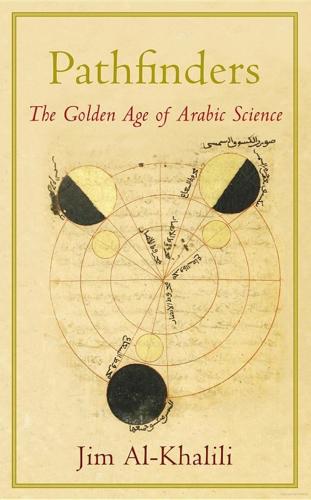
Pathfinders: The Golden Age of Arabic Science
by
Jim Al-Khalili
Published 28 Sep 2010
While far from the most important of Islamic astronomers, al-Bitrūji’s Principles of Astronomy (Kitab al-Hay’a) became very popular in Europe.3 Of course, the influence of Arabic scientists on the rest of the world, and Western Europe in the Middle Ages in particular, extended far beyond their achievements in the pure sciences. For example, I have not gone into detail about their contribution to what is described as the Islamic agricultural revolution and with it new methods of irrigation, or their creation of whole new chemical industries such as glassmaking and ceramics, or the sugar-refining industry. Their engineering feats in building dams, canals, waterwheels and pumps and their technological advances in clockmaking – all these advances in many ways changed the lives of millions of ordinary people directly and immediately.
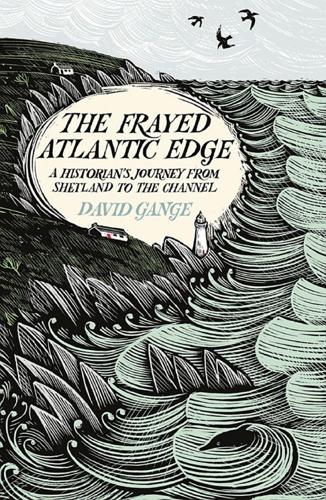
The Frayed Atlantic Edge: A Historian’s Journey From Shetland to the Channel
by
David Gange
Published 10 Jul 2019
B., 190 Dubh, Torquil, 135 Dubh Artach lighthouse, 198 Dublin Society for Improving Husbandry, Manufacturing and Other Useful Arts and Sciences, 238–9 Dún Aonghasa (clifftop fort), 261–2, 263 Dùn Èistean (Ness port), 99, 100 Dungloe (County Donegal), 208, 229 dunlins, 254 Dunnett, Alastair, 191–7, 345 Dursey Island cliffs, 287 eagles, 7, 10, 110, 135, 167, 188 Easdale, island of, 190 East Burra, island of, 27 Eddrachillis Bay (islet, the Brieve’s Island), 136 Edinburgh, 103, 106, 124, 141, 149, 201 Education Acts (1870, 1872), x, 102–3, 341 Edwardes, Charles, 299–301, 304 eels, 41, 168, 236 Egilsay (holy island of Orkney), 77 Egyptian Hall in Piccadilly, 62 eider ducks, 71, 116 Eliot, T.S., Four Quartets (1943), 321 Enlightenment: agricultural sciences, 111; effort to make science universal, 257–8; elite domination of narrative, 190; ‘Highland problem’ as invention of, 344; impact on coastal communities, x; monetary economy and wage labour, 217, 218; need for eradication of label, 190, 340–1; rereading in light of island stories, 189, 190–5, 217–18, 257–8, 340–1 Enterprise Energy, 248 environmentalism: and Rachel Carson, 18, 345; ‘Counter-Desecration Phrasebook’ concept, 113–14, 115, 134; early history of British conservation, 158, 159–60; and Gaelic culture, 113–15; and Gaelic language, 113–14; intense awareness of present degradation, 115; Machair Life project on Uist, 112; modernity as ecological threat, 341, 343; new ways of living well, 9–10; protests against Shell, 249–50, 251–2; the whale as symbol of, 275–6 Eòrapaidh (chapel on Ness), 99 Eriskay, island of, 103 European Commission, 295 Evans, Christine, 305, 306–10, 317, 347 Evans, Colin, 305, 306 Evans, Ernest, 304, 305–6, 308–9 Evans, Estyn, 216–17 Eynhallow (holy island of Orkney), 77, 79, 81 Fair Isle, 27, 45, 50 Falkirk, 151 Fanad Head lighthouse, 198, 204 Farley, Erin, 201–2 farming: ‘agricultural revolution’ label, 340; cattle-droving routes, 149, 150–2; eagles seen as threat to, 10; ‘Glendale martyrs’ on Skye, 177; ‘Highland problem’ as Enlightenment invention, 344; and historic landscape, 79; in Ireland, 214, 216–17, 218, 219–20, 227; lazy-beds (feannagan), 110–11, 190; Machair Life project on Uist, 112; nineteenth-century ‘improvements’, 95, 111–12, 151–3, 195–6, 344; in north-west Scotland wilderness, 155–6; on Orkney, 66, 72, 76–7; peatland, 26, 67, 79, 93, 95, 117, 168, 220–1, 252, 255; potato blight of 1840s, 111, 210, 214, 228–9; of potatoes, 111, 210, 218; on Shetland, 43, 47; shieling customs, 94–5; small-scale crofting on Uist, 111–12, 115; twentieth-century focus on the present, 112; in Wales, 297, 311; on Western Isles, 94–5, 96, 111–13, 116–17, 119–20 Faroe, 20, 25, 54, 211 fascism, 177, 178 Fastnet Rock, 277, 284; lighthouse, 198 feldspar, 33 feminist historiography of geography, 282 Fiddler, Meg, 72 Fidelis (Irish monk), 284–5 field sports, 10, 152–3, 154–5 film, 10–12, 264–5, 281–2 Finlay, Ian Hamilton, 86–7 Fir Bolgs (mythological Irish race), 213, 261–2 First World War, 101, 138, 341–2 Fisherfield, 145, 153, 156 fishing: in Cornwall, 322, 323, 324; as dangerous industry, 235; eagles seen as threat to, 10; and European institutions, 264; in Ireland, 221–2, 230–1, 235, 247, 252, 256, 264–5; Irish boats, 208–9; Irish Fishers’ Knowledge Project, 264–5; modern factory of the sea, 11, 31, 101, 264; and North Sea, 11; on Orkney, 67–8; Outer Hebrides, 98, 101–2; on Shetland, 27–31, 47 Fivepenny (township on Ness), 99 Fladda lighthouse, 198, 199–201 Flaws, Andy, 202 Foinaven (Foinne Bheinn) (mountain), 2, 125, 134 folklore, 10; of the Armada, xi, 74–5; of Atlantic seals, 246; and Cornwall, 322–3; of Eynhallow, 81; and Ness group, 106–7; of Orkney, 79–80, 81; storytelling on Westray, 74–5; of Thoraí, 219; and transhumance customs, 94–5 Fomorians (mythological Irish race), 213 Forestry Commission, 160 Foula, island of, 38, 45, 55 Foulis, Will, 62 foxes, 125 Foze Rocks, 277 Fraser Darling, Frank, 8, 123 fulmars, 17, 22, 38, 46, 47, 55, 81, 98, 215, 227 gabbro, 33, 176, 179, 181 Gabhla, island of, 227 Gaelic culture: centralising onslaught against, 99–100, 114, 189–95, 215–19, 297, 341, 344–5; and communications revolution, 9–10, 109; and Cromwell, 211, 255, 287; devastation of on Mull, 187–8, 194–5; dinnseanchas (‘place-lore’), 256–8, 261, 263; divergence from Lowland Scotland (after 1840), 100–1; Dunnett and Adam campaign, 191–7, 345; engrained romantic imagery, 12; and environmentalism, 113–15; Galway city as haven of, 268; impact of Jacobite defeat, 129; Irish Gaeltacht, 209–11, 223, 246, 247, 255, 268; and Norman MacCaig, 12, 121, 124, 137–40, 142, 170; and Sorley MacLean, 165, 176–8, 187; MacLean’s view of as socialistic, 177–8; and narratives of failure, 102, 103–4, 106–7; oral history tradition, 99, 106, 112, 127, 130–3; politics on Skye, 176–8; rejuvenation of, x, 10, 91, 104–9, 112–15, 141–2; relationship of land with sea, 93–4, 107–9, 172, 209–12; Scottish Gàdhealtachd, 99, 100, 106, 110, 145, 177; seafaring epics, 171, 172, 173–4; and Skye, 165, 176–8; song and poem as history, 127–8, 130–3; stereotyping/mythologising of coastal communities, 11–12; symbolic ships, 172; as tied to place, 134; urban Gaelic renaissance, 141–2; as victim of modern farming methods, 111–12; as victim of nationalised education, 102–4, 106–7, 108, 109–10 Gaelic language, 4; activism promoting, 104, 133–4; and collapse of maritime trades, 246; in Connacht’s ABC zone, 255, 268; current state of, 110, 209; decline of, 102–3, 141; and Rob Donn, 130; and emigration, 102; environmental concepts, 113–14; Gaelic patronymics on Ness, 107; industrial modernity’s crusade against, 102–4, 341; Irish origins, 207–8; and lighthouse keeping, 204; and Norman MacCaig, 124, 139, 141; name ‘Argyll’, 208; place names on Havera, 45; propaganda against, 103–4, 341; rejuvenation of, 10, 91, 207–8; relative strength of Irish Gaelic, 210–11, 268; verse, 12, 94, 123–4, 126, 127–8, 129–34, 136, 165, 171–4, 176–8, 344; versifier’s function, 127–8; as victim of nationalised education, 102–4, 106–7, 108, 109–10; in Western Isles, 72, 91, 93, 99, 100, 102, 104–5, 107–10 Galician culture, 10, 283, 295 Gallagher, Sally and Paddy, 229 Galway, County (province of Connacht): ‘ABC of earth wonders’, 255–7; Connemara, 85, 210, 211–12, 223, 254–5, 256–61, 266–8; mapping of, 254–5, 256–8, 261; Slyne Head, 266–8 Galway Bay, 254–60 Galway city, 260, 268, 271 gannets, 20–2, 23, 31–2, 70, 107, 236, 271 garden-cities movement, 299 Garvaghy (Ulster), 134 gas fields, 247, 248–9, 251–3 Gaskell, Philip, Morven Transformed (1968), 188 geese, 174, 206, 214 gender: female scientists of the coast, 279–82; and herring industry, 72; Marianne Moore’s whale, 274; Orkney communities, 67–8; women of Thoraí, 216, 218 General Post Office, 11 gentians, 94, 256 George II, King, 129 George III, King, 239 George of Tarbert, Lord of Handa Island, 132, 134 Gilchrist, Janeanne, 343 Gillies, Agnes, 106 Gladstone, William, 177 Glasgow, 100, 101, 141, 152, 191 glass production, 157 Glendale (Skye), 177 Glyndwr, Owain, 311 gneiss, 18, 33, 92 Gokstad ship, 26 golden eagles, 110 Goodlad, Jessie, 46 goose barnacles, 236 Gorsedh Kernow, 324 Graemsay, island of, 82 Graham, W.S., 317–23, 324–5, 330, 332, 347 Gramsci, Antonio, 115 granite, 18, 32, 33, 43, 214, 255, 267, 316 Grant, Walter, 80 Grassholm (Pembrokeshire island), 291 great auks, 62–3 Great Western Railway, 325–7 Green, Fiona, 274 Greenock (Scotland), 317, 319, 320, 322 Greenpeace, 248 Grierson, John, 11 Griffith, M.
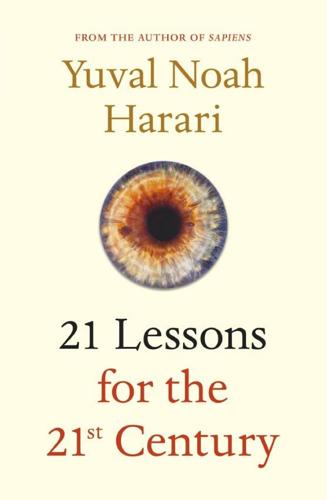
21 Lessons for the 21st Century
by
Yuval Noah Harari
Published 29 Aug 2018
Thirty thousand years ago, hunter-gatherer bands buried some members in sumptuous graves replete with thousands of ivory beads, bracelets, jewels and art objects, while other members had to settle for a bare hole in the ground. Nevertheless, ancient hunter-gatherer bands were still more egalitarian than any subsequent human society, because they had very little property. Property is a prerequisite for long-term inequality. Following the Agricultural Revolution, property multiplied and with it inequality. As humans gained ownership of land, animals, plants and tools, rigid hierarchical societies emerged, in which small elites monopolised most wealth and power for generation after generation. Humans came to accept this arrangement as natural and even divinely ordained.
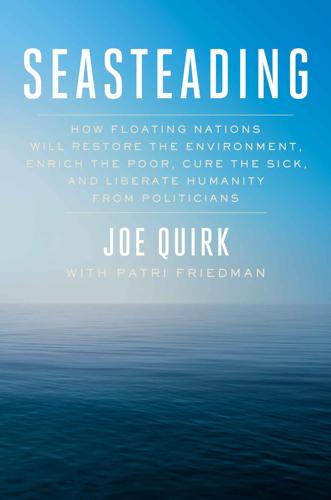
Seasteading: How Floating Nations Will Restore the Environment, Enrich the Poor, Cure the Sick, and Liberate Humanity From Politicians
by
Joe Quirk
and
Patri Friedman
Published 21 Mar 2017
A third-generation Friedman realized that the assumption contained in the phrase “from the ground up” was the problem. Our terrestrially trained minds are blind to the terrifying potential for tyranny in the power to claim land—fixed, immobile, where people have no choice but to live. At least since the agricultural revolution, humanity’s wealth and status had come from the power to control land and those who cultivate it. But that was about to change. A machinery of freedom was developing that would soon render citizens free to choose among governments and to disempower governments to claim monopoly control over land.
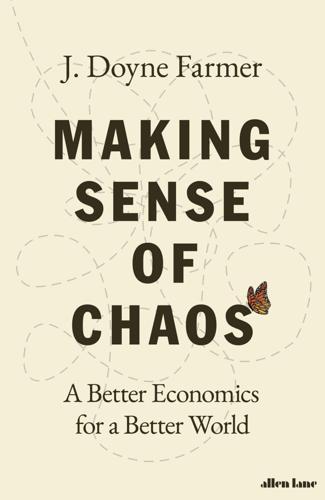
Making Sense of Chaos: A Better Economics for a Better World
by
J. Doyne Farmer
Published 24 Apr 2024
The idea that thought and consciousness are purely mechanical processes, that can be explained from the bottom up, is so radical and difficult to fathom that it was not widely accepted until the twentieth century. Given that farming was not invented by Homo sapiens until what we term the agricultural revolution of about 10,000 years ago, how could simple creatures like ants have been doing something similar for millions of years? Complex systems like the brain or an ant colony are called adaptive complex systems. They are distinguished from ordinary complex systems with simpler emergent behaviors by the fact that their properties have evolved over time, through a process of selection.
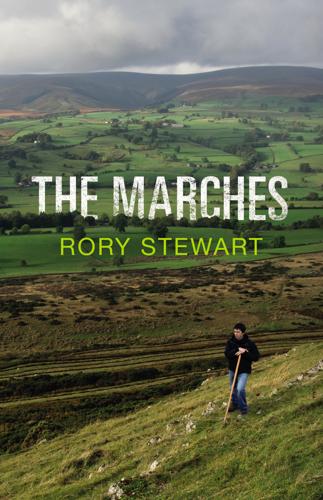
The Marches: A Borderland Journey Between England and Scotland
by
Rory Stewart
Published 14 Jul 2016
When they cleared the land – standing in cold water, in their rough gowns, thin from their sparse diet, tired from their hard beds and the bells that never allowed them more than three hours’ sleep – they did so because it was a practice that they believed strengthened their prayers. They continued, generation after generation, in this practice for 300 years. The unintended by-product of their faith was an agricultural revolution. Working alongside lay brothers and serfs, they dug great ditches to drain the heaped glacial debris, burned some of the peat-spoil for fuel, and stacked the rest into turf walls. As the turf died, the monks planted hawthorn hedges on these banks, which allowed them to keep sheep and cattle whose grazing removed the heather, further drying the peat.
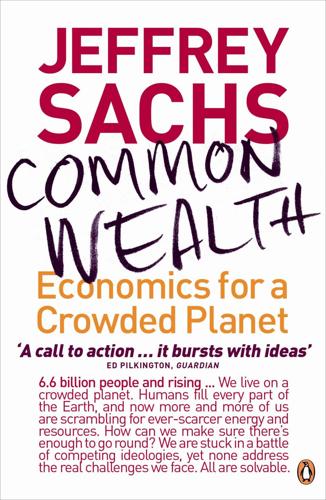
Common Wealth: Economics for a Crowded Planet
by
Jeffrey Sachs
Published 1 Jan 2008
As explained in 1968 by USAID administrator William Gaud: [T]he developing nations—their governments, their institutions, and their farmers—cannot sustain the Green Revolution without outside support. They lack the skills to do the necessary adaptive research. They lack the capital to build fertilizer plants. They lack the facilities and the technicians needed to train their people in the new ways. If this agricultural revolution is to succeed, it can only do so as the result of a working partnership between the advanced and the developing nations…. This is why fertilizer is rapidly becoming the largest single element in the A.I.D. program. This is why A.I.D. is backing a growing number of American companies in their efforts to put up fertilizer plants in countries which are seeking to expand their production of food.
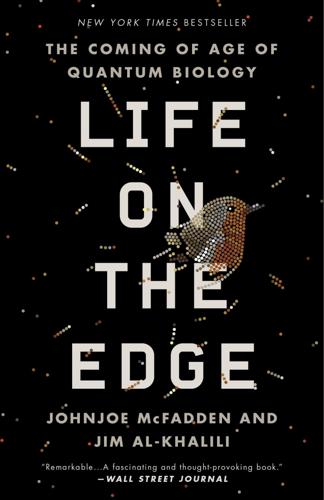
Life on the Edge: The Coming of Age of Quantum Biology
by
Johnjoe McFadden
and
Jim Al-Khalili
Published 14 Oct 2014
Catalysts are substances that accelerate ordinary chemical reactions and were already familiar to chemists in the nineteenth century. Indeed, many of the chemical processes that drove the industrial revolution depended crucially on catalysts. For example, sulphuric acid was an essential chemical that spurred both the industrial and agricultural revolutions, used in iron and steel manufacture, in the textile industry and for the manufacture of phosphate fertilizer. It is produced by a chemical reaction that starts off with sulphur dioxide (SO2) and oxygen (the reactants), both of which react with water to form the product: sulphuric acid (H2SO4).
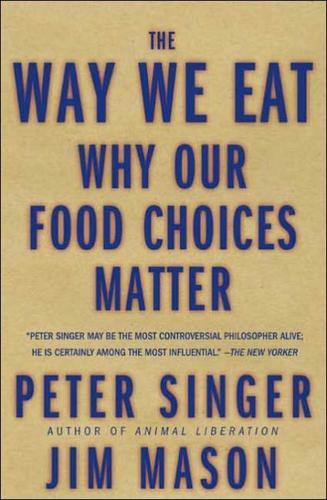
The Way We Eat: Why Our Food Choices Matter
by
Peter Singer
and
Jim Mason
Published 1 May 2006
Tests carried out for The New York Times in March 2005 showed that six out of eight New York City stores, including gourmet haven Dean & DeLuca, were selling farmed salmon labeled-and priced-as the far more expensive wild salmon. The difference can be detected in the laboratory by the presence of an artificial coloring fed to farmed fish in order to turn their otherwise grayish flesh pink. The flesh of wild salmon is naturally pink because of the krill they eat.'4 Fish farming is the latest agricultural revolution and the fastest growing form of food production in the world. In 1970 it contributed only 3 percent of the world's seafood. Now about a third of the fish and other seafood we eat is farmed; the weight of farmed fish produced exceeds that of the global production of beef.15 Almost all of this is highly intensive production.
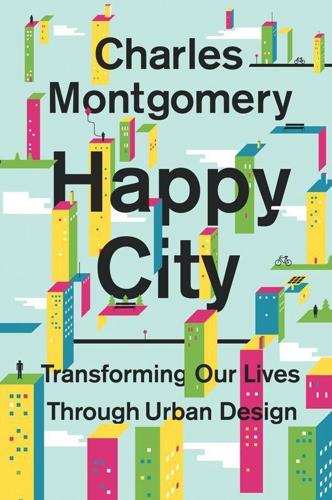
Happy City: Transforming Our Lives Through Urban Design
by
Charles Montgomery
Published 12 Nov 2013
Jorritsma, and N. Kalfs, Beleving en beeldvorming van mobiliteit (The Hague: Kennisinstituut voor Mobiliteitsbeleid, 2007). To put our history: My comparison of human history to the walk across the length of Central Park is based on these figures: Appearance of Australopithecus: 4 million years Agricultural revolution: 10,000 years ago Sumerian and Egyptian cities of cut stone: 3,000 years Length of Central Park: about 2.5 miles Width of Fifty-ninth Street: much more than 11 yards Width of New York sidewalk at Fifty-ninth: more than 3 yards Depth of a stair: much more than 4 inches See Wright, Ronald, A Short History of Progress (Toronto: Anansi Press, 2004), 35–69; Stringer, Chris, and Robin McKie, African Exodus: The Origins of Modern Humanity (New York: Henry Holt, 1997); Cordain, Gotshall, and Eaton, “Evolutionary Aspects,” 49–60; also drawn from interviews with Ronald Wright.
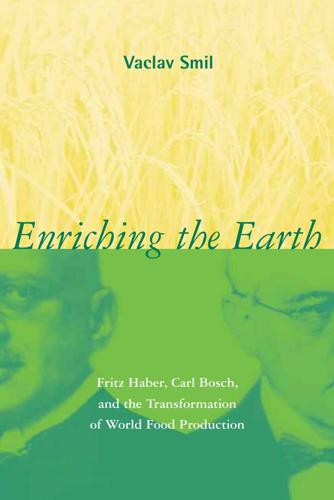
Enriching the Earth: Fritz Haber, Carl Bosch, and the Transformation of World Food Production
by
Vaclav Smil
Published 18 Dec 2000
Man and Land in Chinese History: An Economic Analysis. Stanford: Stanford University Press, p. 89. 51. According to Chorley’s estimates, even as late as 1770 the recycled organic matter supplied no more than 1/3 of all nitrogen inputs in Northwest Europe’s farming; see Chorley, G. P. H. 1981. The agricultural revolution in Northern Europe, 1750–1880: Nitrogen, legumes, and crop productivity. Economic History 34:71–93. 52. Ibid., p. 85. 53. Campbell, M. S., and M. Overton. 1993. A new perspective on medieval and early modern agriculture: six centuries of Norfolk farming c. 1250–c. 1850. Past and Present 141:38– 105. 54.

What to Think About Machines That Think: Today's Leading Thinkers on the Age of Machine Intelligence
by
John Brockman
Published 5 Oct 2015
For example, an intelligent robot holding a tool will realize that it has the option of leveraging that tool to alter its environment in new ways, thus allowing it to reach a larger set of potential futures than it could without one. Technology revolutions have always increased human freedom along some physical dimension. The Agricultural Revolution, with its domestication of crops, provided our hunter-gatherer ancestors with the freedom to spatially distribute their populations in new ways and with higher densities. The Industrial Revolution yielded new engines of motion, enabling humanity to access new levels of speed and strength.
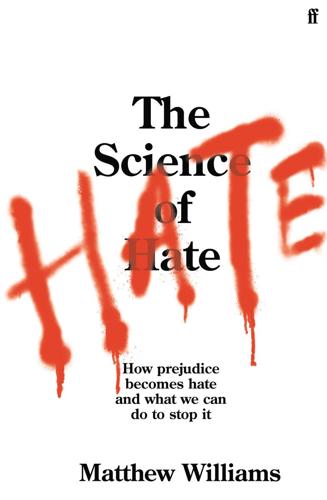
The Science of Hate: How Prejudice Becomes Hate and What We Can Do to Stop It
by
Matthew Williams
Published 23 Mar 2021
Any errors in the reproduction of the conversations here are my own. ** I use ‘fear’ and ‘aggression’ interchangeably to describe the amygdala’s responses in this section. Fear and aggression are the possible outcomes of detecting threat and relate to the ‘fight or flight’ response. †† Before the agricultural revolution around twelve thousand years ago, humans almost exclusively relied on hunting and gathering to survive. It is commonly thought that the main threats to the survival of hunter-gatherers in this period were animal predators, environmental hazards and other humans (and likely in that order). ‡‡ The prefrontal cortex is divided into regions, each with their own specific function.
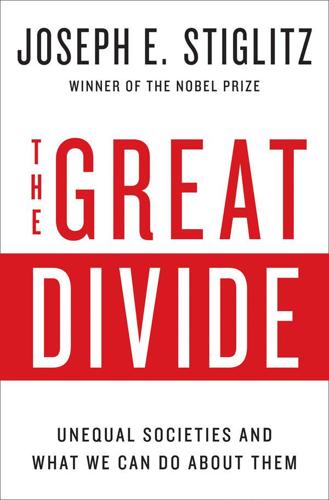
The Great Divide: Unequal Societies and What We Can Do About Them
by
Joseph E. Stiglitz
Published 15 Mar 2015
The left understands that the government’s role in providing infrastructure and education, developing technology, and even acting as an entrepreneur is vital. Government laid the foundations of the Internet and the modern biotechnology revolutions. In the 19th century, research at America’s government-supported universities provided the basis for the agricultural revolution. Government then brought these advances to millions of American farmers. Small business loans have been pivotal in creating not only new businesses, but whole new industries. The final difference may seem odd: the left now understands markets, and the role that they can and should play in the economy.
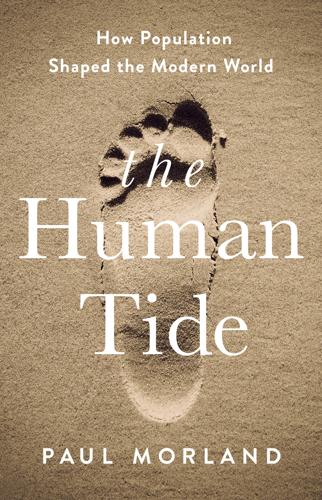
The Human Tide: How Population Shaped the Modern World
by
Paul Morland
Published 10 Jan 2019
As Malthus put it: ‘The power in population is so superior to the power in the earth to produce subsistence for man, that premature death must in some shape or other visit the human race.’3 Although Malthus had provided a landmark account of human development up to that point, the world was changing around him even as he wrote. With the arrival in his native Britain of the agricultural revolution followed by the industrial revolution, food production and trade were transformed, enabling the population to grow way beyond any previous bounds.4 Population size was no longer constrained by what could be produced locally. An industrialised country could sell its products on world markets and buy its food from around the globe.

Apollo's Arrow: The Profound and Enduring Impact of Coronavirus on the Way We Live
by
Nicholas A. Christakis
Published 27 Oct 2020
Of course, even when humans lived in a more agrarian way, plagues still occurred, fueled by the densely packed cities where conditions were far worse than those in cities today. And farm living alone does not protect people from plagues. In some ways, this again reminds us that the virus is very effective in exploiting features of how humans live, albeit especially how they have lived since the agricultural revolution. Neither farms nor cities were features of our more distant evolutionary past, prior to approximately ten thousand years ago; they arose as humans abandoned a hunter-gatherer way of life, which, with much smaller groups of people and more limited interactions between them, was much less prone to explosive pandemics.
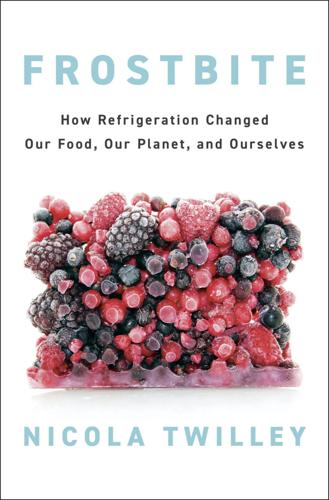
Frostbite: How Refrigeration Changed Our Food, Our Planet, and Ourselves
by
Nicola Twilley
Published 24 Jun 2024
A B C D E F G H I J K L M N O P Q R S T U V W X Y Z A Adams, Arthur Barto, 114, 284 Adams, Frederick Upham, 138, 140, 160 Afghanistan, 116, 317 Africa Centre of Excellence for Sustainable Cooling and Cold Chain (ACES), 285–88, 291–94, 298–301, 311 agribusinesses, 169, 209, 288, 292–93. See also specific businesses Agricultural Revolution, 37–38 agriculture controlled atmosphere and, 121, 125 and diet/health, 264–65 gene banks, 316–18, 320 industrialization of, 169 introduction of, 37–40 prerefrigeration, 244 urban, 312 See also farmers air conditioning, 8, 86, 165–66, 182, 293 air freight, 21, 23, 174–78, 209, 282, 316 Alden, Charles, 70 Amana, 228–30 Amato (Americold supervisor), 4, 14, 16–17, 21 Amazon.com, 243 Ambrosi, Jimmy, 12–13, 16 American Civil War, 59–60, 263–64 American Linde Refrigerating Company, 140 American Society of Heating, Refrigerating, and Air-Conditioning Engineers (ASHRAE), 296 American Warehousemen’s Association, 94 Americold, 3–4, 9–17, 21–23, 194–95, 198–201 Anheuser-Busch, 20 antebellum puzzle, 263–66 Anthropocene, 106–7 Antle, Bud, 127–28 Apeel Sciences, 301–8 Appert, Nicolas, 38–39 apples, 33, 83, 267 ethylene and, 131–32, 135–36, 239–41 farming/harvesting of, 178, 252 preservation/storage of, 111–12, 114–24, 129–32, 156–58 shipping of, 174, 182, 189 spray coating for, 306 Argentina, 22, 70, 76–77, 81–82 Armour, 82, 167 Armour, Philip, 90 Asdal, Åsmund, 316, 318–20 atmospheric engineering/modification, 112, 116–18, 136, 141–46, 158, 239.
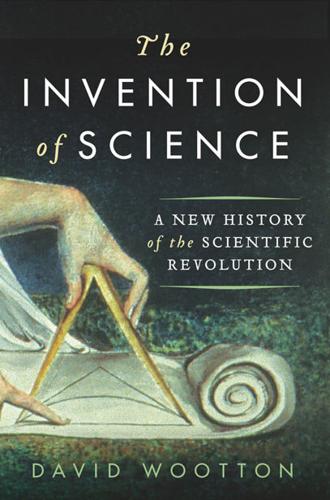
The Invention of Science: A New History of the Scientific Revolution
by
David Wootton
Published 7 Dec 2015
Barber, William H. ‘The Genesis of Voltaire’s “Micromégas” ’. French Studies 11 (1957): 1–15. Barbette, Paul. The Chirurgical and Anatomical Works . . . Composed according to the Doctrine of the Circulation of the Blood, and Other New Inventions of the Moderns. London: J Darby, 1672. Barker, Graeme. The Agricultural Revolution in Prehistory: Why Did Foragers become Farmers? Oxford: Oxford University Press, 2006. Barker, Peter. ‘Copernicus and the Critics of Ptolemy’. Journal for the History of Astronomy 30 (1999): 343–58. ———. ‘Copernicus, the Orbs and the Equant’. Synthèse 83 (1990): 317–23. Barker, Peter and Bernard R Goldstein.
…
Harrison, ‘Reassessing the Butterfield Thesis’ (2006), 7, argues that the concept of the Scientific Revolution is incoherent because there is no way of knowing when it began and when it ended. I disagree: the concept would be coherent even if the dates were uncertain (compare the ‘Industrial Revolution’), but actually the dates are fairly easy to specify. CHAPTER 1 1. Borges, The Total Library (2001), 465. 2. Barker, The Agricultural Revolution in Prehistory (2006). 3. Stein, Everybody’s Autobiography (1937), 289. 4. Turgot’s A Philosophical Review of the Successive Advances of the Human Mind was written in 1750 but not published until the nineteenth century (Turgot, Turgot on Progress (1973)); Condorcet, Outlines of an Historical View of the Progress of the Human Mind (1795) – original French edition the same year; Bury, The Idea of Progress (1920). 5.
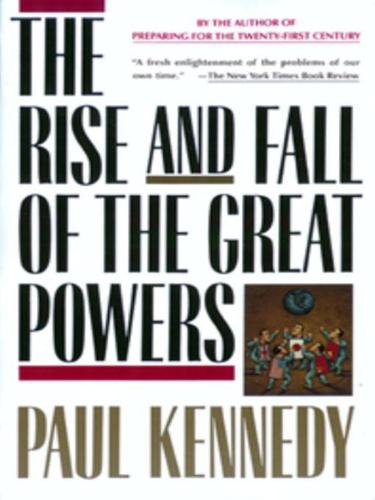
The Rise and Fall of the Great Powers: Economic Change and Military Conflict From 1500 to 2000
by
Paul Kennedy
Published 15 Jan 1989
Nevertheless, there seems no doubt that the rate of growth in the French economy was much slower than in Britain’s. The most profound reason for this was that the agricultural sector, the largest by far, changed very little: for the replacement of the seigneur by his peasants was not, of itself, an agricultural revolution; and such widely proclaimed policies as the development of sugar beets (in substitution for British colonial cane sugar) had limited results. Poor communications meant that farmers were still tied to local markets, and little stimulus existed for radical innovations. This conservative frame of mind could also be seen in the nascent industrial sector, where new machinery and large-scale enterprises in, say, iron production were the exception rather than the rule.
…
But all this took time, and the handicaps remained severe.40 Although the urban population more than doubled between 1890 and 1913, numbers engaged on the land remained about the same. Even on the eve of the First World War, over three-fifths of the Japanese population was engaged in agriculture, forestry, and fishing; and despite all the many improvements in farming techniques, the mountainous countryside and the small size of most holdings prevented an “agricultural revolution” on, say, the British model. With such a “bottom-heavy” agricultural base, all comparisons of Japan’s industrial potential or of per capita levels of industrialization were bound to show it at or close to the lower end of the Great Power lists (see Tables 14 and 17 above). While its pre-1914 industrial spurt can clearly be detected in the large rise of its energy consumption from modern fuels and in the increase in its share of world manufacturing production, it was still deficient in many other areas.
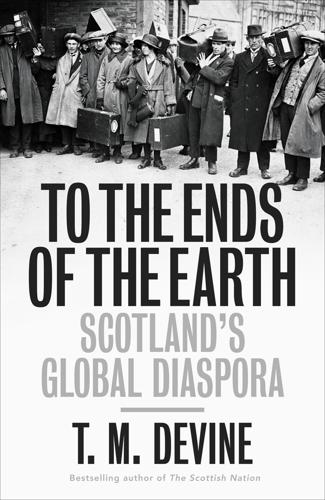
To the Ends of the Earth: Scotland's Global Diaspora, 1750-2010
by
T M Devine
Published 25 Aug 2011
The Scottish Enlightenment thinkers had both legitimized this quest and encouraged it and so Man’s relationship to his environment was radically altered. Nature was no longer to be regarded as fixed and preordained but instead could be changed for the better by rational, planned and systematic intervention.30 The striking success of the agricultural revolution in Scotland was such that by the early nineteenth century admiring visitors came from far and wide to learn how a formerly poor country with much marginal, hilly and uncultivable land had managed to achieve such a miracle. As a spin-off, Scottish practitioners – from animal breeding through to gardening – gained worldwide fame.
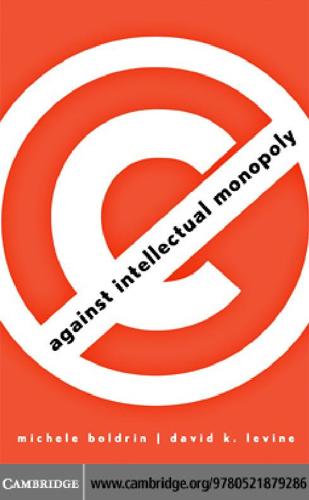
Against Intellectual Monopoly
by
Michele Boldrin
and
David K. Levine
Published 6 Jul 2008
Scotchmer (1999) “Database Protection: Is It Broken and Should We Fix It?” Science 284, 1129–30. May, E. R. (2005), “When Government Writes History: The 9–11 Commission Report,” History News Network, available at http://hnn.us/articles/11972.html. McClelland, P. D. (1997), Sowing Modernity: America’s First Agricultural Revolution. Ithaca, NY: Cornell University Press. McKenzie, L. W. (1981), “The Classical Theorem on Existence of Competitive Equilibrium,” Econometrica 49, 819–41. Meyer-Thurow, G. (1982), “The Industrialization of Invention: A Case Study from the German Chemical Industry,” Isis 73 (3), 363–81. Morris, P.
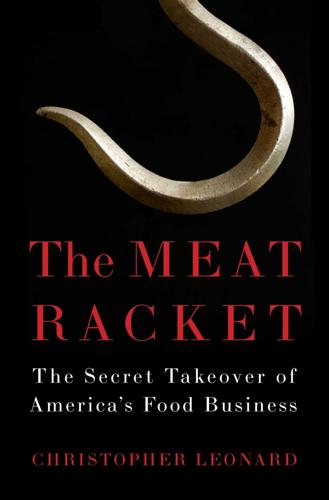
The Meat Racket: The Secret Takeover of America's Food Business
by
Christopher Leonard
Published 18 Feb 2014
The survivors were the companies that relentlessly controlled their costs, pushing every possible penny of waste out of their system, even when they were turning a profit. Tyson’s evolution during the 1960s unfolded quietly, beyond the notice of most Americans, who were concerned with the Vietnam War and rise of its youthful counterculture. But the agricultural revolution that took place in far-flung southern towns set the stage for a modern industry dominated by a few titanic companies. The lessons Don Tyson learned during those years were etched into Tyson’s corporate DNA and therefore began to shape the future of America’s rural economy. * * * Don Tyson spent a lot of time with bankers.
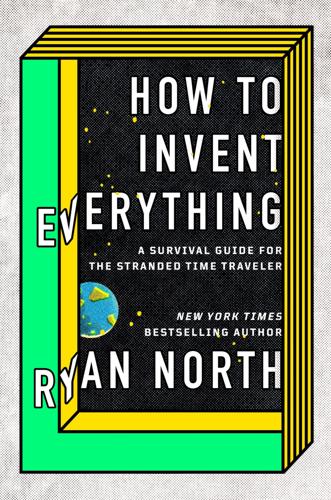
How to Invent Everything: A Survival Guide for the Stranded Time Traveler
by
Ryan North
Published 17 Sep 2018
“The Extraction of Opium Alkaloids.” United Nations Office on Drugs and Crime. https://www.unodc.org/unodc/en/data-and-analysis/bulletin/bulletin_1950-01-01_3_page004.html. Bardell, David. 2004 CE. “The Invention of the Microscope.” BIOS: A Quarterly Journal of Biology 75 (2): 78–84. Barker, Graeme. 2009 CE. The Agricultural Revolution in Prehistory: Why Did Foragers Become Farmers? Oxford University Press. Basalla, George. 1988 CE. The Evolution of Technology. Cambridge University Press. Benjamin, Craig G. 2016 CE. “The Big History of Civilizations.” The Great Courses. Berger, A. L. 1976 CE. “Obliquity and Precession for the Last 5,000,000 Years.”
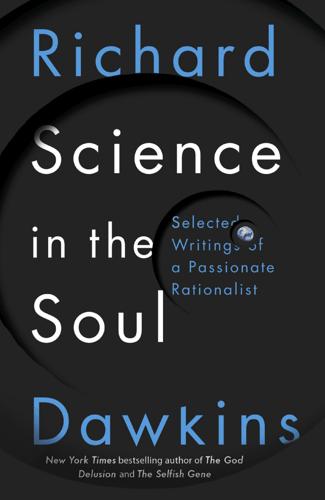
Science in the Soul: Selected Writings of a Passionate Rationalist
by
Richard Dawkins
Published 15 Mar 2017
Almost every morsel of our food is genetically modified – admittedly mostly by artificial selection not artificial mutation, but the end result is the same. A wheat grain is a genetically modified grass seed, just as a pekinese is a genetically modified wolf. Playing God? We’ve been playing God for centuries! The large, anonymous crowds in which we now teem began with the agricultural revolution, and without agriculture we could survive in only a tiny fraction of our current numbers. Our high population is an agricultural (and technological and medical) artefact. It is far more unnatural than the population-limiting methods condemned as unnatural by the Pope. Like it or not, we are stuck with agriculture, and agriculture – all agriculture – is unnatural.

Evil Genes: Why Rome Fell, Hitler Rose, Enron Failed, and My Sister Stole My Mother's Boyfriend
by
Barbara Oakley Phd
Published 20 Oct 2008
This adapted the Indians to the cold and allowed them to more easily live in, and cross, the frigid regions of Siberia and Beringia on their way to the Americas.14 Tibetans and inhabitants of the Andes and high African plateaus have acquired differing suites of genetics that allow them to breathe more easily at high altitudes. The agricultural revolution, beginning some ten thousand years ago, has fueled even more extraordinary changes. Once we humans took charge of growing our own food, we didn't need such a razor-sharp ability to sniff out prey or poison. Consequently, we've begun to lose the genes that gave us olfactory abilities.b.15 And since we now don't generally forage among potentially dangerous plants, we are also losing the genes that detoxify natural plant poisons—a change that means some people can still quickly clear medications from their bodies, and others seem to have lost that ability.
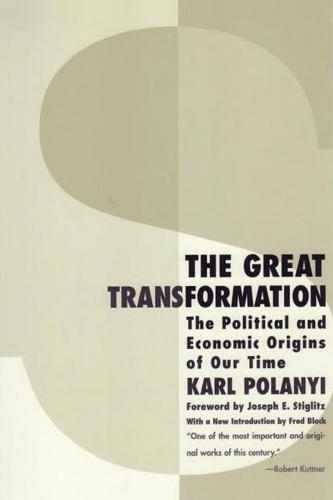
The Great Transformation: The Political and Economic Origins of Our Time
by
Karl Polanyi
Published 27 Mar 2001
The “undistinguishing benevolence of power,” of which the overseers of the poor complained, was at its best in that role of “Tory socialism” in which the justices of peace swayed the benevolent power, while the brunt of the rates was borne by the rural middle class. The bulk of yeomanry had long vanished in the vicissitudes of the Agricultural Revolution, and the remaining lifeholders and occupying-proprietors tended to merge with the cottagers and scrap-holders into one social stratum in the eyes of the potentate of the countryside. He did not too well distinguish between needy people, and people who happened to be in need; from the lofty heights from which he was watching the struggling life of the village there seemed to be no hard-and-fast line separating the poor from the destitute, and he may have been not unduly surprised to learn in a bad year that a small farmer was going “on the rates,” after having been ruined by their disastrous level.
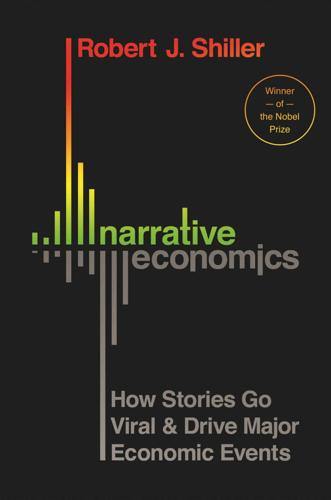
Narrative Economics: How Stories Go Viral and Drive Major Economic Events
by
Robert J. Shiller
Published 14 Oct 2019
Telegraphs became automatic. Armies of linotype machines in multiple cities allowed one central operator to set type for printing newspapers by remote control. New machines dug ditches. Airplanes had robot copilots. Concrete mixers laid and spread new roads. Tractors and reaper-thresher combines created a new agricultural revolution. Sound movies began to replace the orchestras that played at movie theaters. And of course the decade of the 1930s saw massive actual unemployment in the United States, with the unemployment rate reaching an estimated 25% in 1933. It is difficult to know which came first, the chicken or the egg.
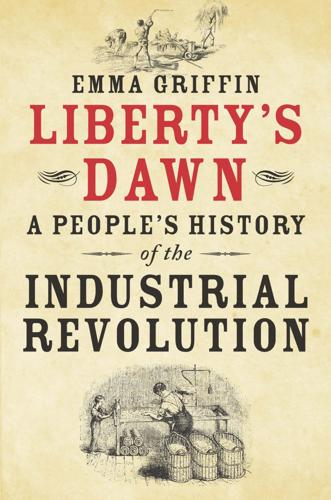
Liberty's Dawn: A People's History of the Industrial Revolution
by
Emma Griffin
Published 10 Jun 2013
For women in agriculture, see Nicola Verdon, Rural Women Workers in Nineteenth- Century England (Woodbridge, 2002); idem, ‘The rural labour market in the early nineteenth century: women’s and children’s employment, family income, and the 1834 Poor Law Report’, Economic History Review, 55/2 (2002), pp. 299–323; Joyce Burnette, ‘Labourers at the Oakes: changes in the demand for female day-laborers at a farm near Sheffield during the agricultural revolution’, Journal of Economic History, 59 (1999), pp. 41–67; Deborah Valenze, ‘The art of women and the business of men: women’s work and the dairy industry, c. 1740–1840’, Past and Present, 130 (1991), pp. 142–69. 24. For mothers working on smallholdings, see Errington, p. 44; Goodliffe, no pag.
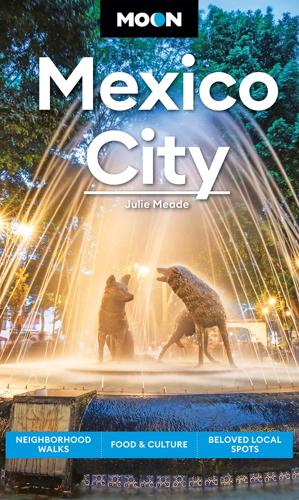
Moon Mexico City: Neighborhood Walks, Food & Culture, Beloved Local Spots
by
Julie Meade
Published 7 Aug 2023
THE FIRST INHABITANTS OF THE VALLEY Groups of nomads arrived in the Valle de México sometime around 20,000 BC. Over the next several thousand years, the valley’s population grew to rely on gathering fruits and grains, especially maize, until agricultural societies established themselves in the third millennium BC. The agricultural revolution created profound changes in social organization. Between 1500 and 650 BC, the villages around the valley’s lakes grew. The first full-fledged city to develop was Cuicuilco, centered around a pyramid site located at what is now the junction of Insurgentes Sur and Periférico Sur. By 100 BC a second city was growing at Teotihuacán in the north.

I You We Them
by
Dan Gretton
In December 1847 and January 1848, they worked together writing The Communist Manifesto, which was first published in London on 21 February 1848.10 Marx viewed what was happening across the Irish Sea with horror, regarding ‘the starving of Ireland into submission’ as a key example of the European class struggle between the bourgeoisie and the working class.fn17 We also know from his later work that he continued to reflect on the Famine and its aftermath – this in a famous footnote in Das Kapital: the famine and its consequences have been deliberately made the worst of, both by the individual landlords and by the English legislature, to forcibly carry out the agricultural revolution and to thin the population of Ireland down to the proportion satisfactory to the landlords.fn18 He even references the cynicism of Nassau Senior, and goes on to quote from Senior’s work Journals, Conversations and Essays relating to Ireland: ‘Well … we have got our Poor Law and it is a great instrument for giving the victory to the landlords.
…
His portrait of Ireland bristles with anger, describing the living conditions of agricultural labourers there in the 1840s as of a ‘hideousness [which] far surpasses the worst that English agricultural labourers’ experience.’ He quotes an inspector in 1861 saying that the housing conditions ‘are a disgrace to the Christianity and to the civilisation of this country’. After the Famine and the ‘agricultural revolution’ that followed, ‘many labourers were compelled to seek shelter in villages and towns. There they were thrown like refuse into garrets, holes, cellars and corners, in the worst back slums.’ In a powerful passage, Marx details the relentlessness and grinding poverty of an Irish factory worker’s life – seventeen-hour working days, twelve hours on Saturdays, for ten shillings sixpence a week.

Physics of the Future: How Science Will Shape Human Destiny and Our Daily Lives by the Year 2100
by
Michio Kaku
Published 15 Mar 2011
Now one person had the energy to harvest several acres of farmland, yielding enough surplus energy to support a rapidly expanding population. With the domestication of animals, humans no longer relied primarily on hunting animals for food, and the first stable villages and cities began to rise from the forests and plains. The excess wealth created by the agricultural revolution spawned new, ingenious ways to maintain and expand this wealth. Mathematics and writing were created to count this wealth, calendars were needed to keep track of when to plant and harvest, and scribes and accountants were needed to keep track of this surplus and tax it. This excess wealth eventually led to the rise of large armies, kingdoms, empires, slavery, and ancient civilizations.
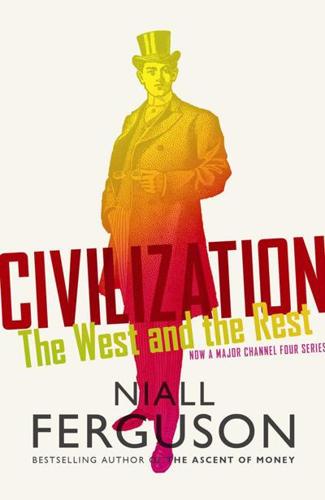
Civilization: The West and the Rest
by
Niall Ferguson
Published 28 Feb 2011
So did paper money, wallpaper and toilet paper.11 It is often asserted that the English agricultural pioneer Jethro Tull discovered the seed drill in 1701. In fact it was invented in China 2,000 years before his time. The Rotherham plough which, with its curved iron mouldboard, was a key tool in the eighteenth-century English Agricultural Revolution, was another innovation anticipated by the Chinese.12 Wang Zhen’s 1313 Treatise on Agriculture was full of implements then unknown in the West.13 The Industrial Revolution was also prefigured in China. The first blast furnace for smelting iron ore was not built in Coalbrookdale in 1709 but in China before 200 BC.
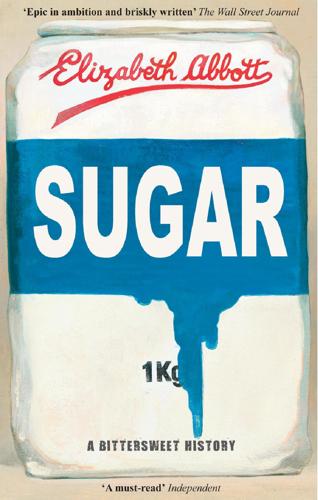
Sugar: A Bittersweet History
by
Elizabeth Abbott
Published 14 Sep 2011
Under the French, Jesuits and colonists had made sporadic attempts to cultivate cane, but it was the planters and sugar experts fleeing the Haitian Revolution, and the collapse of Haiti’s sugar production, that transformed it into a sugar economy. In 1795, American-born Jean Étienne Boré sparked an agricultural revolution when he applied Haitian sugar maker Antoine Morin’s techniques for processing sugar to his crop and produced 100,000 pounds of sugar granules. This earned him $12,000 and the title “savior of Louisiana.” Until then, planters had had to be content with making molasses. By 1812, when Louisiana joined the United States as a slave state, it had seventy-five sugar mills, Anglo-Americans had begun their trek into this new and profitable way of life and Frenchmen and Haitians continued to arrive.

Connectography: Mapping the Future of Global Civilization
by
Parag Khanna
Published 18 Apr 2016
While global production and distribution networks are expanding, new technologies such as more efficient photosynthesis could massively boost local crop yields even in inhospitable climates. (The Gates Foundation recently announced that empowering African farmers to achieve food self-sufficiency would be its top priority until 2030.) Aquaponics represents another agricultural revolution: data centers for food. These high-tech greenhouses need neither natural light nor soil and only one-third the water of even organic farming, so they don’t have to be greenhouses at all. The California start-up Famgro uses LED light in stackable units that look like tarpaulin-covered computing servers and grow food 24/7.
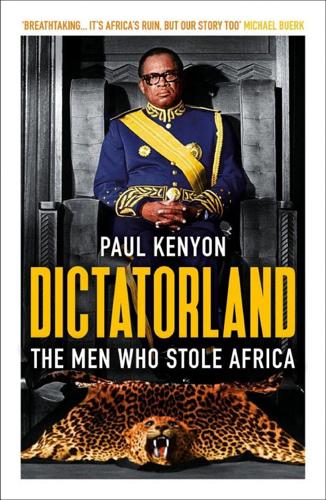
Dictatorland: The Men Who Stole Africa
by
Paul Kenyon
Published 1 Jan 2018
Agriculture required loving attention, efficient organization of labour, and the luck of the gods when it came to harvests. The president offered relocation packages to tempt people away from the barren savannah regions into the fertile central forests. He invited people from neighbouring countries too. ‘Come and resettle,’ was the message, ‘and be part of an agricultural revolution.’ He gave farmers generous deals to acquire their own land, and educated them in the most advanced agricultural techniques. Soon the majority of the population were involved in his Ivoirian Miracle. In the first decade and a half of independence, coffee production increased by 200 per cent, cocoa production by 600, and pineapples by a staggering 4,000.

Capitalism in America: A History
by
Adrian Wooldridge
and
Alan Greenspan
Published 15 Oct 2018
It involved redesigning entire production processes and replacing vertical factories with horizontal ones to get the best out of the new power source.13 Some of the most important improvements in productivity take place without much fuss. Both steelmaking and farming witnessed astonishing improvements long after commentators had given up talking about the “age of steel” or the “agricultural revolution.” The oxygen furnaces that replaced open-hearth furnaces after the Second World War (and which as the name suggests used oxygen rather than air) reduced the time taken to produce a batch of steel from eight to nine hours to thirty-five to forty minutes. Between 1920 and 2000, labor requirements per ton of raw steel decreased by a factor of a thousand, from more than 3 worker-hours per metric ton to just 0.003.
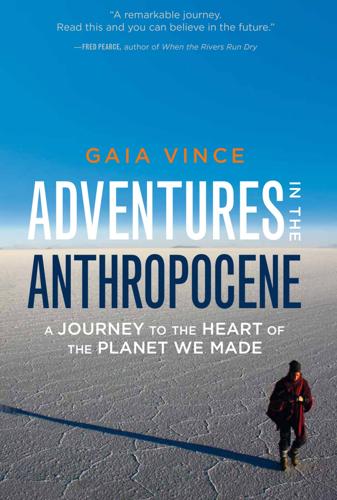
Adventures in the Anthropocene: A Journey to the Heart of the Planet We Made
by
Gaia Vince
Published 19 Oct 2014
‘With a tractor, you can plough, weed, harvest and dig stony ground. It would be wonderful.’ There are other areas, too, she hasn’t yet begun exploring, including trying pesticides to reduce diseases like leaf wilt in peanuts. And, in common with nearly all farmers in Africa, she can’t yet afford fertilisers. The Asian ‘Green’ agricultural revolution, which was funded by the United States Agency for International Development and the World Bank, passed Africa by, and irrigation, fertiliser use and mechanisation are rare to non-existent, leaving the continent the world’s least efficient food producer. Farmers in the US grow five times as much corn per acre as African smallholders, and synthetic fertilisers are key to this.
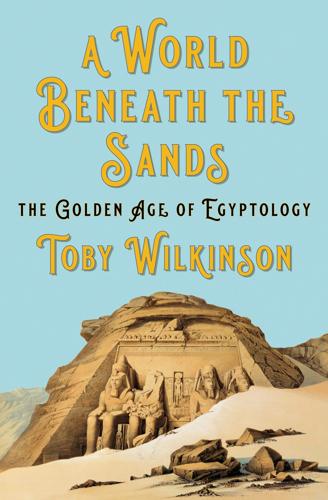
A World Beneath the Sands: The Golden Age of Egyptology
by
Toby Wilkinson
Published 19 Oct 2020
Abbas Hilmi I, Pasha 177, 184–5, 189 Abbas II, Khedive 308–9, 310, 333, 371, 373, 374 Abdel Aziz, Sultan 217, 223, 224 Abdel Latif el-Baghdadi 8 Abdul Hamid II, Sultan 248, 250, 251, 359 Abdulmejid I, Sultan 155, 203 Abeken, Hermann 149, 155 Abercromby, Sir Ralph 28 Abu Ghurab, Egypt 359 Abu Simbel, Egypt Plate 6, Plate 16, 33, 67, 96–7, 239–40, 336 Abydos, Egypt 116–17, 154, 193, 205, 221, 275, 337, 386 Académie Royale des Inscriptions et Belles-Lettres, Paris 47–8, 67–8, 71, 86, 103, 190, 196, 207, 369, 405 Account of Some Recent Discoveries in Hieroglyphical Literature and Egyptian Antiquities, An (Young) 68–70 Adelung, Johann 59 Adolphe, Louis 202 agricultural revolution 101, 370–1 Ägypten und ägyptisches Leben in Altertum (Erman) 285 Ahhotep, Queen, jewellery of 193, 197 Al-Ahram journal 102, 247 Aida (Verdi) 228 Åkerblad, Johan 60 Akhenaten, King, Amarna finds 118, 167, 286, 386–7, 424 Albert, Prince Consort 241 Aldersey, Laurence 9 Alexandra, Princess of Wales 226 Alexandria, Egypt Arabi’s rebellion 250–1 British invasion 250–1, 258 Champollion’s visit 91–2 Cleopatra’s Needles 92, 240–2 Duff Gordon’s visit 214–15 early European visitors 8, 9, 10 Europeanization 214–15, 375 during First World War 374–5 French invasion 25 Hermes Trismegistus community 11–12 Lane’s visit 127–8 new harbour 227 Pompey’s Pillar 92 railway 185, 203 sphinxes 181 Wilkinson’s visit 113 Allenby, Edmund, 1st Viscount 331, 381, 411 Amarna, Egypt Amarna Letters 286–7, 296–7, 363, 387, 425 Borchardt’s excavation 353, 361, 362, 363 concession taken from Germans 377–8 Nefertiti bust Plate 22, 353, 362–3, 380 paintings 424 Petrie’s excavation 391 Thutmose workshop 362 tombs 118 Tutankhamun references 386–7 Wilkinson’s visit 118 Amarna Period 167 Amélineau, Emile 386 Amenemhat III, King, sphinxes of 193 Amenhotep I, King portrayed in tomb of Rekhmira 154 tomb of 401 Amenhotep II, King, tomb of 310, 392–3 Amenhotep III, King dyad 334 lion statues 386 parents-in-law’s tomb 345 tomb 402 American Egyptology; see also specific scholars antiquities collections 320 Brooklyn Museum, NY 320, 322, 339 Chicago House, Thebes 331–2, 428 Egyptology as academic discipline 319, 323, 329, 341 excavations, rise in 338–9 Harvard University, MA 339, 341 international rivalries 364 Museum of Fine Arts, MA 339, 341, 343 Oriental Institute, University of Chicago, IL 330–1, 428 University of Chicago, IL 323–4, 326, 327–8, 329, 330–1 Amherst, Baron (William) and Lady (Amelia) 390, 391 Anastasi, Giovanni 36, 93, 155, 156 Ancient Egypt (Gliddon) 319 Ancient Egypt journal 368 Ancient Records of Egypt (Breasted) 328 Ancient Times (Breasted) 376, 402 Andraos, Boutros 393 Andrews, Emma 341–2, 348, 392–3, 394, 399 Angelelli, Giuseppe 89 Annales du Service des Antiquités d’Egypte (Antiquities Service) 334 Annali dell’ Istituto (IAC) 149 Antinoöpolis, Egypt 7 Antinous 7 Antiqakhana, Cairo 135, 197 antiquities dealers, native 121, 279, 292–3, 295, 296, 297–9, 322, 326 antiquities, destruction and loss of 87, 101–2, 135, 137–8, 163, 179, 211, 212, 239–40, 266–7, 278, 326–7 antiquities legislation 134–5, 157, 176, 263, 279–80, 311, 367–8, 410–11 Antiquities Service Annales du Service des Antiquités d’Egypte 334 Budge, attempt to block 295–8 Carter working for 392, 393–5, 399 concessions, granting 309, 310–11, 336–7, 350, 359, 361, 362, 377–8, 398, 399, 401, 426–7 conservation 271, 273, 278, 313, 332, 334, 335–7, 340 directors De Morgan 279, 283, 299, 309–10, 335, 425 Grébaut 274, 275, 276, 279, 283, 296, 297, 307–8, 309, 332 Lacau 376, 410–11, 416 Loret 310–11 Mariette see Mariette, Auguste Maspero see Maspero, Gaston Egyptianization 417, 428–9 excavations 193–4, 221, 257–8, 273, 423–4, 425 finds claimed for Egypt 410–11 during First World War 376 founding 192, 423 French hold on 230, 254, 283 improvements under Maspero 334 natives in senior roles 308 placed under Ministry of Public Works 259 Tutankhamun, finds from tomb of 417–18 Apis bull chapel, Saqqara 182 Apis bull sarcophagus, Saqqara 186 Arab conquest of Egypt 7–8 Arabian Nights (trans. by Lane) 131 Arabic–English Lexicon (Lane) 131, 142 Arabi’s rebellion 249–51 Arago, François 68, 71 Archaeological Survey of Egypt 301, 390–1 architecture, neo-Egyptian 13, 141 Architecture of Ancient Egypt, The (Wilkinson) 141 Arthur, Duke of Connaught 345 artistic representations of Egypt 20–1 Aswan Dam 335–6, 340 Aswan, Egypt 87, 216, 220, 293–4, 312 Austin, Henry W. 270 Austin, John 212 Austin, Lucie see Duff Gordon, Lucie Austin, Sarah 212, 225–6 Auswahl der wichtigsten Urkunden des Aegyptischen Altherthums (Lepsius) 152 Ayat, Mustafa Agha 221–2 Ayrton, Edward 315, 347, 349, 350, 388, 389 el-Bakeet, Hassan ‘Hatty’ 213 Balfour, Arthur 373 Balkan conflict 367 Bankes, William 34, 36–7, 66, 96, 108 Baring, Evelyn (Earl of Cromer from 1901) Plate 20 appointed consul-general 252 appointed controller-general 249 appointed controller of debt collection 246 as de facto ruler of Egypt 252 Abbas II Khedive 308–9, 373 British rule’s impact on antiquities 278 Carter’s Serapeum incident 394–5 Consultative Archaeological Committee 259 corvée, abolition of 259–60 crime rate in Egypt 369–70 diplomacy between European powers 259, 278, 279 education of Egyptians, opposition to 370 getting Maspero back to Egypt 312–13 Grébaut’s succession to Maspero 274 inquiry into Ismail’s finances 247 intelligence service 372 Mahdist Rebellion 312 martial law 372 non-understanding of and contempt for Egyptians 372 upsetting British Egyptologists 278, 279, 293, 295 veiled protectorate rather than annexation 373 death 376 disinterest in archaeology 259 Maspero’s opinion of 272 Modern Egypt 338 retirement 337 Barry, Charles 36, 396 Barsanti, Alexandre 336 Barthélemy, Jean-Jacques 56 Battle of Abukir Bay, second 27–8, 38 Battle of Navarino 90, 119, 133 Battle of Omdurman 312 Battle of Tel el Kebir 251 Battle of the Nile 25, 200 Battle of the Pyramids 25 Battle of Waterloo 30 Belzoni, Giovanni 1, Plate 2, 31–5, 37, 62, 96, 218 Beni Hasan, Egypt 118, 154, 391 Benjamin of Tudela, Rabbi 7–8 ‘Bericht über die Lage der deutschen Ägyptologie in Kairo’ (Erman) 360 Berlin Academy of Sciences/Royal Academy 148, 149–50, 154, 172, 288, 328, 356, 358, 361; see also Prussian expedition to Egypt Berlin museums Amarna Letters 286, 296, 425 antiquities, acquisition of 149, 150, 154, 163, 166, 356–7, 361 Egyptian galleries 168, 169–70, 179, 283 Erman’s directorship 284, 286–7, 363 Erman’s forced retirement 363, 368 Green Head 286–7 Lepsius’ access to 156 Nefertiti, bust of 363 Berlin University 152, 168–9, 273, 324, 363 el-Bersha, Egypt 391 Bertin, Edouard 88 Bibent, Antoine 88 Birch, Samuel 116, 139–40, 238, 260, 265, 290–1, 292 Bissing, Friedrich von 359 Blacas d’Aulps, Pierre, Duke of 71, 79, 84–5, 88 Boeckh, August 151–2 Bonaparte, Napoleon Plate 1 battles 25, 27–8, 30, 38, 200 death 112 Description de l’Egypte (French government) 53–5, 77 Egyptian expedition 22–8, 28–9, 30, 33, 49, 52 Giza, visit to 26–7 Institut National, speaking at 59 Josephine 51–2 seizing power 28 Bonnefoy, Marius 181, 184, 193, 195 Bonomi, Joseph 116, 155, 238 Boodle, L.

American Girls: Social Media and the Secret Lives of Teenagers
by
Nancy Jo Sales
Published 23 Feb 2016
“We are in uncharted territory,” when it comes to sex and the Internet, says Justin Garcia, a research scientist at Indiana University’s Kinsey Institute for Research in Sex, Gender, and Reproduction. “There have been two major transitions” in heterosexual mating, Garcia says, “in the last four million years. The first was around ten thousand to fifteen thousand years ago, in the agricultural revolution, when we became less migratory and more settled,” leading to the establishment of marriage as a cultural contract. “And the second major transition is with the rise of the Internet,” Garcia says. Suddenly, instead of meeting through proximity, community connections, and family and friends, people could meet each other virtually and engage in amorous activity with the click of a button.
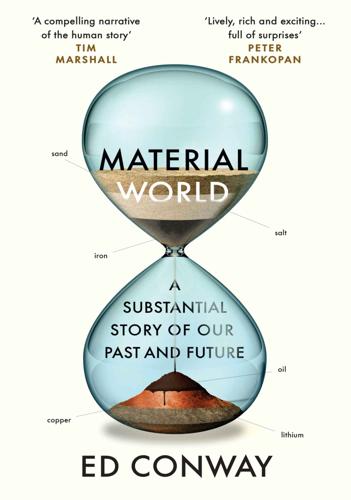
Material World: A Substantial Story of Our Past and Future
by
Ed Conway
Published 15 Jun 2023
The saltern – salt factory – here was up and running, churning out salt and cheese and possibly other products too, a thousand years before Stonehenge’s standing stones were even erected. Ponder that for a moment: a millennium before one of the world’s most famous ancient monuments was constructed, the people here were already mass producing products and trading them. This settlement is a kind of missing link between the agricultural revolution and everything that followed. The people who worked here – who are thought to have come across from mainland Europe, possibly from France – had brought with them knowledge about how to turn natural resources into a product, before selling or trading it onwards. Squint a bit, and you can see the very origins of what some might now call intellectual property, tech transfer and, for that matter, capitalism.
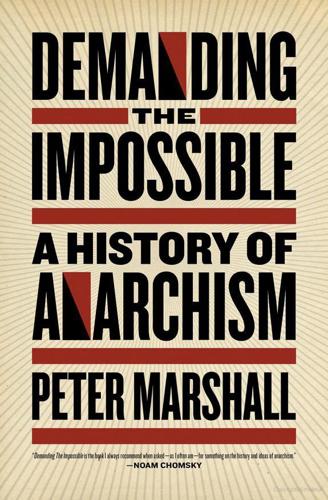
Demanding the Impossible: A History of Anarchism
by
Peter Marshall
Published 2 Jan 1992
Zerzan makes no bones about it; he is quite simply Against Civilization (1999) and all that it stands for: its wars, hierarchy, division of labour, symbolic thought, machines, environmental destruction and mass psychology of misery. As the best form of human society so far, he looks back to the hunter-gatherers who lived lightly on the land and shared goods without a central authority and hierarchy. The ‘wrong turn’ for humanity was therefore the Agricultural Revolution, which was much more fundamental than the Industrial Revolution. Drawing on archaeology and anthropology, he further argues for the superior health and well-being of the hunter-gatherers: ‘life before domestication/agriculture was in fact largely one of leisure, intimacy with nature, sensual wisdom, sexual equality, and health.’38 The Great Settlement led to social hierarchy, the oppression of the many by the few, the subjugation of women and the exploitation and destruction of the planet.
…
‘I’. 529 Action Française 442 Acts of the Apostles 76, 95 Adam 41 Adamites 87 Adler, Alfred 46–7, 225 Adorno, Theodor 603, 612 L’Adunata dei Refrattari 501 affinity groups 617, 663, 672, 697 Afghanistan 670 Africa 686, 704 aggression 595–6 L’Agitazione 350 Agrarians 511 agricultural associations 298 Agricultural Revolution 685 agriculture: Kropotkin’s plan 330–1; Proudhonism 626 Aksakov, Konstantin 469 Alarm 499 Aldred, Guy 351, 491 Alexander II, Tsar: accession 274; assassination 370, 416, 470, 489; Kropotkin page to 310; Tolstoy letter 366 Alexander III, Tsar 370, 378–9 Alexander the Great 69 Algerian independence 584 La Alianza Obrera 514 All-Russian Congress of Anarchists 475 Al-Quramitta 86 Altgeld, John Peter 499 altruism 225–6, 321, 439, 642 Ambrose, St 76 America: Articles of Confederation 496; Civil War 388; Constitution (1776) 129, 136, 138, 388, 598; Indians 186, 187; individualists 384–95; libertarians 181–8, 496–7; politics 403: Proudhon’s influence 236; Revolution 135–6, 181, 195, 496, 604, 608, 637; Socialist Party 403; War of Independence 136, 181, 193, 496; see also United States American Federation of Labor 501 Amiens, Charter of 443 Amsterdam Congress (1907) 351, 444, 450 Anabaptists 78, 93–5, 661 anarcha-feminism 556–7, 672, 673, 701, see also feminist movement L’Anarchie, Journal de l’Ordre 434 anarchism: Chinese definition 520; communism relationship 297–8; early manifestations 3–4; fathers of 236, 262, 265; goal 3; Goldman’s definition 402; nature of 639–42, 695–6; resurgence 265, 558, 671, 695, 702–5; varieties 6–11, 672, 677–8 anarchist: definition xv; term of abuse 432, 487, 488 The Anarchist 490 anarchist communism: Hsin Shih-chi 520–1; Berkman 395; Kropotkin 327, 347, 520, 521, 627; Malatesta 342, 393, 627; militant 392, 393; Reclus 342, 344, 347, 437, 520; Tucker 391 Anarchist Communist Federation 495 Anarchist Communist Revolutionary Union (AKRU) 478 Anarchist Federation of Great Britain 492 Anarchist Syndicalist Union of Munich 415 anarcho-capitalism 559–65, 653; development 10, 502; economics 653; power of individual 46; Right-libertarianism xii-xiii, 502; see also Libertarian Party anarcho-communism see anarchist communism anarcho-primitivism 672, 675, 684–5, 687, 691 anarcho-syndicalism 8–10: Argentina 505–6; Britain 491, 495; Chomsky 578–9, 674, 691; collapse 659; Cuba 514–16; France 441–5, 652; Germany 481–3; Holland 484–5; Italy 450–1; Japan 524–5; Lenin’s attitude 334; Mexico 513–14; Nicaragua 509; origins 236, 280, 431, 441, 627; Peru 508; Read 590; Reclus’ position 343; Russia 28, 470, 478; Spain 9–10, 280, 420, 455–68, 652; strikes 413; United States 502; Uruguay 506–7; see also syndicalism Anarchy 492, 676 Anarchy: A Journal of Desire Armed 680 Anarchy in Nippon group 700 anarchy, definitions 3, 342, 349, 434 Ancona: Anarchist Union Congress 451; Malatesta’s activities 350, 352 Andalucia: anarchism 454, 663; collectives xi, 462, 511; communes 458 Anderson, Margaret 408 André, Armando 515 Andrews, Stephen Pearl 181, 387, 498 Angry Brigade 493, 558 animals: Bookchin’s attitude 618; Fourier’s views 150; Kropotkin’s study 310, 319; Paine’s view 135; Reclus’ view 342, 689; rights 689 anthropology 13, 169, 319, 437, 595, 607 Antigone 66 anti-capitalist movements 445, 468, 503, 518, 558 anti-globalization movements 445, 468, 503, 518, 558 Anti-Jacobins 198, 488 ‘Anti-Justice’ group 700 anti-nuclear campaigns 485, 492, 539, 568–9 Antisthenes 69 Apollinaire, Guillaume 143 Aquinas, St Thomas 76, 80 Arabi Pasha 347 Aragón: collectives xi, 462; strikes 459 Aragorn!
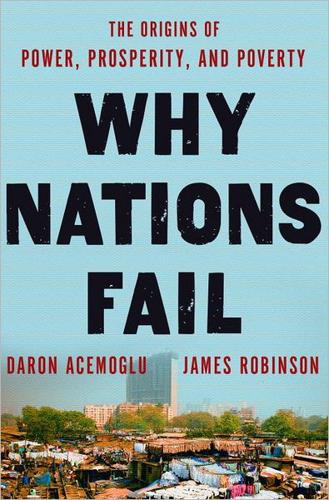
Why Nations Fail: The Origins of Power, Prosperity, and Poverty
by
Daron Acemoglu
and
James Robinson
Published 20 Mar 2012
“Putting a Band-Aid on a Corpse: Incentives for Nurses in the Indian Public Health Care System.” Journal of the European Economic Association 7: 487–500. Banfield, Edward C. (1958). The Moral Basis of a Backward Society. Glencoe, N.Y.: Free Press. Bang, Peter (2008). The Roman Bazaar. New York: Cambridge University Press. Barker, Graeme (2006). The Agricultural Revolution in Prehistory: Why Did Foragers Become Farmers? New York: Oxford University Press. Bar-Yosef, Ofer, and Avner Belfer-Cohen (1992). “From Foraging to Farming in the Mediterranean Levant.” In A. B. Gebauer and T. D. Price, eds. Transitions to Agriculture in Prehistory. Madison, Wisc.: Prehistory Press.
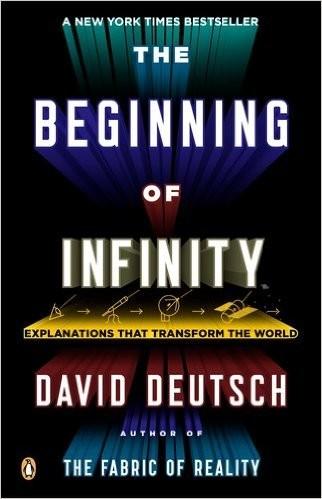
The Beginning of Infinity: Explanations That Transform the World
by
David Deutsch
Published 30 Jun 2011
Hence I think that the concept of the Singularity as a sort of discontinuity is a mistake. Knowledge will continue to grow exponentially or even faster, and that is astounding enough. The economist Robin Hanson has suggested that there have been several singularities in the history of our species, such as the agricultural revolution and the industrial revolution. Arguably, even the early Enlightenment was a ‘singularity’ by that definition. Who could have predicted that someone who lived through the English Civil War – a bloody struggle of religious fanatics versus an absolute monarch – and through the victory of the religious fanatics in 1651, might also live through the peaceful birth of a society that saw liberty and reason as its principal characteristics?

Lonely Planet Nicaragua (Travel Guide)
by
Lonely Planet
,
Alex Egerton
and
Greg Benchwick
Published 30 Jun 2013
Nevertheless Ortega weathered the storm and by the end of his return term was able to point to solid economic growth alongside the reintroduction of free health care and education among the achievements of his government. Timeline 6000 BC Indigenous groups construct elaborate burial sites out of clam shells at Monkey Point on the Caribbean coast. 450 BC The agricultural revolution arrives in the region, with the introduction of domesticated corn, yucca and beans. Soon after, trade links with modern-day Colombia and the USA are established. AD 800 Petroglyph and statue fever sweeps across Nicaragua. Many designs, including an Aztec calendar and representations of the deity Quetzalcóatl, herald the arrival of one of Nicaragua’s most important migrations. 1502 Christopher Columbus sails down the Caribbean coastline looking for a sailing route to the Pacific Ocean, landing briefly in the north.
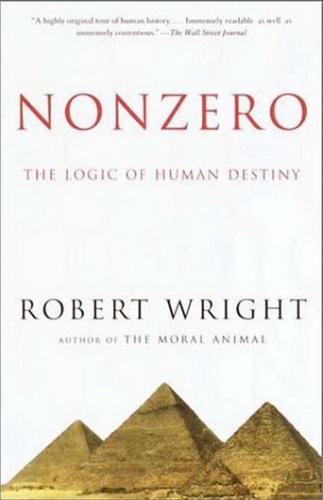
The Moral Animal: Evolutionary Psychology and Everyday Life
by
Robert Wright
Published 1 Jan 1994
. ——— (1985) The World as a Total System. Sage. Bowersock, G. W. (1988) “The Dissolution of the Roman Empire,” in Yoffee and Cowgill, eds. (1988). Boyd, Robert, and Peter J. Richerson (1985) Culture and the Evolutionary Process. University of Chicago Press. Braidwood, Robert J. (1960) “The Agricultural Revolution,” Scientific American, September, pp. 131–48. Braithwaite, Richard B. (1953) Scientific Explanation. Cambridge University Press. Braudel, Fernand (1981) Civilization and Capitalism, 15th–18th Century. Vol. 1, The Structures of Everyday Life. Harper and Row. Bray, Warwick (1991) Everyday Life of the Aztecs.

Future Politics: Living Together in a World Transformed by Tech
by
Jamie Susskind
Published 3 Sep 2018
The temptation is to hunker down and weather the present storm without thinking too hard about the future. That would be a mistake. If mainstream predictions about the future of technology are close to the mark, then the transformation on the horizon could be at least as important for humankind as the industrial revolution, the agricultural revolution, or even the invention of language. Many of today’s problems will be dwarfed by comparison. Think about the effect that technology has already had on our lives—how we work, communicate, treat our illnesses, exercise, eat, study, and socialize—and then remember that in historical perspective, the digital age is only a few seconds old.
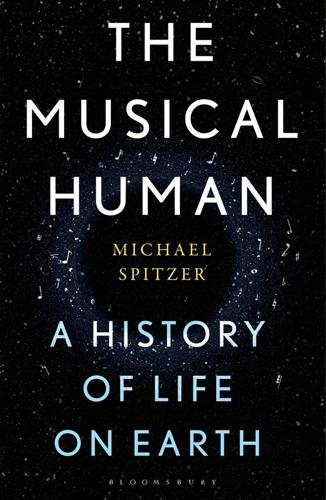
The Musical Human: A History of Life on Earth
by
Michael Spitzer
Published 31 Mar 2021
By allowing us to think the unthinkable, music gave humans their first taste of spirituality and religion, intimating a realm beyond the here and now. As we saw in Chapter 5, religion was the motivation for, rather than a consequence of, the invention of farming: agriculture in the Upper Palaeolithic arose to feed sedentary societies around temples such as Göbekli Tepe. Music inspired religion, which was fed by an agricultural revolution. Science followed closely after. Music sat in the driving seat of history and civilisation. We can send Pinker’s ‘auditory cheesecake’ back to the kitchen. Most of all, music’s imaginative playfulness propels it forwards through explosive mash-ups. The musical Hamilton, a true masterpiece of our time, tells its story of the American Founding Fathers in rap.
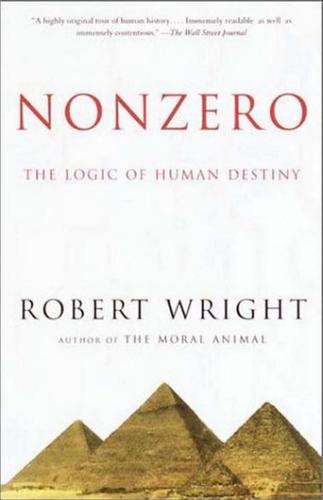
Nonzero: The Logic of Human Destiny
by
Robert Wright
Published 28 Dec 2010
. ——— (1985) The World as a Total System. Sage. Bowersock, G. W. (1988) “The Dissolution of the Roman Empire,” in Yoffee and Cowgill, eds. (1988). Boyd, Robert, and Peter J. Richerson (1985) Culture and the Evolutionary Process. University of Chicago Press. Braidwood, Robert J. (1960) “The Agricultural Revolution,” Scientific American, September, pp. 131–48. Braithwaite, Richard B. (1953) Scientific Explanation. Cambridge University Press. Braudel, Fernand (1981) Civilization and Capitalism, 15th–18th Century. Vol. 1, The Structures of Everyday Life. Harper and Row. Bray, Warwick (1991) Everyday Life of the Aztecs.
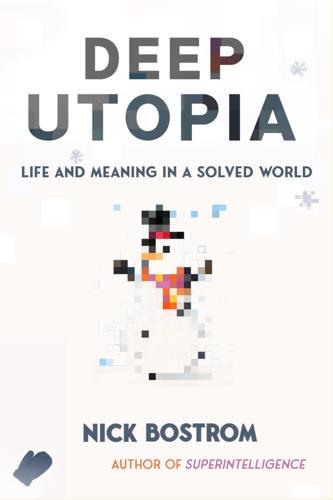
Deep Utopia: Life and Meaning in a Solved World
by
Nick Bostrom
Published 26 Mar 2024
If we look at the matter empirically, we see that progress has in fact accelerated over macrohistoric timescales. When the human species first evolved, and for the ensuing hundreds of thousands of years, populations were small (maybe half a million), and progress was so slow that millennia came and went with basically no change in technology. Then, with the agricultural revolution, the human population expanded and the rate of technological progress became much faster, the world economy now doubling about once every 1,000 years. This was a dramatic acceleration. But progress was still glacial by modern standards. It was so slow, in fact, as to be imperceptible to contemporary observers.40 It could only have been detected by comparing technological capabilities over long spans of time, yet the data needed for such comparisons—detailed historical accounts, archeological excavations with carbon dating, and such-like—were not available.

Nexus: A Brief History of Information Networks From the Stone Age to AI
by
Yuval Noah Harari
Published 9 Sep 2024
The chief couldn’t control public opinion, nor could he shut himself off from it. In other words, there was no way for a chief to force all information to flow through the center, or to prevent people from talking with one another, criticizing him, or organizing against him.20 In the millennia following the agricultural revolution, and especially after writing helped create large bureaucratic polities, it became easier to centralize the flow of information and harder to maintain the democratic conversation. In small city-states like those of ancient Mesopotamia and Greece, autocrats like Lugal-Zagesi of Umma and Pisistratus of Athens relied on bureaucrats, archives, and a standing army to monopolize key economic assets and information about ownership, taxation, diplomacy, and politics.
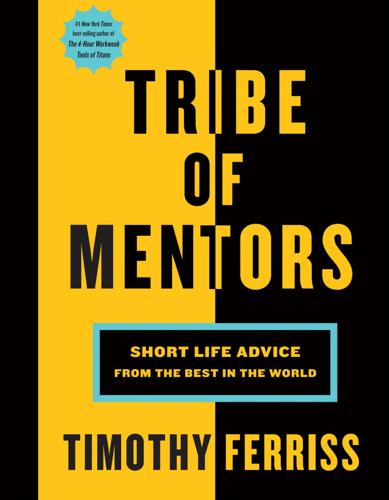
Tribe of Mentors: Short Life Advice From the Best in the World
by
Timothy Ferriss
Published 14 Jun 2017
I read Toffler’s Third Wave as a senior in college and was mesmerized by the idea of connecting people through a digital medium. I knew it was inevitable and wanted to be a part of building that future. The book was so influential, when I decided to write a book, I borrowed the title: The Third Wave: An Entrepreneur’s Vision of the Future. Toffler’s three waves were the agricultural revolution, the industrial revolution, and the technology revolution. I focused on the three waves of the Internet: building the platforms to get the world connected, then building apps on top of the Internet, and then integrating the Internet throughout our lives in increasingly pervasive—and sometimes even invisible—ways.
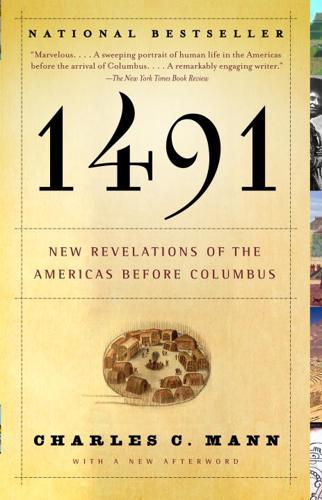
1491
by
Charles C. Mann
Published 8 Aug 2005
It is widely believed that Adena tobacco was much stronger than today’s tobacco—it was psychoactive. Tobacco was only one of the crops grown at Adena villages. The Mississippi and Ohio Valleys and much of the U.S. Southeast were home to what is known as the Eastern Agricultural Complex. A full-fledged agricultural revolution with a multifarious suite of crops, the complex is an example of a major cultural innovation that has completely disappeared. Its crops were such unfamiliar plants as marshelder, knotweed, maygrass, and little barley. All of these species still exist; one could stock a specialty restaurant with them.

Why the Allies Won
by
Richard Overy
Published 29 Feb 2012
In the decades between these two assaults, the city had changed beyond recognition. It had become a major industrial centre, sprawling untidily along the river for a length of 40 miles. Its half a million inhabitants worked mainly in the new factories, turning out vast numbers of tractors to fuel the regime’s agricultural revolution, and latterly large numbers of tanks. The city was a vital junction in Soviet trade. Industrial goods and machinery came down from the north; a steady flow of grain and oil was headed up the other way. Stalin had changed also. He was now the chief source of authority in the Soviet state, and the Supreme Commander of the armed forces.
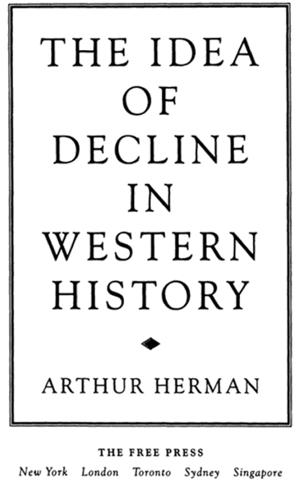
The Idea of Decline in Western History
by
Arthur Herman
Published 8 Jan 1997
Ecobiologist David Attenborough has speculated that the real cause of Rome’s collapse was not moral or economic or political collapse but deforestation.72 Gore himself relies on the example of the Mayas as a parable for modern times: a sophisticated and urbanized culture, equipped with mathematics and astronomy, whose agricultural revolution was ruthlessly swept away by an eleventh-century global warming that brought climatic changes and soil erosion. That same climatic shift, Gore speculates, also melted the ice floes blocking the Scandinavian fjords and allowed the Vikings to reach Iceland and North America. The Vikings, the Germanic invasions, the rise of Egypt, and the fall of Mycenae and Rome—the great world-historical shifts of Romantic historiography all turn out to have been impossible without the permission of Gaia, as it were, and favorable weather.
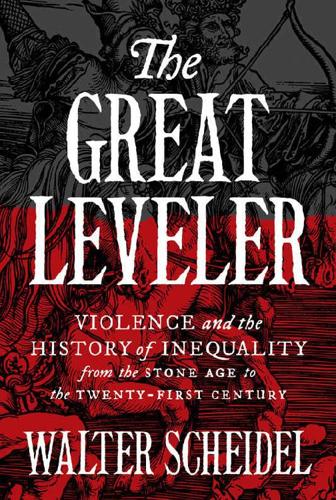
The Great Leveler: Violence and the History of Inequality From the Stone Age to the Twenty-First Century
by
Walter Scheidel
Published 17 Jan 2017
“Population dynamics in Italy in the Middle Ages: new insights from archaeological findings.” Population and Development Review 35: 367–389. Barfield, Thomas J. 1989. The perilous frontier: nomadic empires and China, 221 BC to AD 1757. Cambridge, MA: Blackwell. Barker, Graeme. 2006. The agricultural revolution in prehistory: why did foragers become farmers? Oxford: Oxford University Press. Barker, John W. 2004. “Late Byzantine Thessalonike: a second city’s challenges and responses.” In Alice-Mary Talbot, ed., Symposium on late Byzantine Thessalonike. Washington, DC: Dumbarton Oaks Research Library and Collection, 5–33.
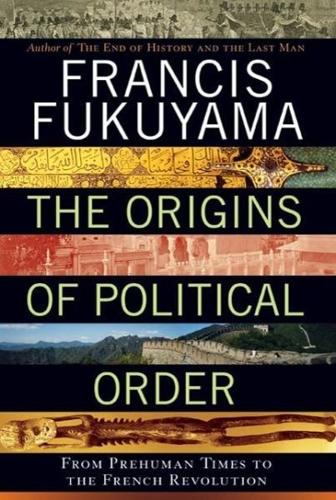
The Origins of Political Order: From Prehuman Times to the French Revolution
by
Francis Fukuyama
Published 11 Apr 2011
But even if higher population density is a necessary condition for state formation, we are still left with two unanswered questions: What causes population density to increase in the first place? And what is the mechanism connecting dense populations with states? The first question might seem to have a simple Malthusian answer: population increase is brought about by technological innovation such as the agricultural revolution, which greatly increases the carrying capacity of a given piece of land, which then leads parents to have more children. The problem is that a number of hunter-gatherer societies operate well below their local environment’s long-term productive capacity. The New Guinea highlanders and the Amazonian Indians have developed agriculture, but they do not produce the food surpluses of which they are technically capable.
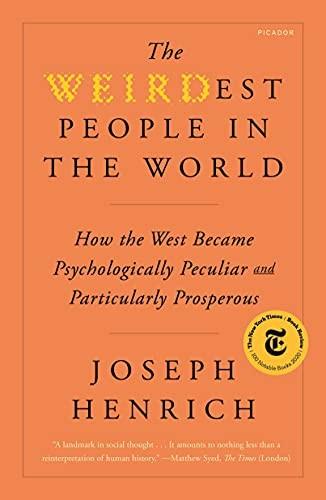
The WEIRDest People in the World: How the West Became Psychologically Peculiar and Particularly Prosperous
by
Joseph Henrich
Published 7 Sep 2020
This is a good bet, given what we now know about how cultural learning, institutions, rituals, and technologies shape our psychology, brains (e.g., literacy), and hormones (e.g., monogamous marriage) without tinkering with our genes.14 It is possible, however, that the cultural and economic developments I’ve described also created selection pressures on genes favoring some of the same psychological differences. It’s important to confront this possibility head-on, for a couple of reasons. First, as noted above, the products of cultural evolution have shaped our species’ genetic evolution well back into the Stone Age. And in more recent millennia, the agricultural revolution and animal domestication have further altered the human genome in myriad ways, including favoring genes that permit people to more efficiently process both milk and alcohol. So, the notion that culture can influence our genome is now well established. Second, both our evolved tribal psychology and WEIRD inclinations toward dispositional explanations of behavior predispose us to see innate or essential differences where none exist.
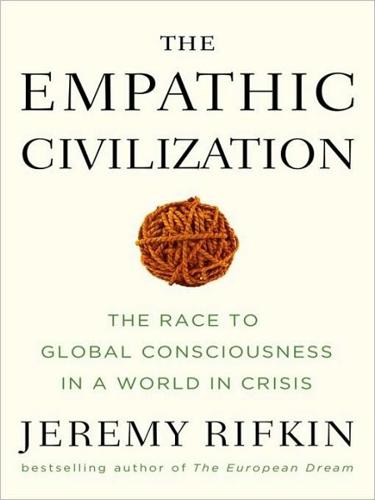
The Empathic Civilization: The Race to Global Consciousness in a World in Crisis
by
Jeremy Rifkin
Published 31 Dec 2009
Agricultural yields in many regions rose by one-third and human productivity by half.2 The new farming practices not only increased yields but also the diversity of crops under cultivation—especially legumes—which provided a more balanced diet. Lynn White, Jr., says that the importance of the agricultural revolution of the late Middle Ages can’t be overemphasized. It was not merely the new quantity of food produced by improved agricultural methods, but the new type of food supply which goes far towards explaining, for northern Europe at least, the startling expansion of population, the growth and multiplication of cities, the rise in industrial production, the outreach of commerce, and the new exuberance of spirits which enlivened that age.3 The new agricultural innovations made up a vital part of the new energy regime.

China: A History
by
John Keay
Published 5 Oct 2009
The quality of Shang mercy, if such a thing existed, was ever strained and made no clear distinction between friend and foe. Men (and occasionally women and children) were as conspicuously expended in the cause of ritual as were bronze and jade. How all this extravagance was funded is unclear. No great agricultural revolution occurred at the time, no major irrigation effort is known, and no significant introduction – the ox-drawn plough once had its champions – has been generally accepted. Nor do trade or conquest seem to have been important contributory factors. The Shang apparently just used existing resources of land and labour to greater effect.
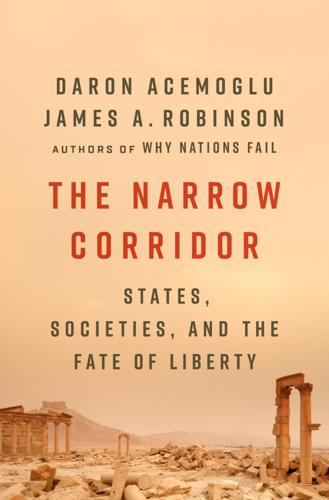
The Narrow Corridor: States, Societies, and the Fate of Liberty
by
Daron Acemoglu
and
James A. Robinson
Published 23 Sep 2019
This trade was accompanied by a vast amount of travel, the most powerful image of which was perhaps the annual pilgrimage to Mecca, the hadj, which brought hundreds of thousands of believers together from all across the empire, and provided a huge opportunity not just for piety, but also for trading. Another piece of evidence for the economic benefits of the rise of the Caliphate was an agricultural revolution. This was to some extent a consequence of the rise in trade, which created a much larger market than had existed before. The Arab conquests were followed by the diffusion throughout the region of a variety of crops that had previously not been grown there. These included rice, sorghum, hard wheat, sugar cane, cotton, watermelons, eggplants, spinach, artichokes, sour oranges, lemons, limes, bananas, plantains, mangos, and coconut palms.

Global Catastrophic Risks
by
Nick Bostrom
and
Milan M. Cirkovic
Published 2 Jul 2008
'The Boys from Brazil' notwithstanding, it seems likely that if clones of Adolf Hitler were to be adopted into well-adjusted families in healthy societies they would grow up to be nice, well-adjusted young men. 3 . 4 . 3 The evolution of other s pe cies, i n cl u d i n g those o n which w e d e p e n d Discussions of human evolution have tended to ignore the fact that we have greatly influenced the evolution of other species of animals and plants. These species have in turn influenced our own evolution. The abundant cereals that made the agricultural revolution possible were produced by unsung generations of primitive agriculturalists who carried out a process of long continued artificial selection. Some results of such extremely effective selection are seen in Indian corn, which is an almost unrecognizable descendent of the wild grass teosinte, and domesticated wheat, which is an allohexaploid with genetic contributions from three different wild grasses.
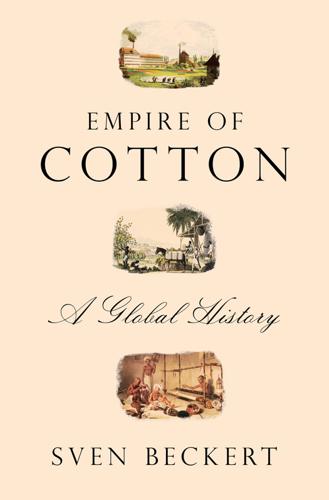
Empire of Cotton: A Global History
by
Sven Beckert
Published 2 Dec 2014
Thanks to such contacts, Thayer was able to report by November 1862 that “the Vice Roy has exerted his influence to aid in the increased cultivation…he has…advised all the large proprietors hereafter to sow one fourth of their land with cotton. As the advice of His Highness is practically equivalent to a command, the proprietors have commenced…to expedite the great agricultural revolution now in progress.”48 Seward projected confidence that such efforts would succeed and especially emphasized the unforeseen effects of global cotton production on the South’s bid for independence. “The insurrectionary cotton States will be blind to their own welfare if they do not see how their prosperity and all their hopes are passing away, when they find Egypt, Asia Minor and India supplying the world with cotton, and California furnishing the gold for its purchase.”49 And indeed, these overtures of American policy makers did help to defuse tensions between Washington and European capitals.
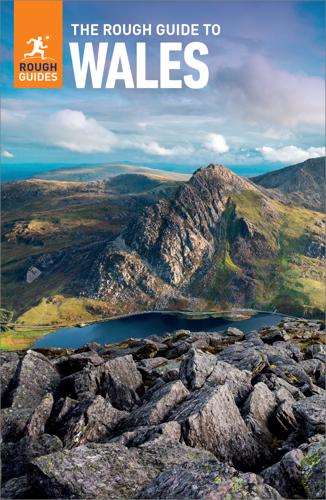
The Rough Guide to Wales
by
Rough Guides
Published 14 Oct 2024
The works also produced fine-tolerance steam cylinders, for which engineer James Watt was a big customer, creating steam engines that eventually put water-powered sites such as Bersham out of business. The old foundry survives largely intact, and around it the ironworks’ remains are being unearthed after nearly two centuries of neglect, revealing a broad area of knee-high foundations. A ten-minute walk east, the Bersham Heritage Centre has closed, but outdoor equipment from the agricultural revolution and Bersham Coal Mine are still visible outside. Erddig Hall One mile southwest of Wrexham, LL13 0YT • Daily: house late March to July, Sept & Oct 12.30–3.30pm; Aug 10am–5pm; Nov to late March 11am–2.30pm; garden, shop and restaurant late March to Oct 10am–5pm; Nov to late March 11am–4pm • Charge; NT • http://nationaltrust.org.uk/erddig Erddig Hall, built in the 1680s, is one of the most fascinating stately homes in Wales.

How the Mind Works
by
Steven Pinker
Published 1 Jan 1997
See Arts; Beauty Africa, human evolution in, 198–199, 202, 203–204, 205; modern peoples (See Bakweri, Kpelle, !Kung San, !Xõ, //Gana San) Agents, 321–323 Aggression, 27, 34, 46, 51, 53–54, 190, 404, 494–498; and humor, 546–548, 551, 554. See also Dominance; War Agnosia, 19, 271, 272–273 Agreeableness, 454 Agricultural revolution. See Civilization Agriculture, 42, 499, 505 AIDS, 348 Aiello, Leslie, 574 Alcoholism, 34, 448 Aleichem, Sholom, 438 Alexander, Richard, 403, 436, 568, 574, 582, 583, 586 Allen, Woody, 105, 133, 135, 360, 406, 467, 542, 580 Allman, William, 568 Altruism, 44, 337, 396–407, 430; among siblings, 447–448, 452; in war, 516.
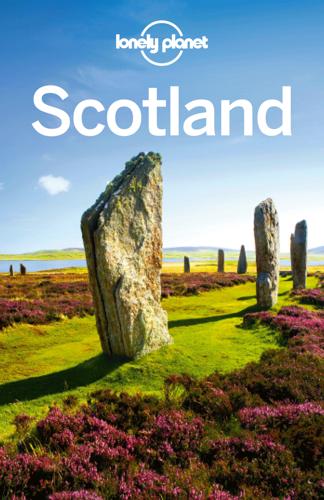
Scotland Travel Guide
by
Lonely Planet
In the middle lies the prosperous market town of Haddington. HADDINGTON & AROUND POP 8850 Haddington, straddling the River Tyne 18 miles east of Edinburgh, was made a royal burgh by David I in the 12th century. Most of the modern town, however, dates from the 17th to 19th centuries during the period of prosperity after the Agricultural Revolution. The prettiest part of town is the tree-lined Court St, with its wide pavement and grand 18th- and 19th-century buildings. Church St leads from the eastern end of High St to St Mary’s Parish Church (www.stmaryskirk.com; Sidegate; admission free; 11am-4pm Mon-Sat, 2-4.30pm Sun Apr-Sep) . Built in 1462, it’s the largest parish church in Scotland and one of the finest pre- Reformation churches in the country.
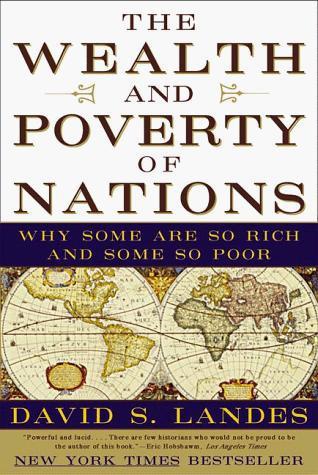
The Wealth and Poverty of Nations: Why Some Are So Rich and Some So Poor
by
David S. Landes
Published 14 Sep 1999
All of this required prodigious labor, but the work paid off. Yields shot to a high of 1,100 liters of grain per hectare, which would have left a substantial surplus for the maintenance of nonfood producers. The Chinese energy system was in place. 3. Between the eighth and thirteenth centuries of our era came a second agricultural revolution. The Han people kept moving south, into the Yangtze basin and beyond, pushing slash-and-burn, itinerant aboriginals aside or before. Most of these eventually found shelter in the mountains and other areas unsuited to intensive cultivation. They still live there—China’s largest minority. In this wetter, warmer clime, mild winters and long summers permitted full double cropping: winter wheat, for example, harvested in May, and summer rice planted in June and harvested in October or November.
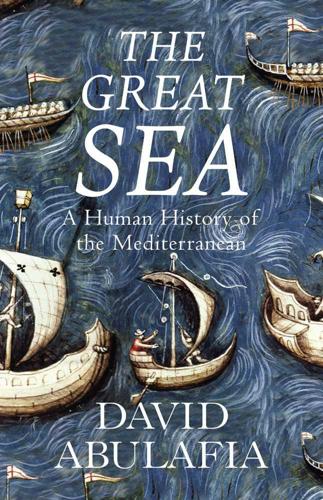
The Great Sea: A Human History of the Mediterranean
by
David Abulafia
Published 4 May 2011
Marshes were drained and turned into orchards (a plum called quen, that is, ‘Kane’, is still grown on the island), and cattle were imported from North Africa in the hope of improving the size and quality of the island’s animals. Kane shared the spirit of the eighteenth-century English innovators who were leading an agricultural revolution in his homeland. By 1719 a road was completed that ran between Mahón and Ciutadella – the work took two years and the road is still known as the Camí d’En Kane, ‘the road of Mr Kane’.34 Mahón was designated as the new capital, in place of its rival Ciutadella (ancient Jamona) on the western coast.
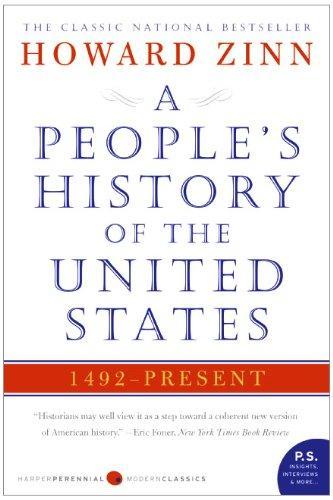
A People's History of the United States
by
Howard Zinn
Published 2 Jan 1977
They perfected the art of agriculture, and figured out how to grow maize (corn), which cannot grow by itself and must be planted, cultivated, fertilized, harvested, husked, shelled. They ingeniously developed a variety of other vegetables and fruits, as well as peanuts and chocolate and tobacco and rubber. On their own, the Indians were engaged in the great agricultural revolution that other peoples in Asia, Europe, Africa were going through about the same time. While many of the tribes remained nomadic hunters and food gatherers in wandering, egalitarian communes, others began to live in more settled communities where there was more food, larger populations, more divisions of labor among men and women, more surplus to feed chiefs and priests, more leisure time for artistic and social work, for building houses.
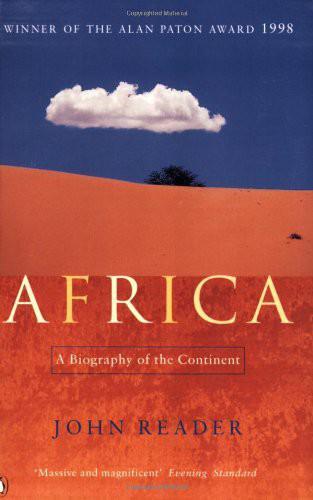
Africa: A Biography of the Continent
by
John Reader
Published 5 Nov 1998
John Barbot, writing of voyages to West Africa in the late 1600s, observed ‘that Indian corn rises from a crown to twenty shillings betwixt February and harvest, which I suppose is chiefly occasion'd by the great number of European slave ships yearly resorting to the coast…’35 The amount of maize consumed by slaves when the trade was at its greatest volume is estimated to have been no less than 9,000 tonnes per year – a sizeable proportion of which was used to feed slaves en route from the hinterland and while awaiting shipment on the coast.36 If the prevalence of cassava and maize cultivation in Africa during modern times is any measure, the introduction of the crops amounted to an agricultural revolution. Maize enabled more intensive use to be made of fertile well-watered land, and cassava brought hitherto unproductive regions into use. Imported iron facilitated the dissemination and production of the new crops. It might be supposed that the importation of iron would have put African iron-makers out of business.
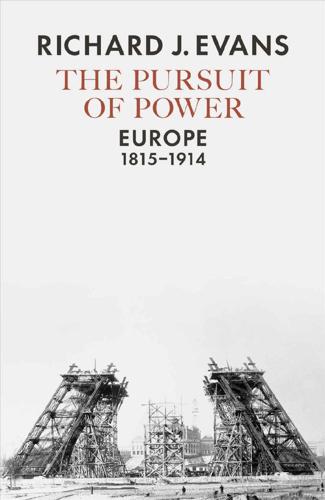
The Pursuit of Power: Europe, 1815-1914
by
Richard J. Evans
Published 31 Aug 2016
The open-field system, where large fields were divided up into strips each farmed by an individual serf family, made it hard to achieve economies of scale by consolidating holdings. Serfs could not invest in better livestock or afford fertilizers. Landlords who sought improvements by hoping to imitate the achievements of the ‘agricultural revolution’ in England grew increasingly frustrated. International factors could also play a role. Thus, for example, the Treaty of Paris that ended the Crimean War in 1856 led to the emancipation of the serfs in the Danubian Principalities not least because Britain and France wanted a viable state – Romania, created by the unification of the two Principalities in 1858 – to act as a buffer against Russian expansionism.

Artificial Intelligence: A Modern Approach
by
Stuart Russell
and
Peter Norvig
Published 14 Jul 2019
In 2019, California enacted a law stating that “It shall be unlawful for any person to use a bot to communicate or interact with another person in California online, with the intent to mislead the other person about its artificial identity.” 28.3.5The future of work From the first agricultural revolution (10,000 BCE) to the industrial revolution (late 18th century) to the green revolution in food production (1950s), new technologies have changed the way humanity works and lives. A primary concern arising from the advance of AI is that human labor will become obsolete. Aristotle, in Book I of his Politics, presents the main point quite clearly: For if every instrument could accomplish its own work, obeying or anticipating the will of others ... if, in like manner, the shuttle would weave and the plectrum touch the lyre without a hand to guide them, chief workmen would not want servants, nor masters slaves.